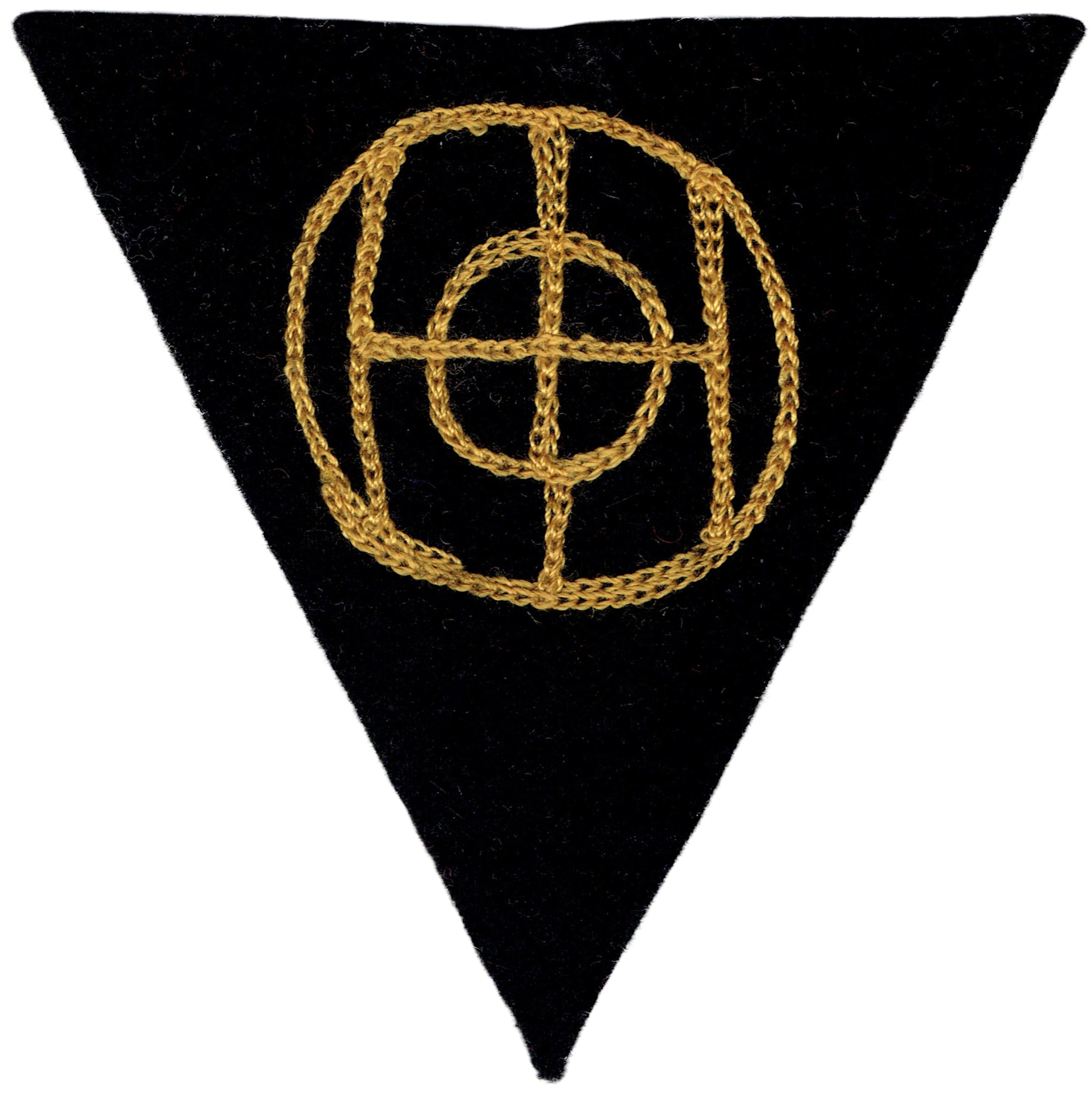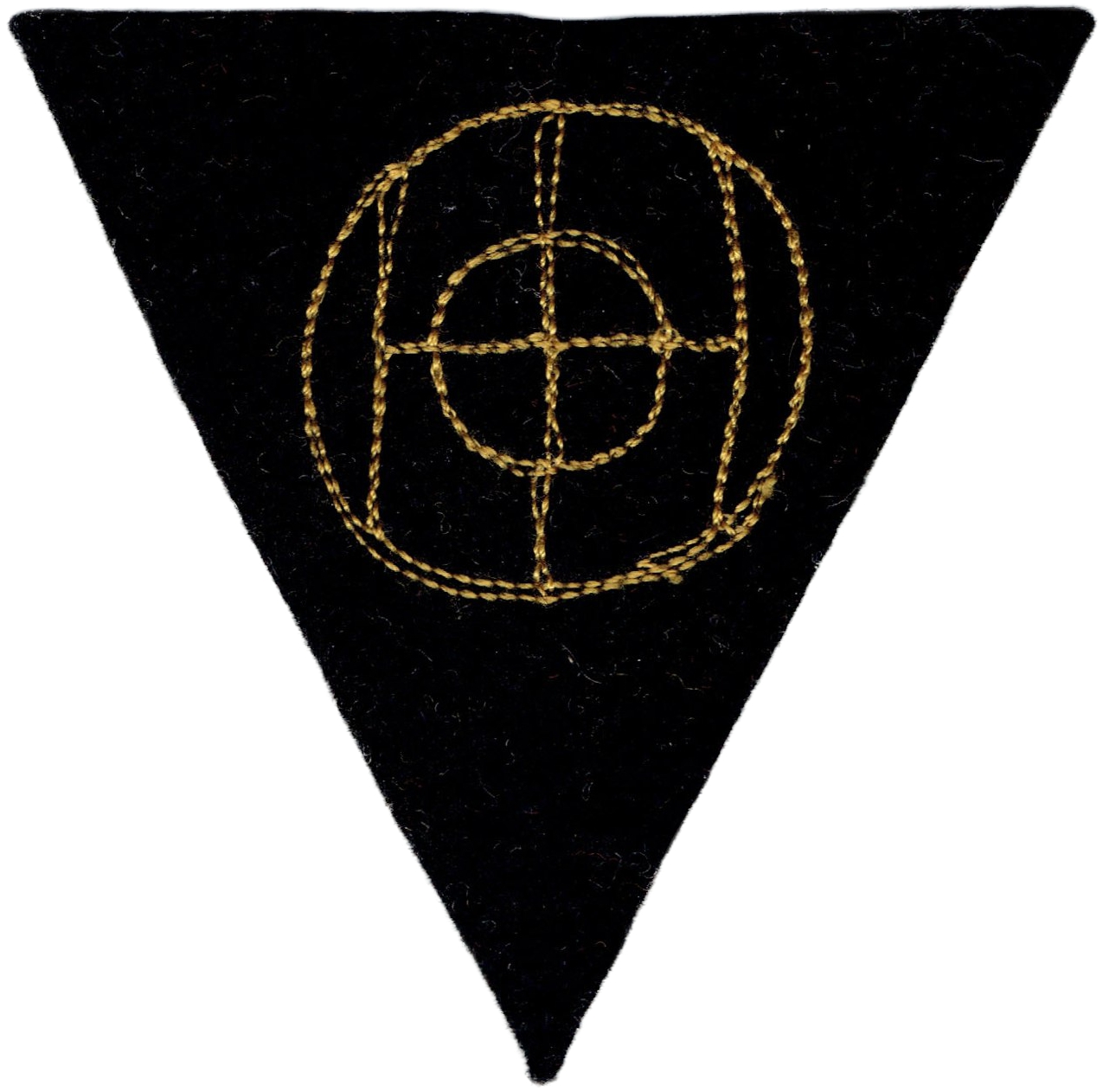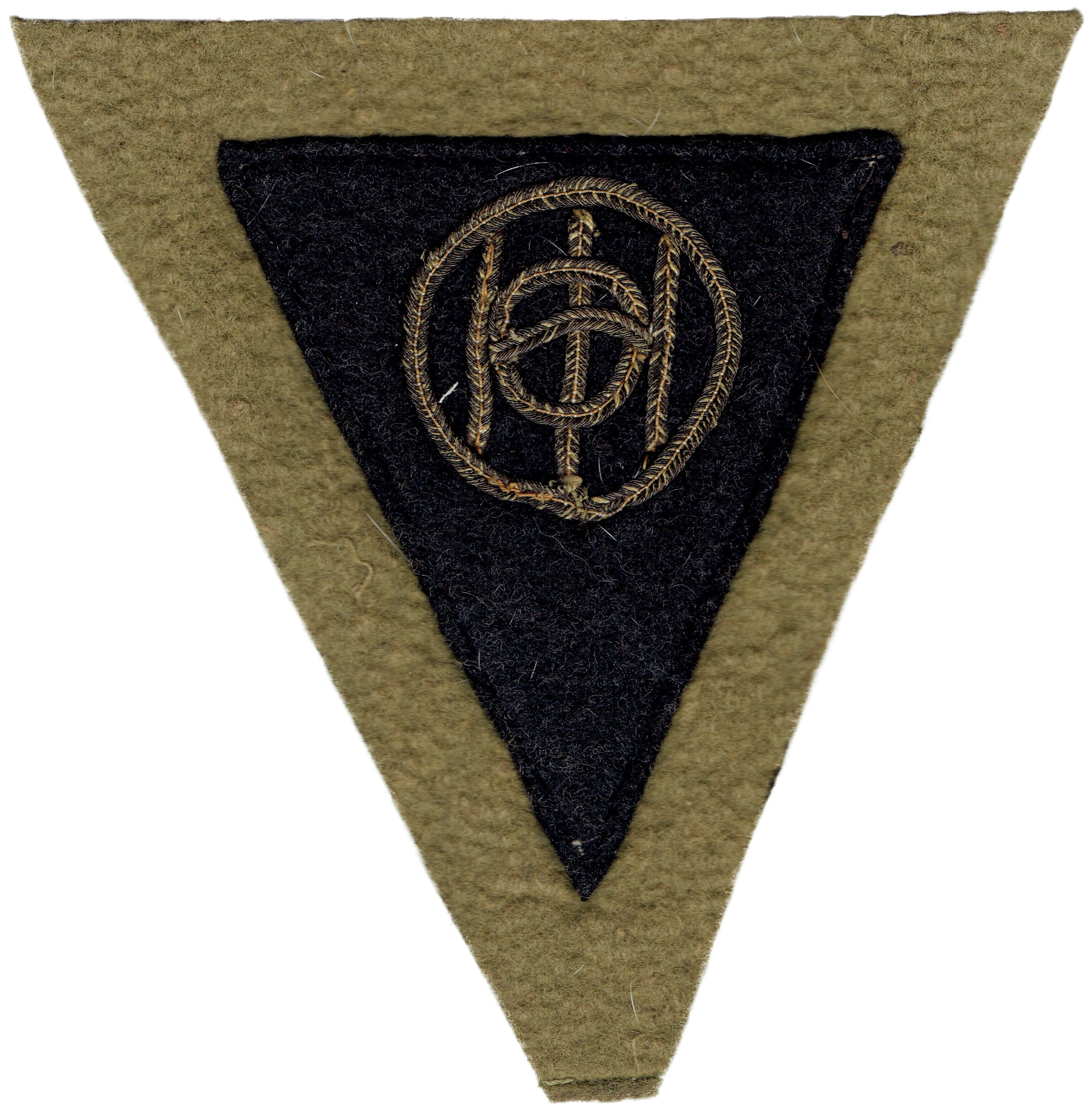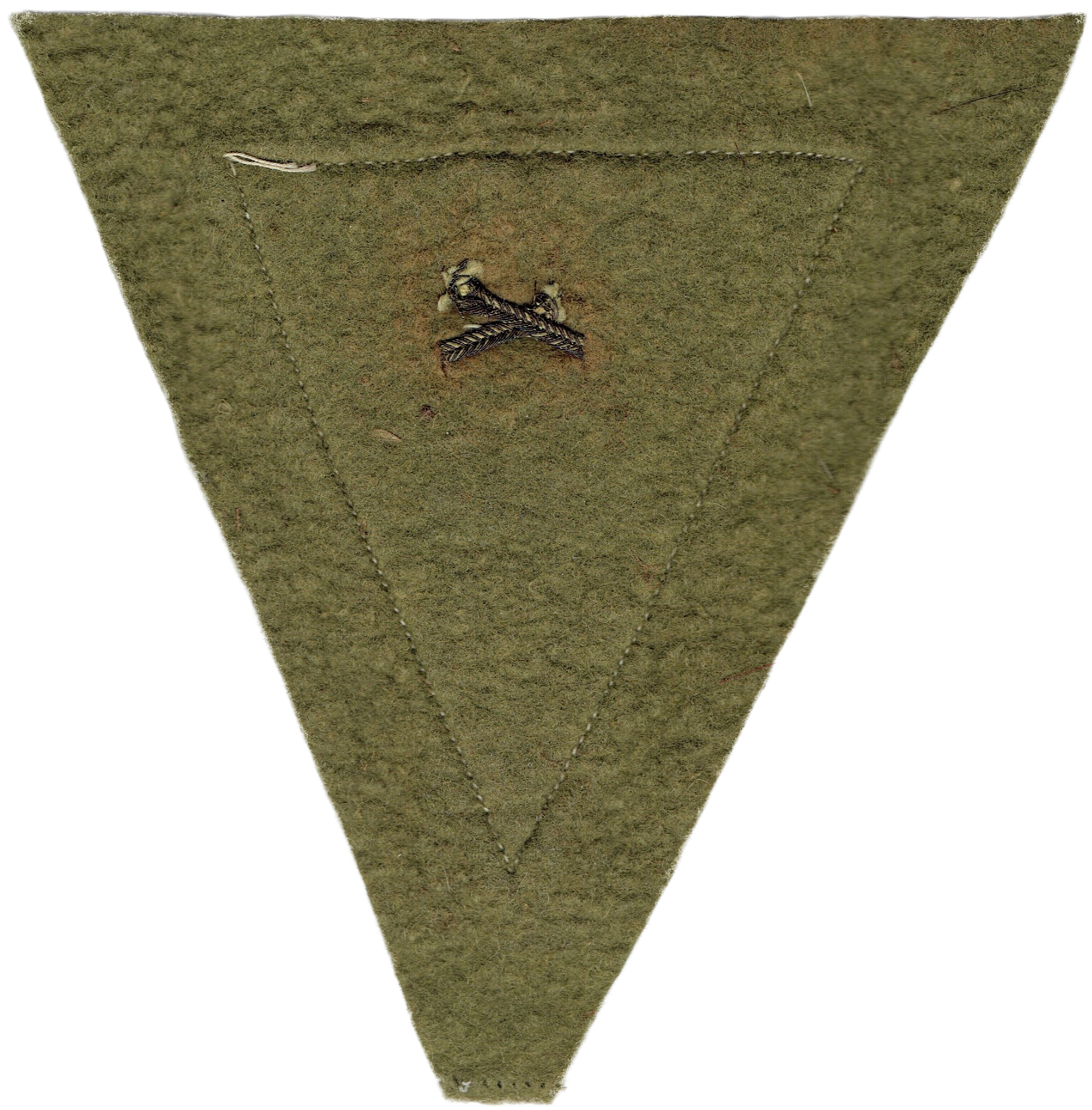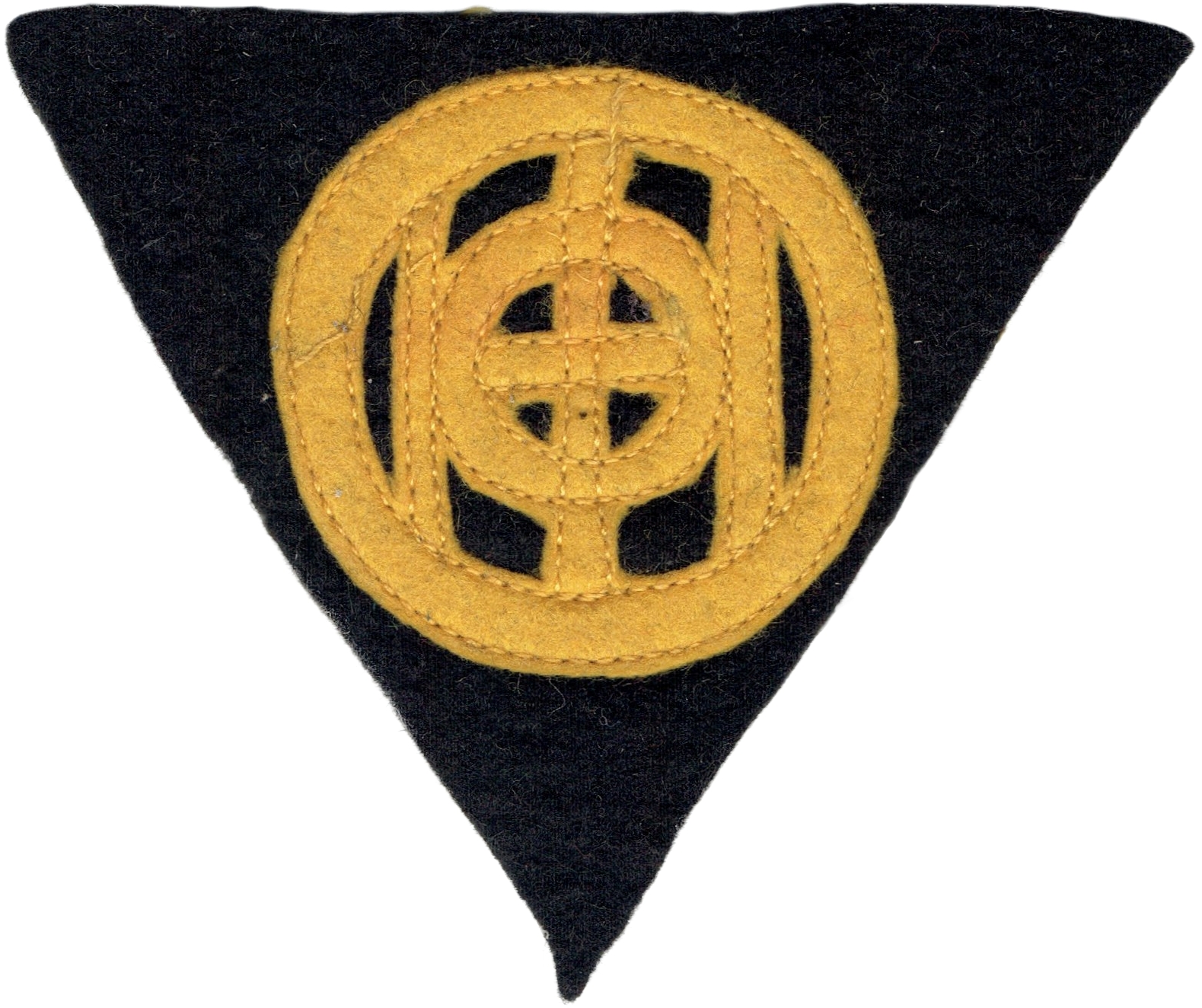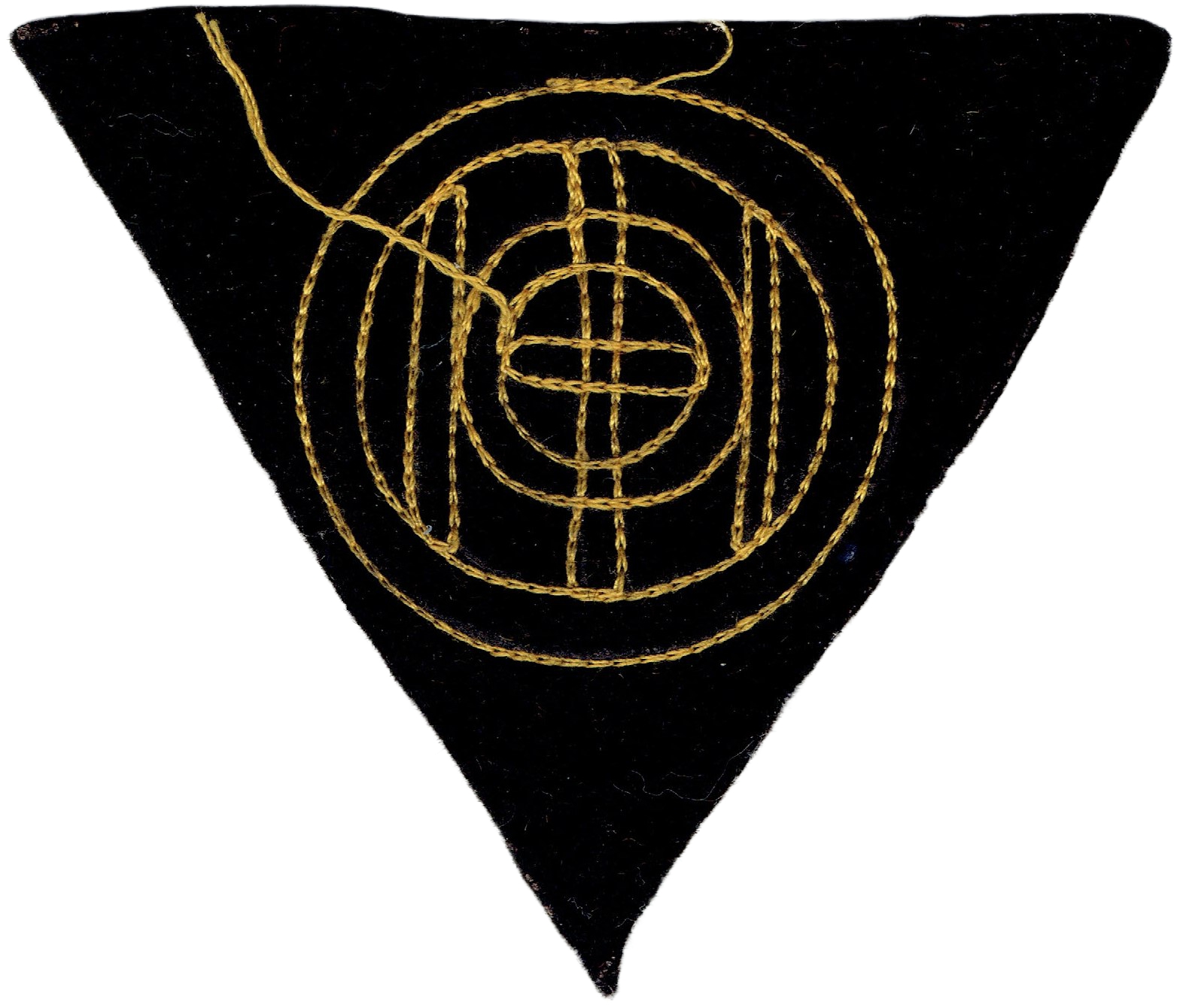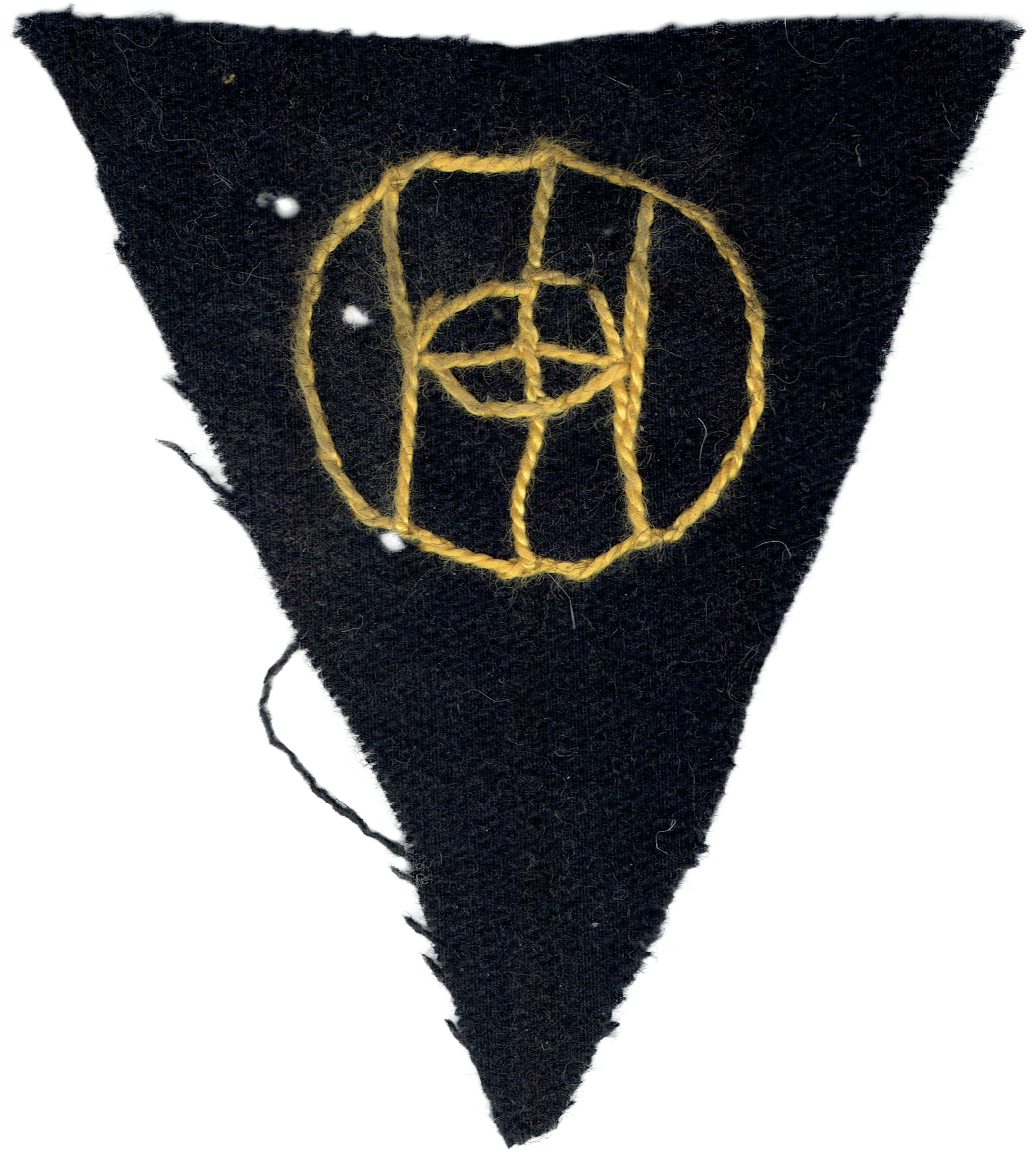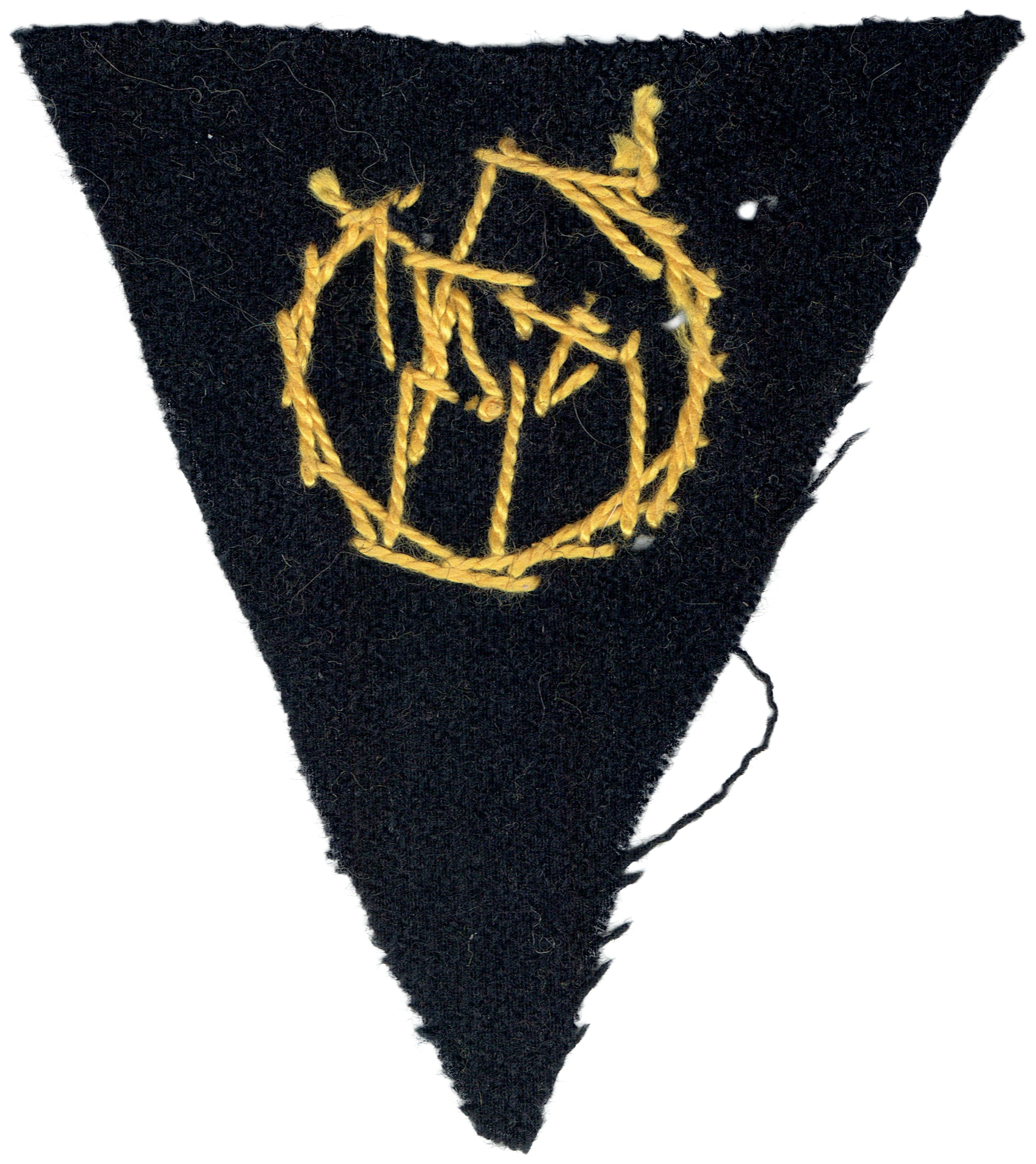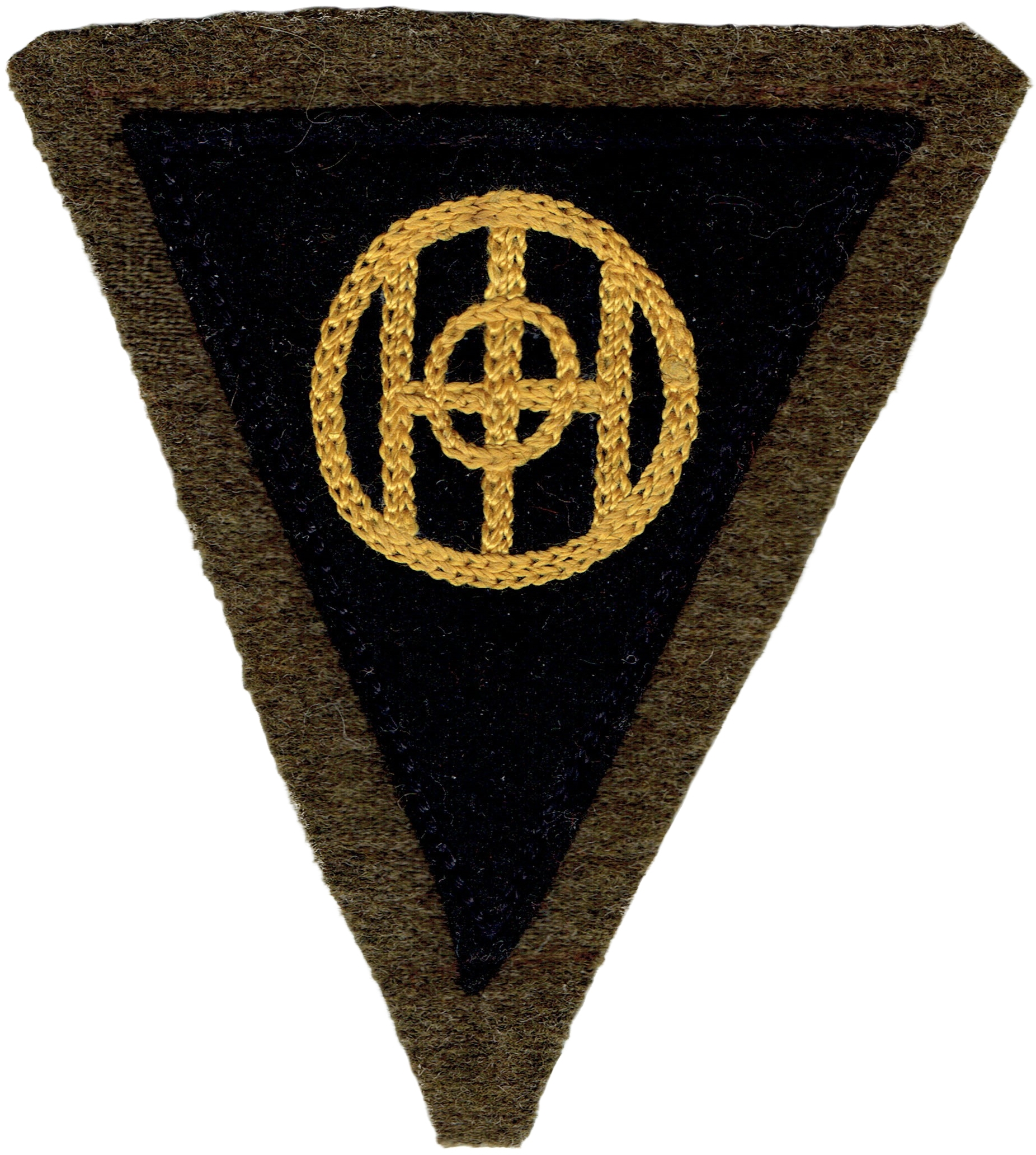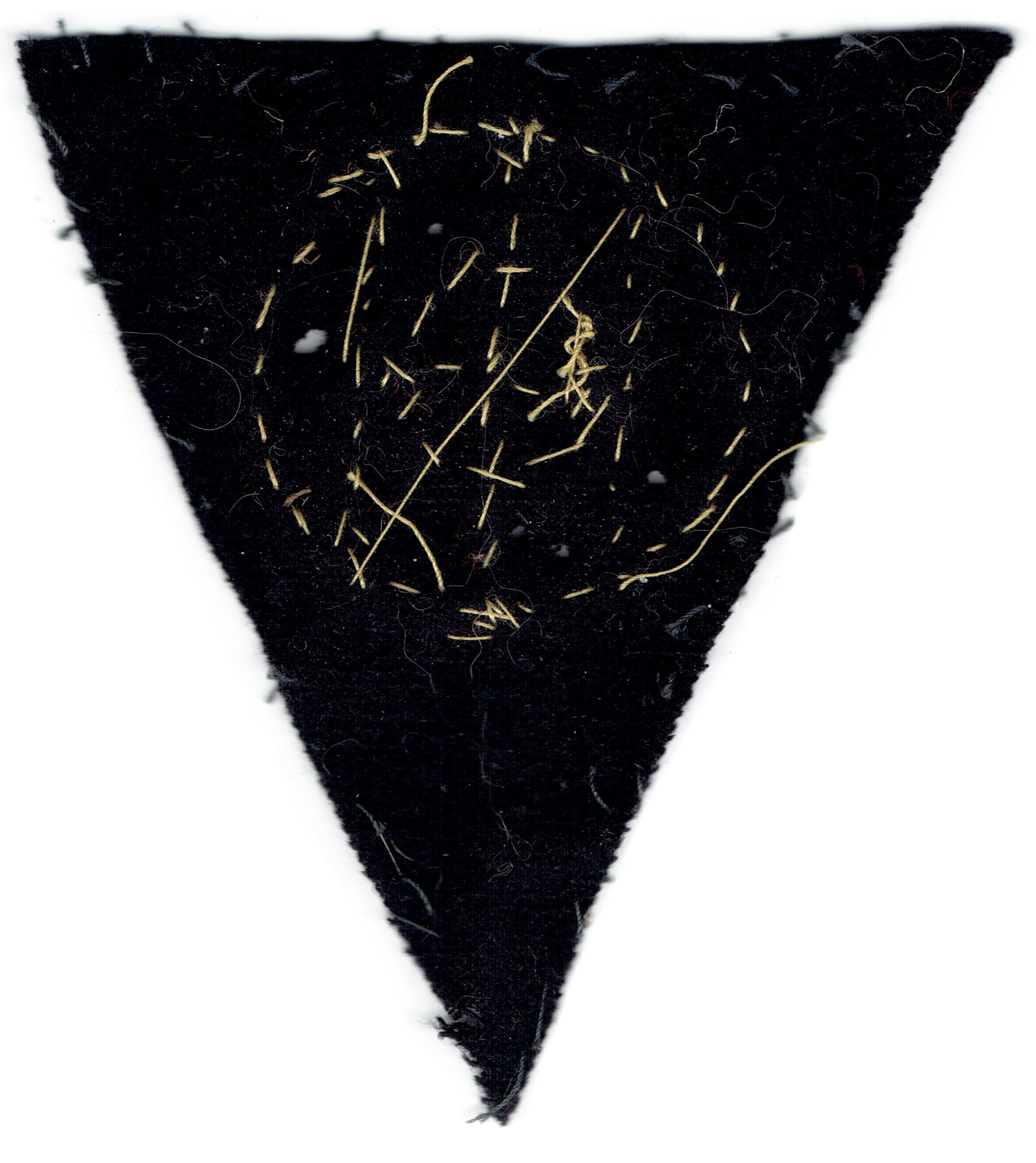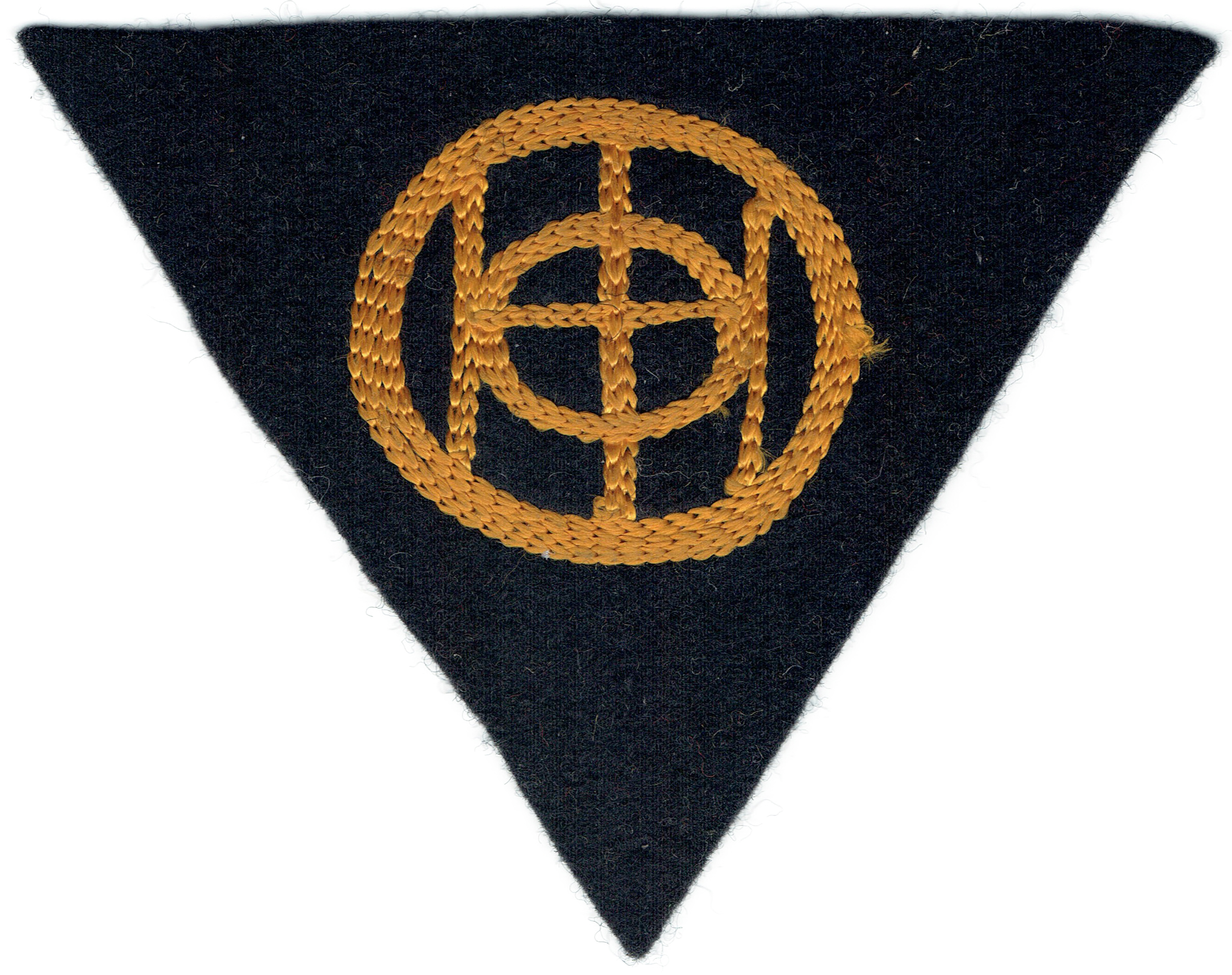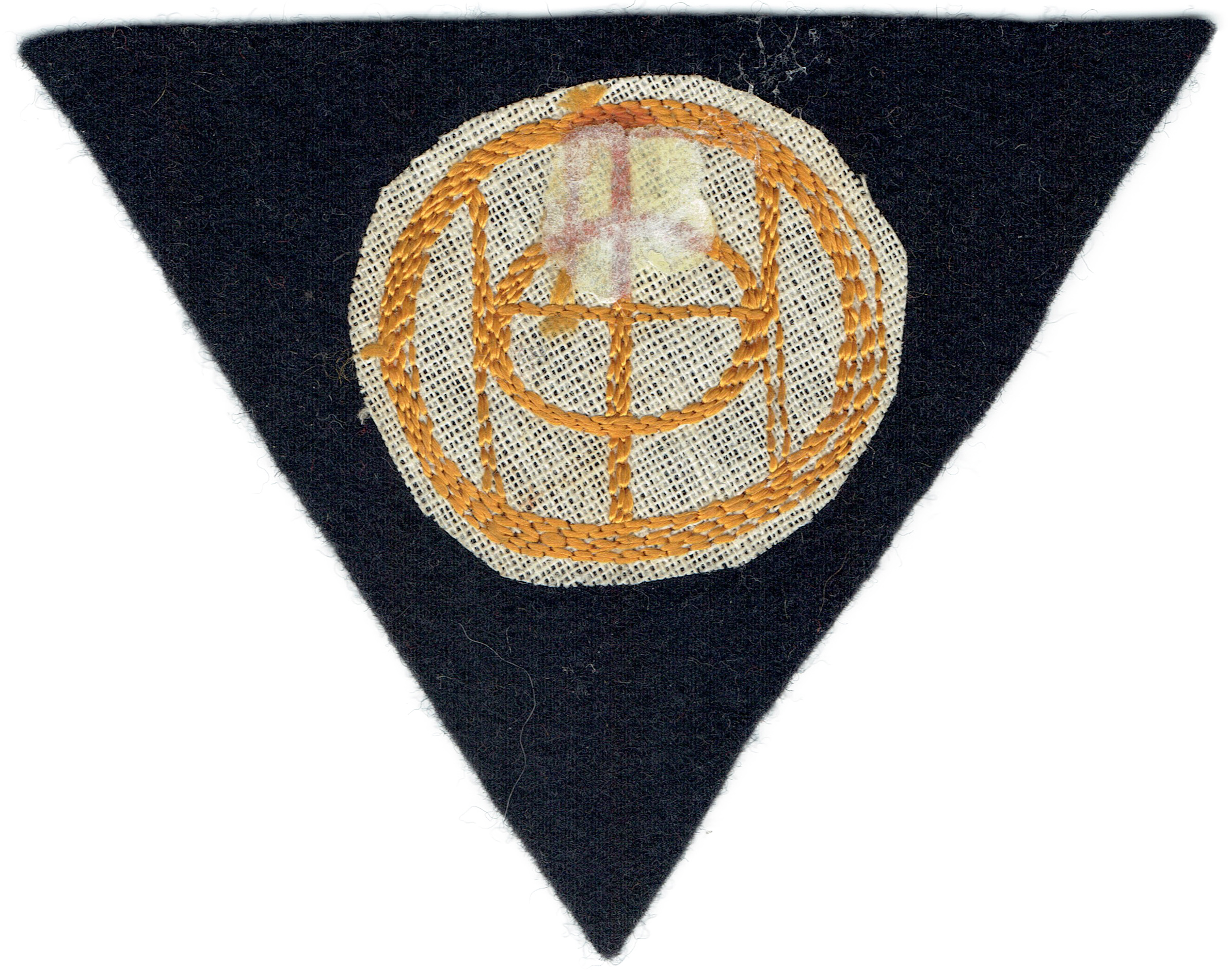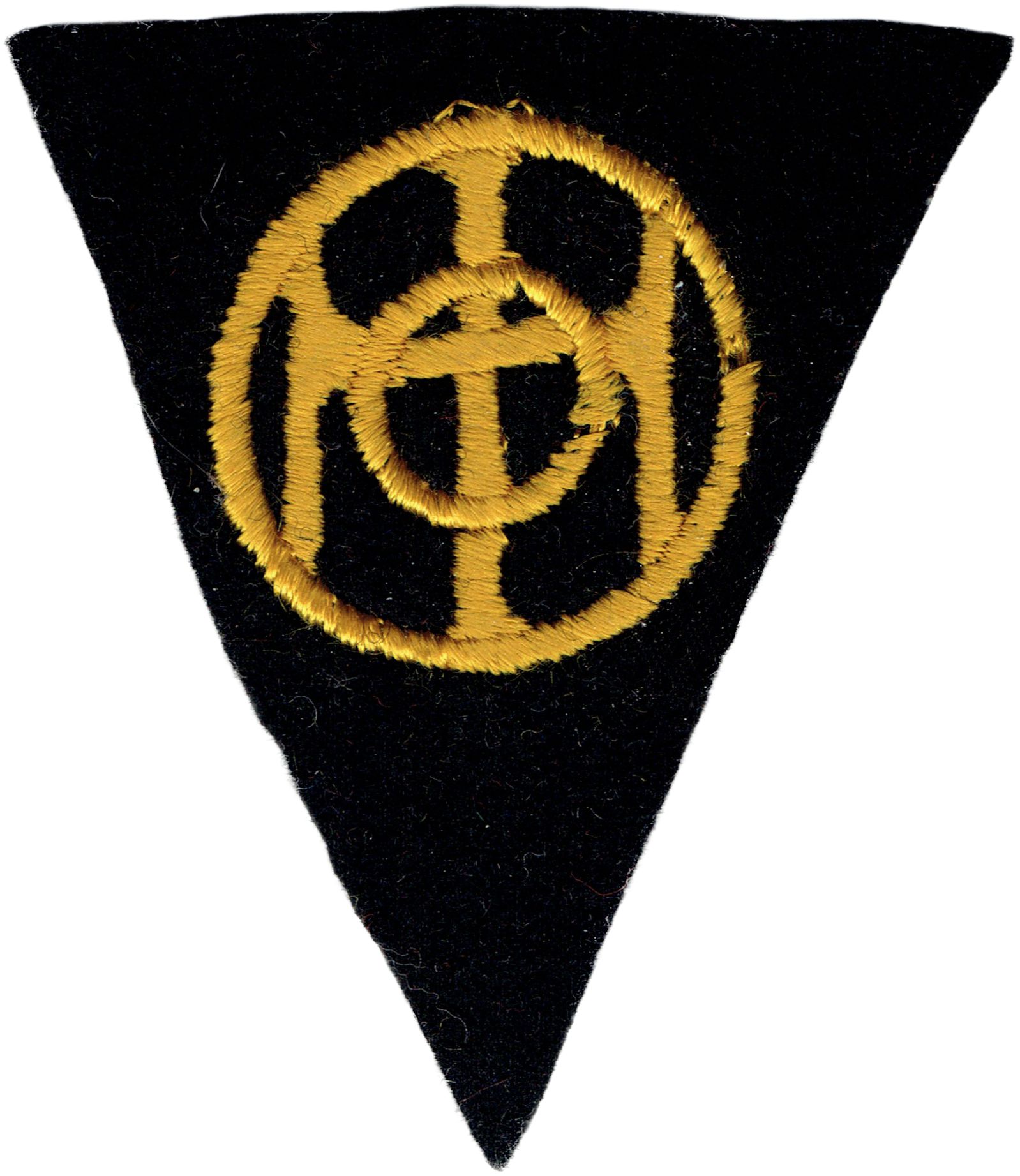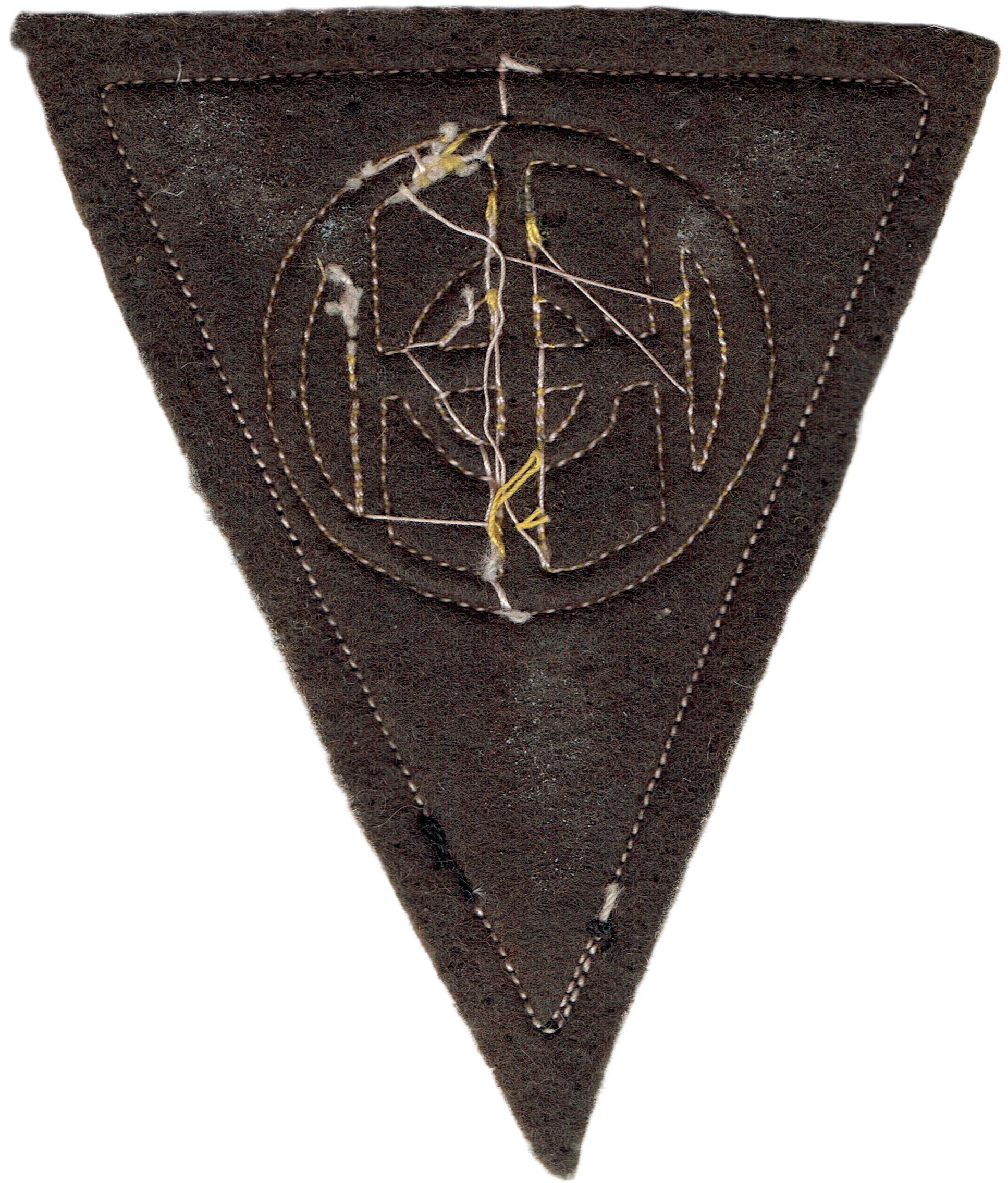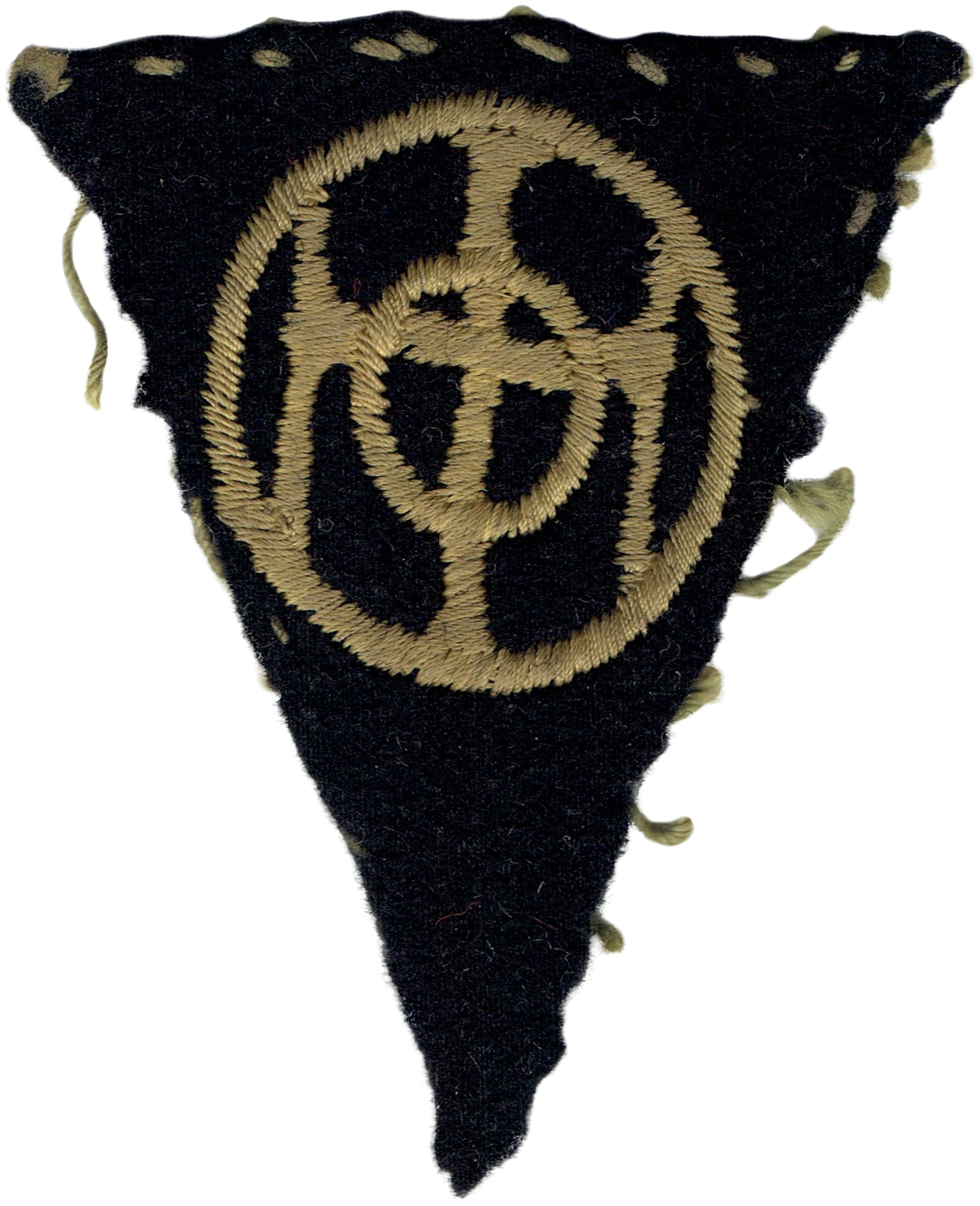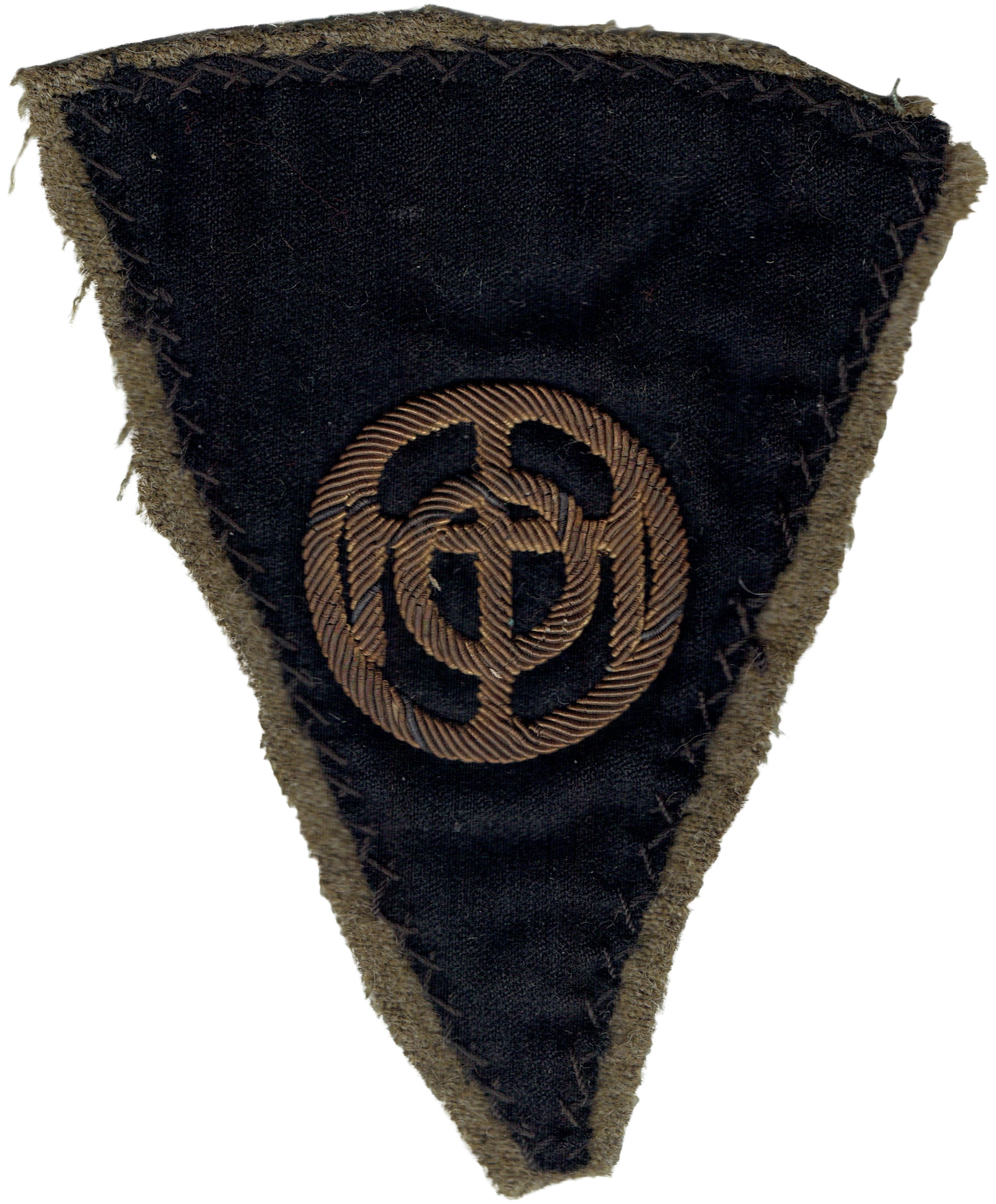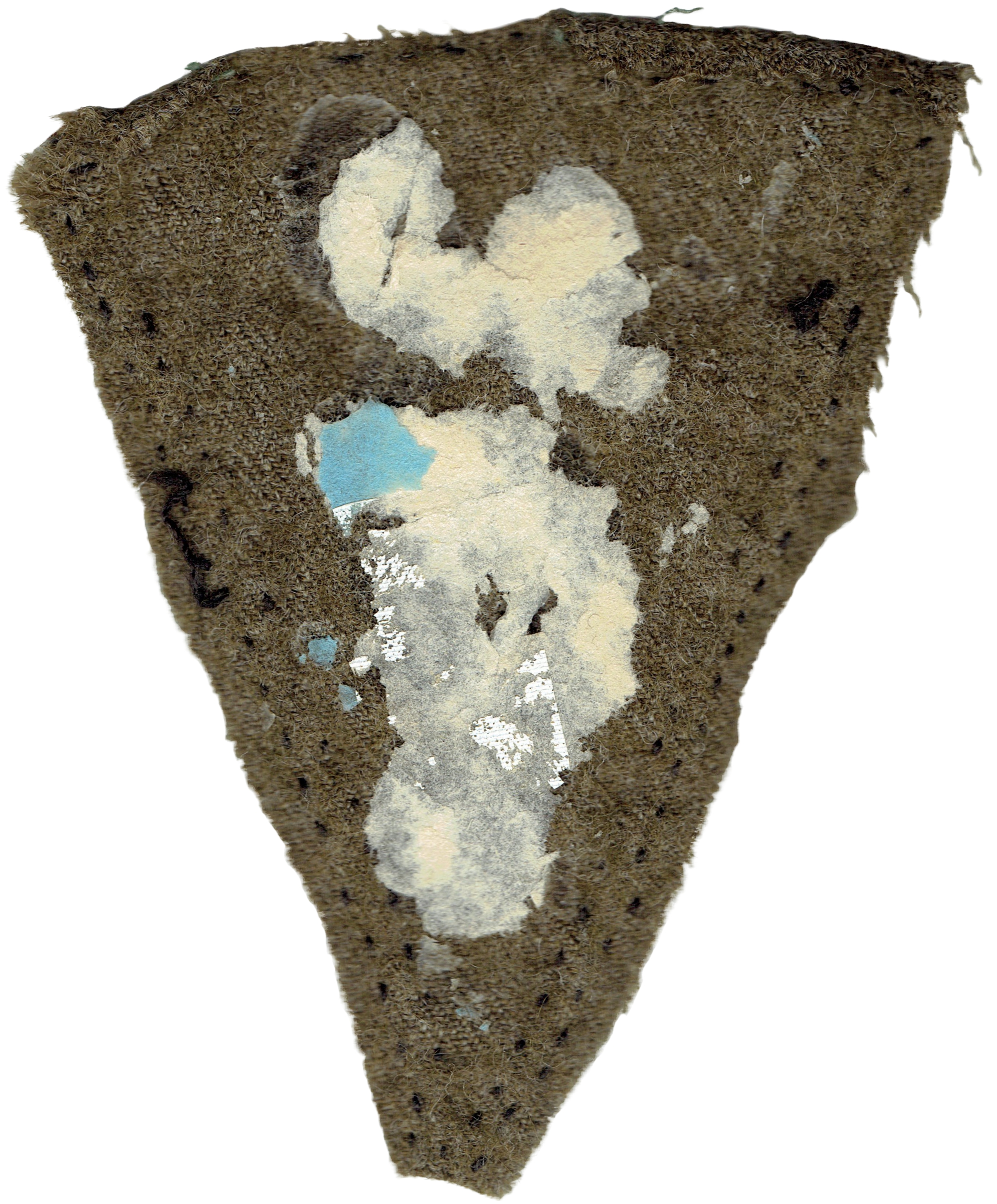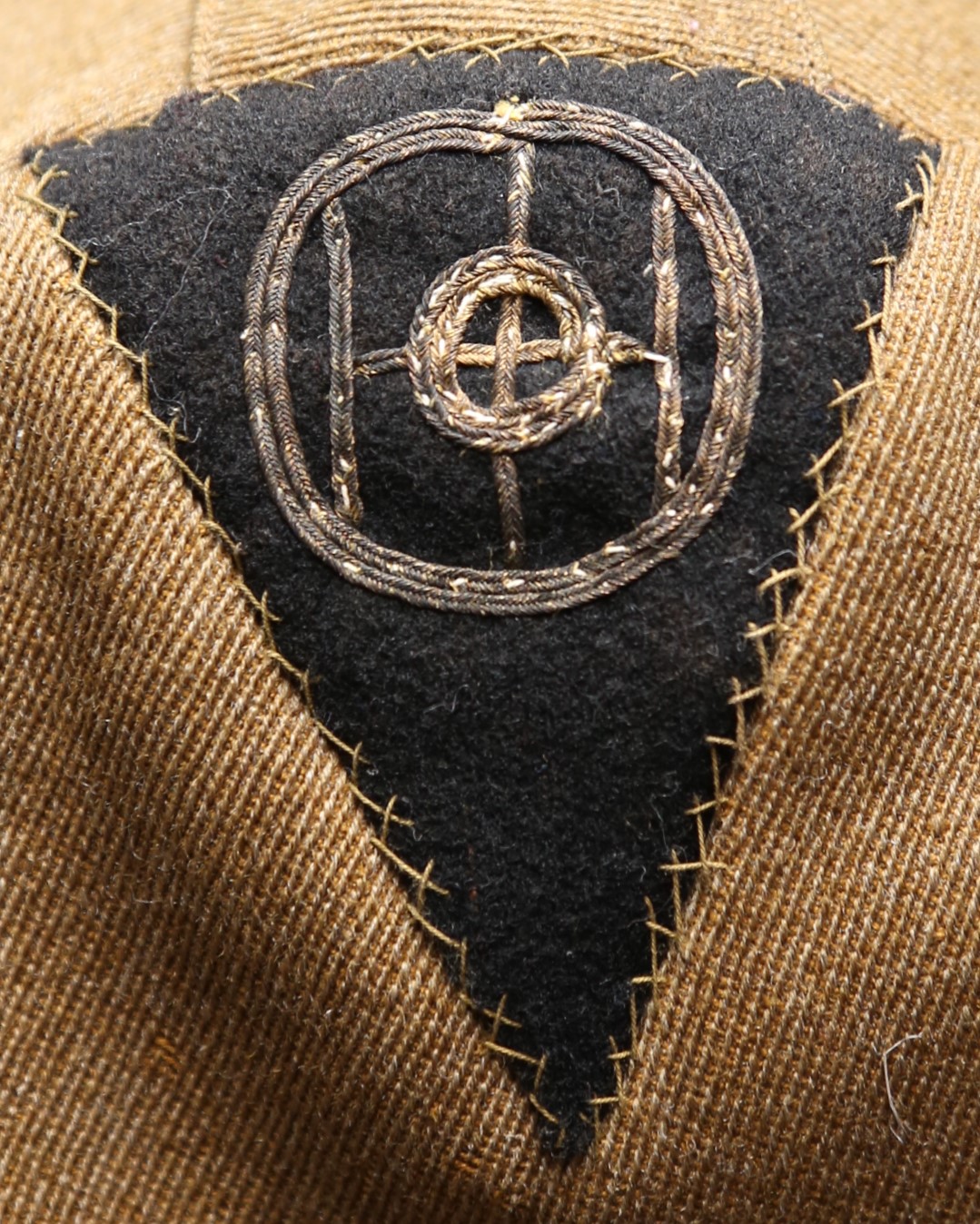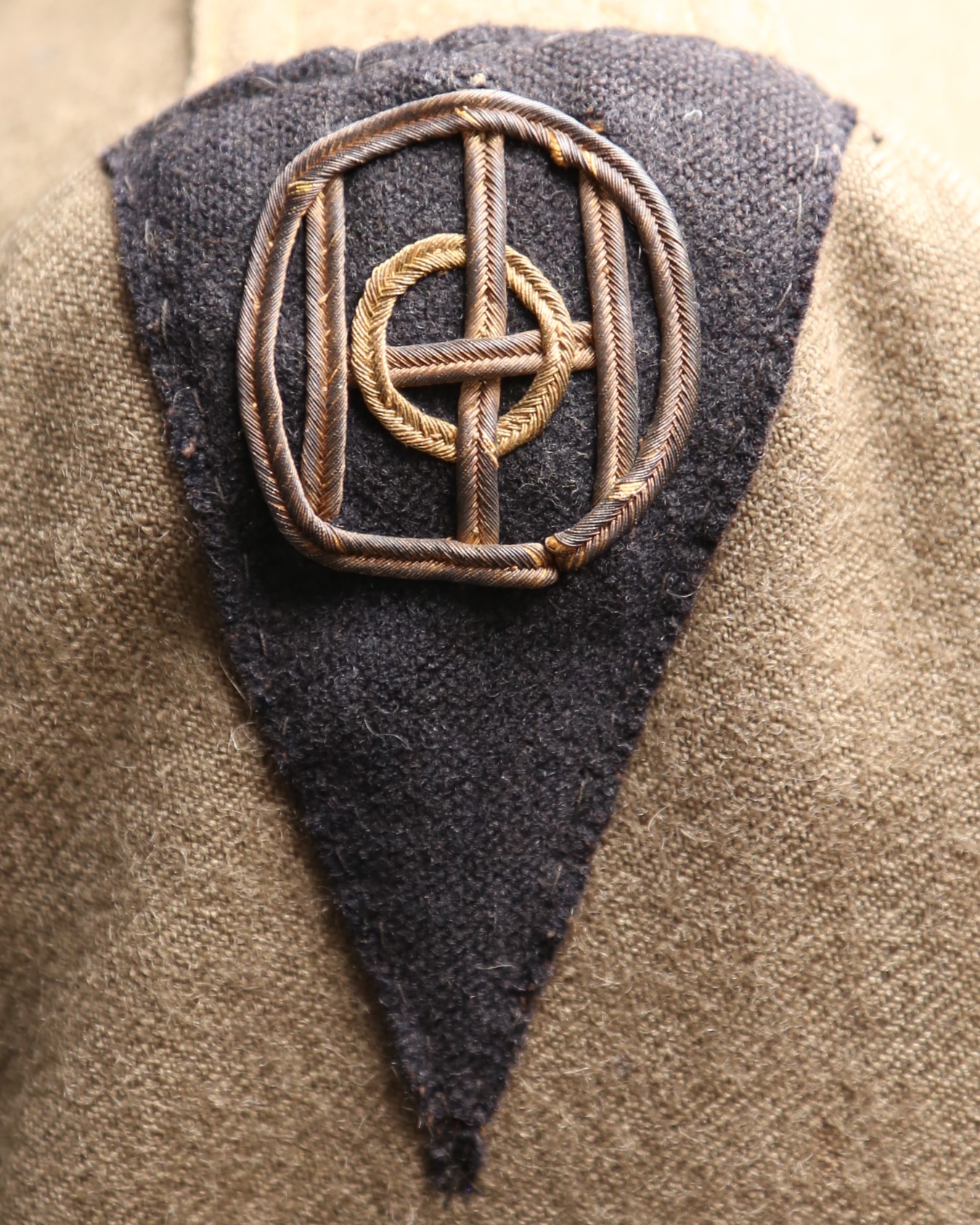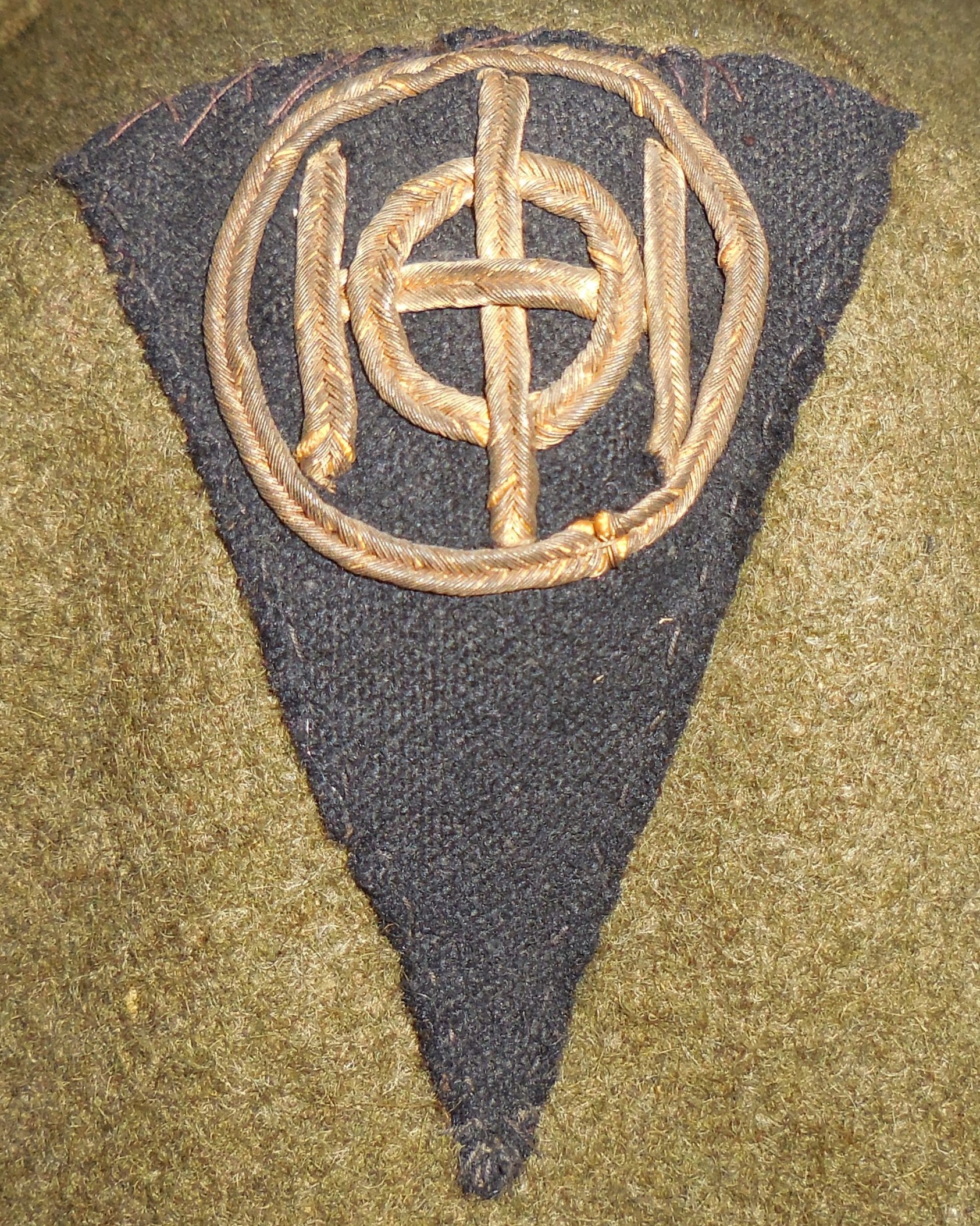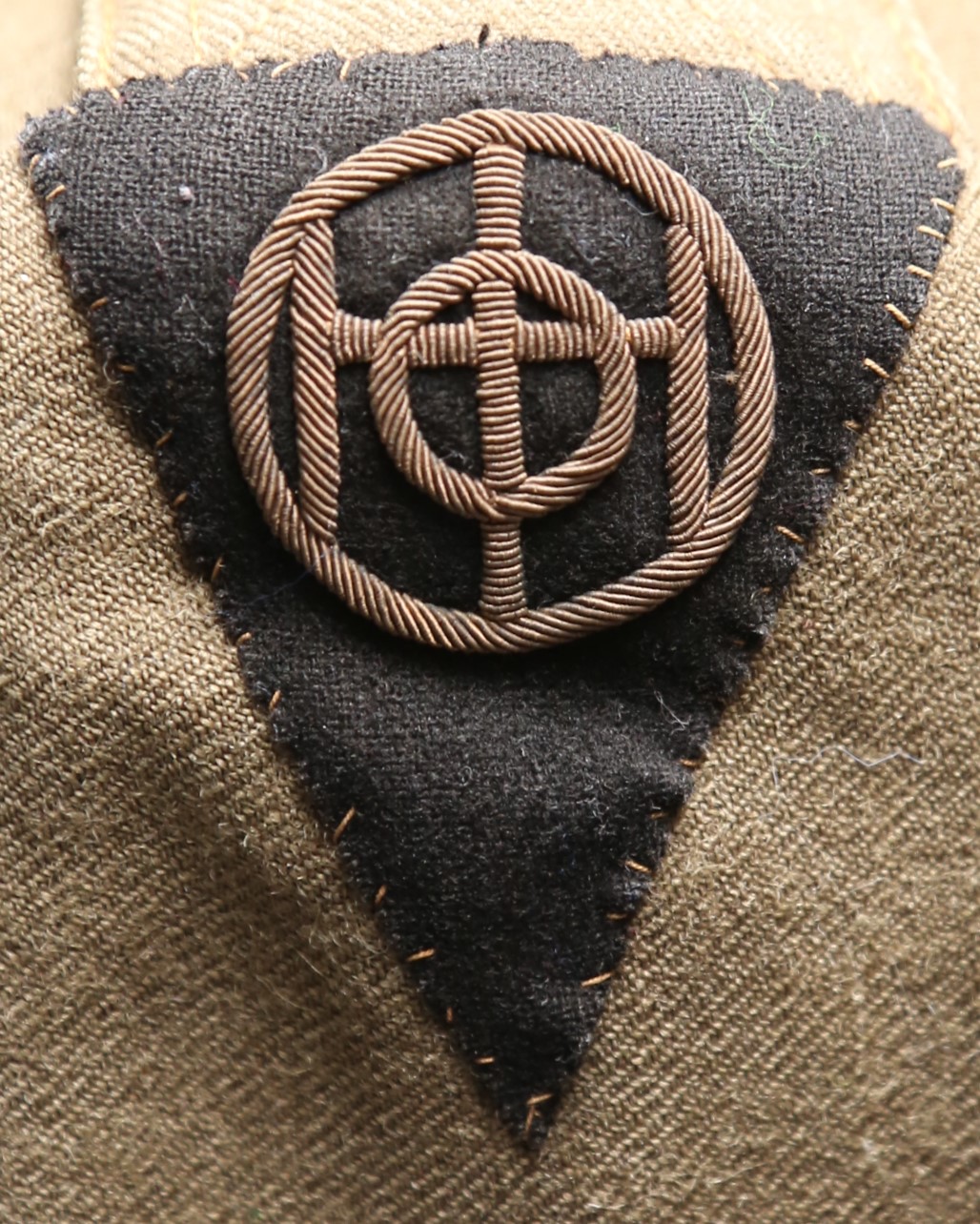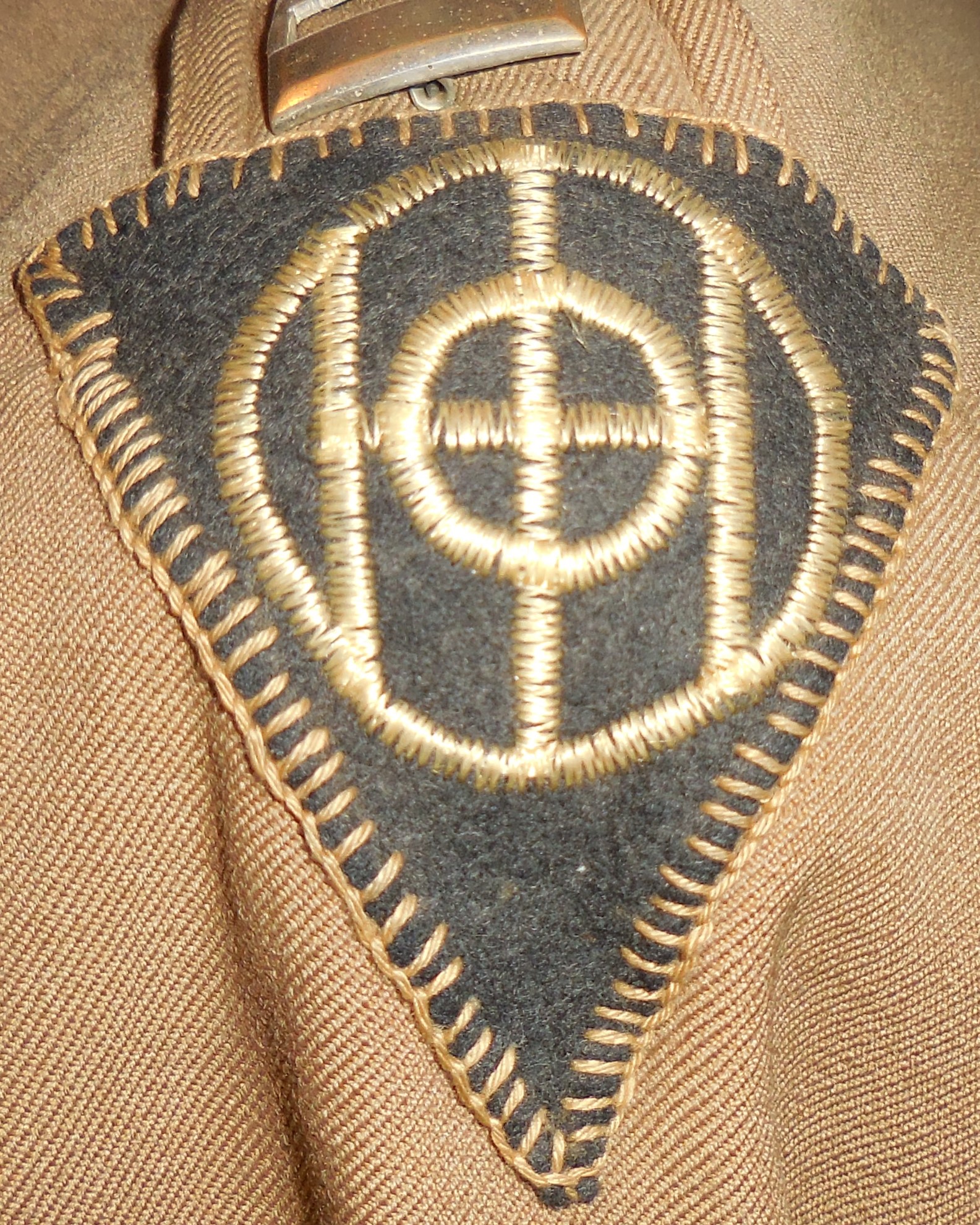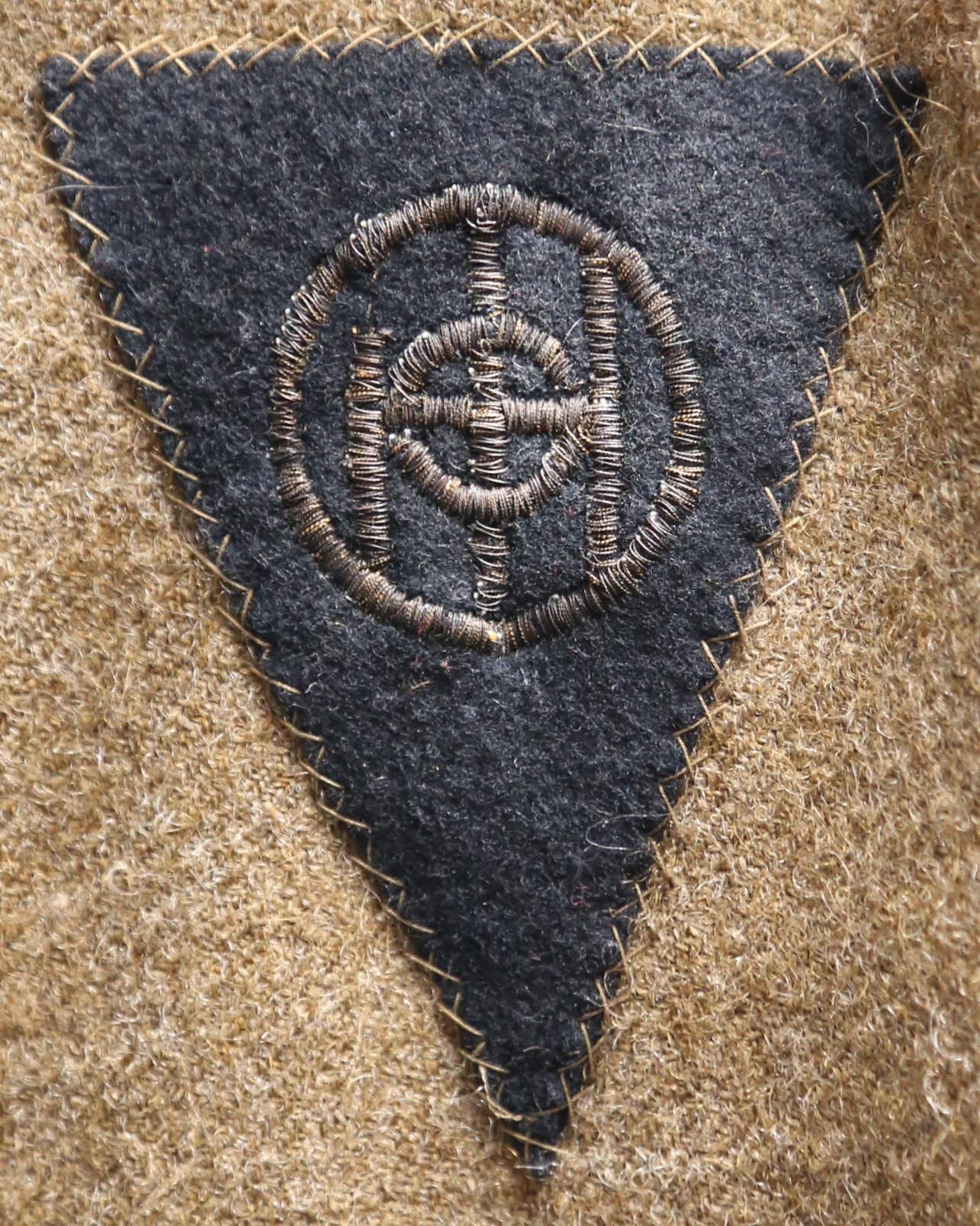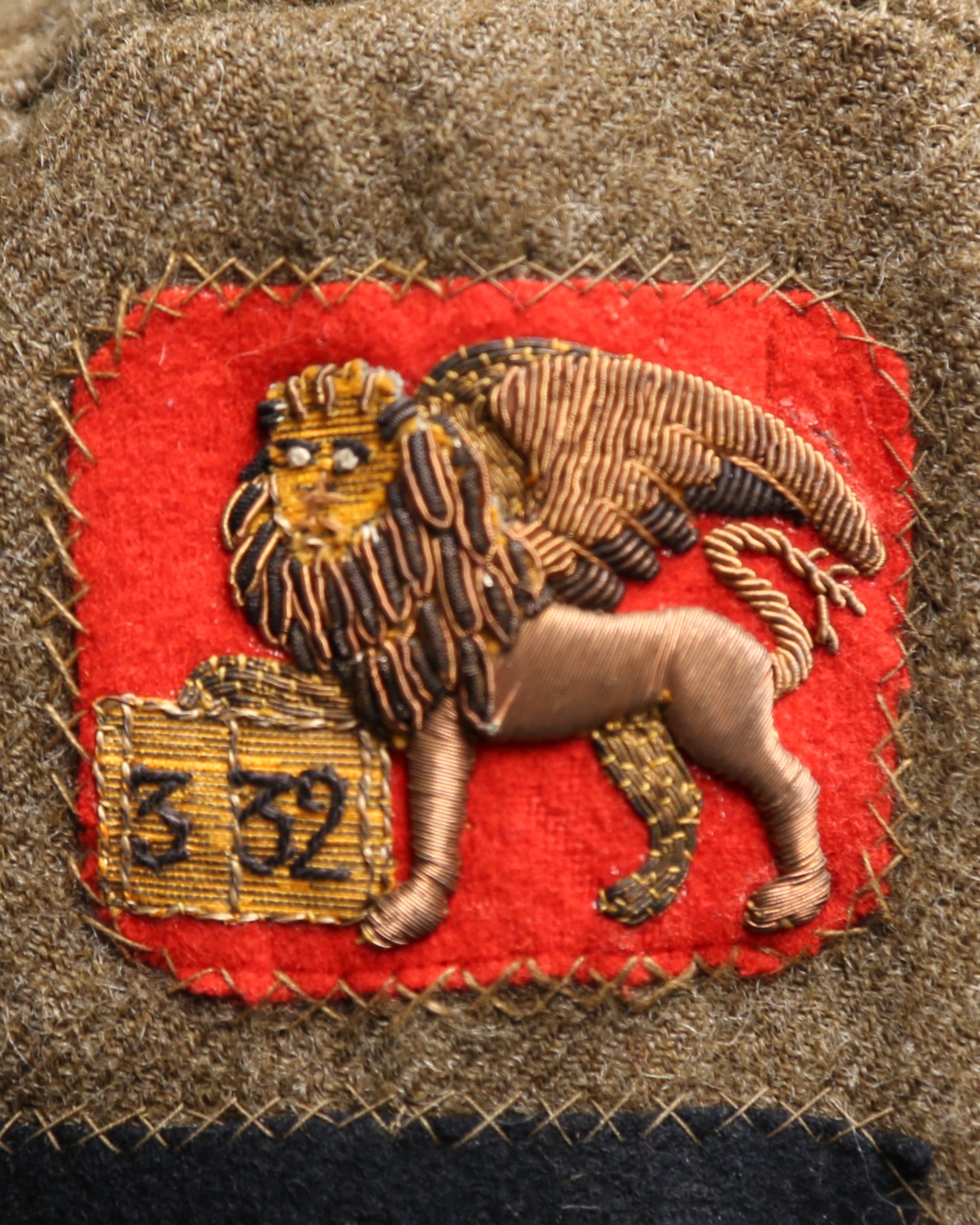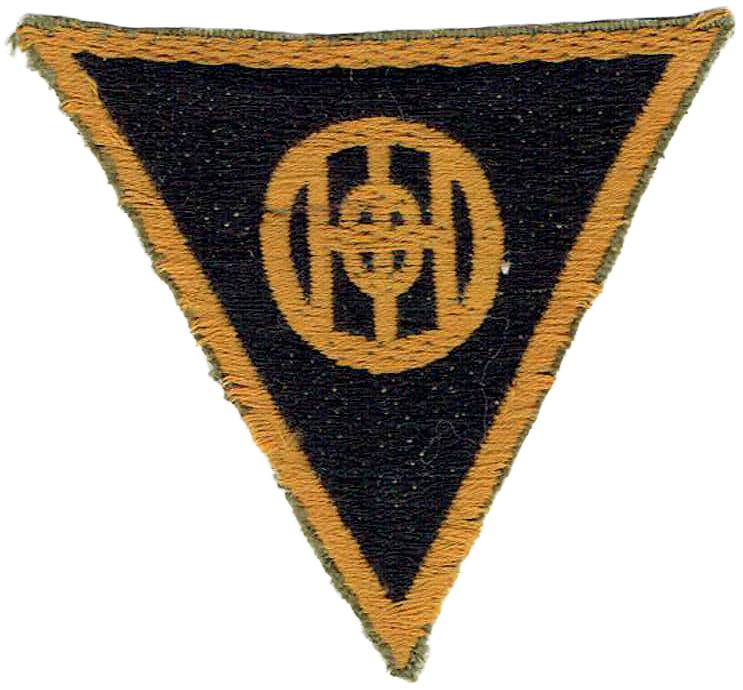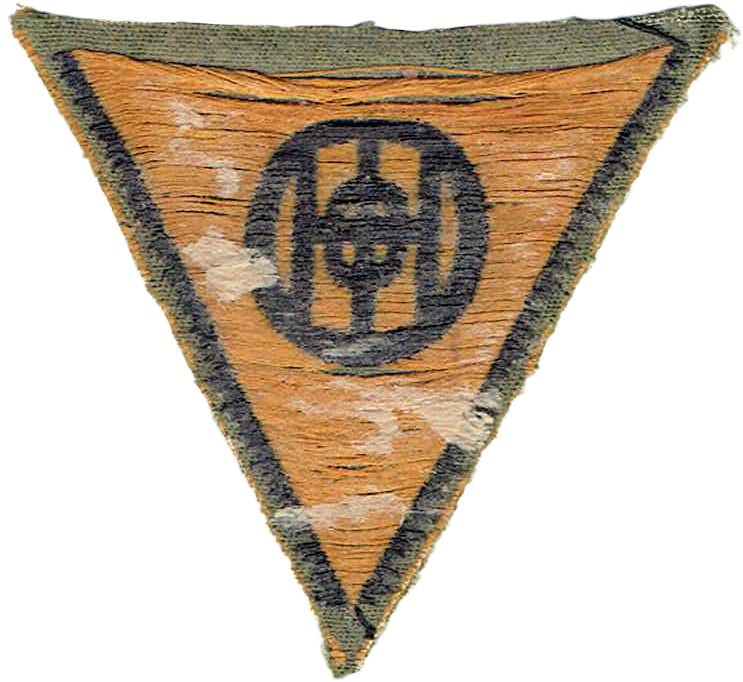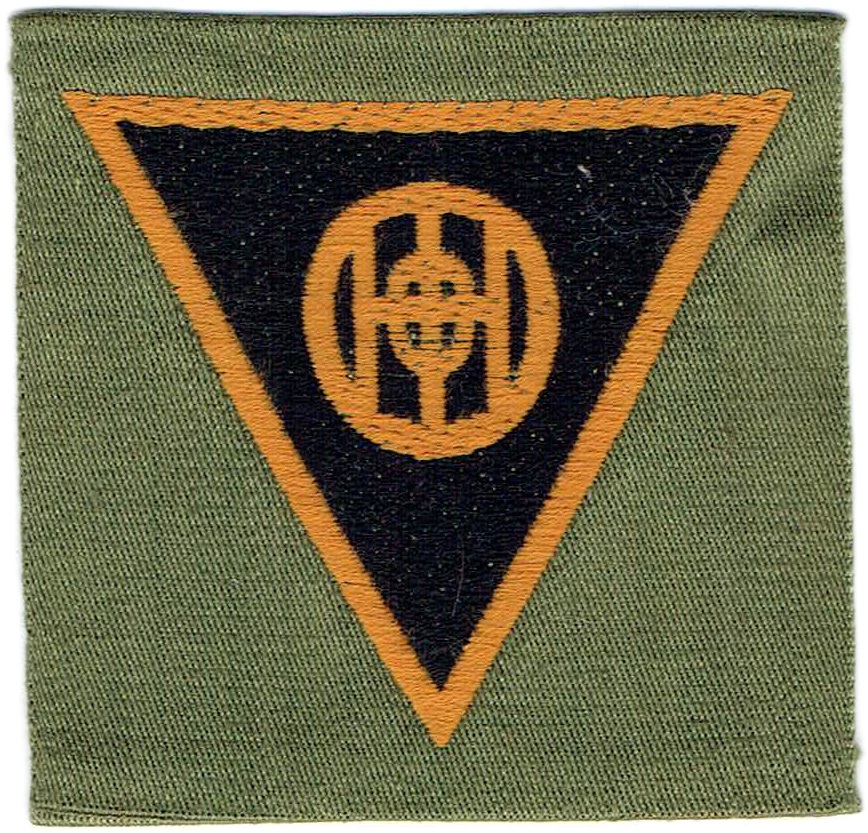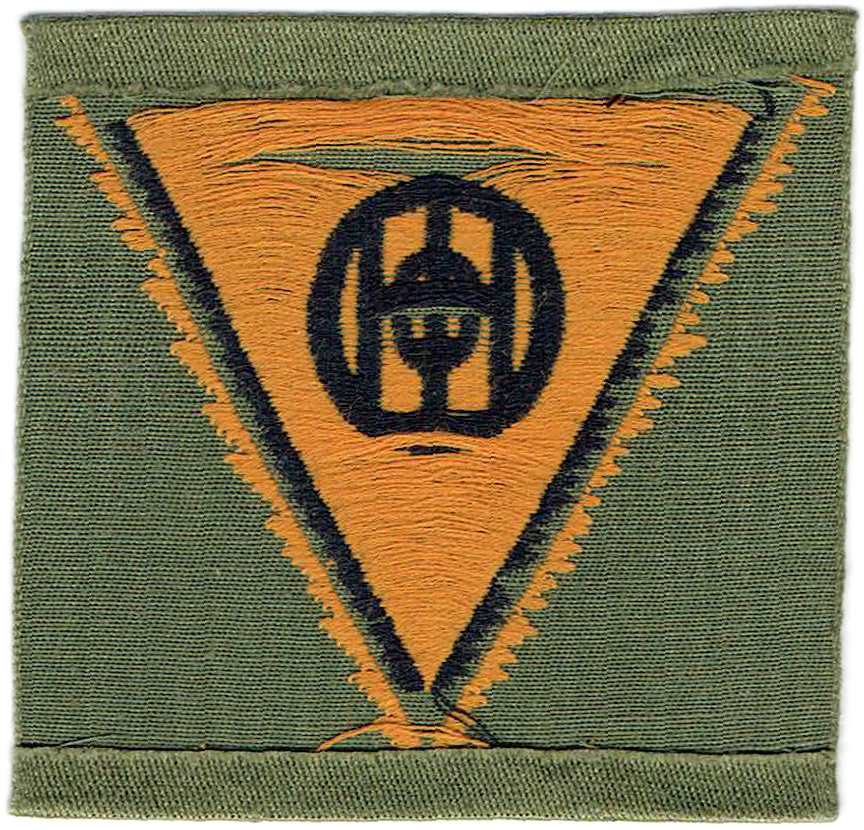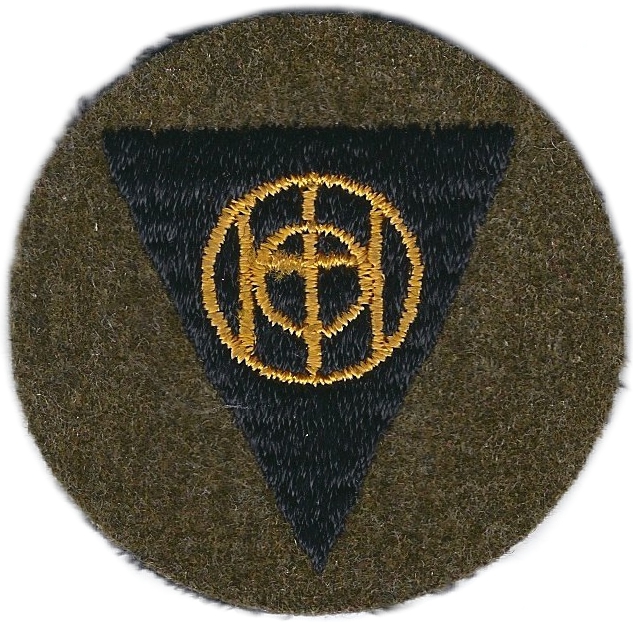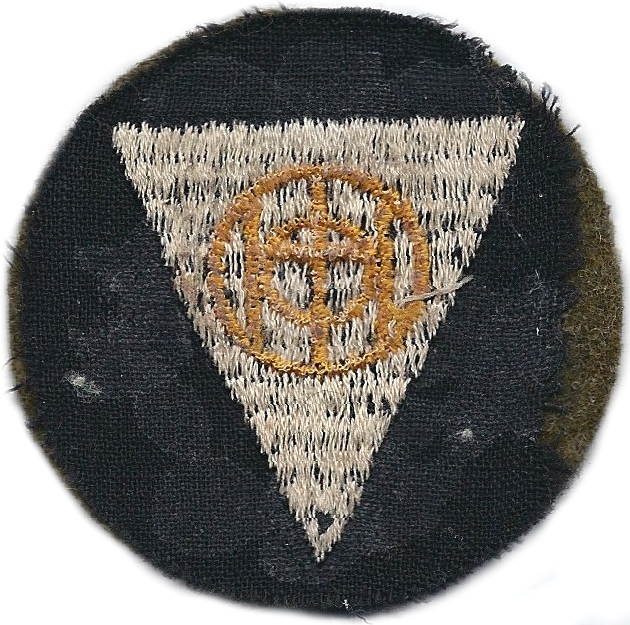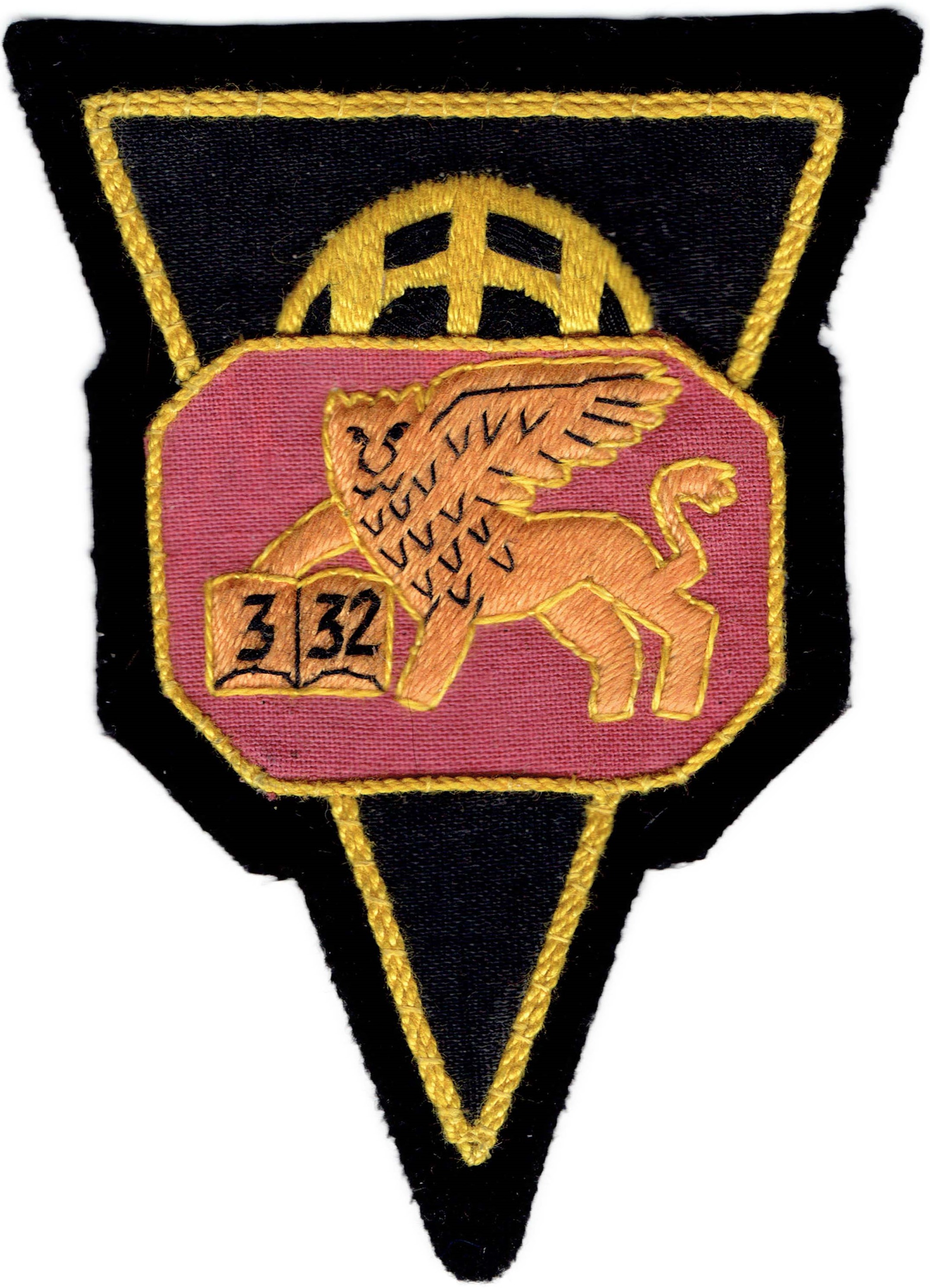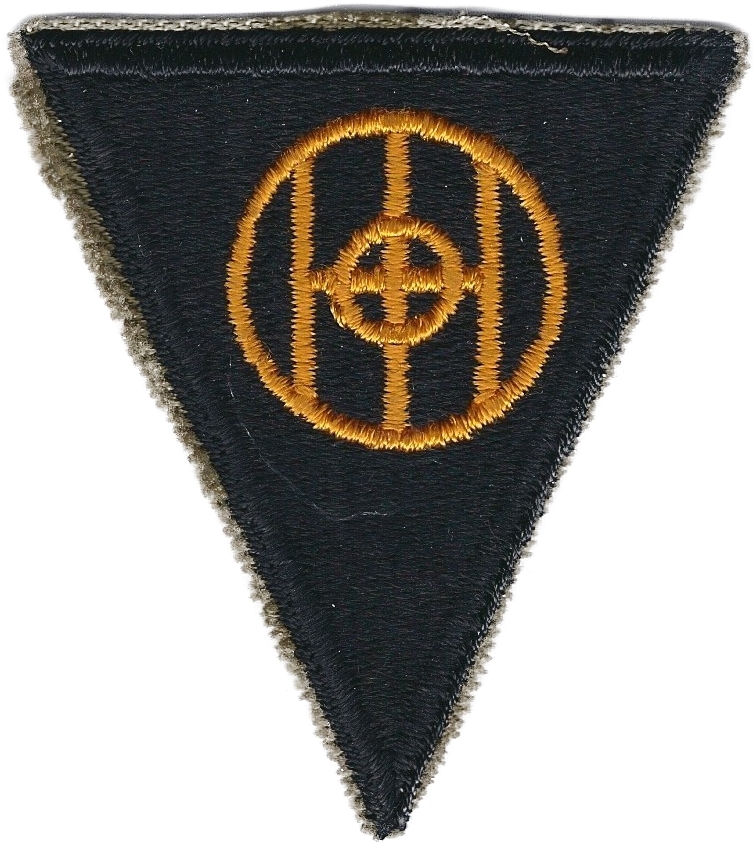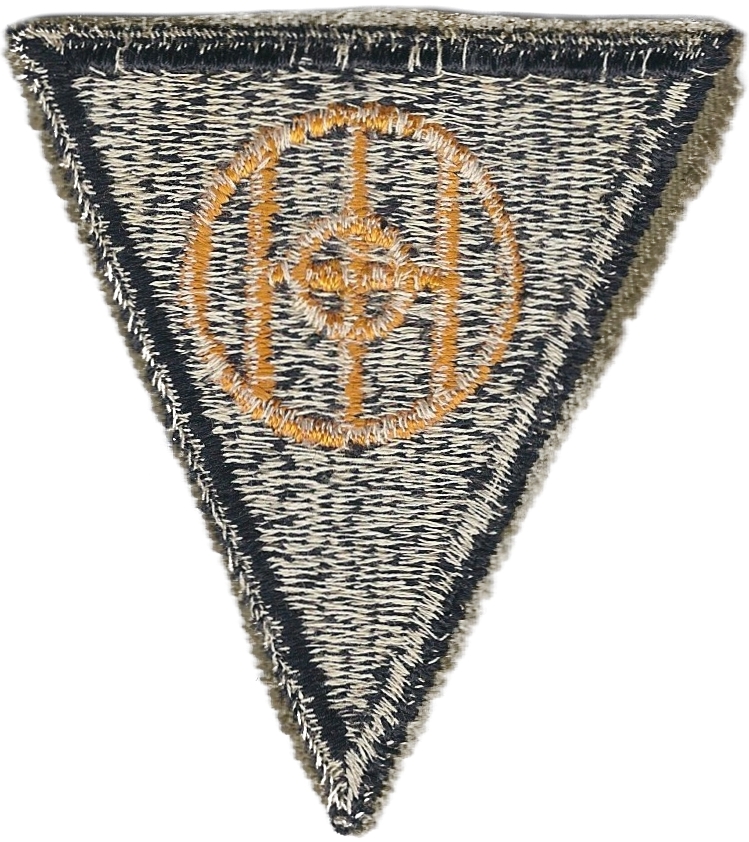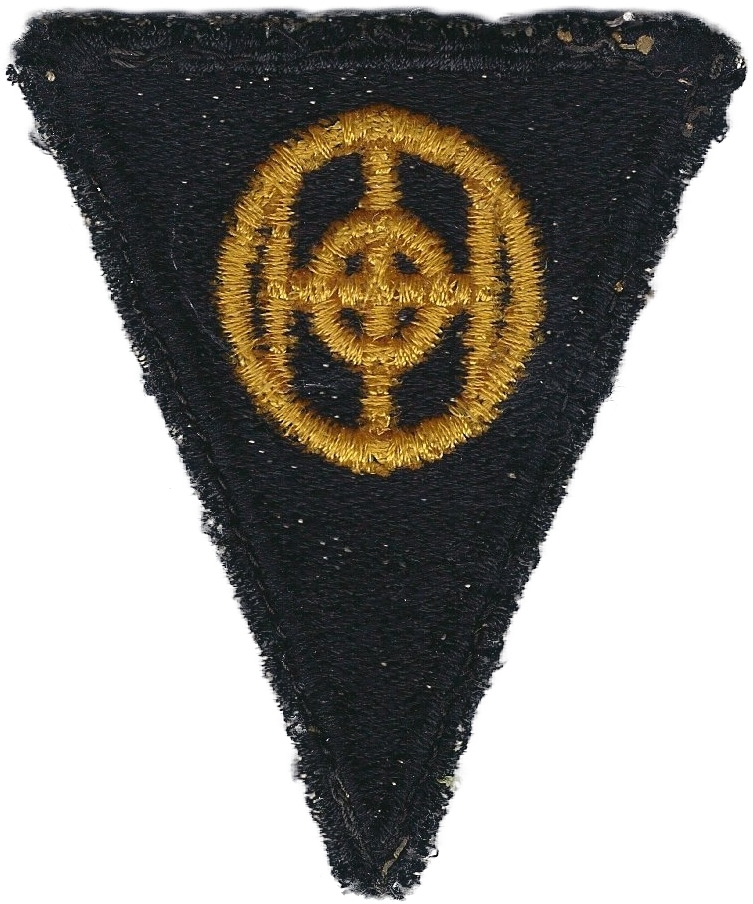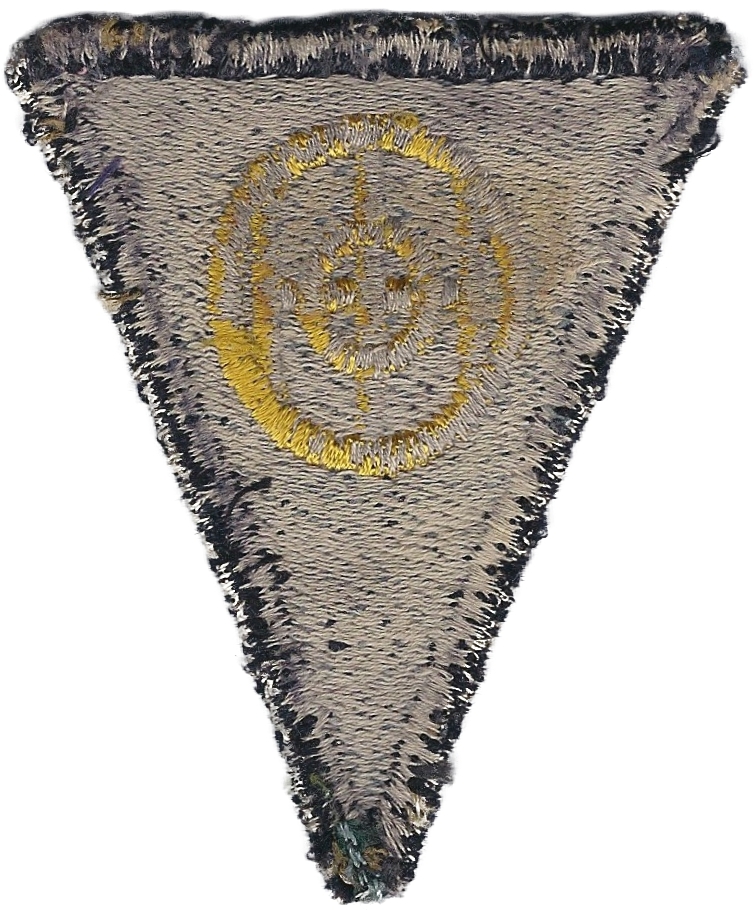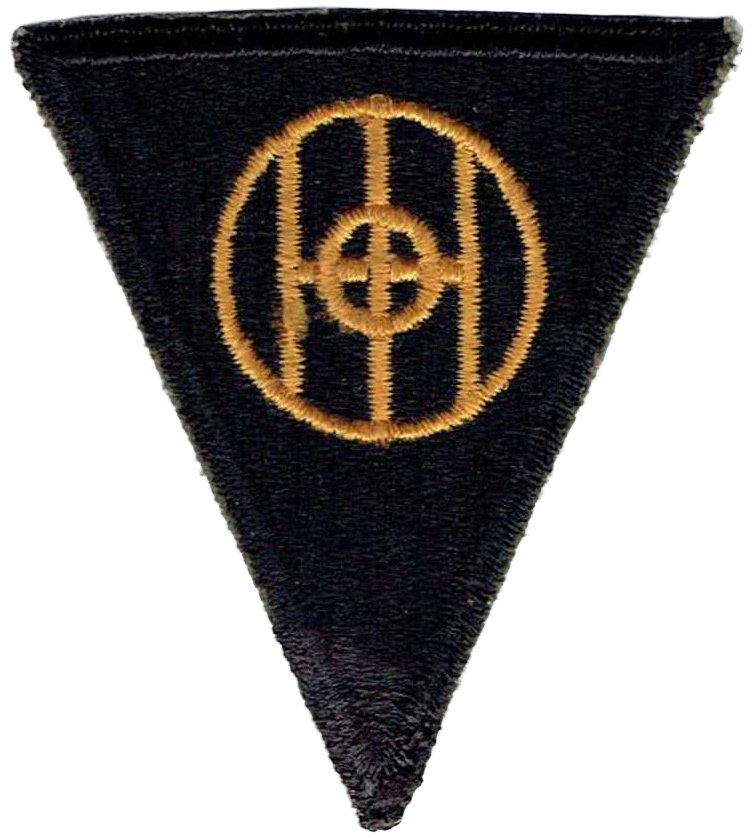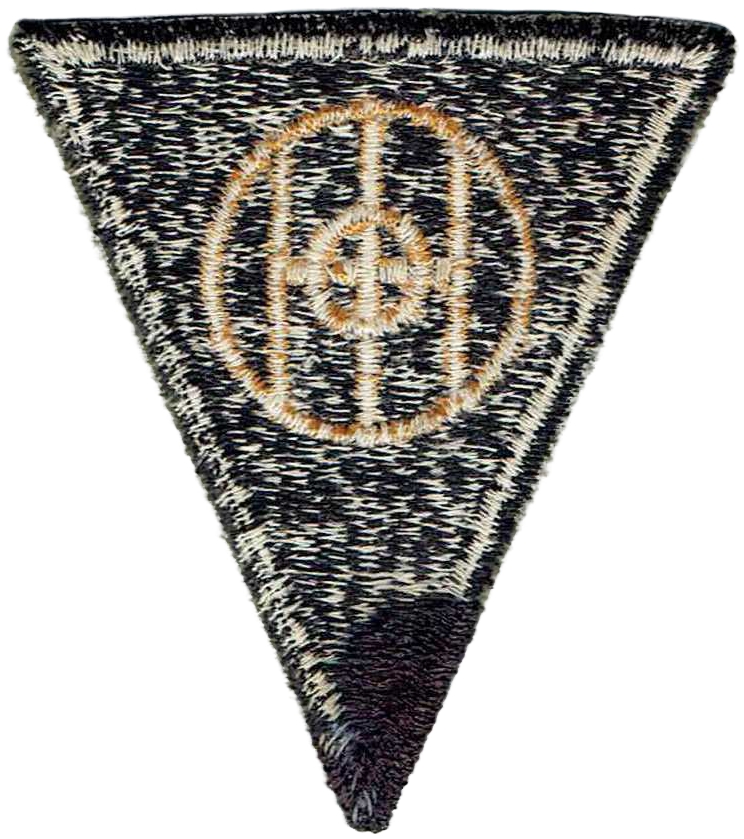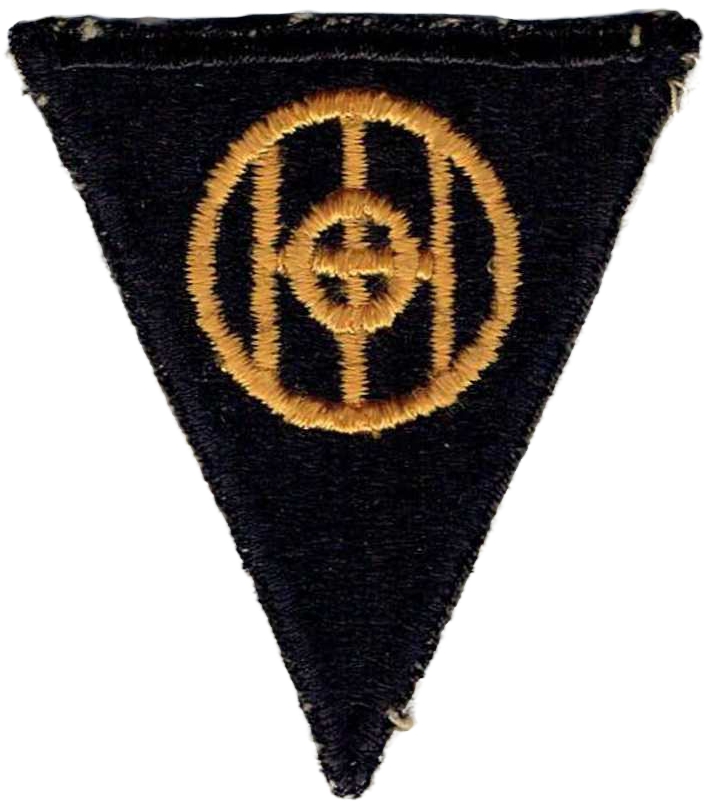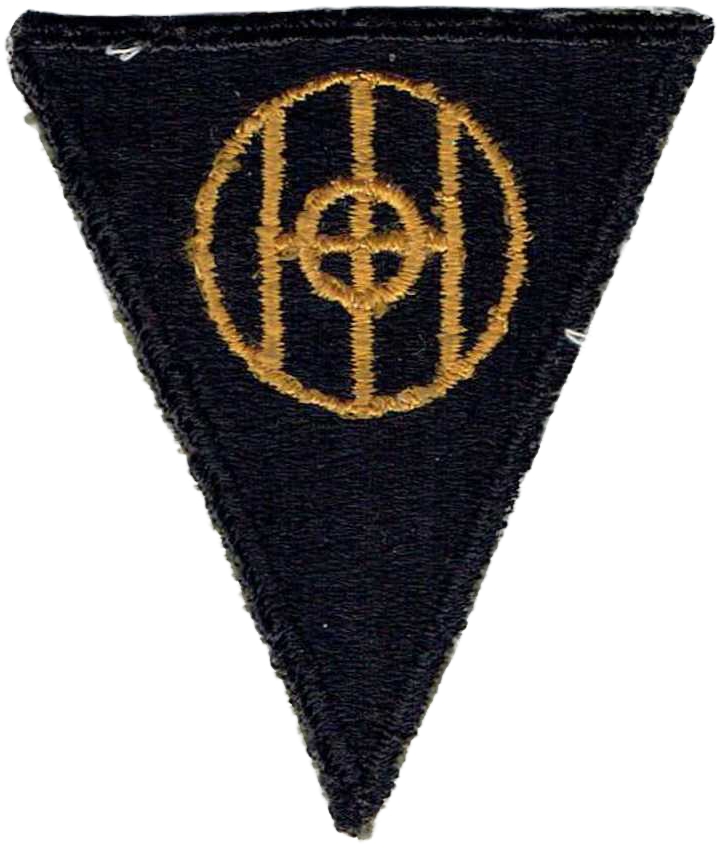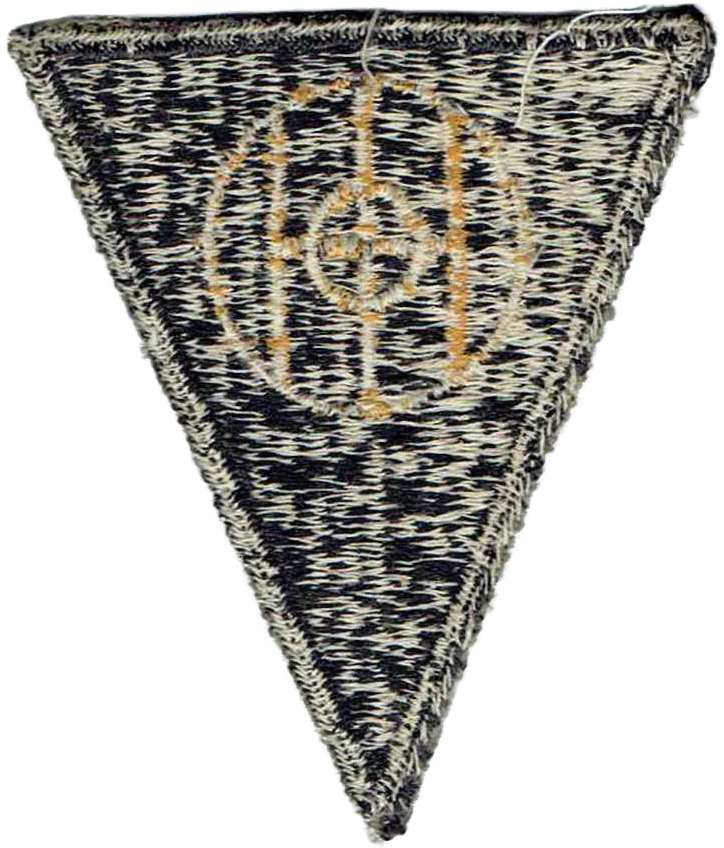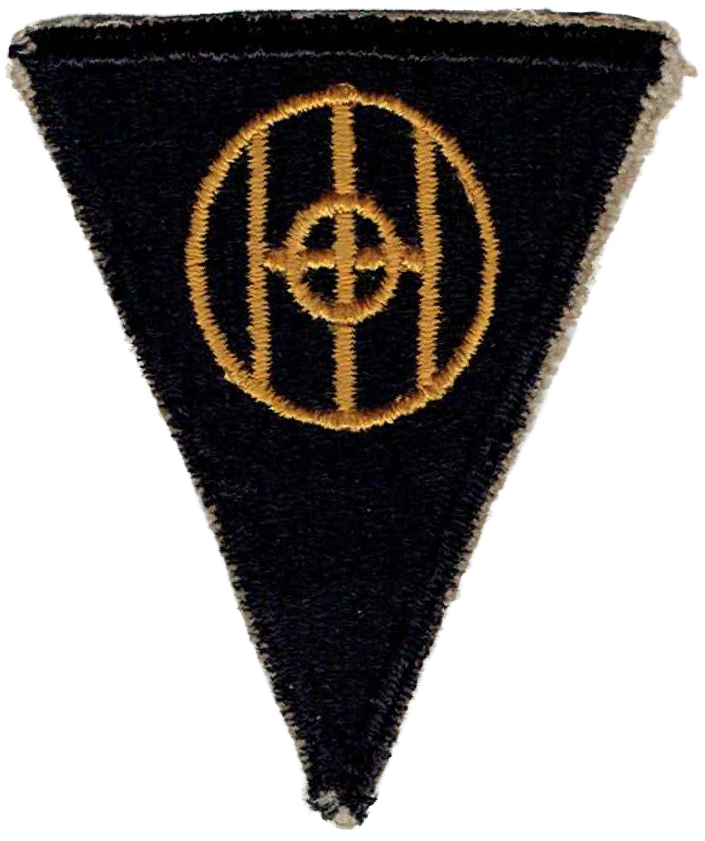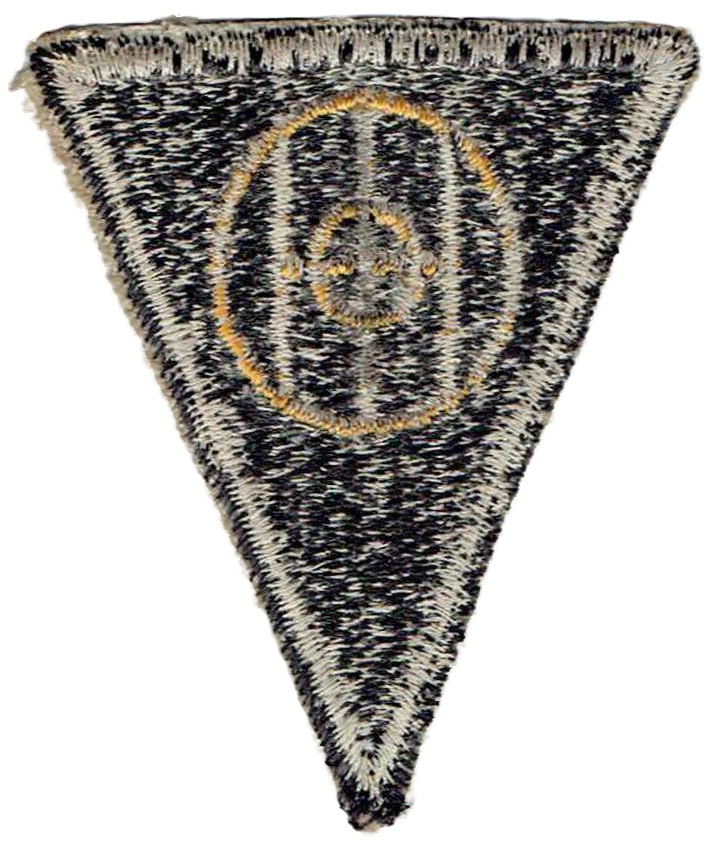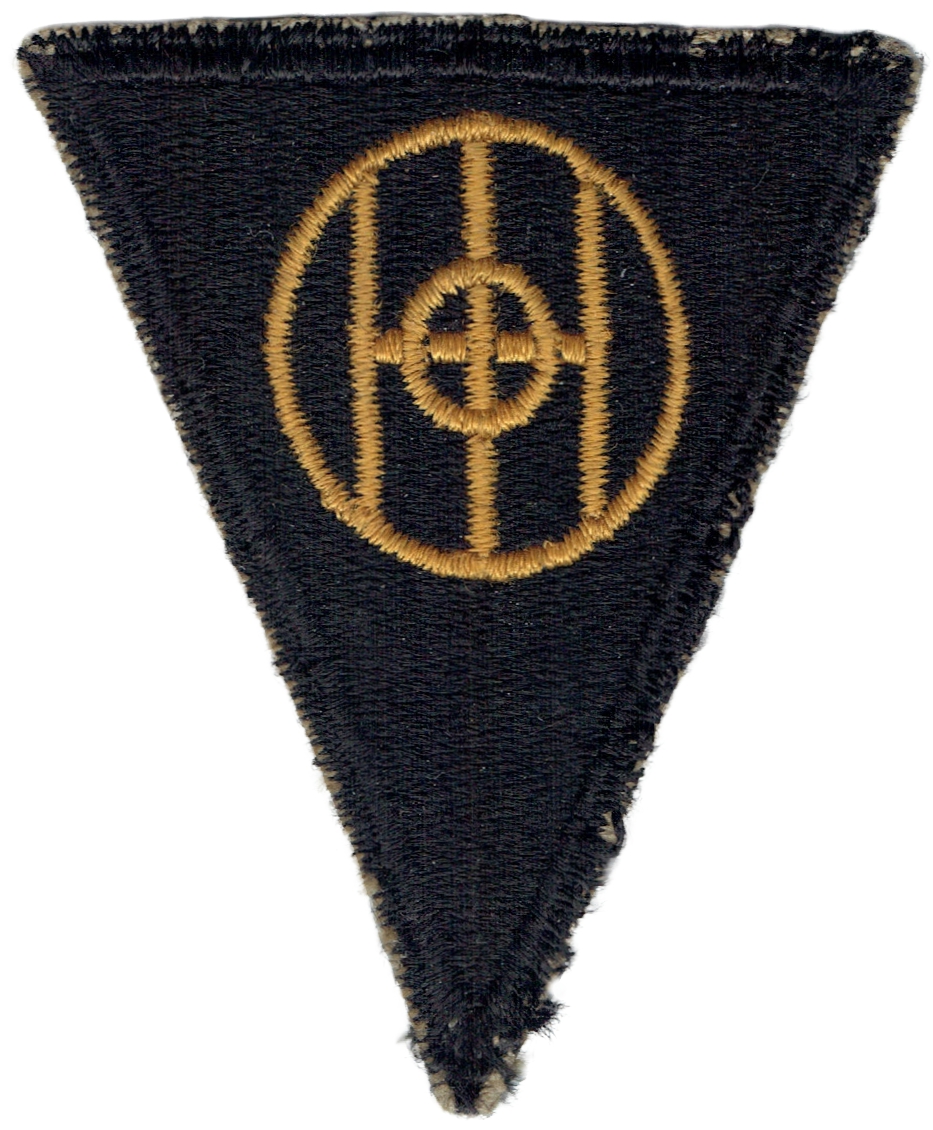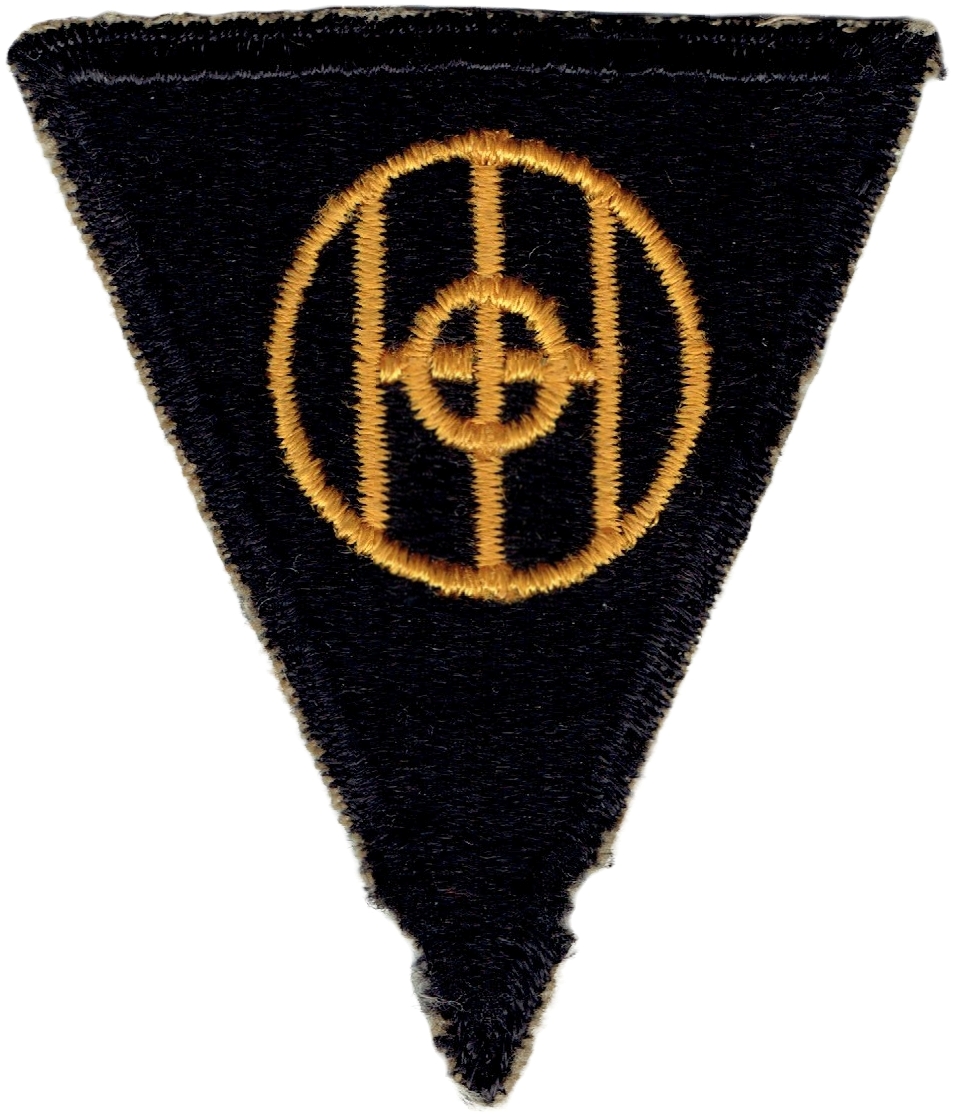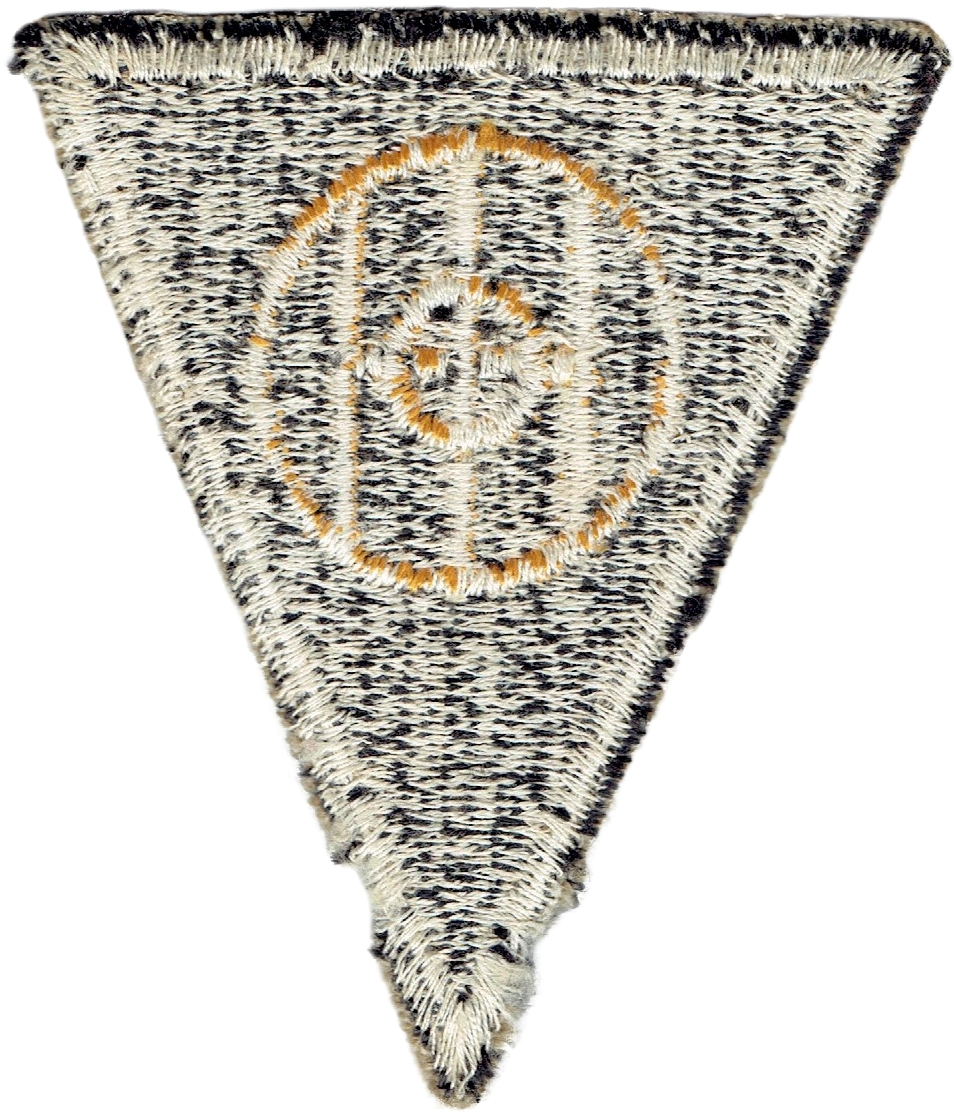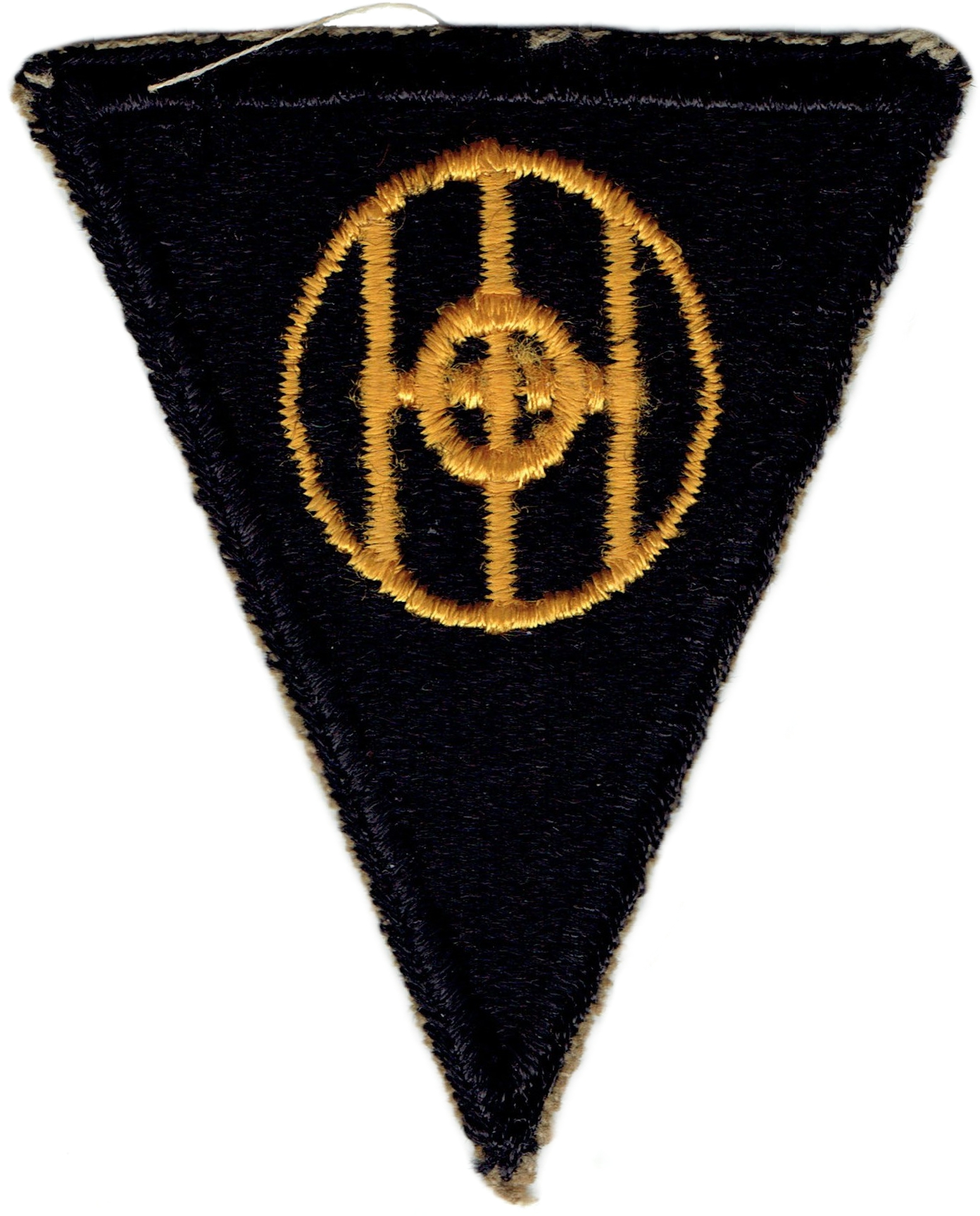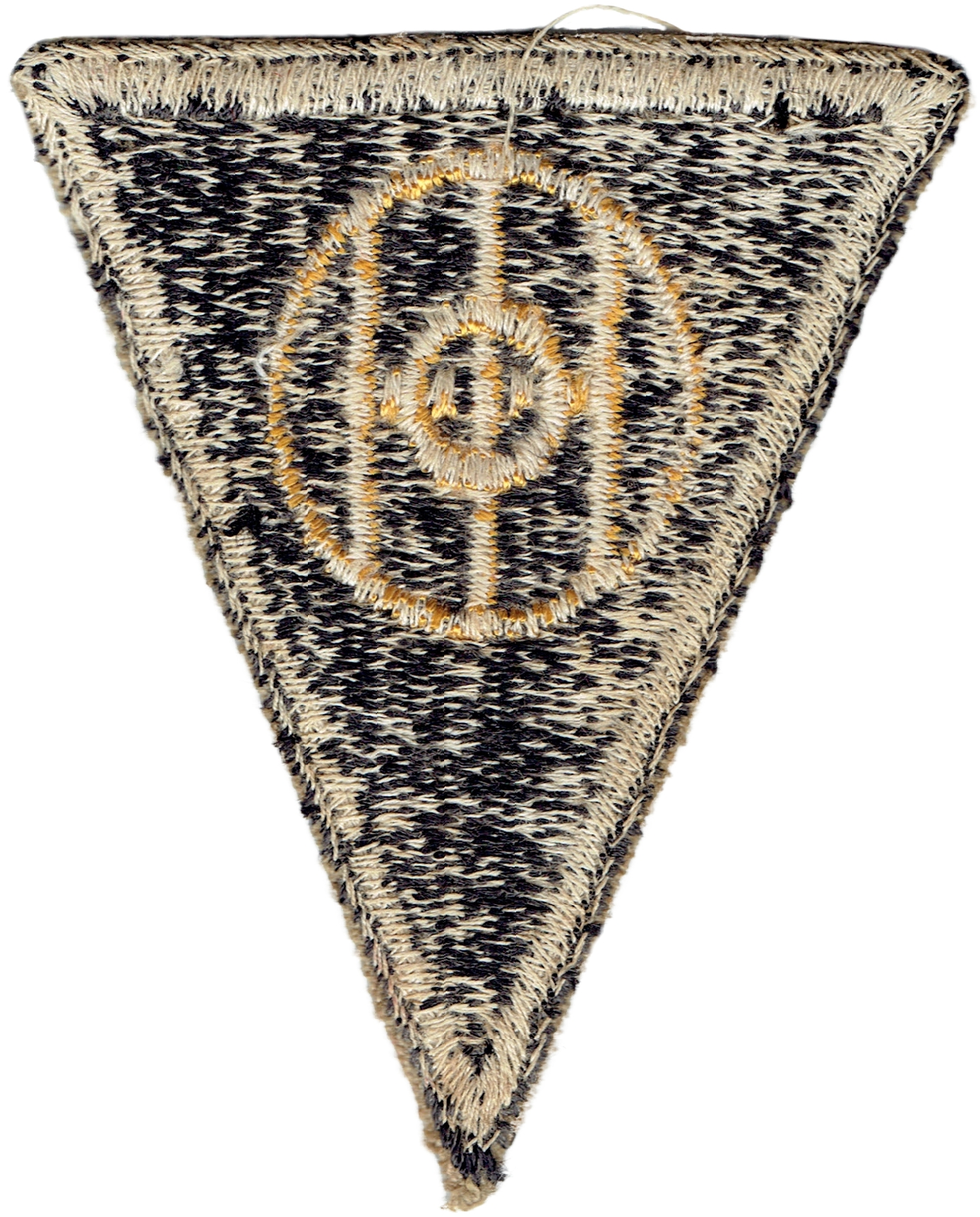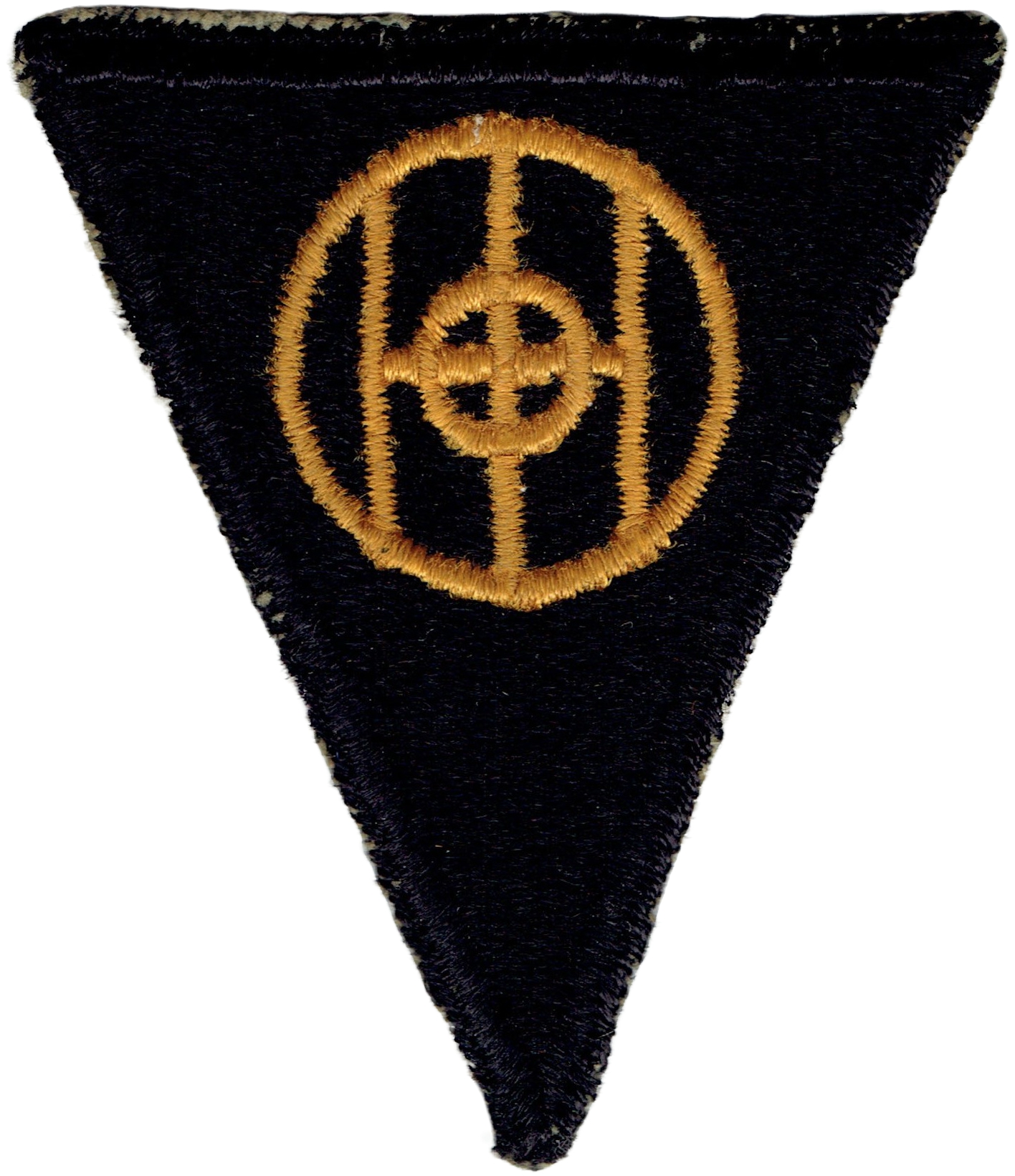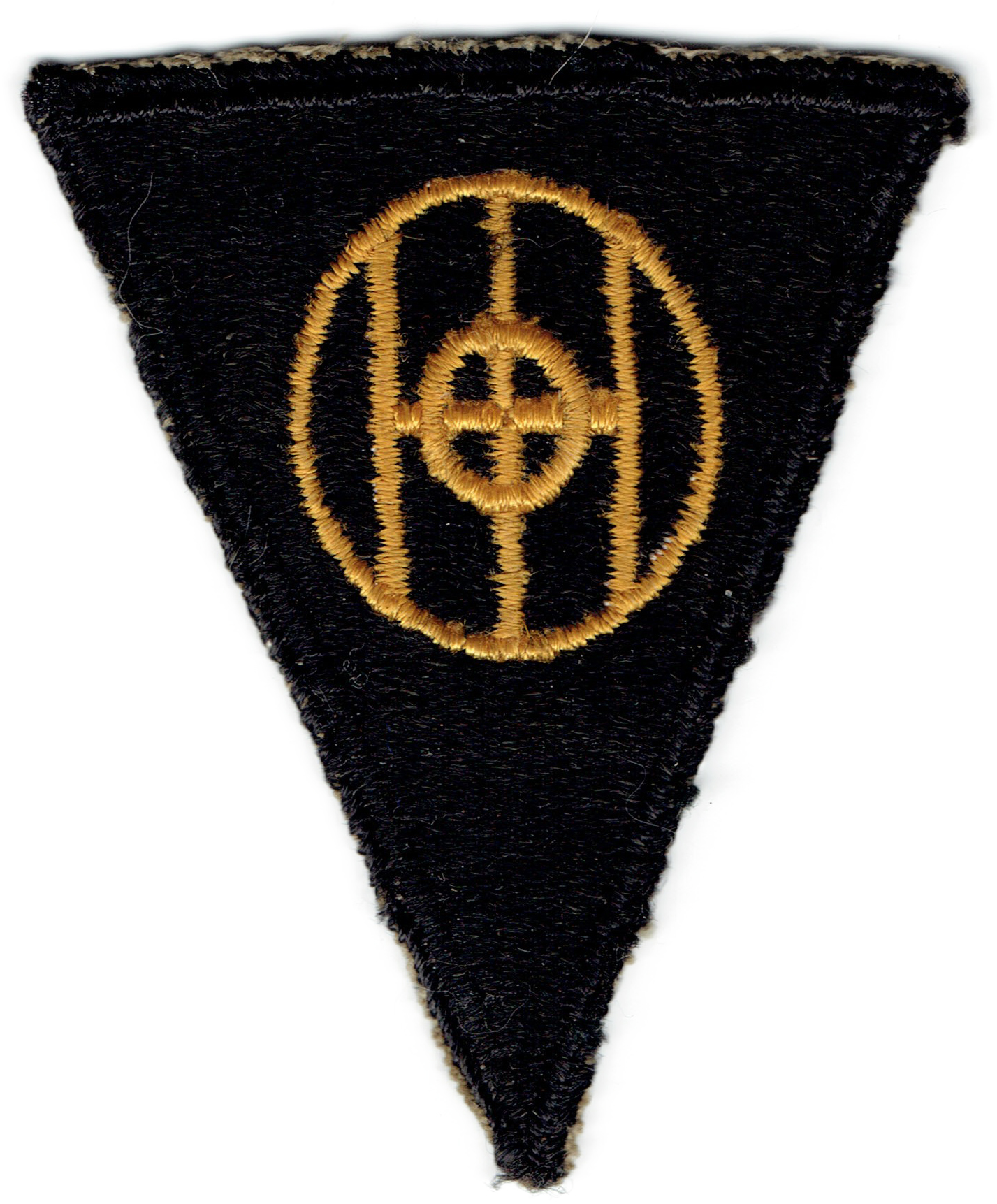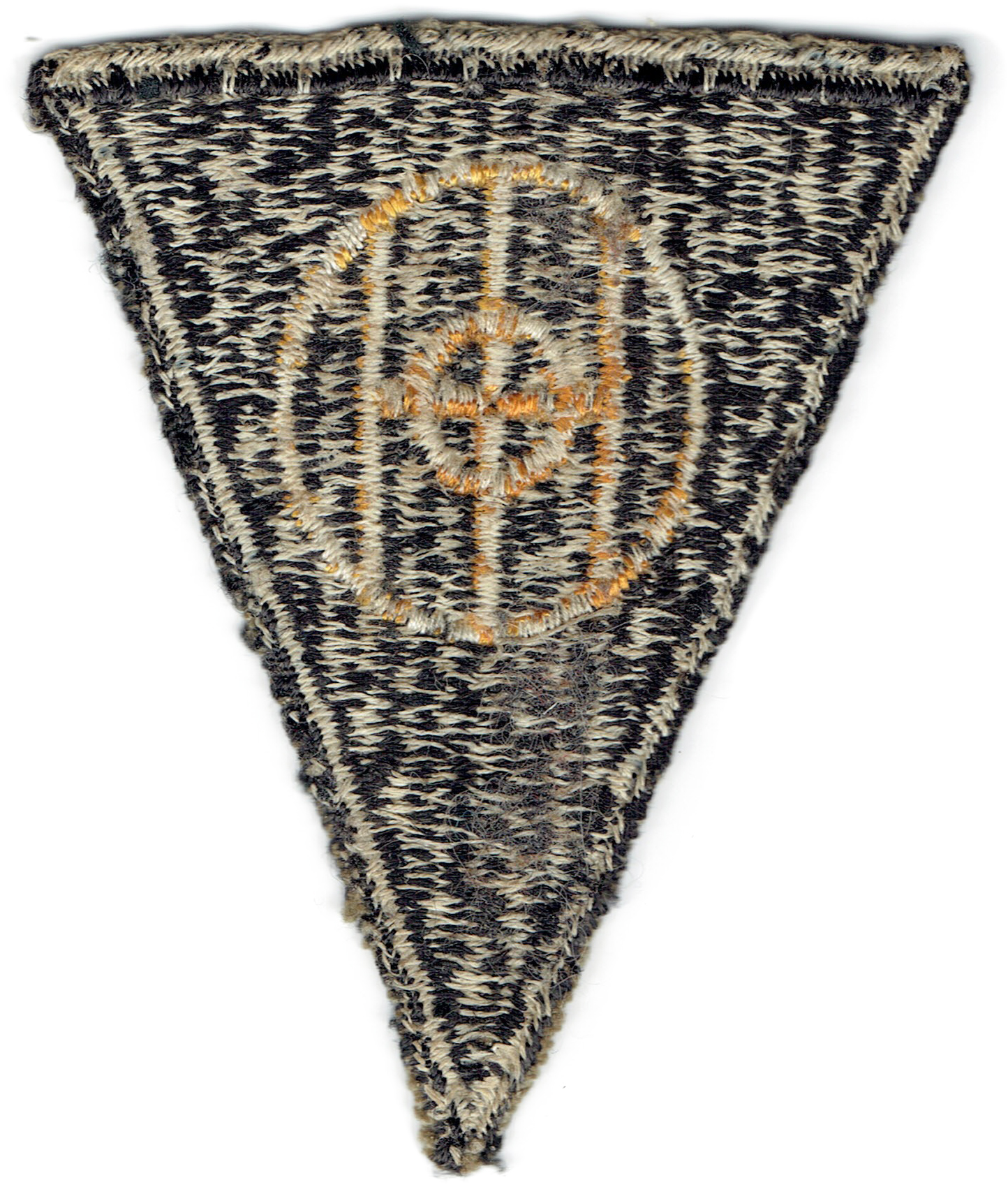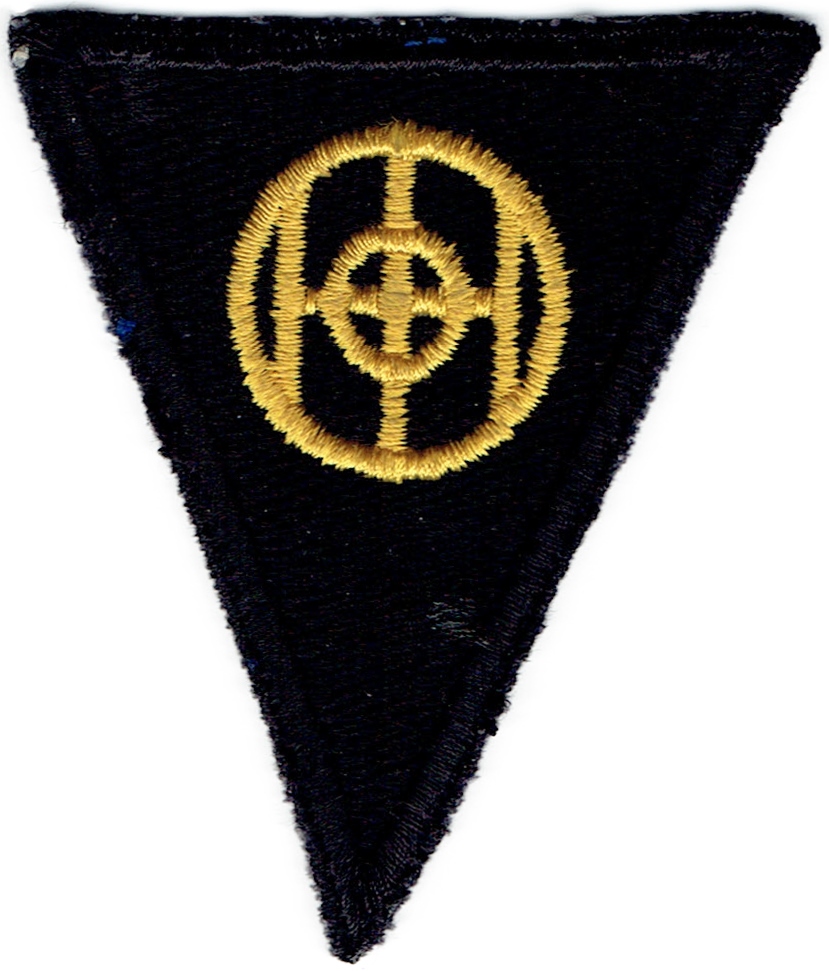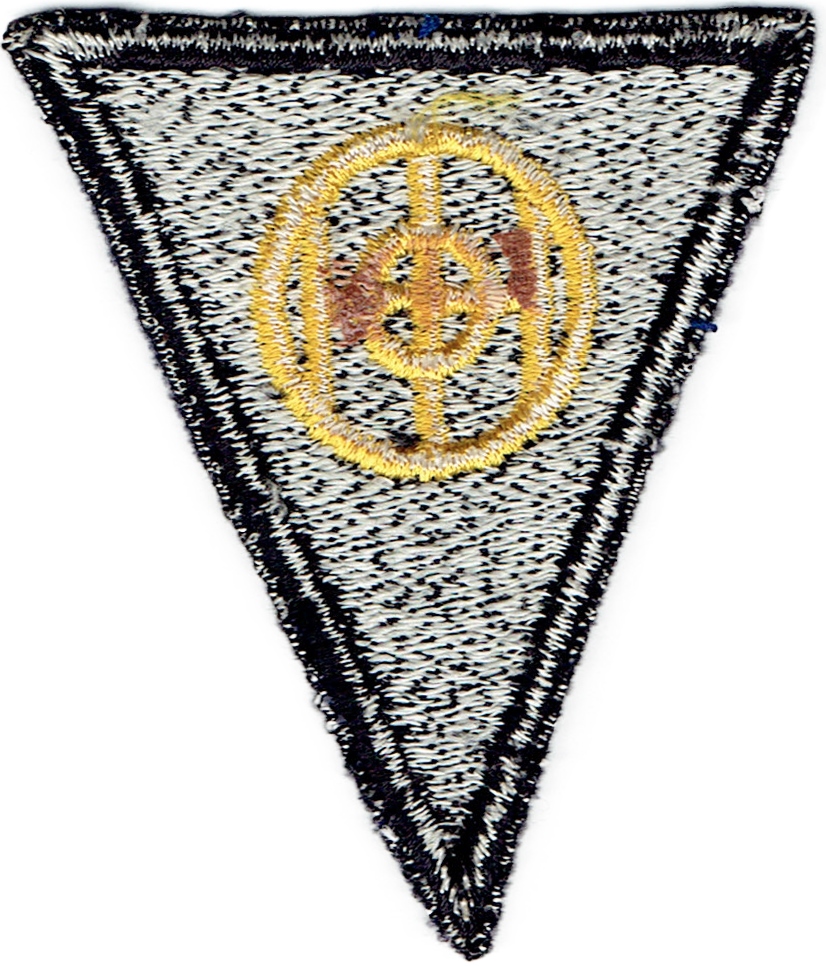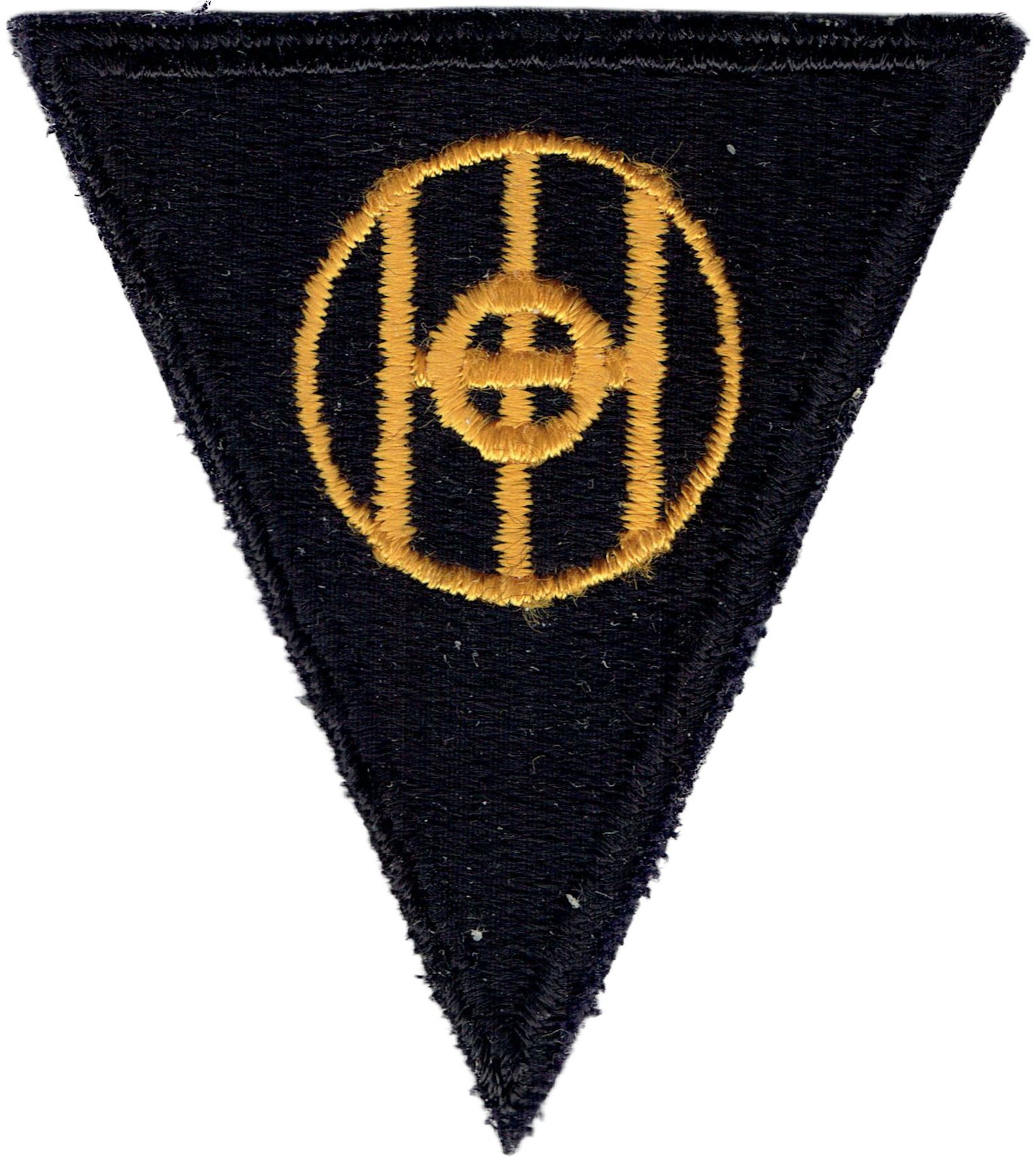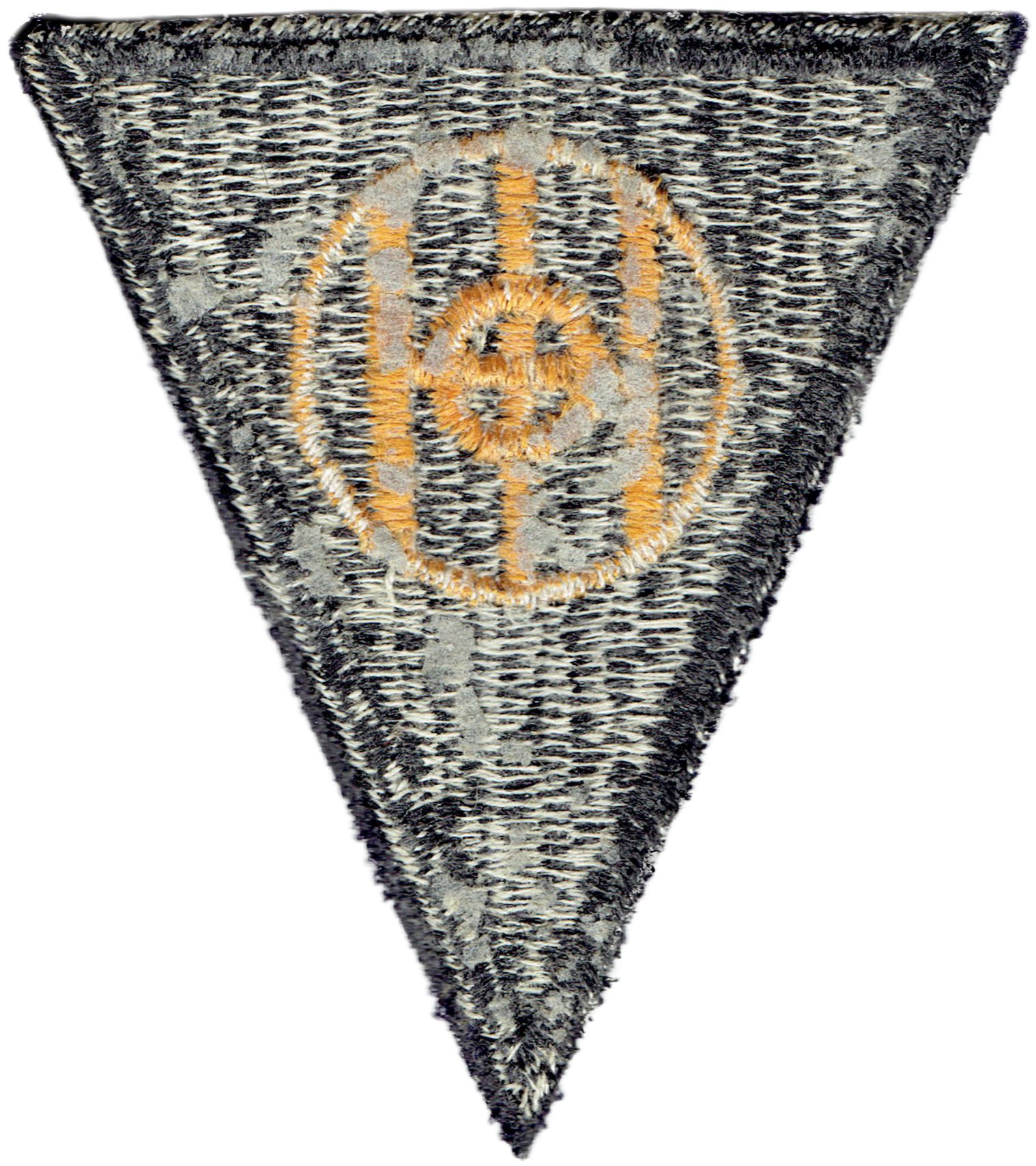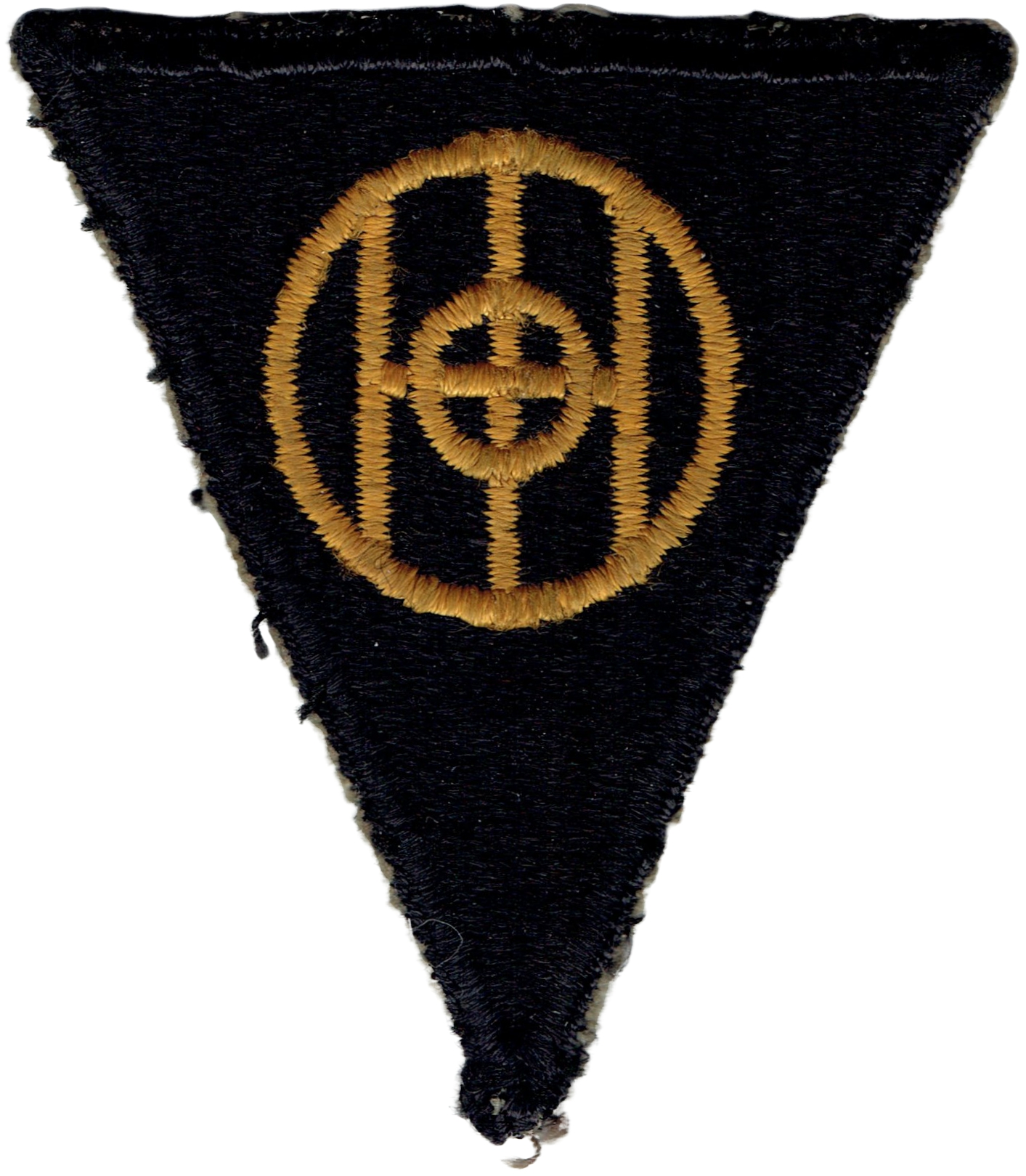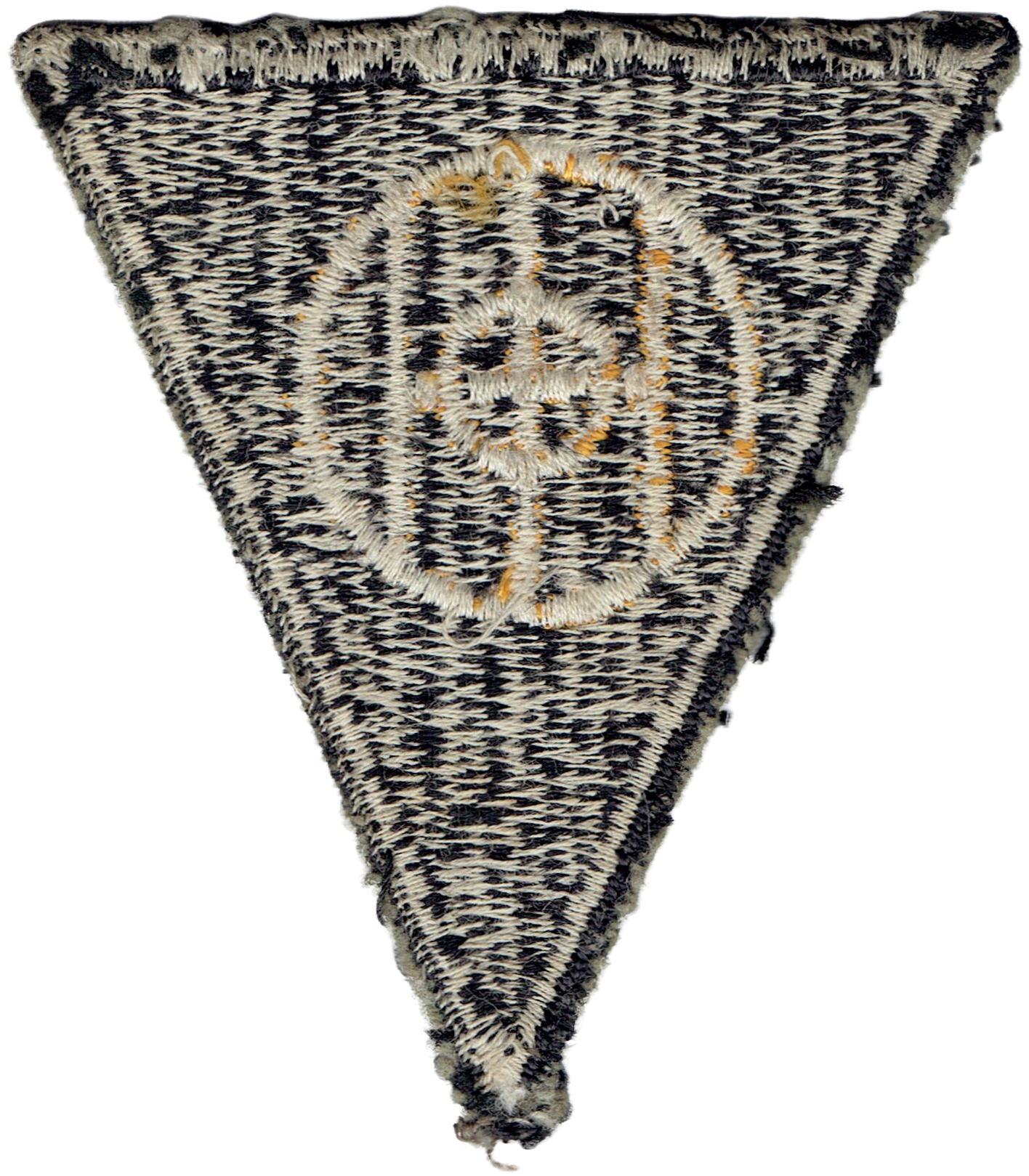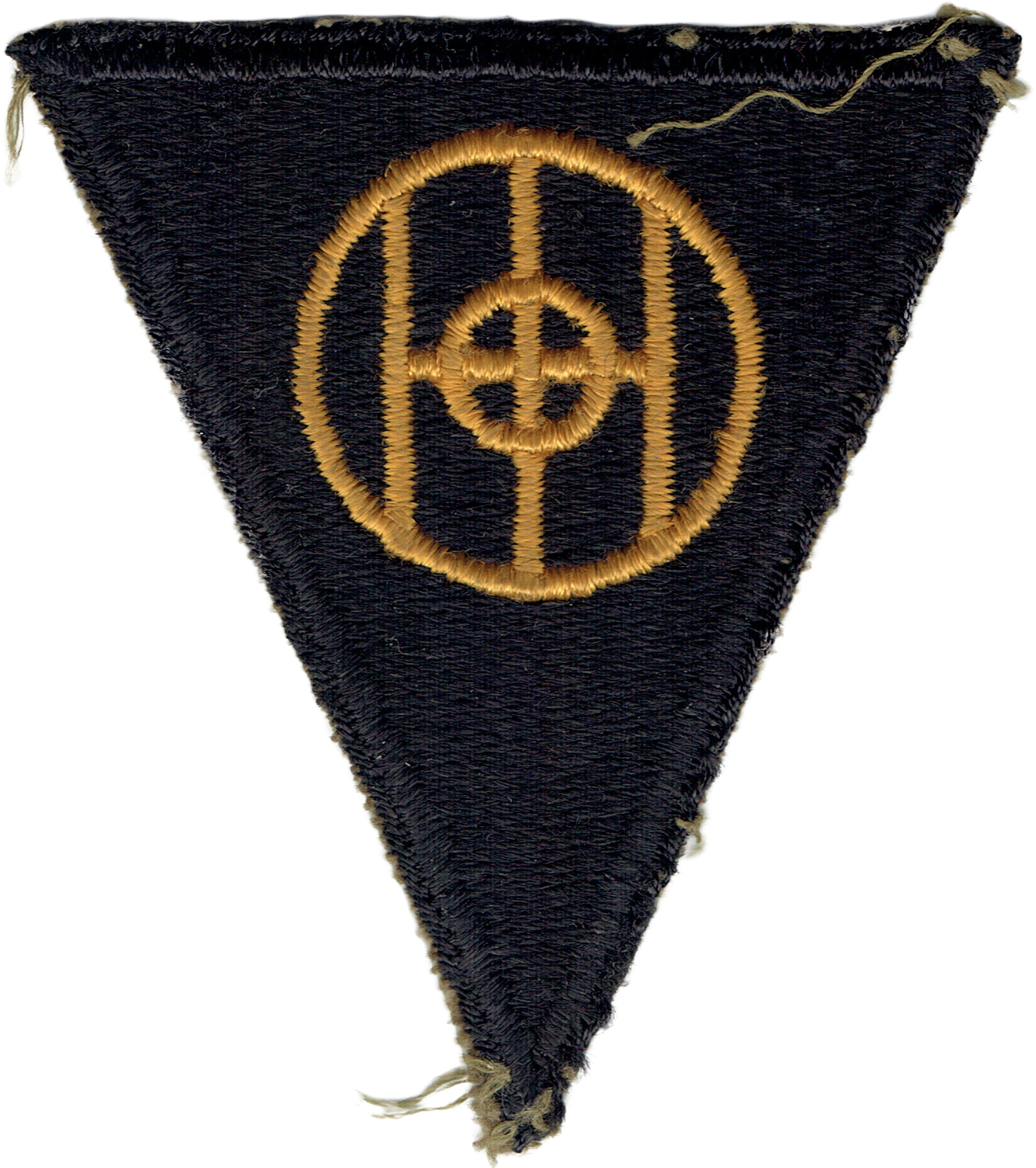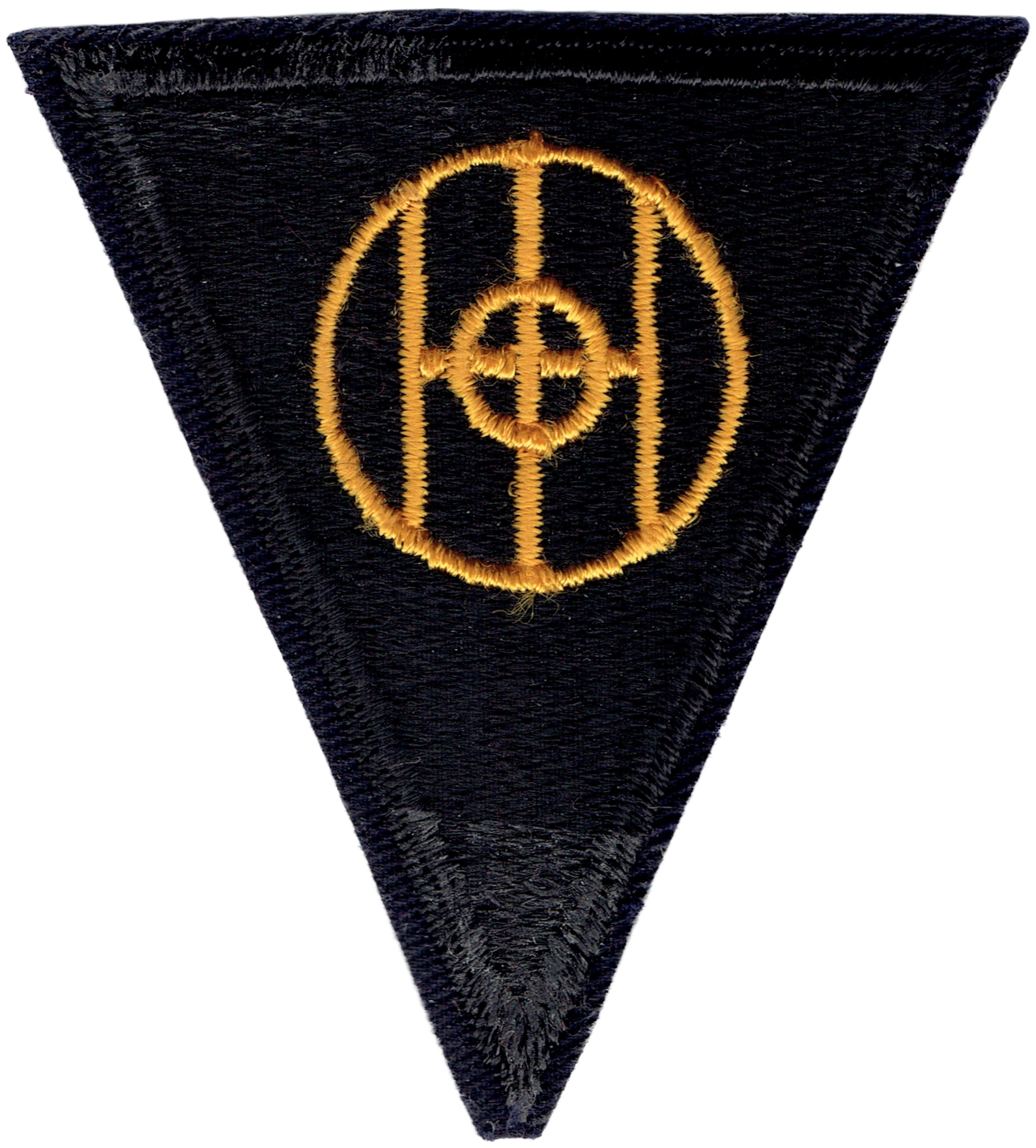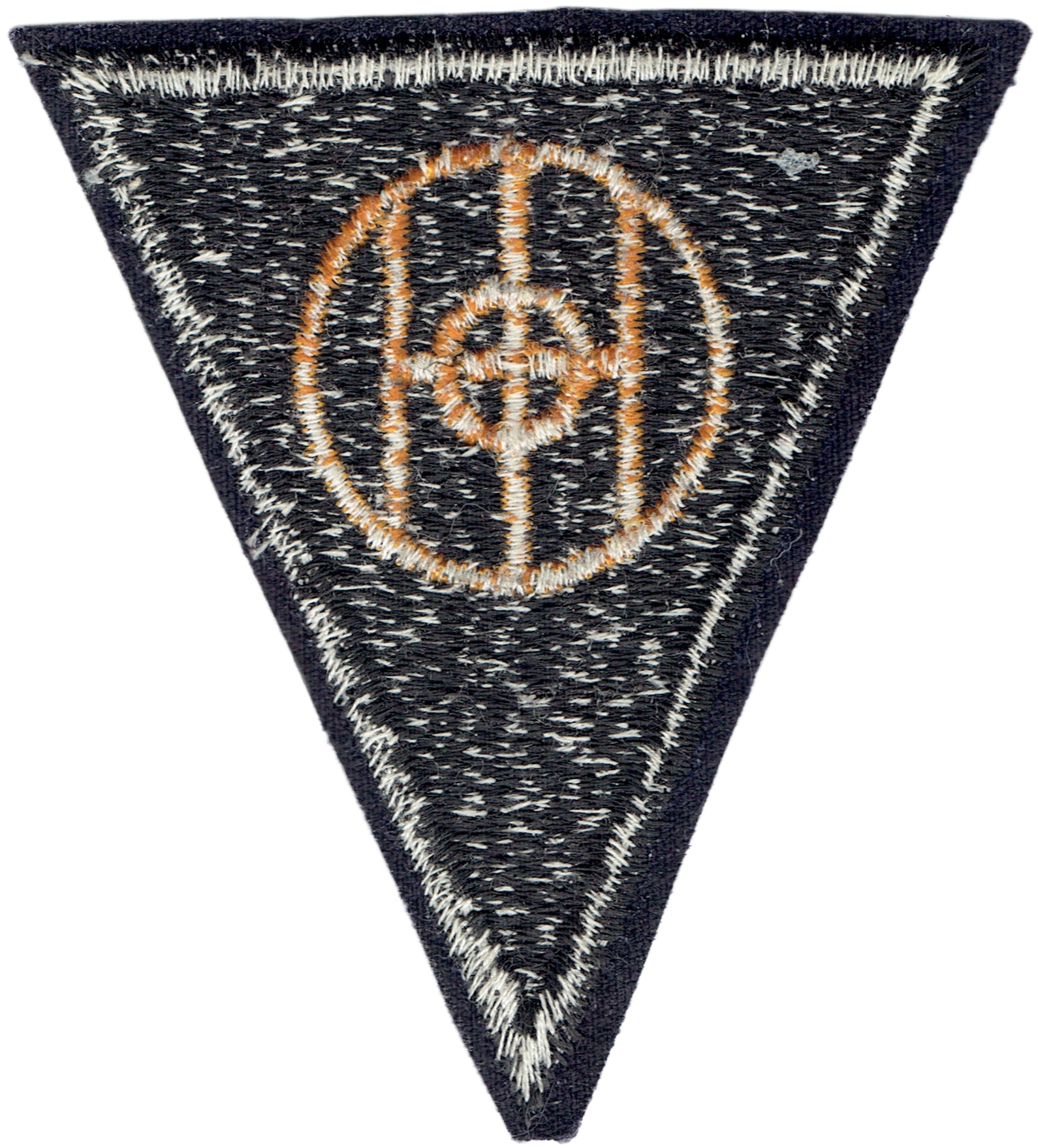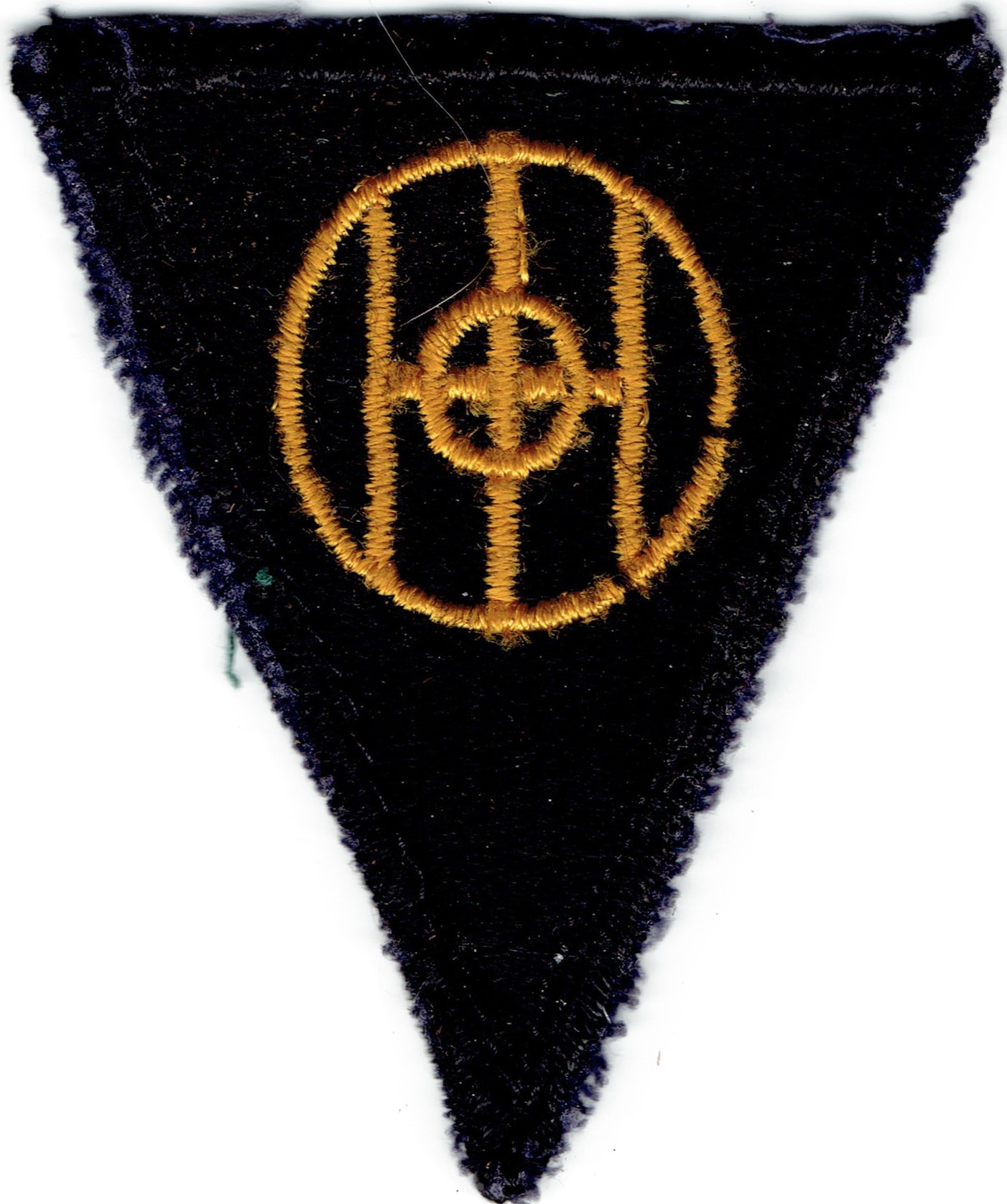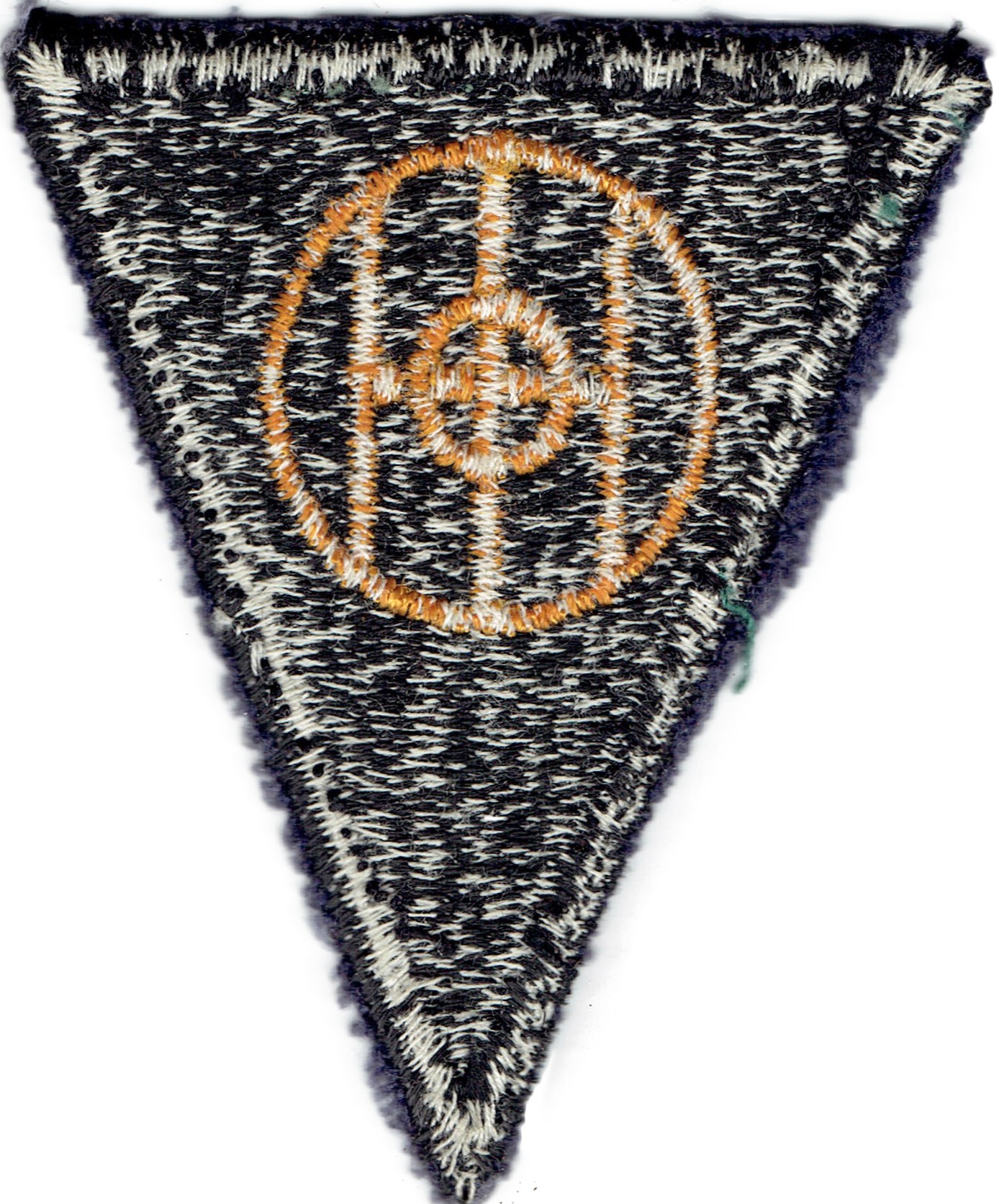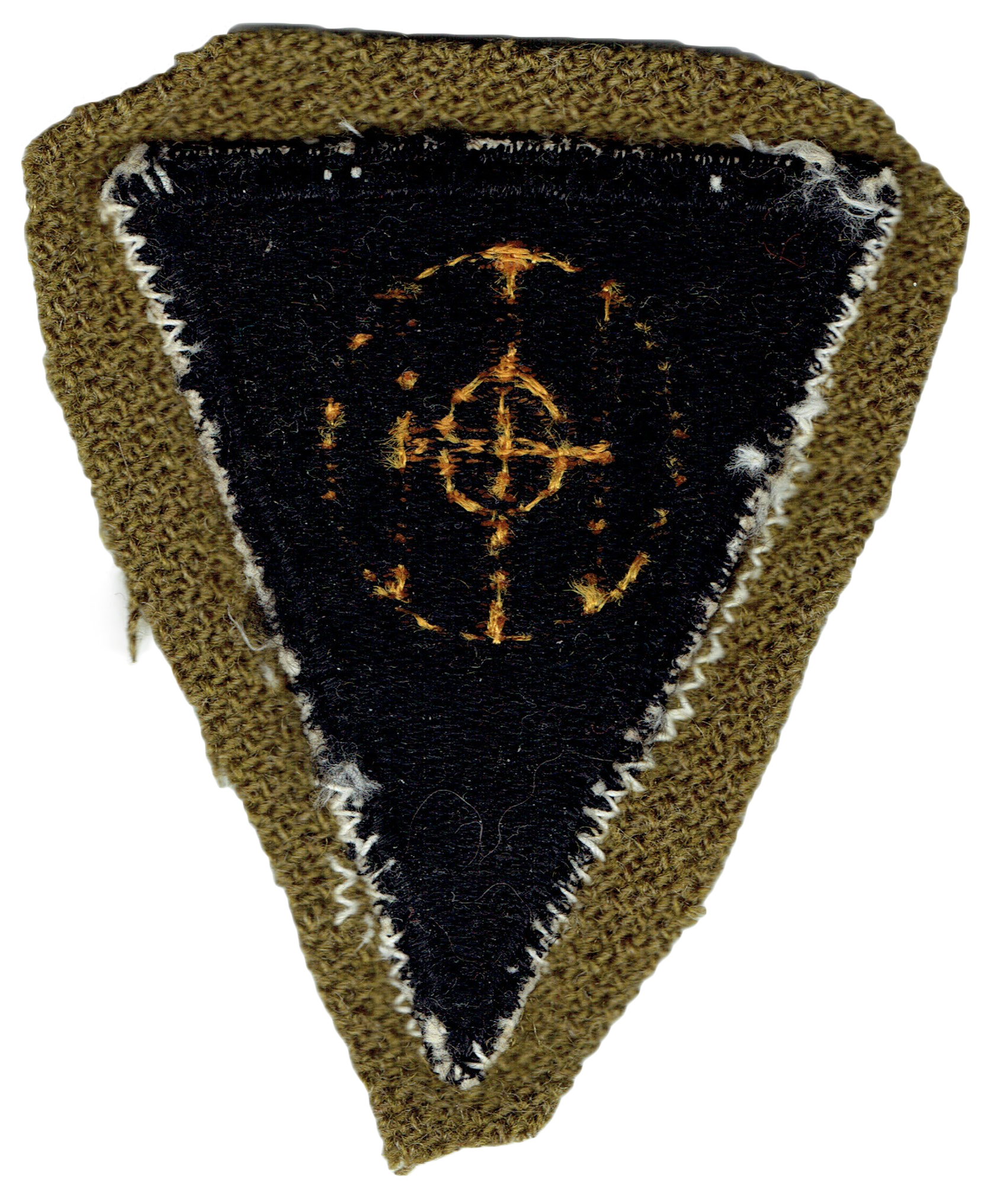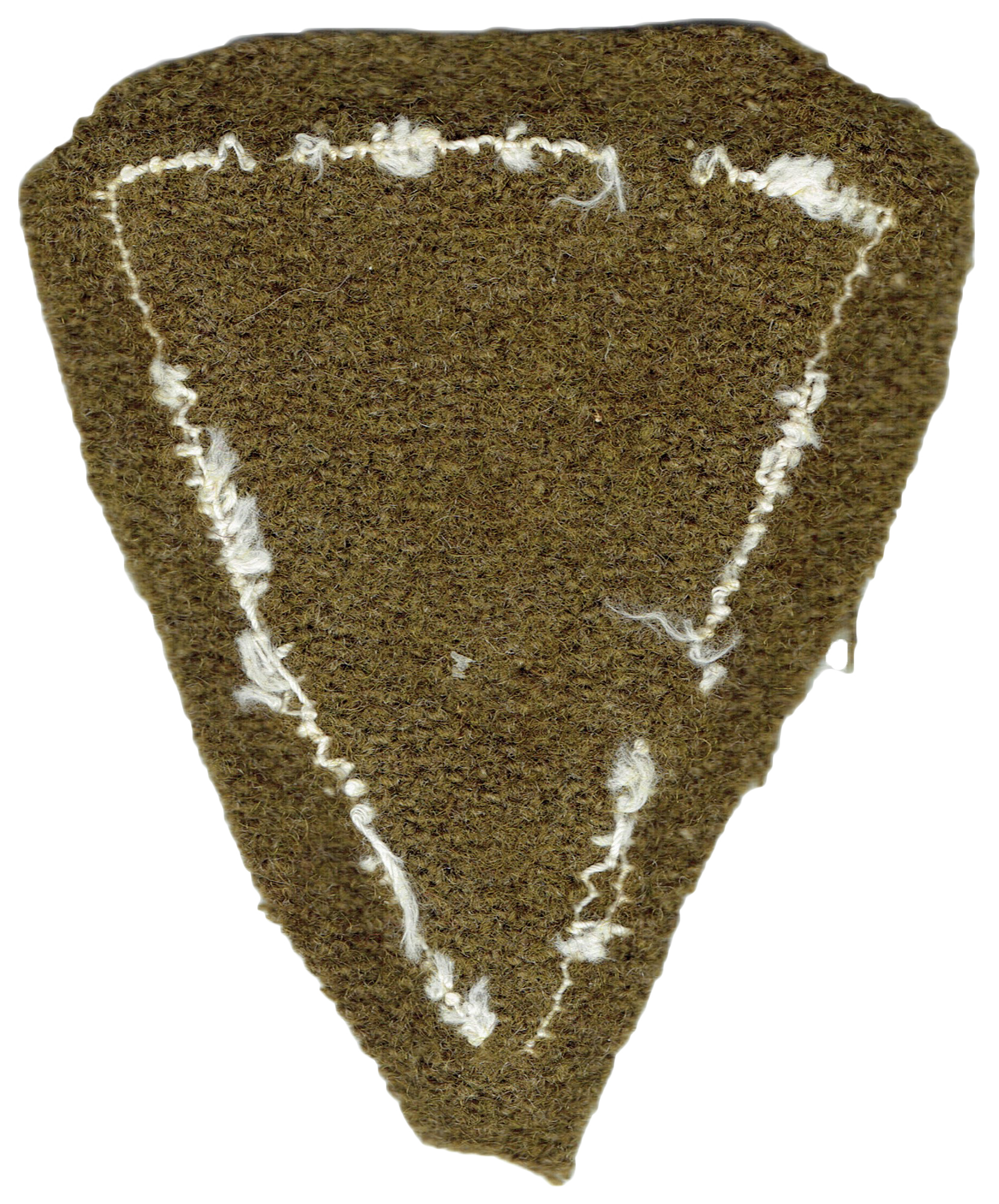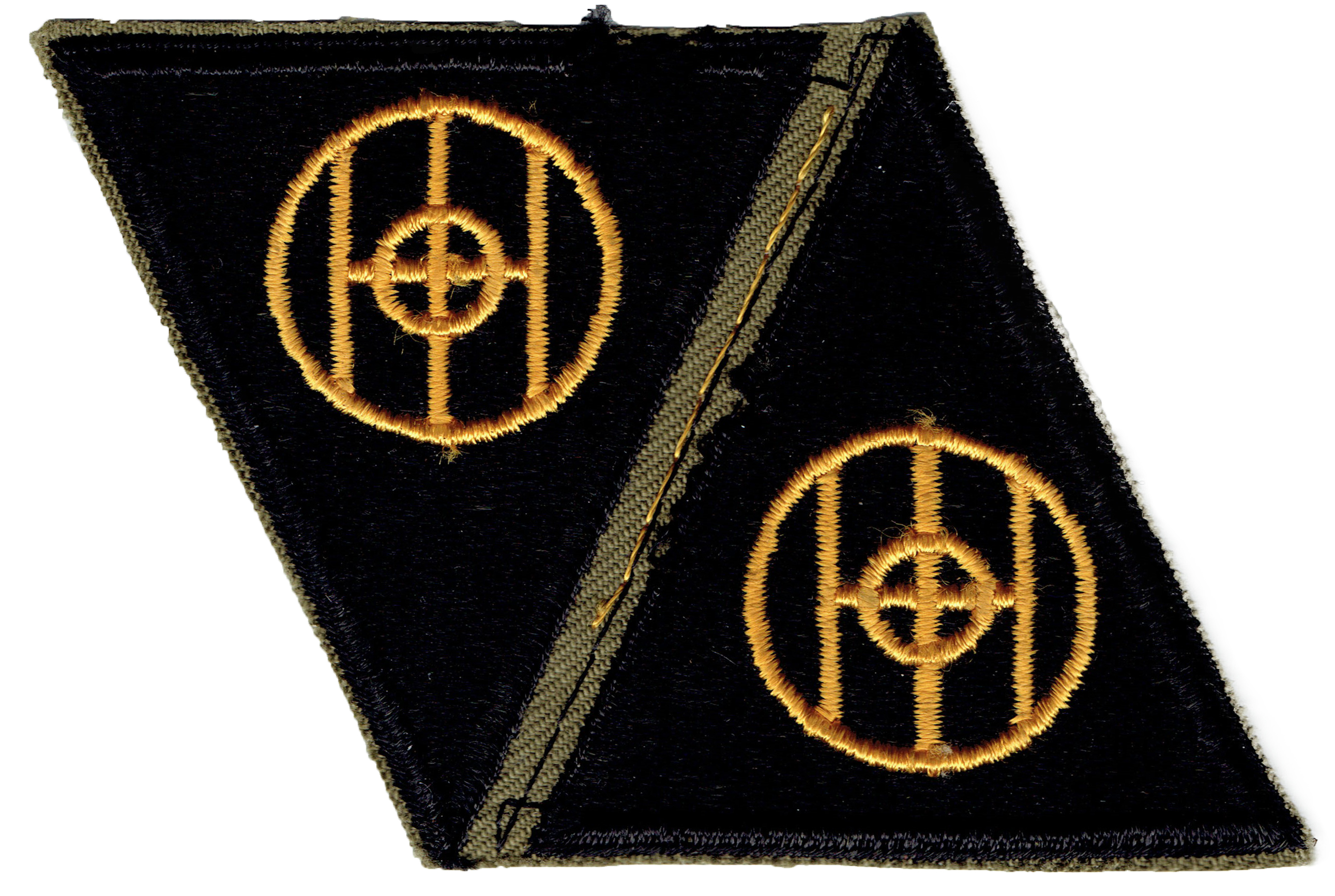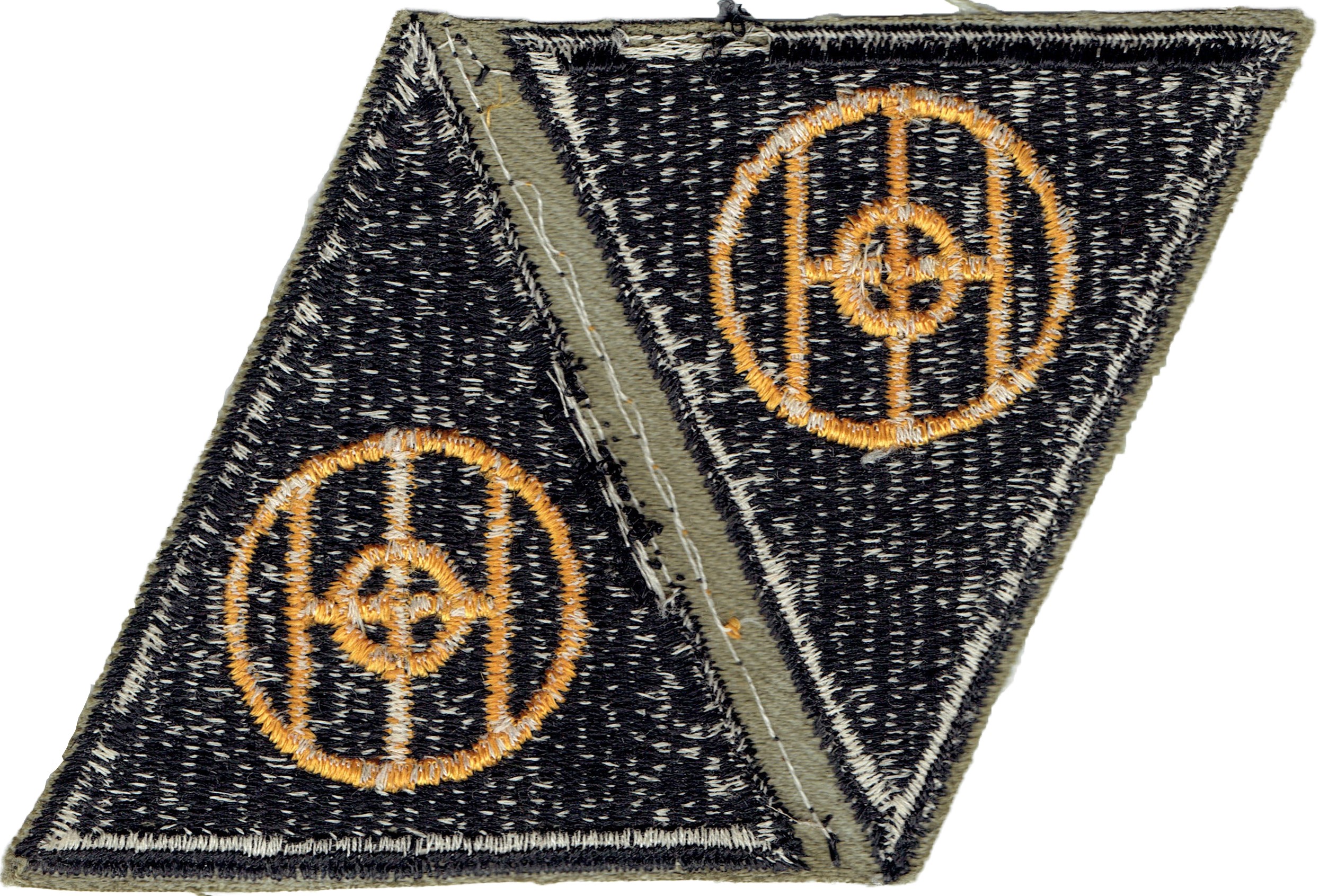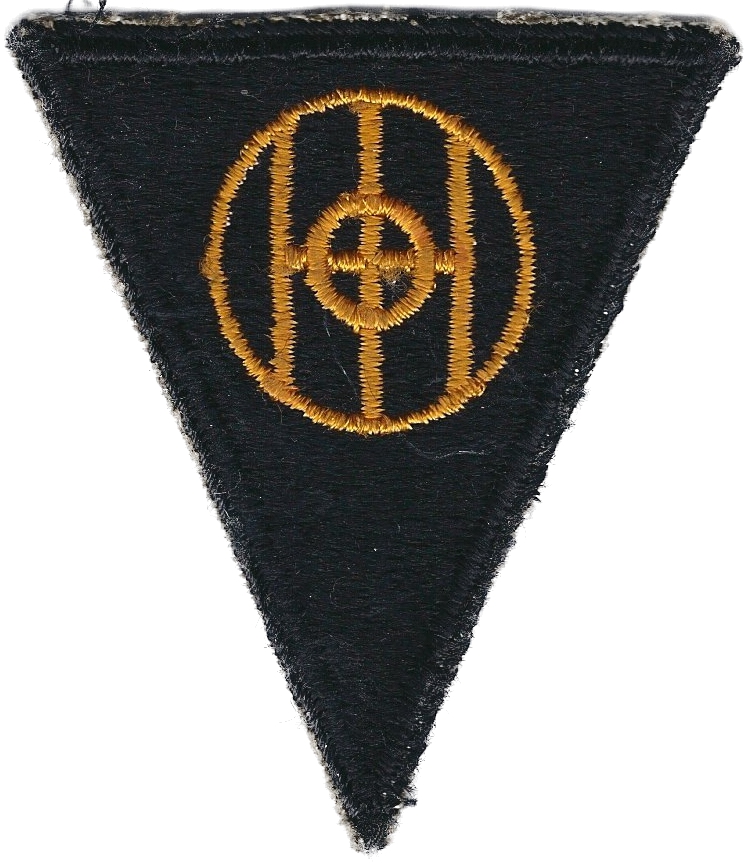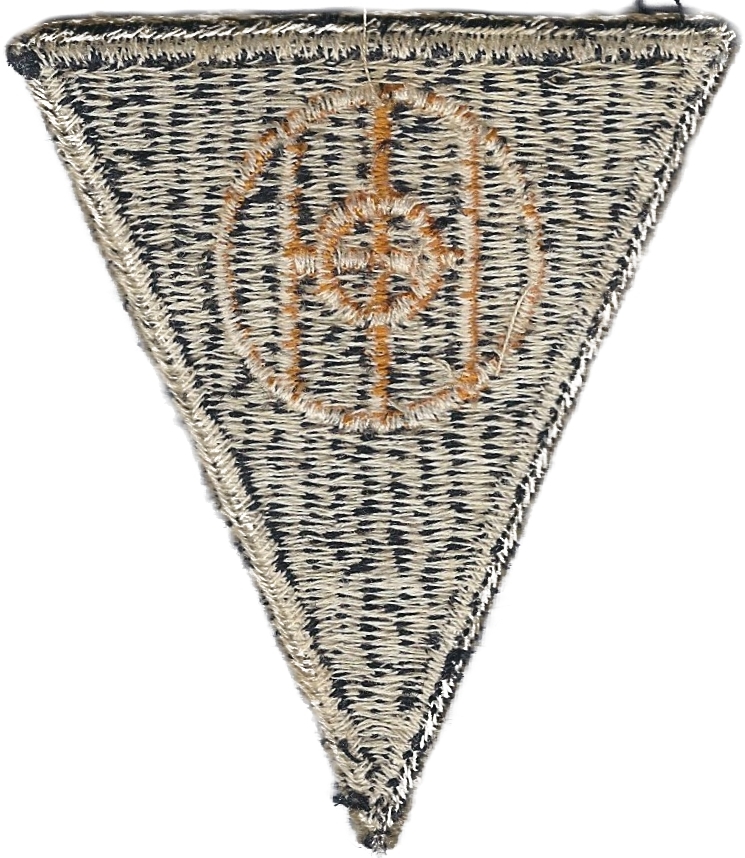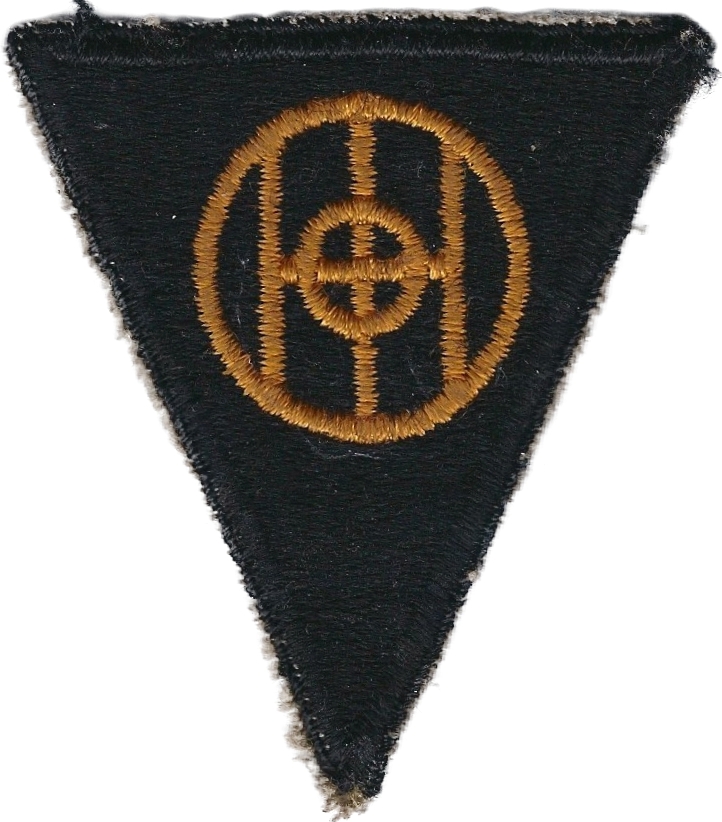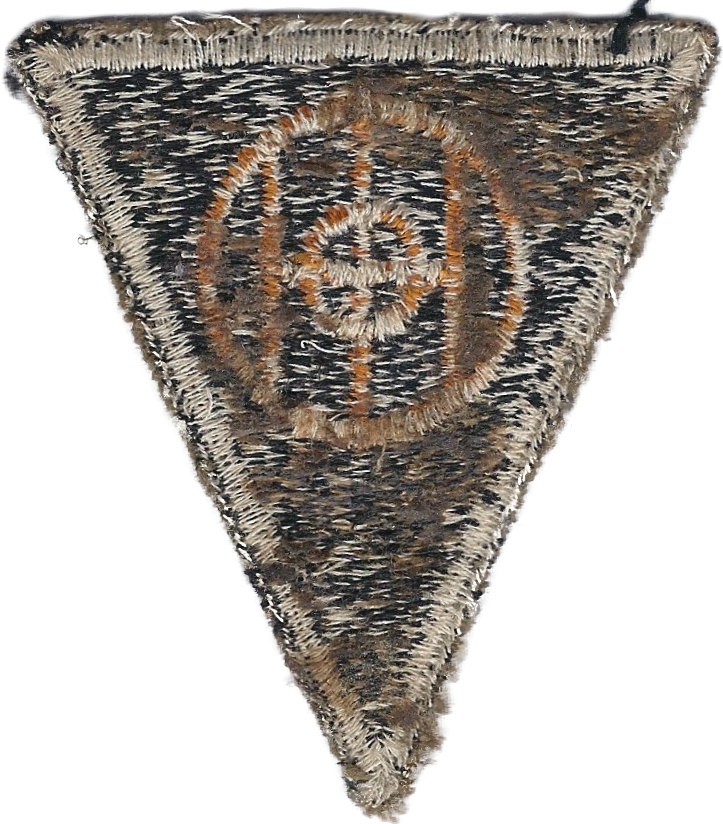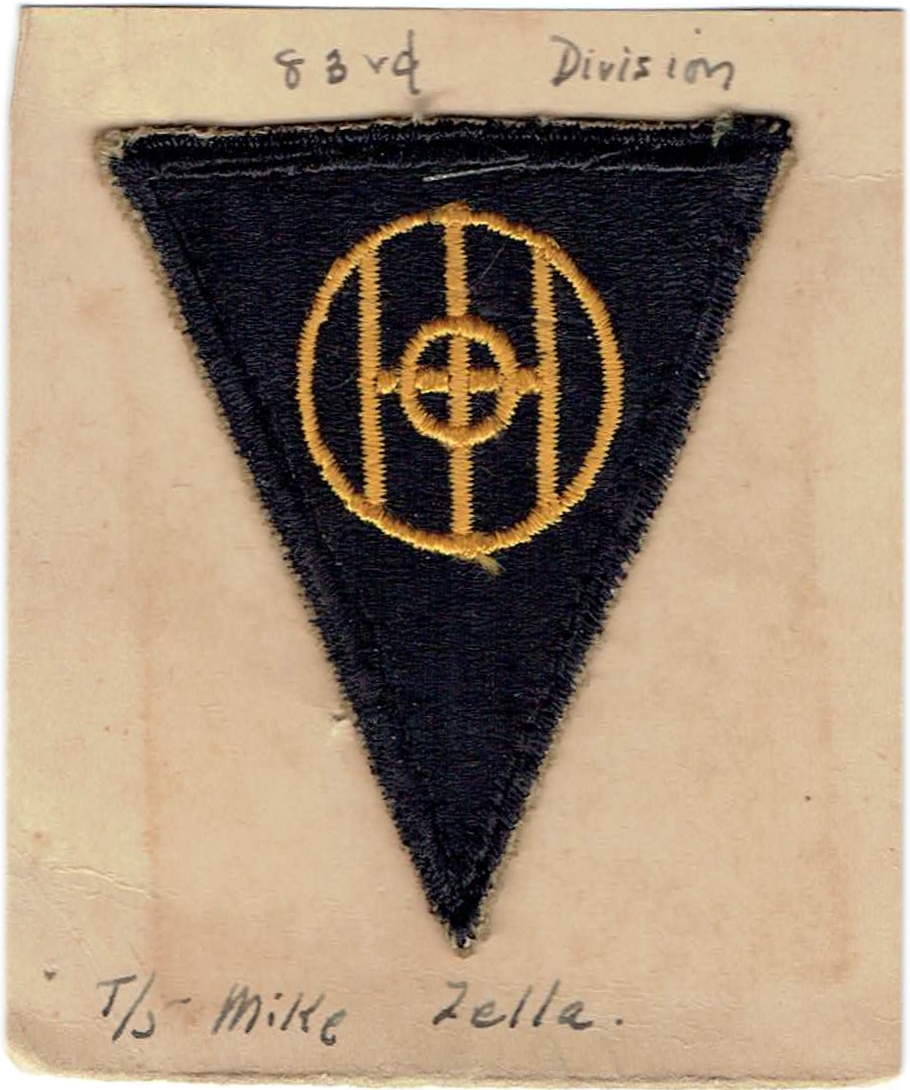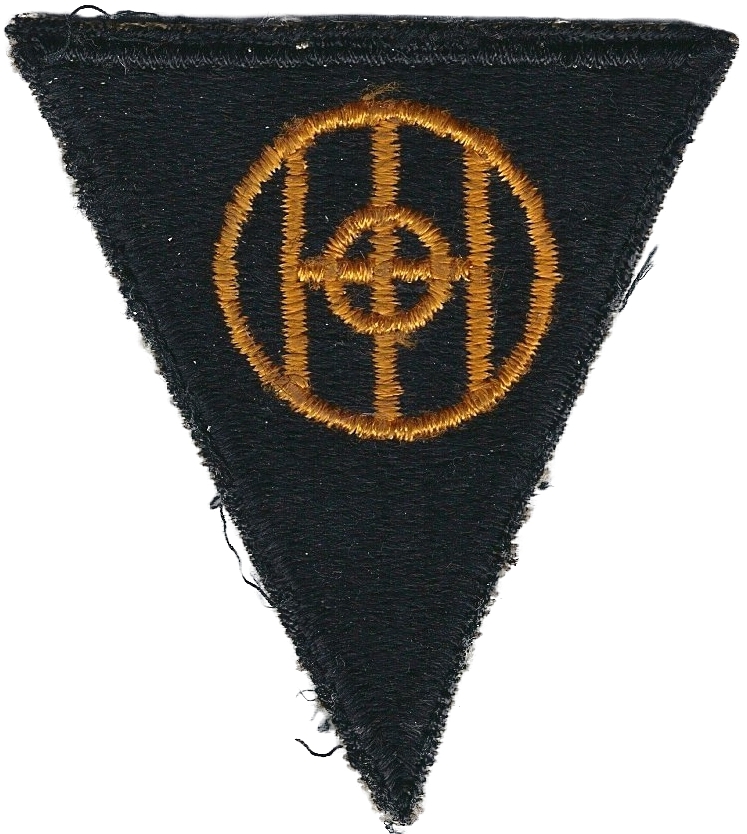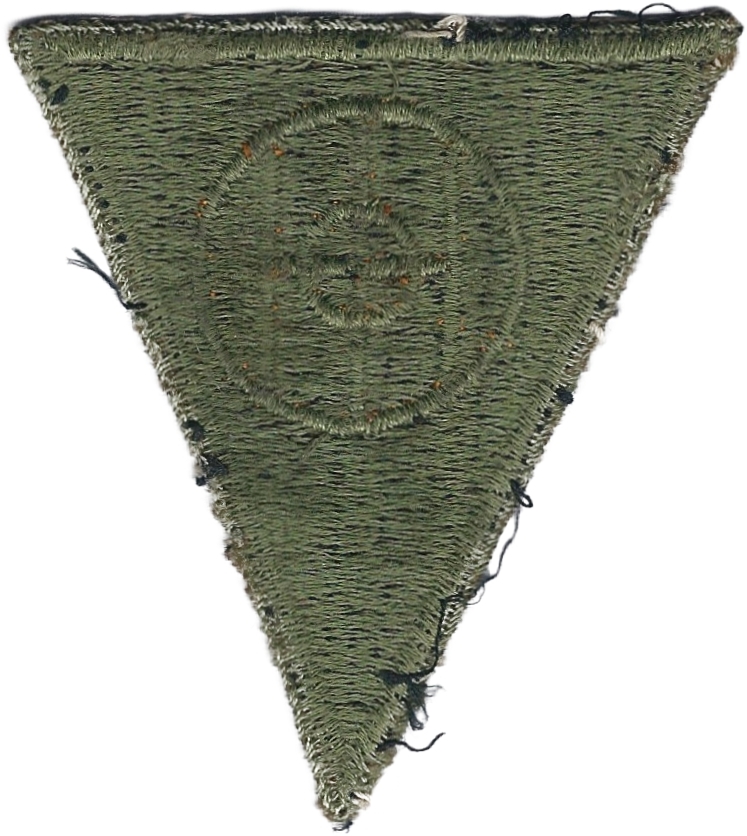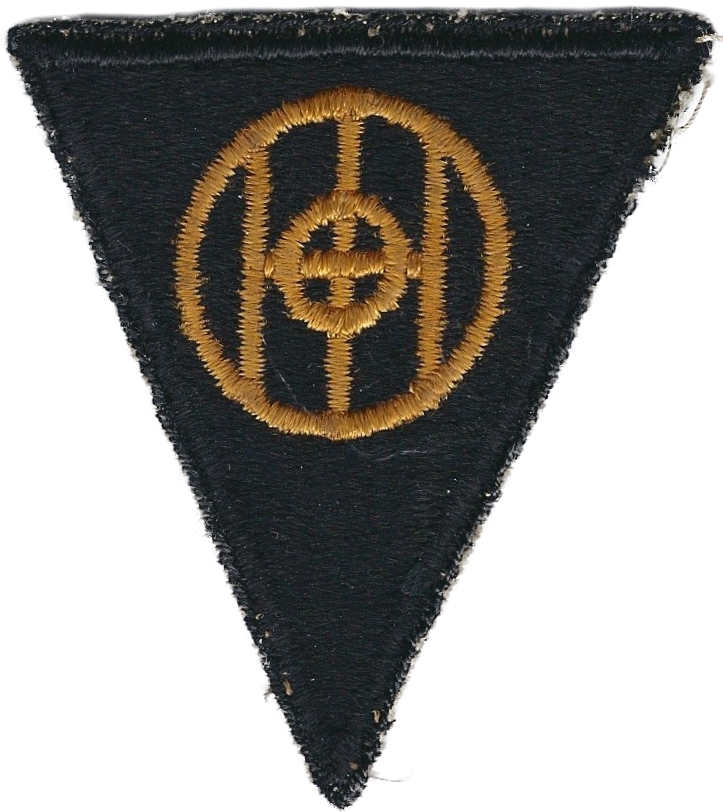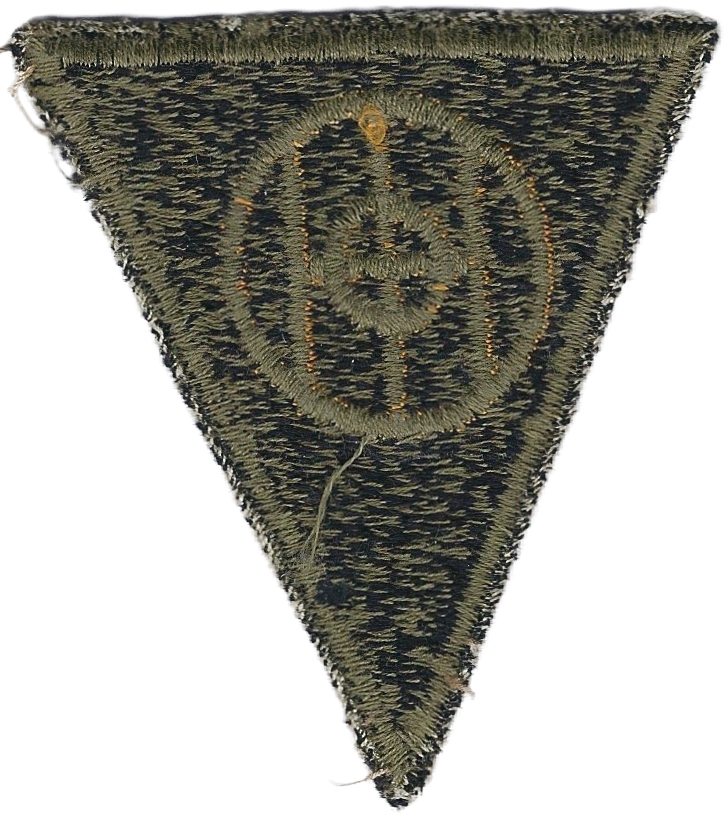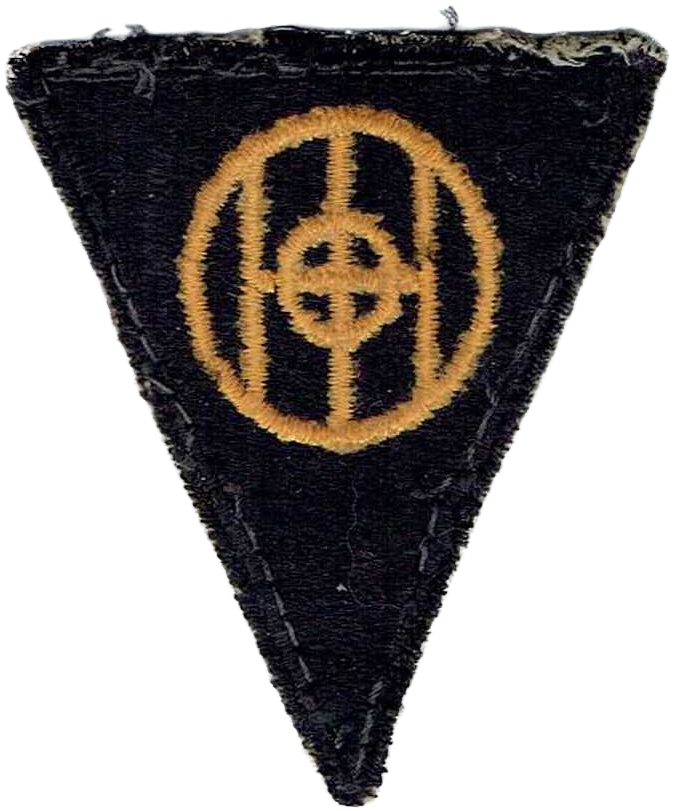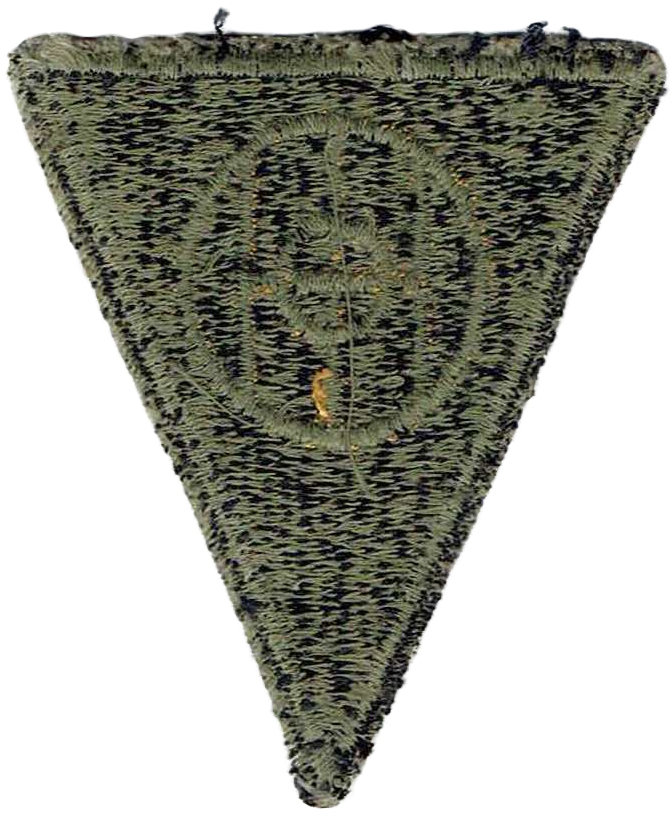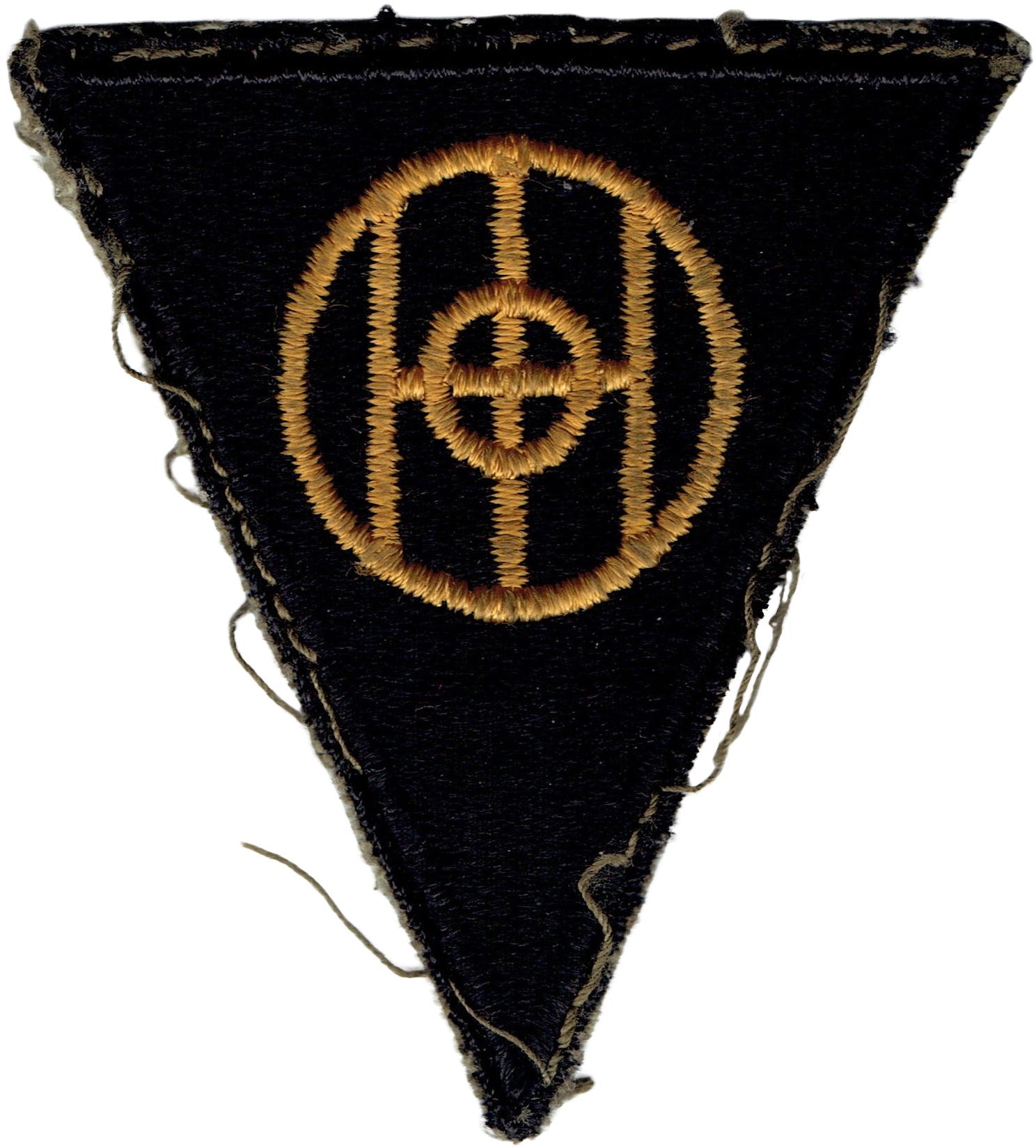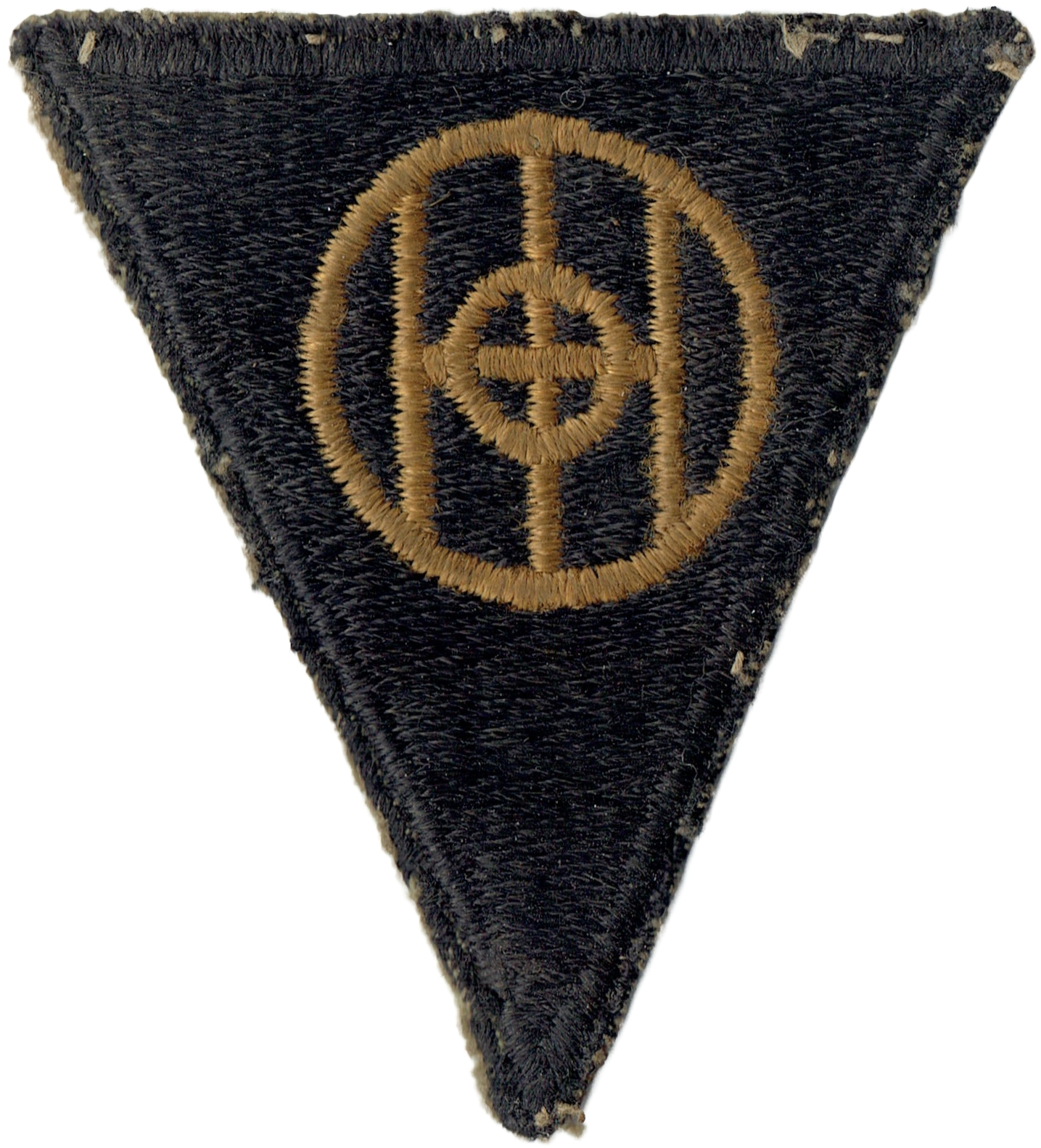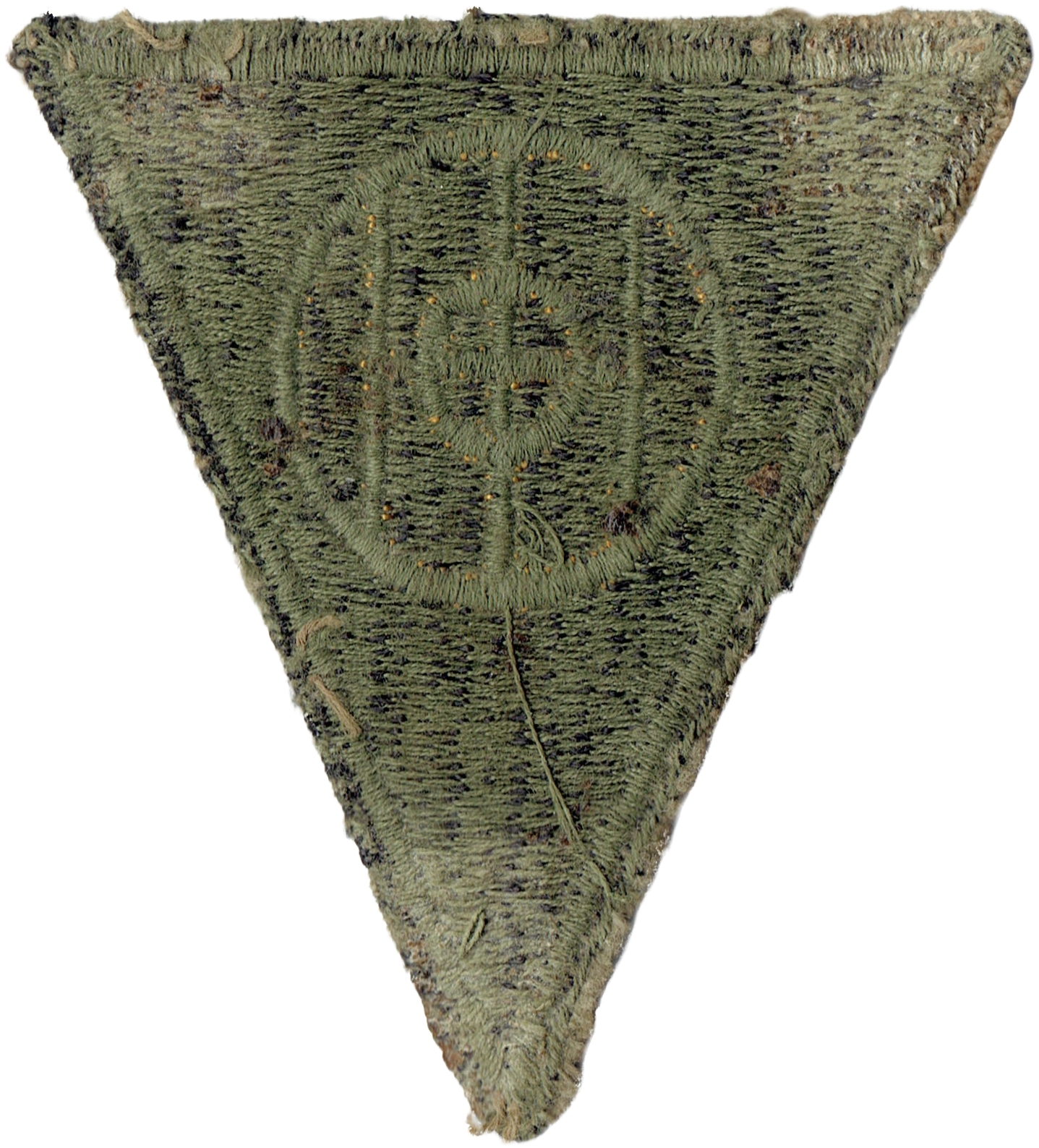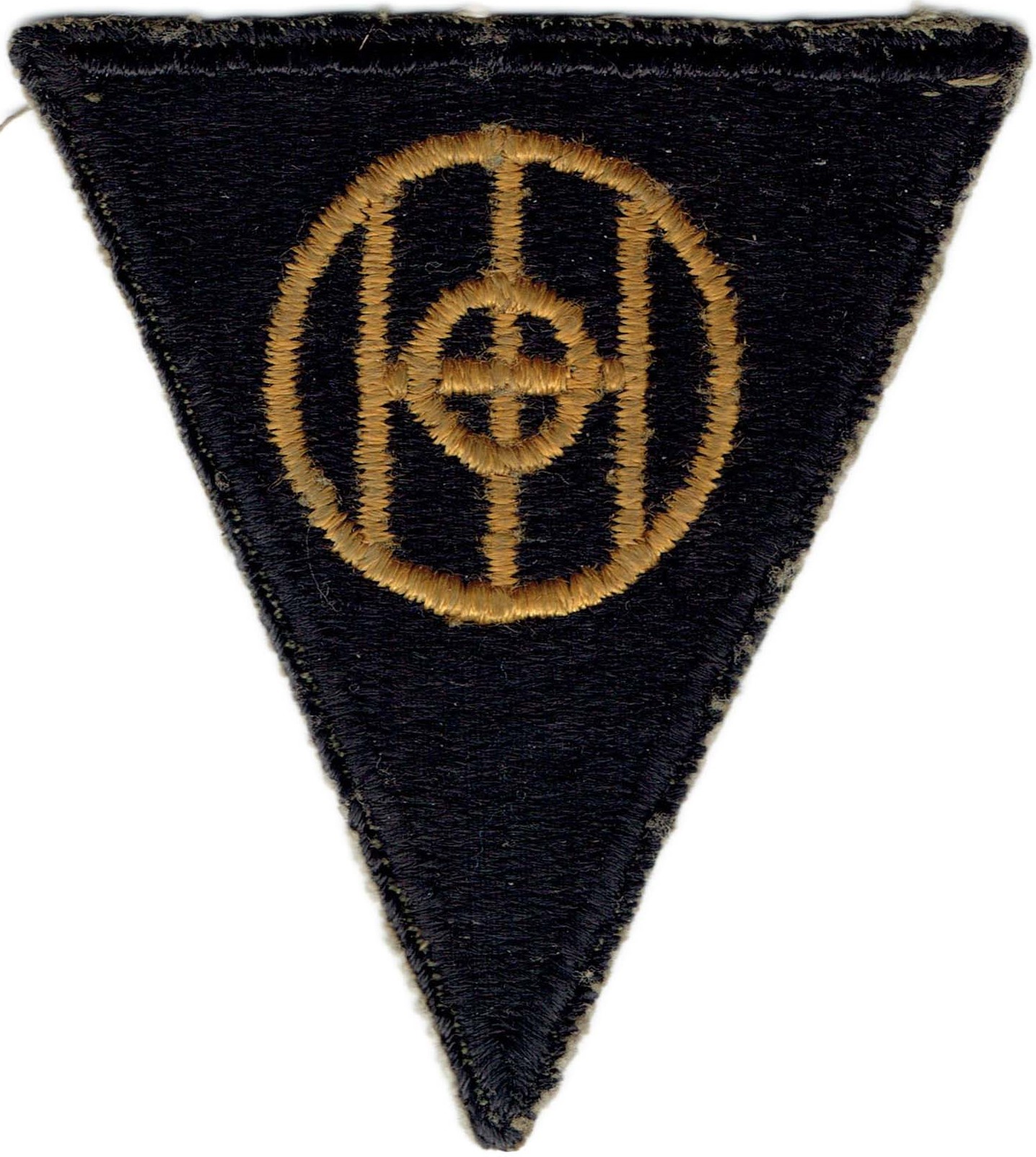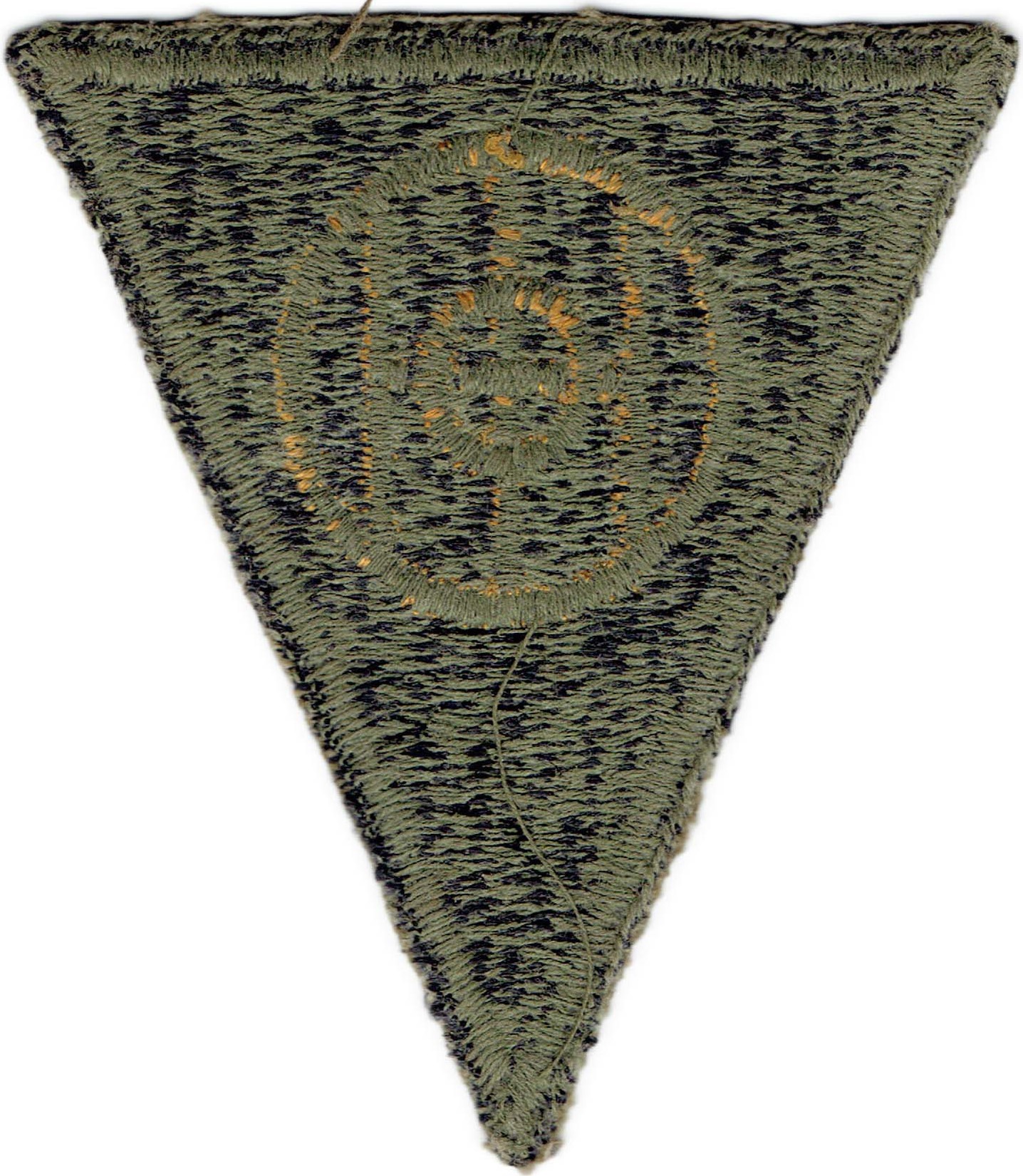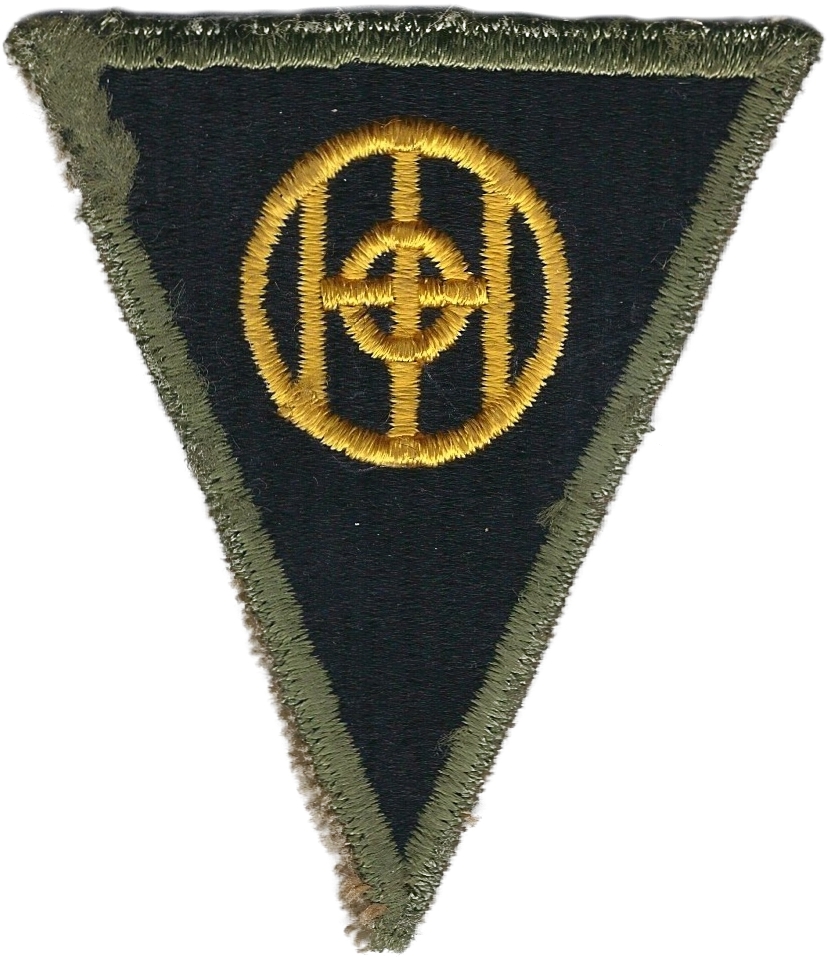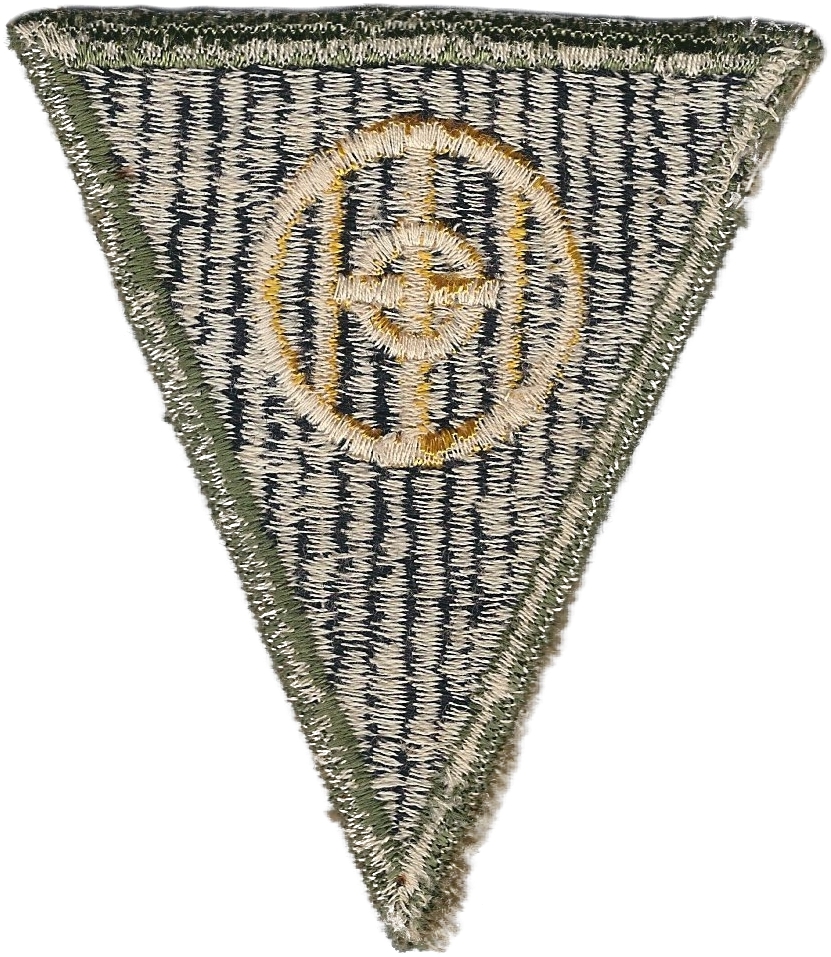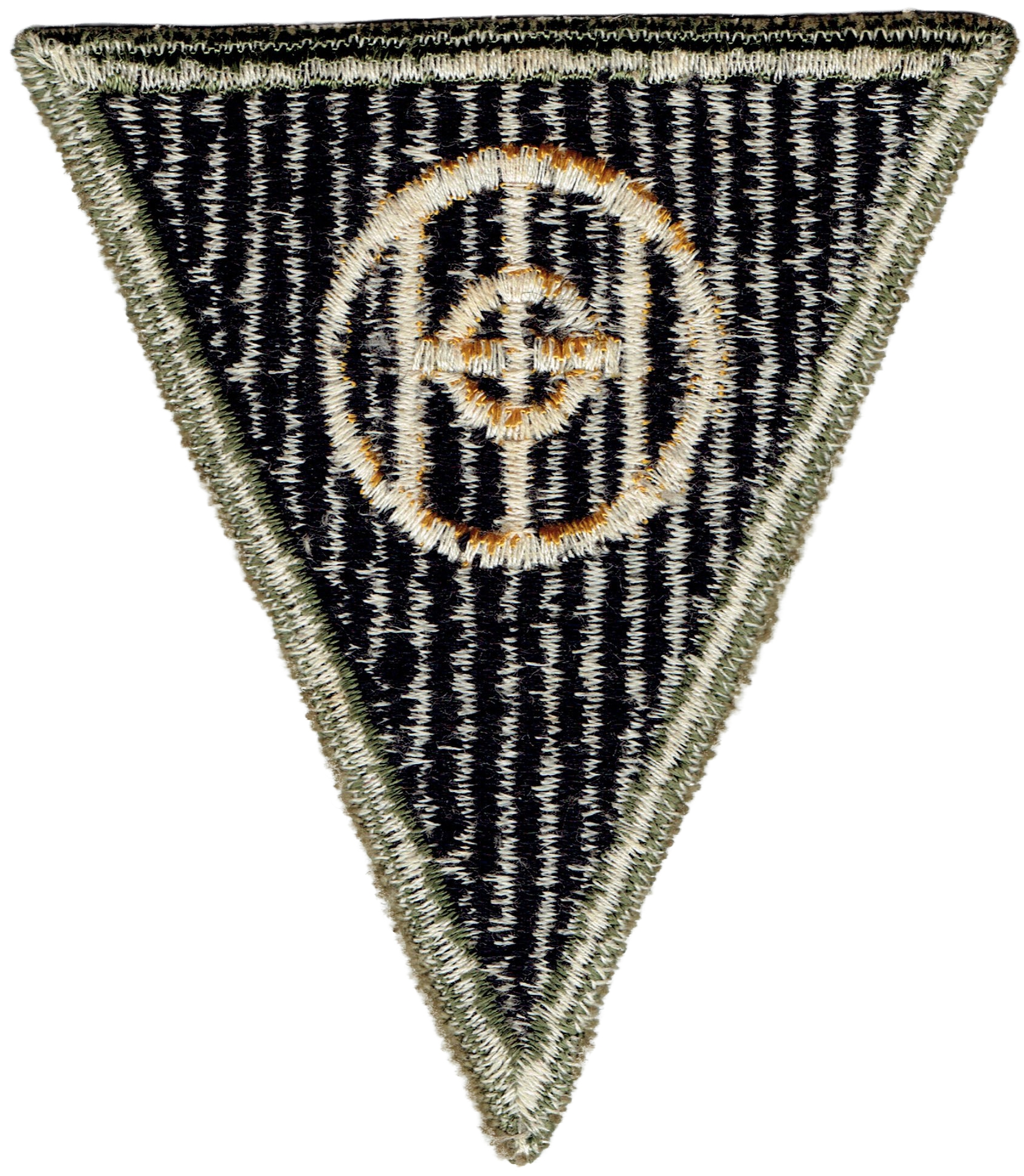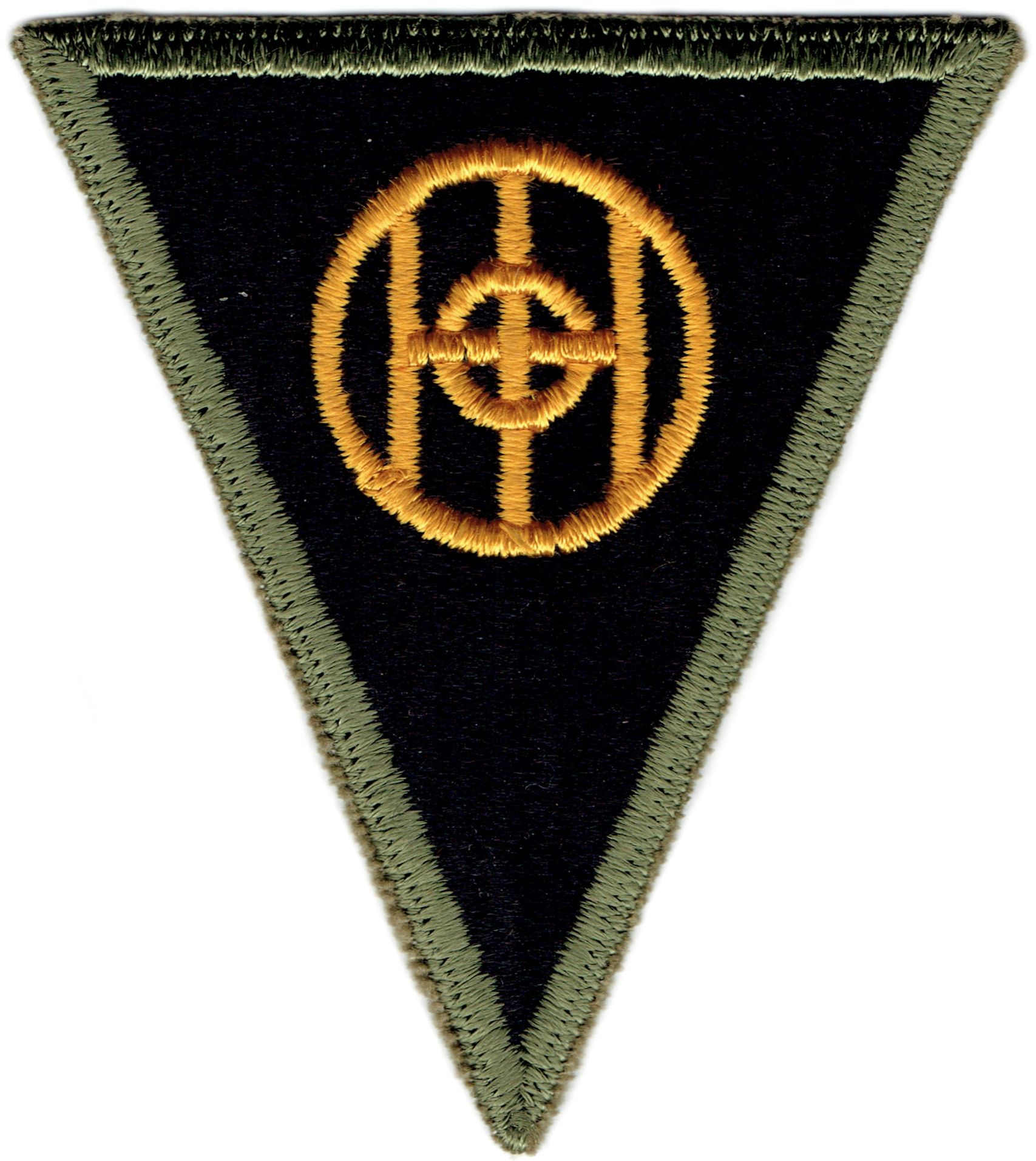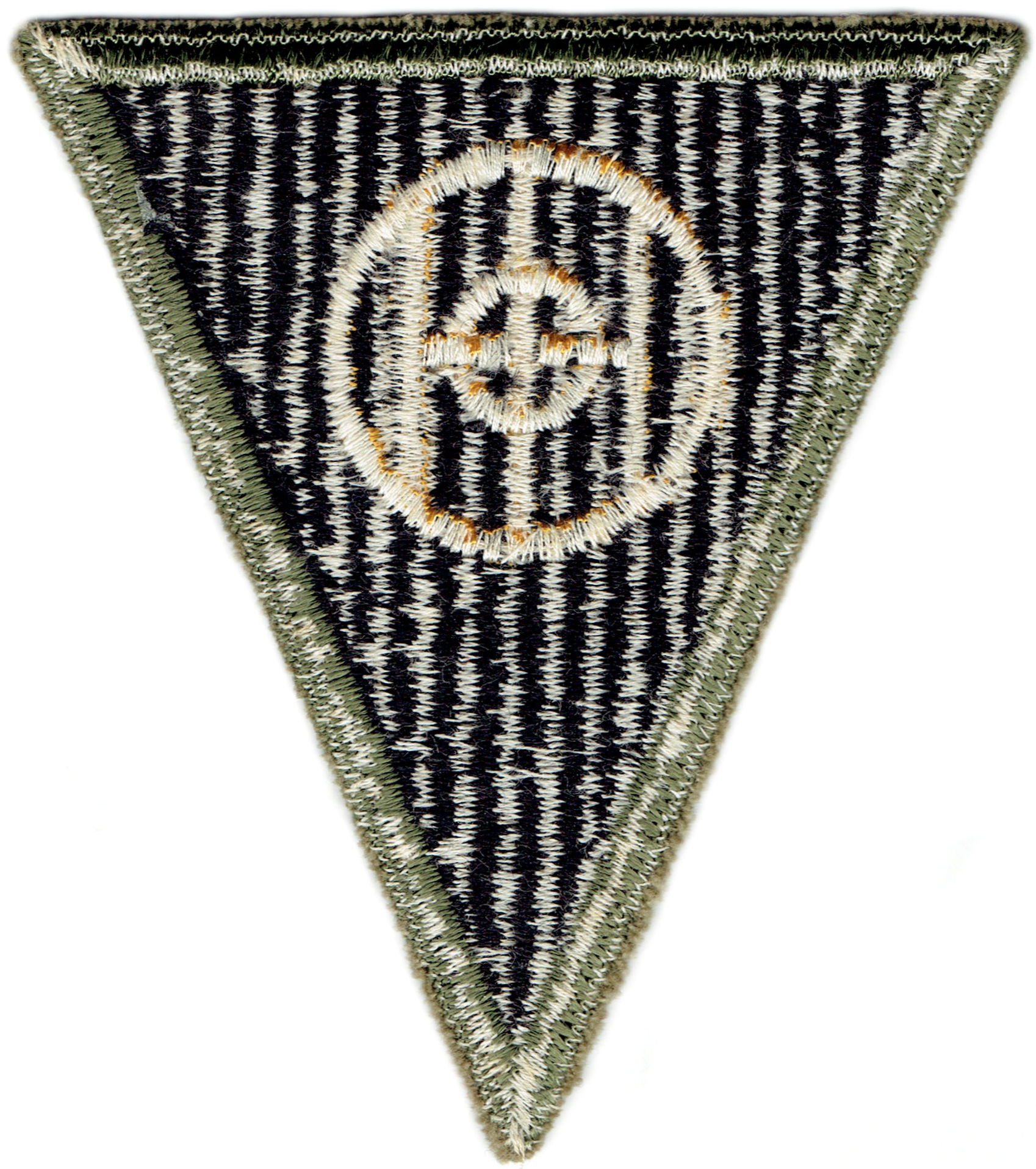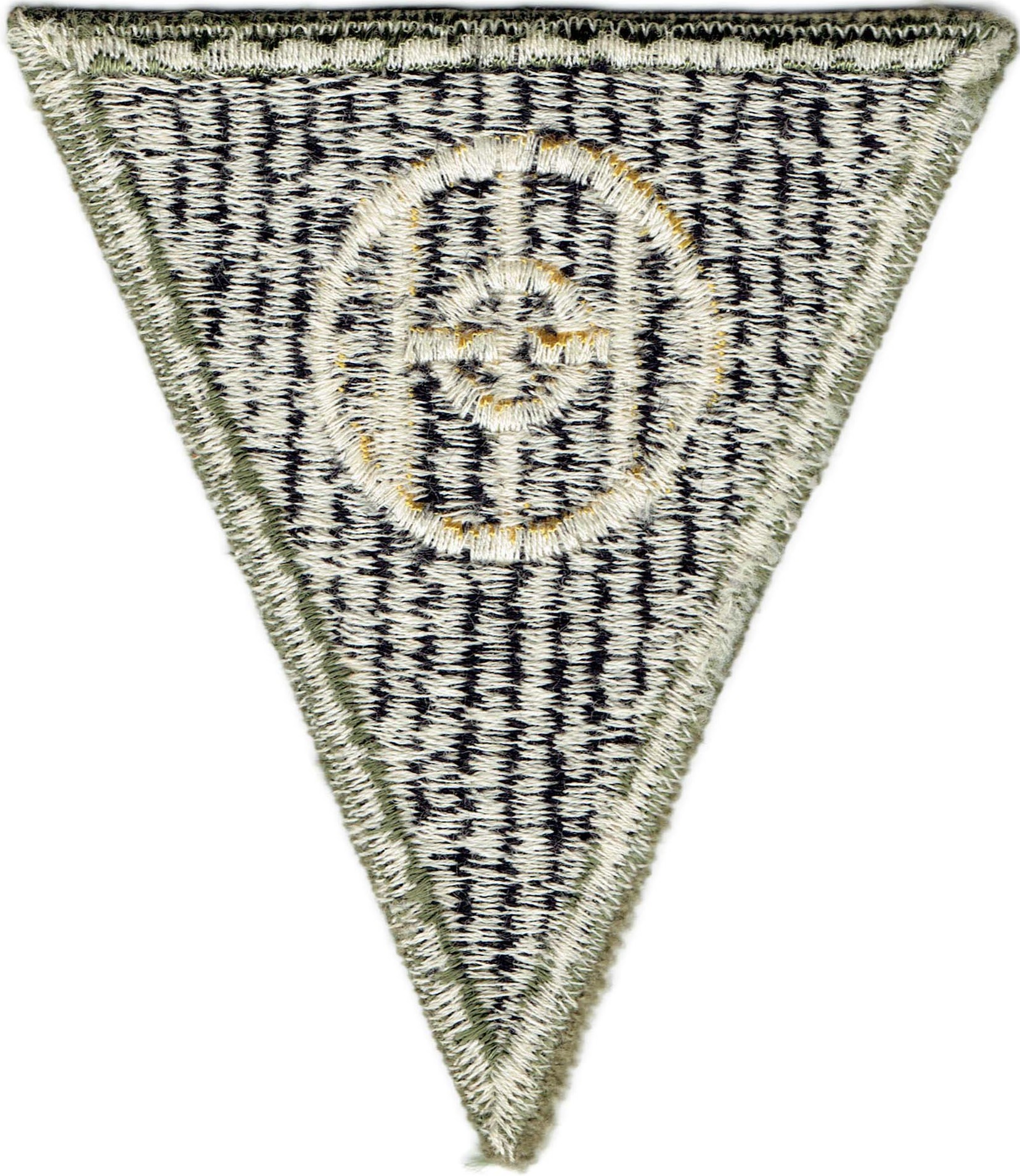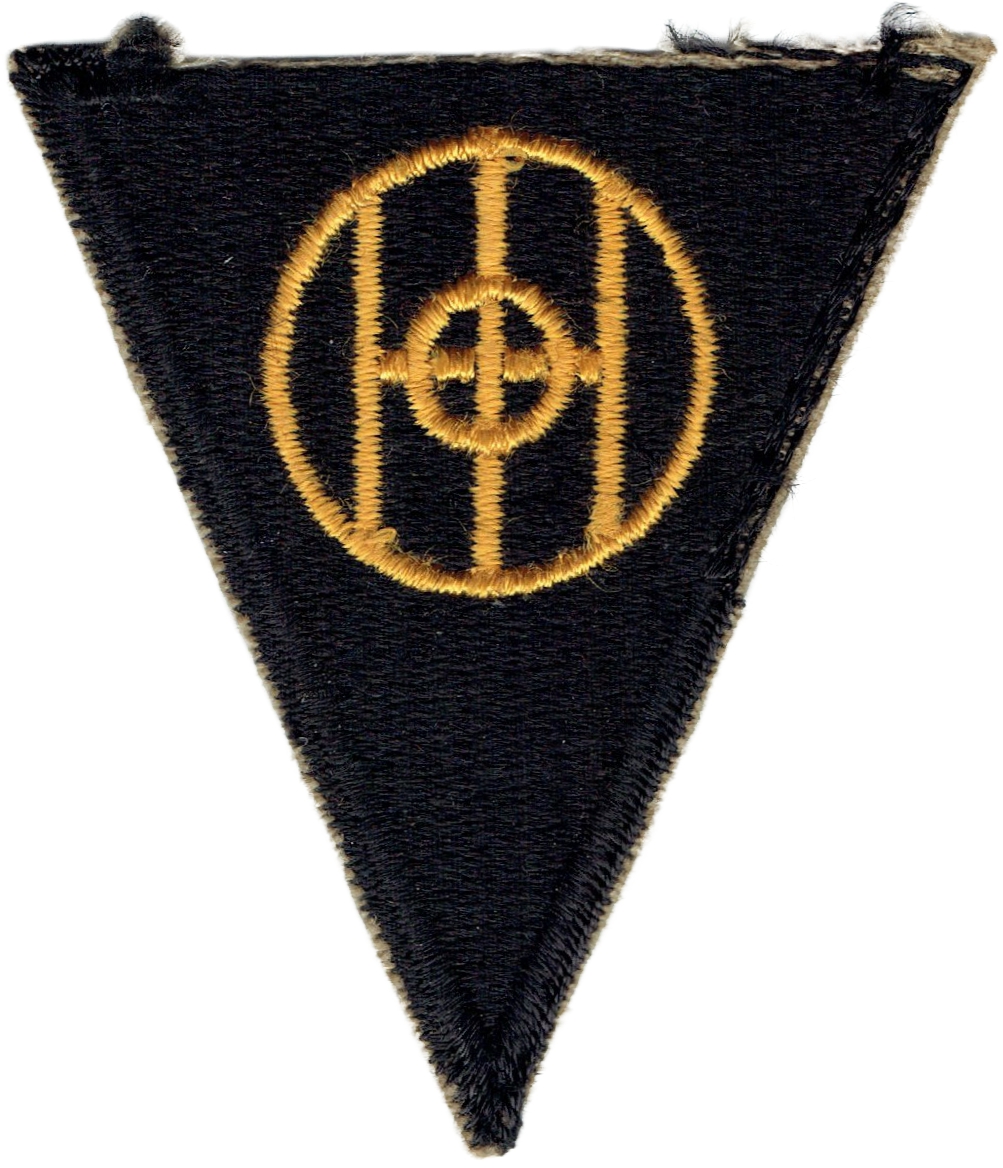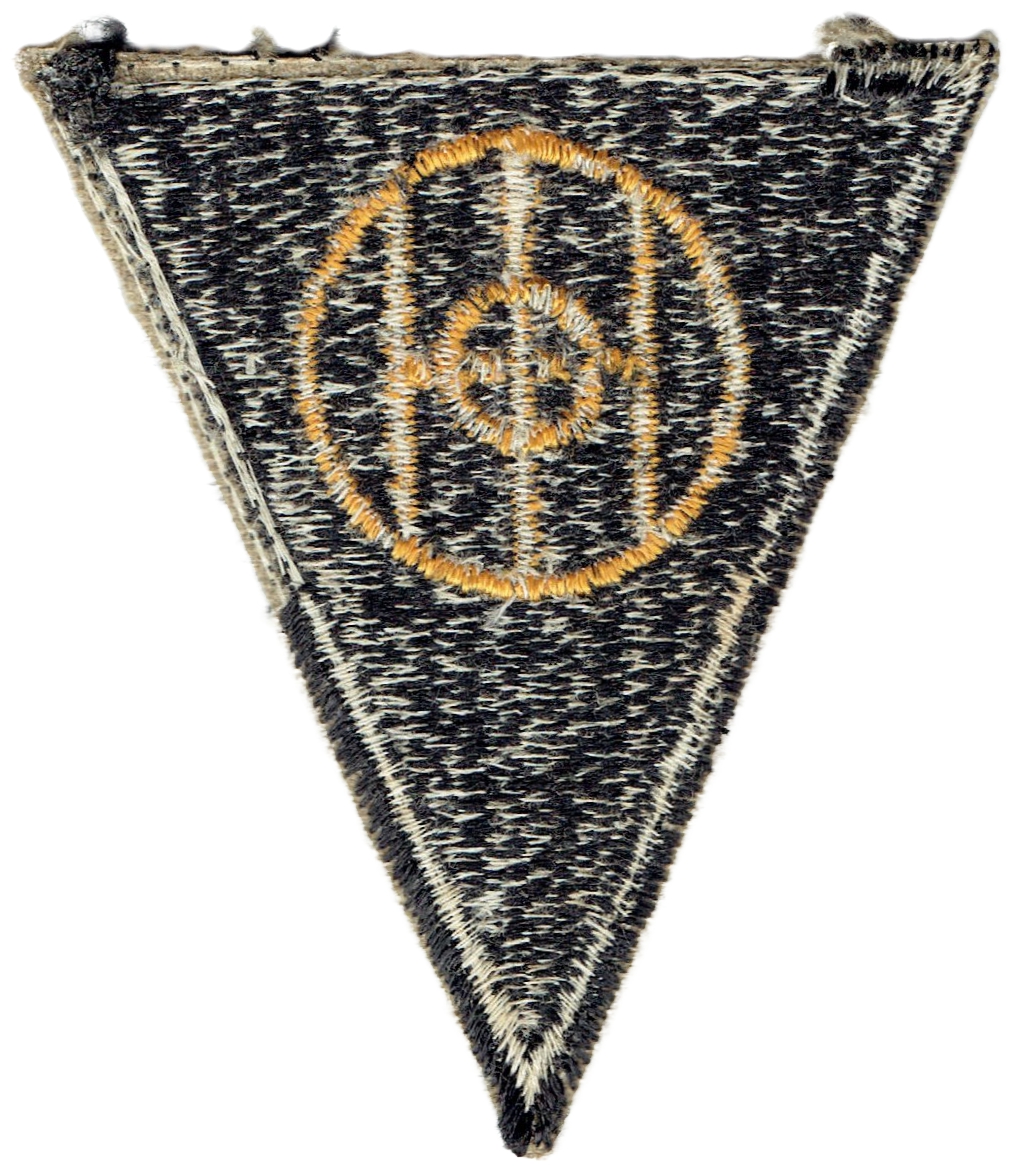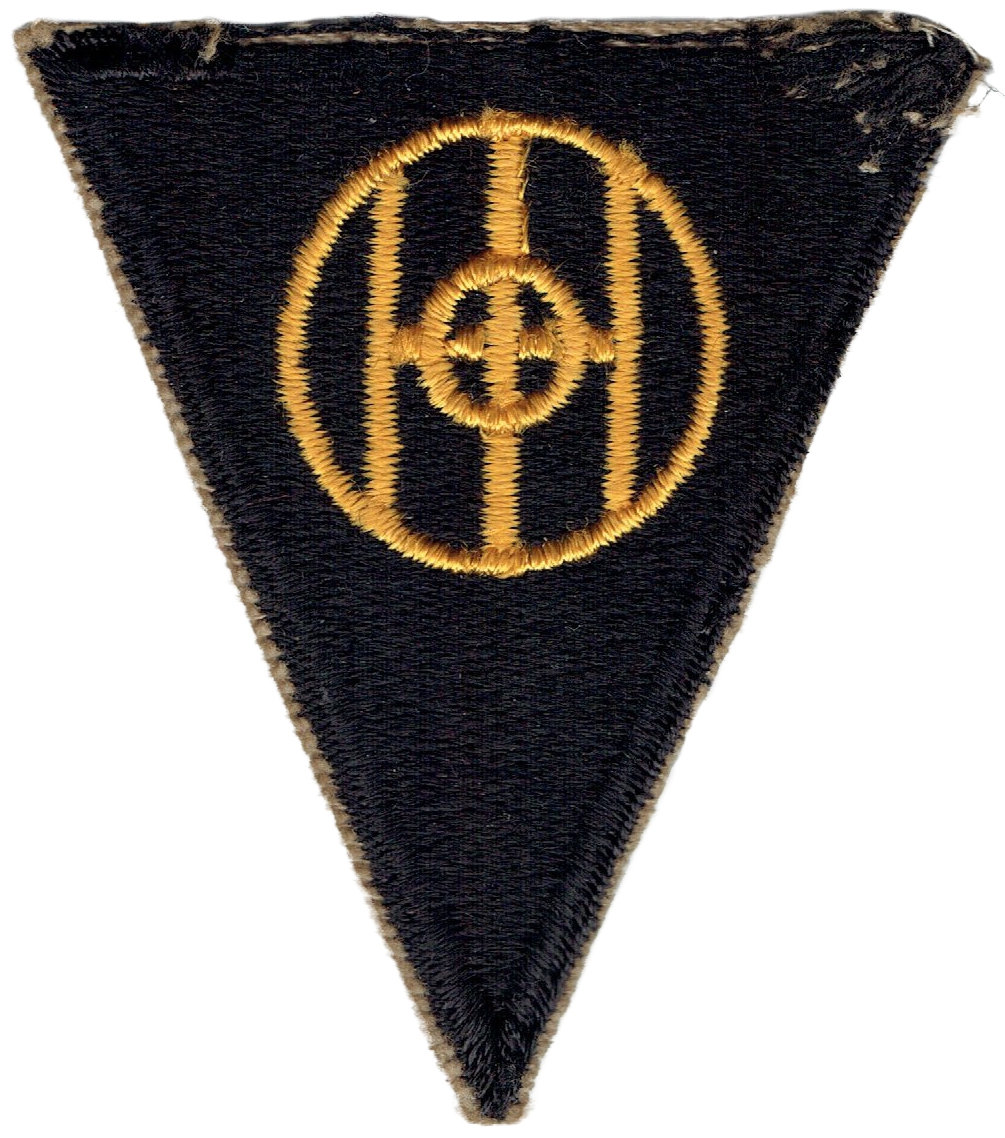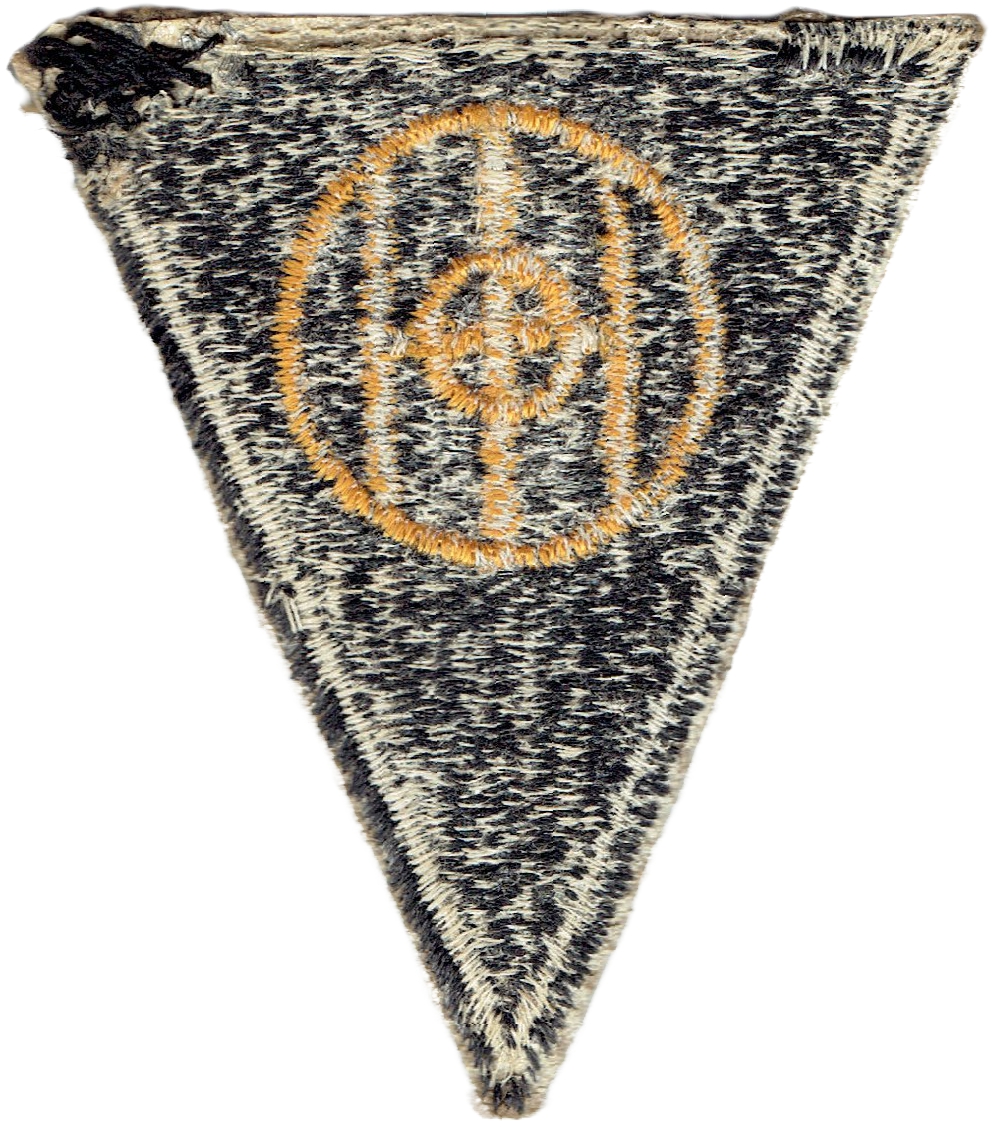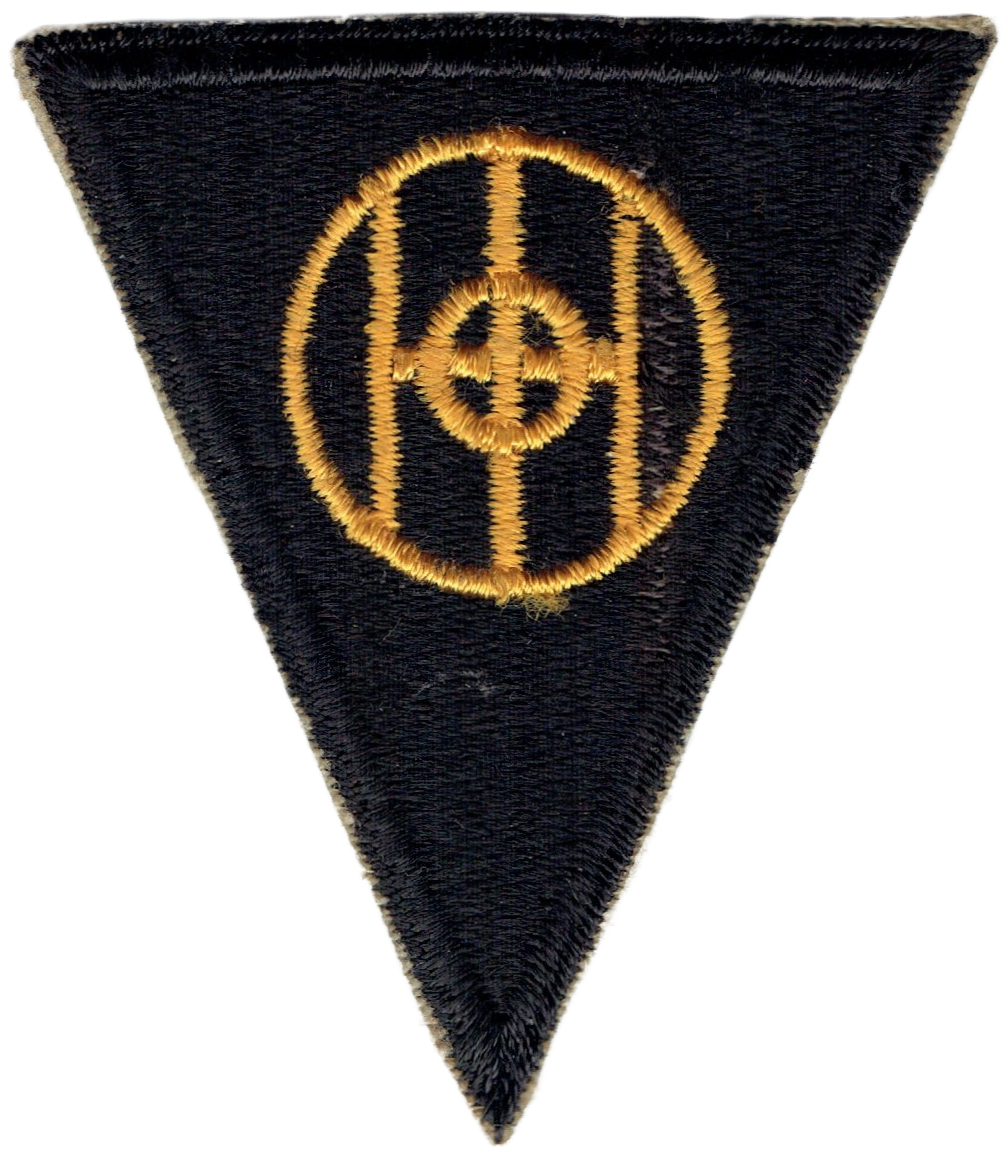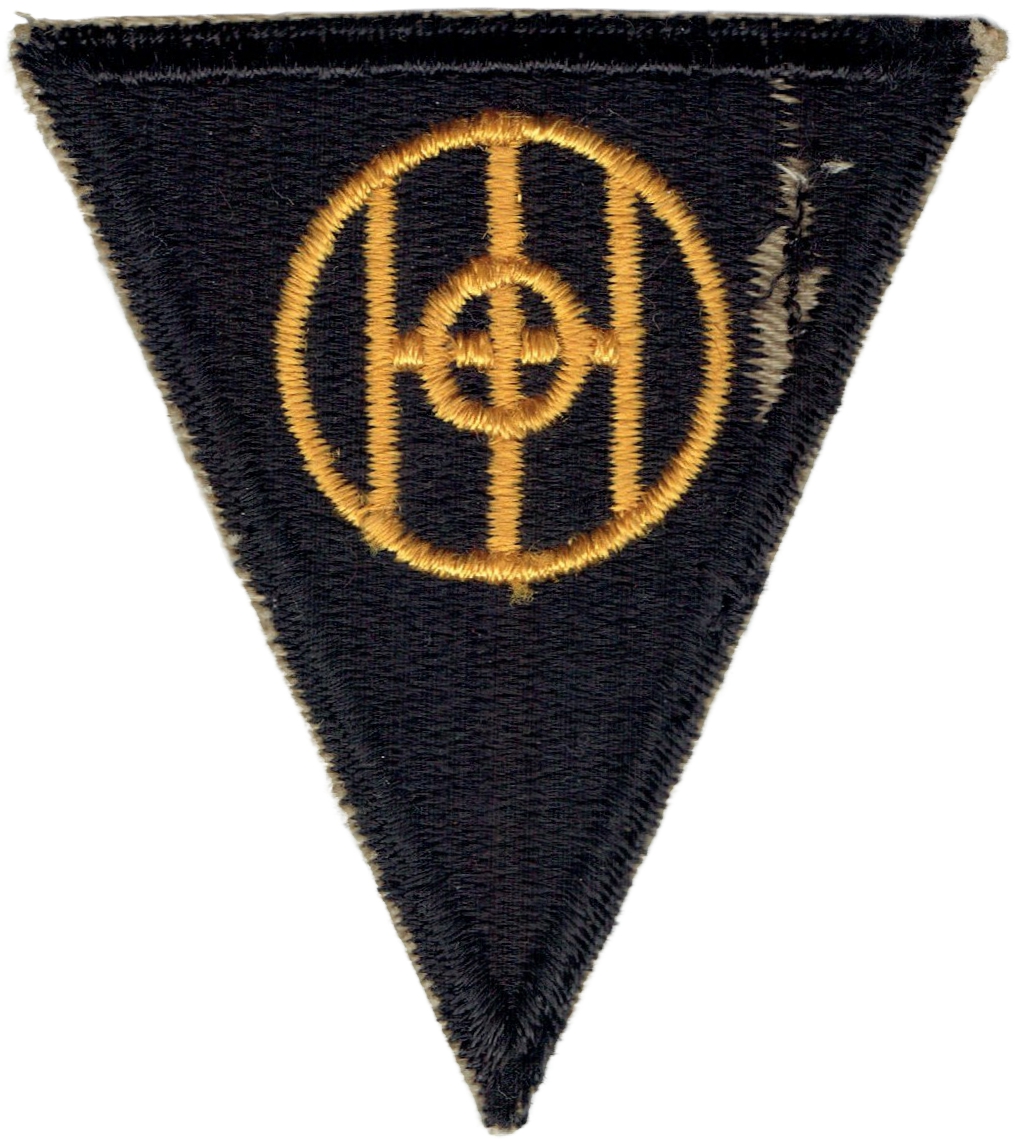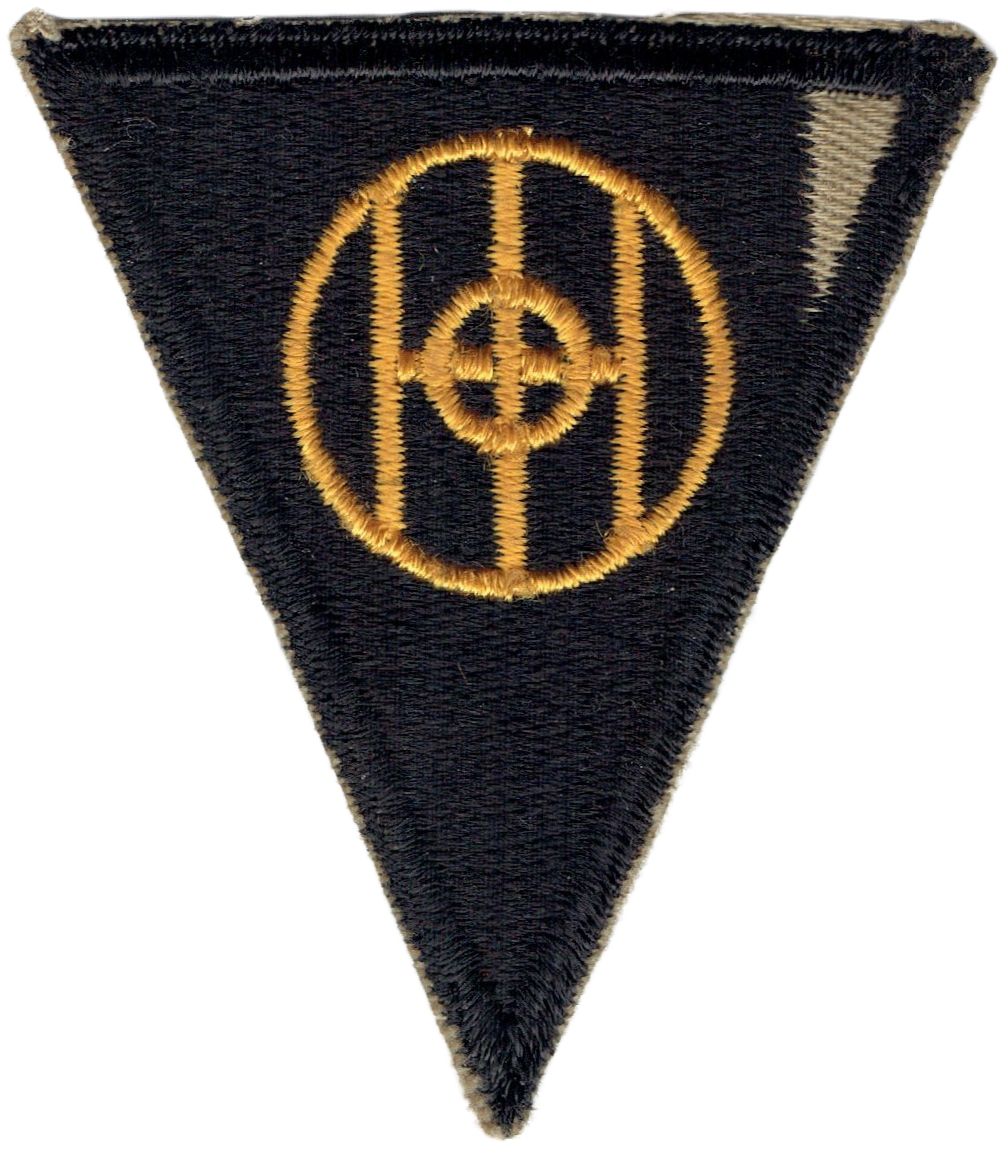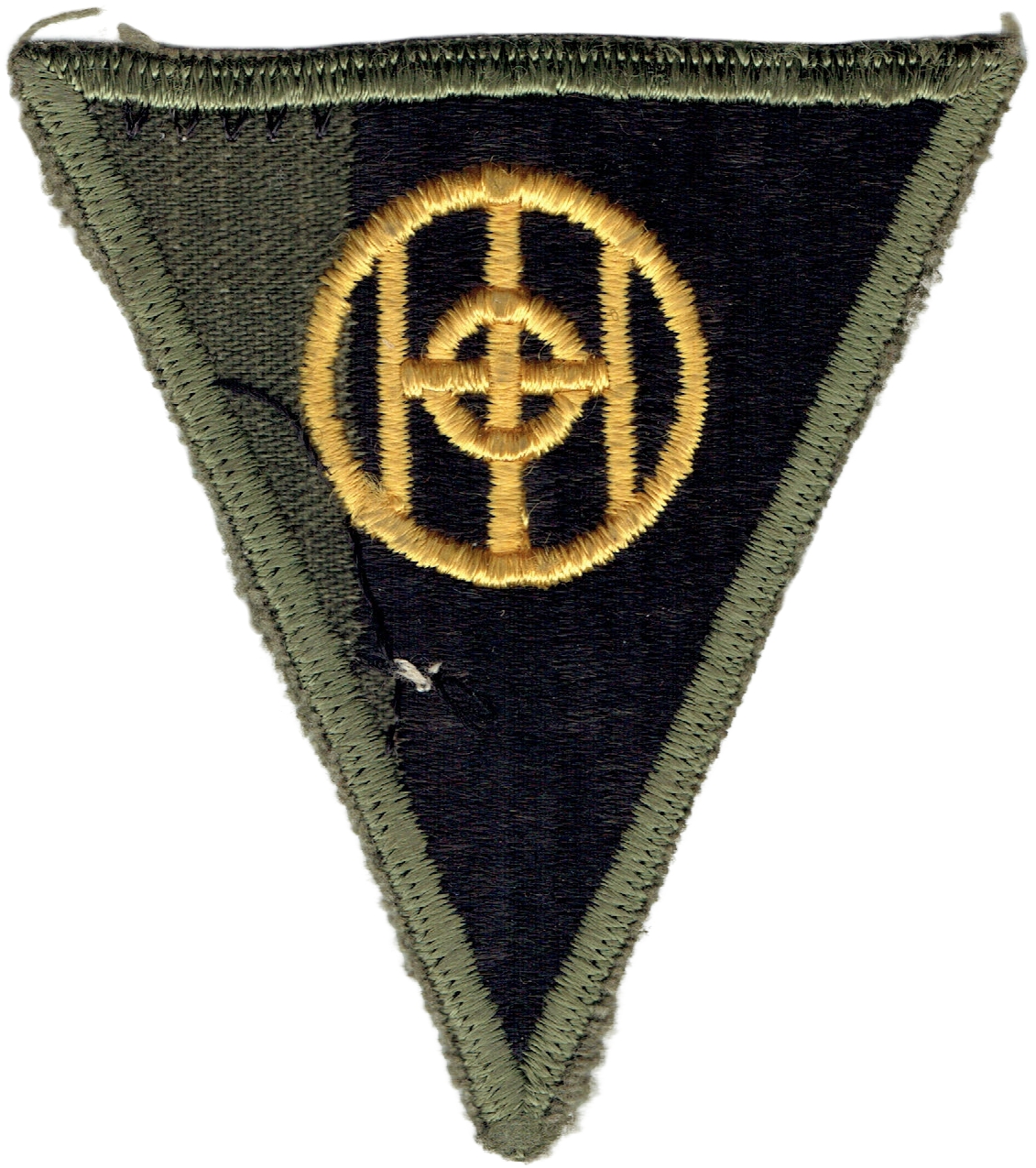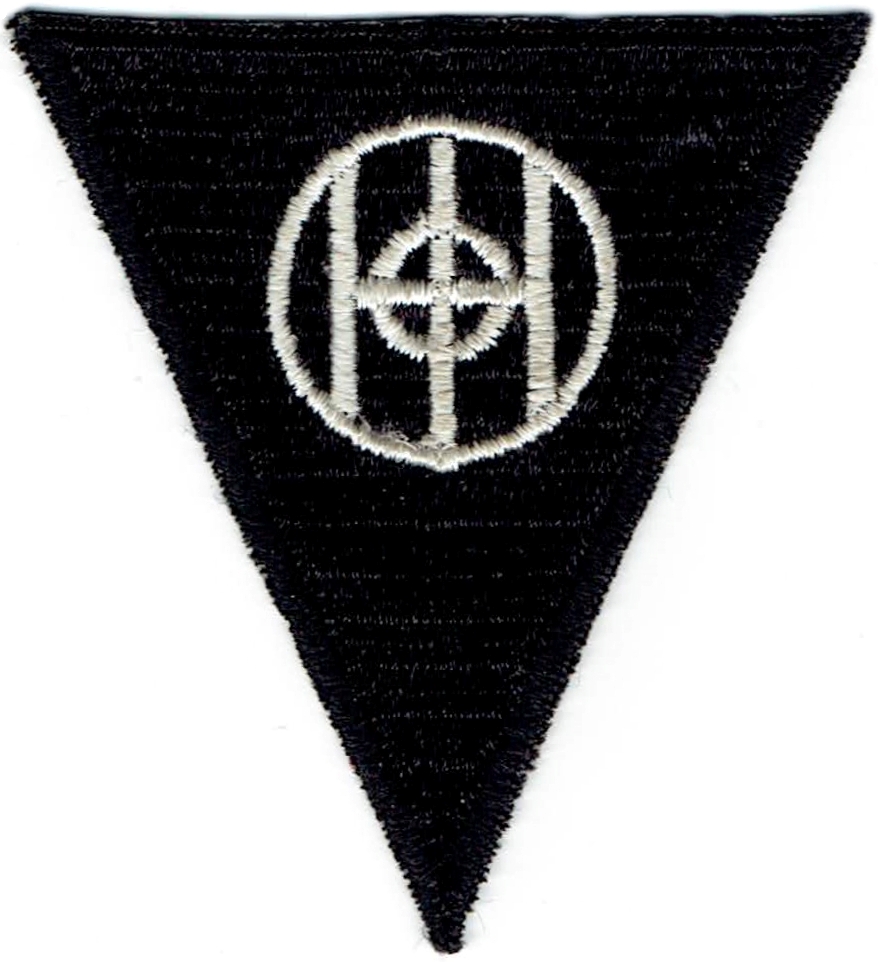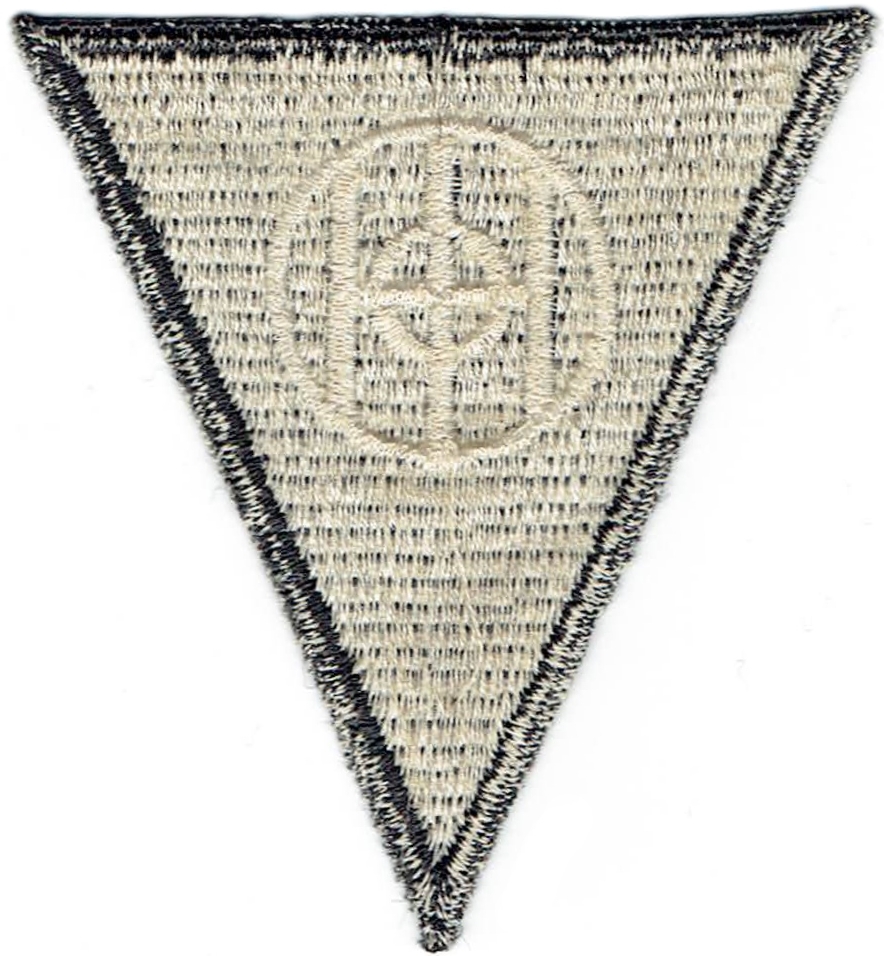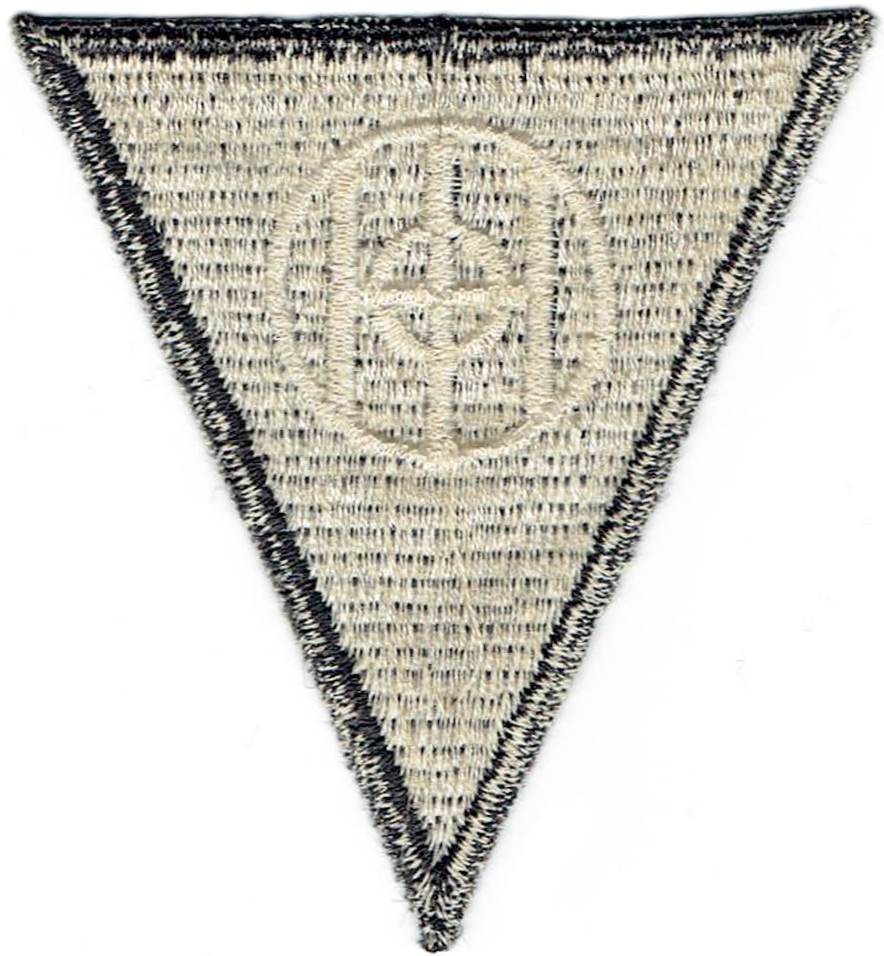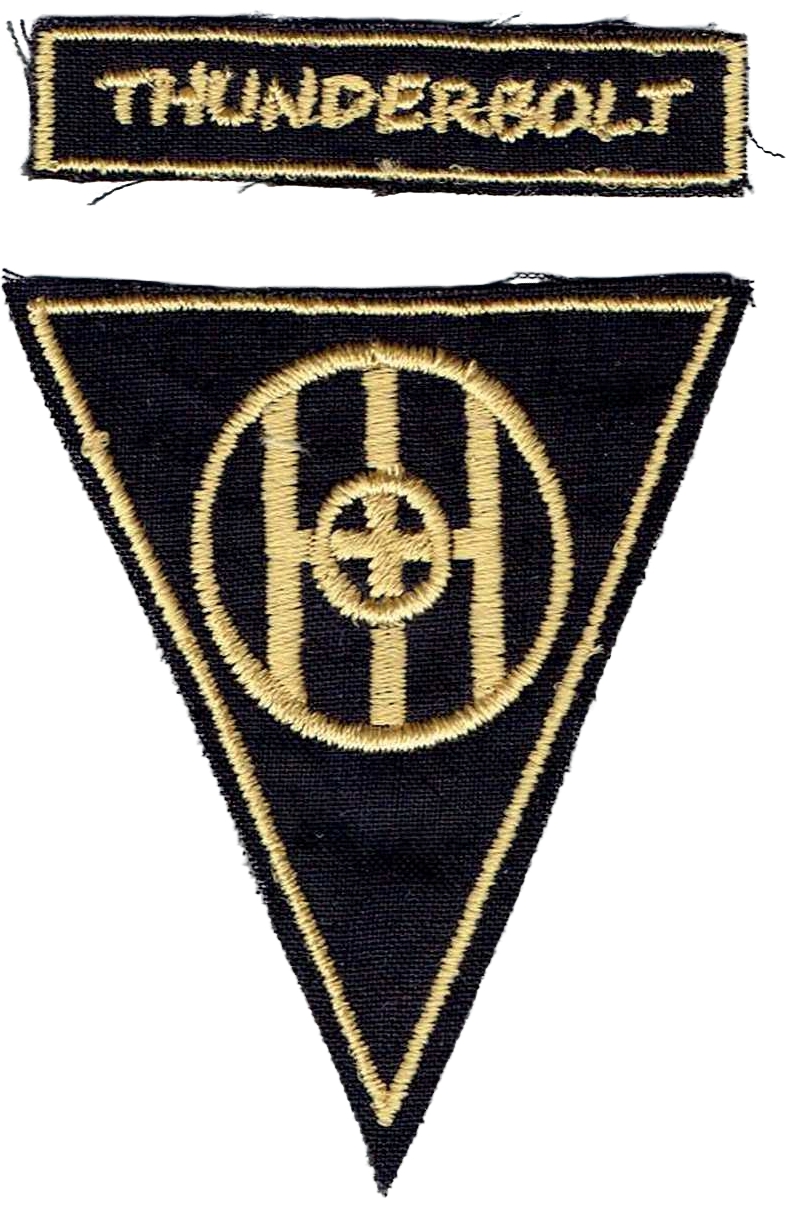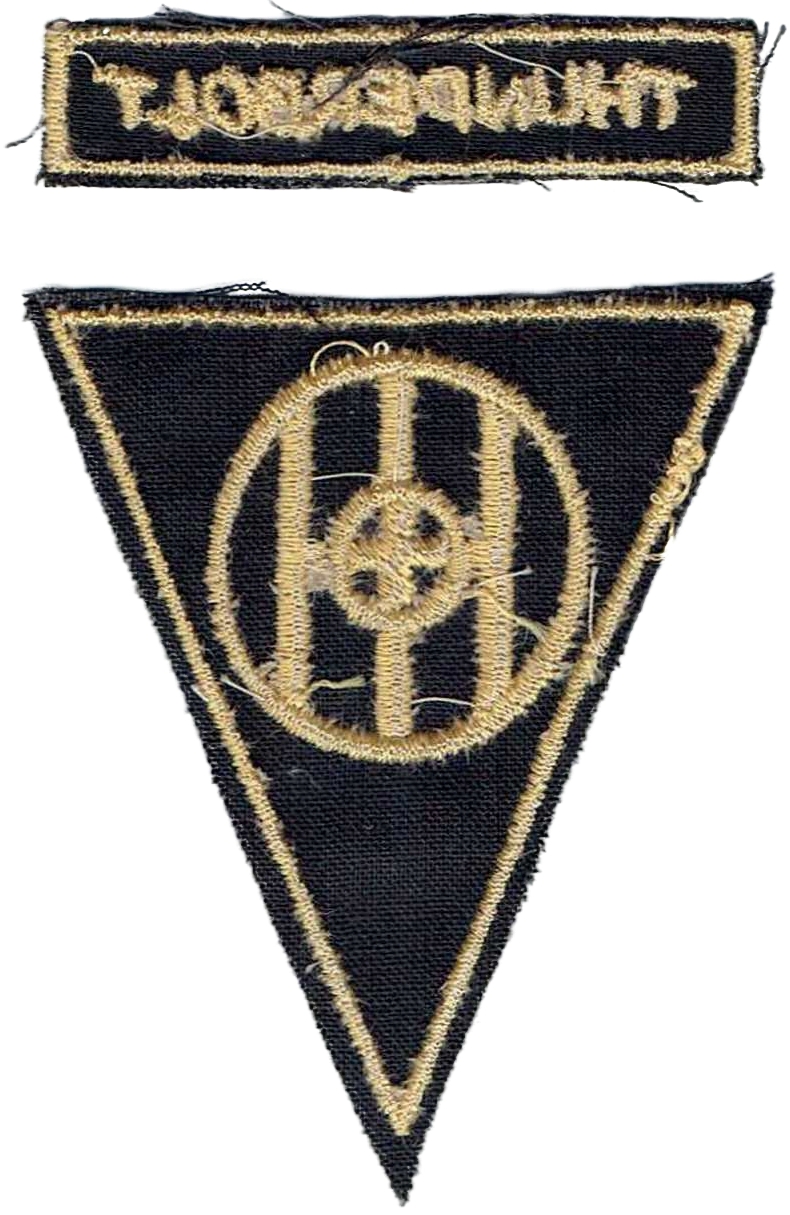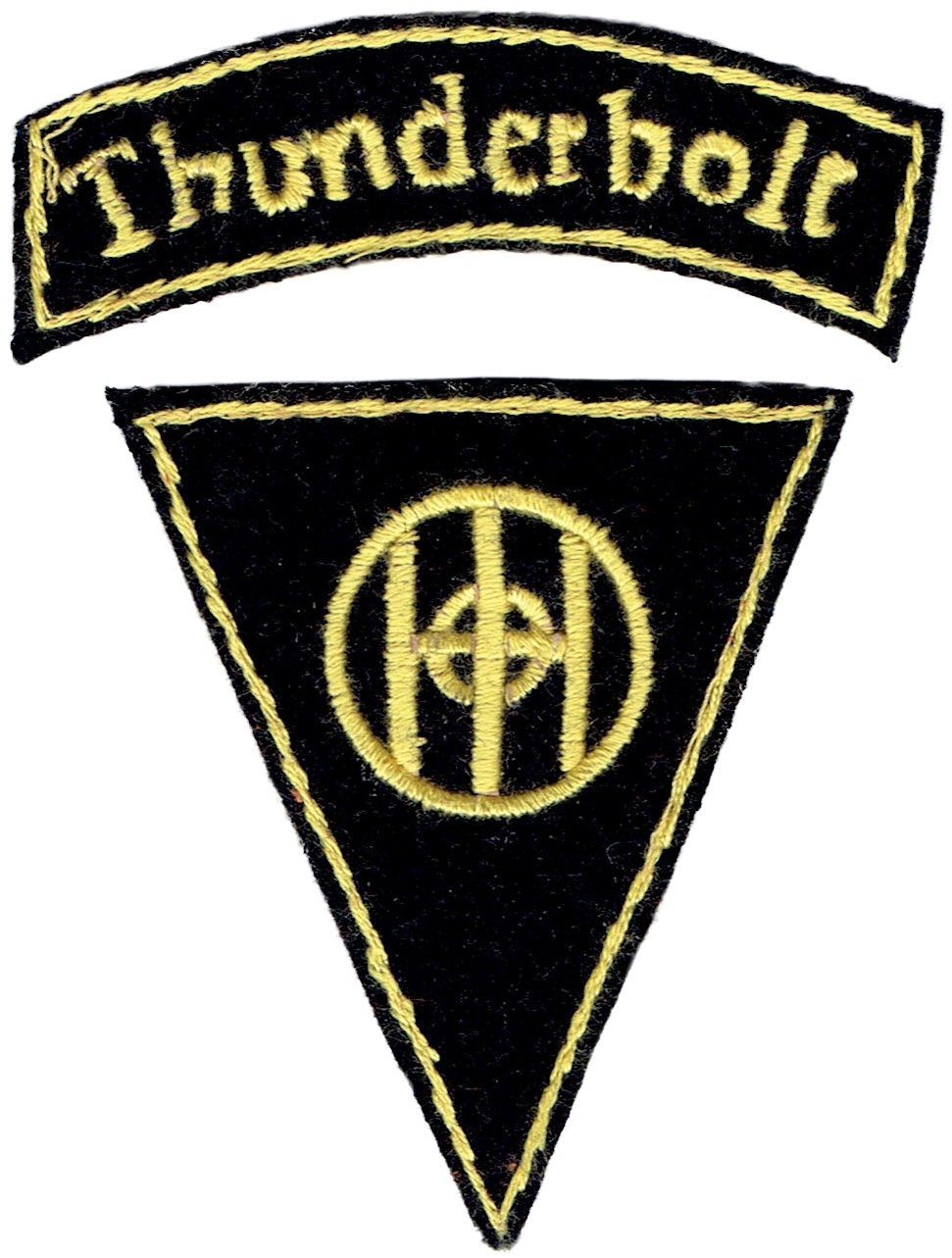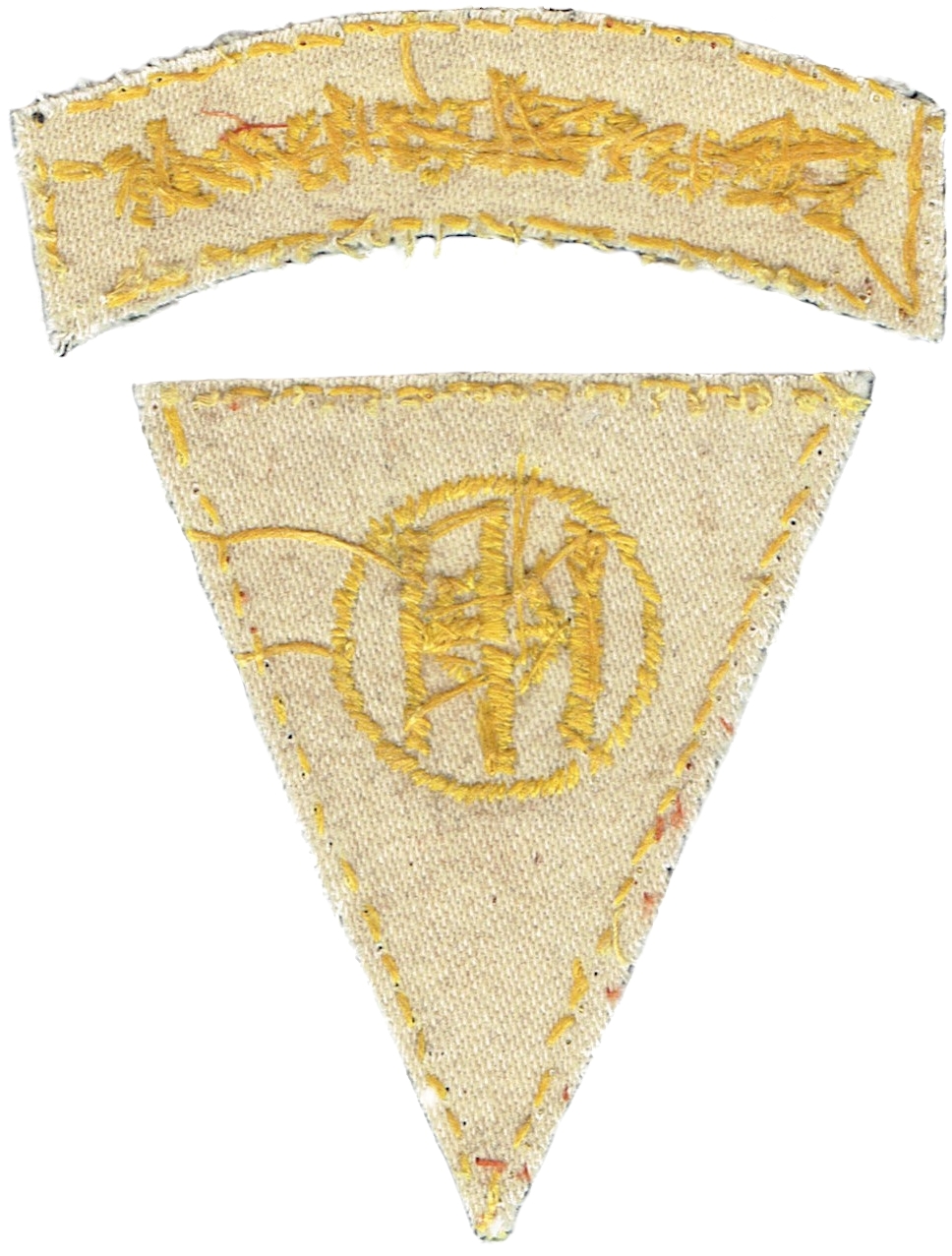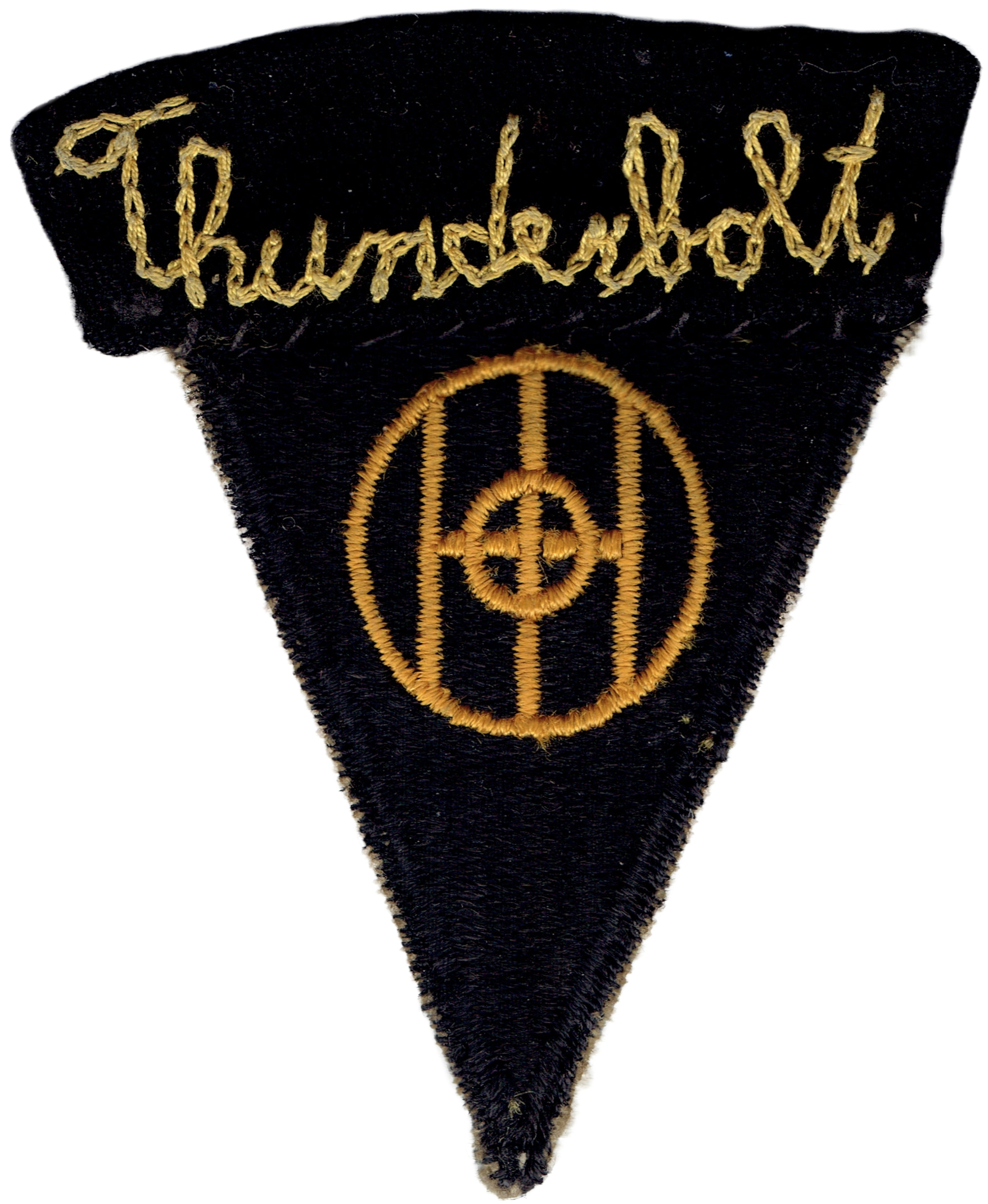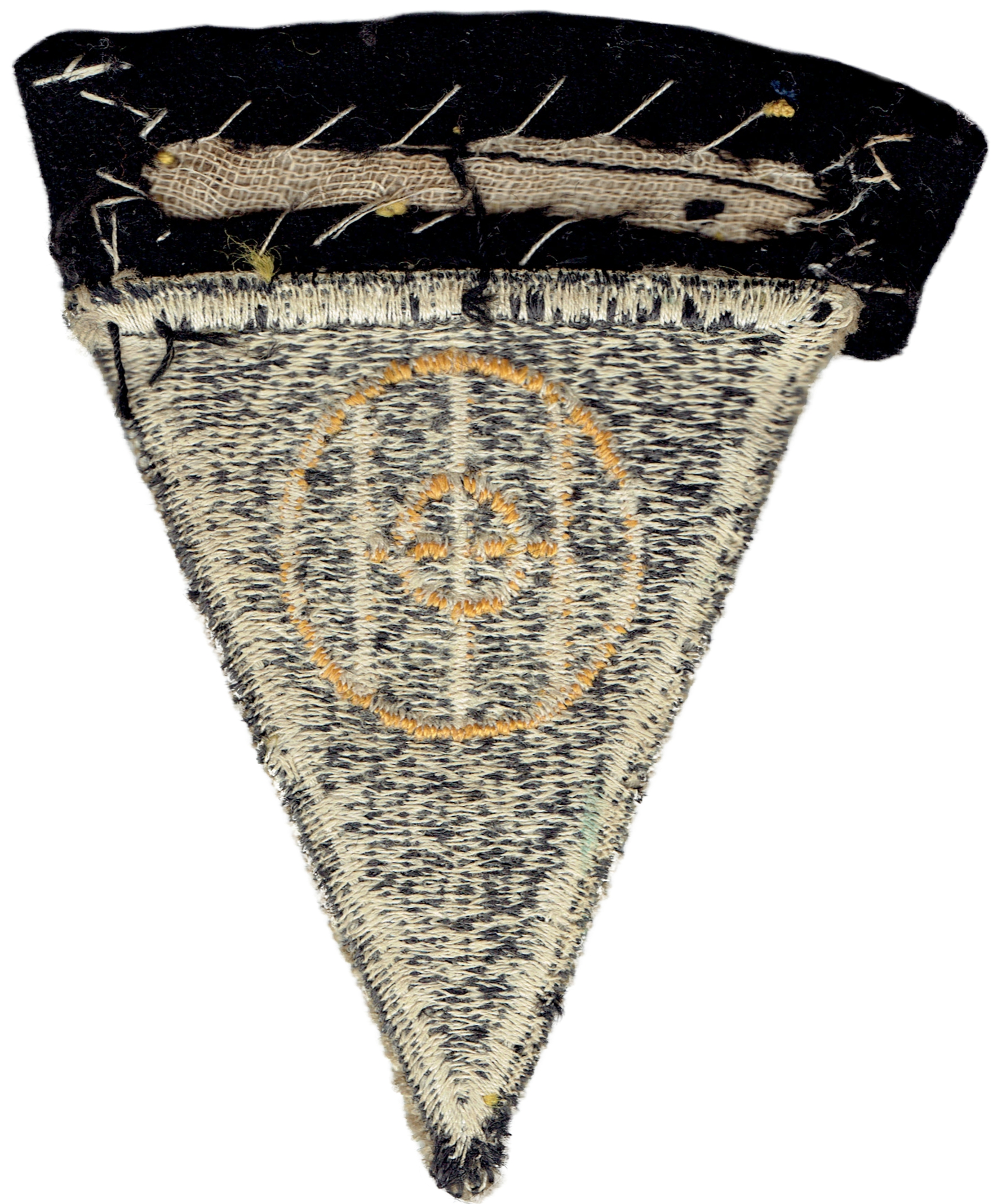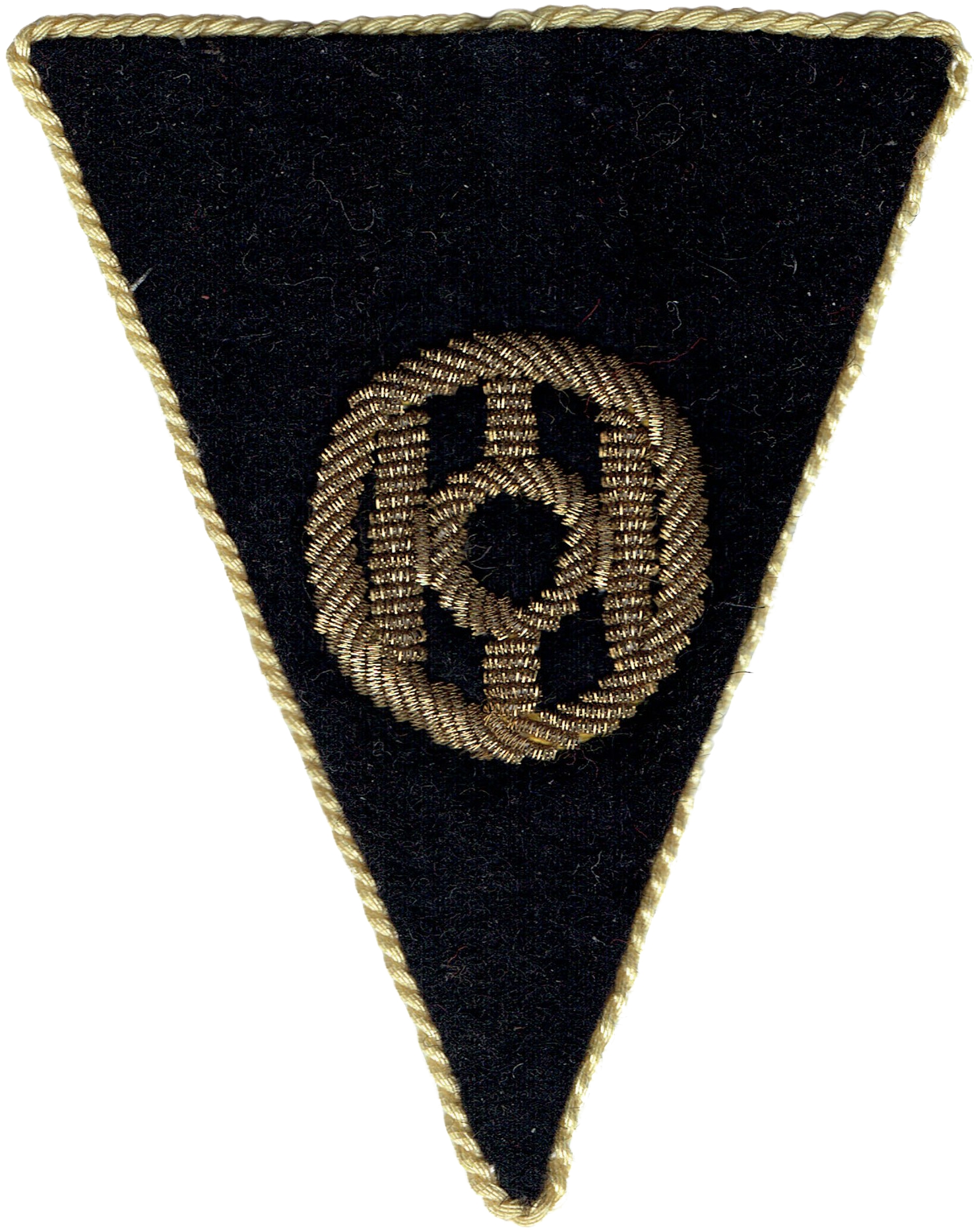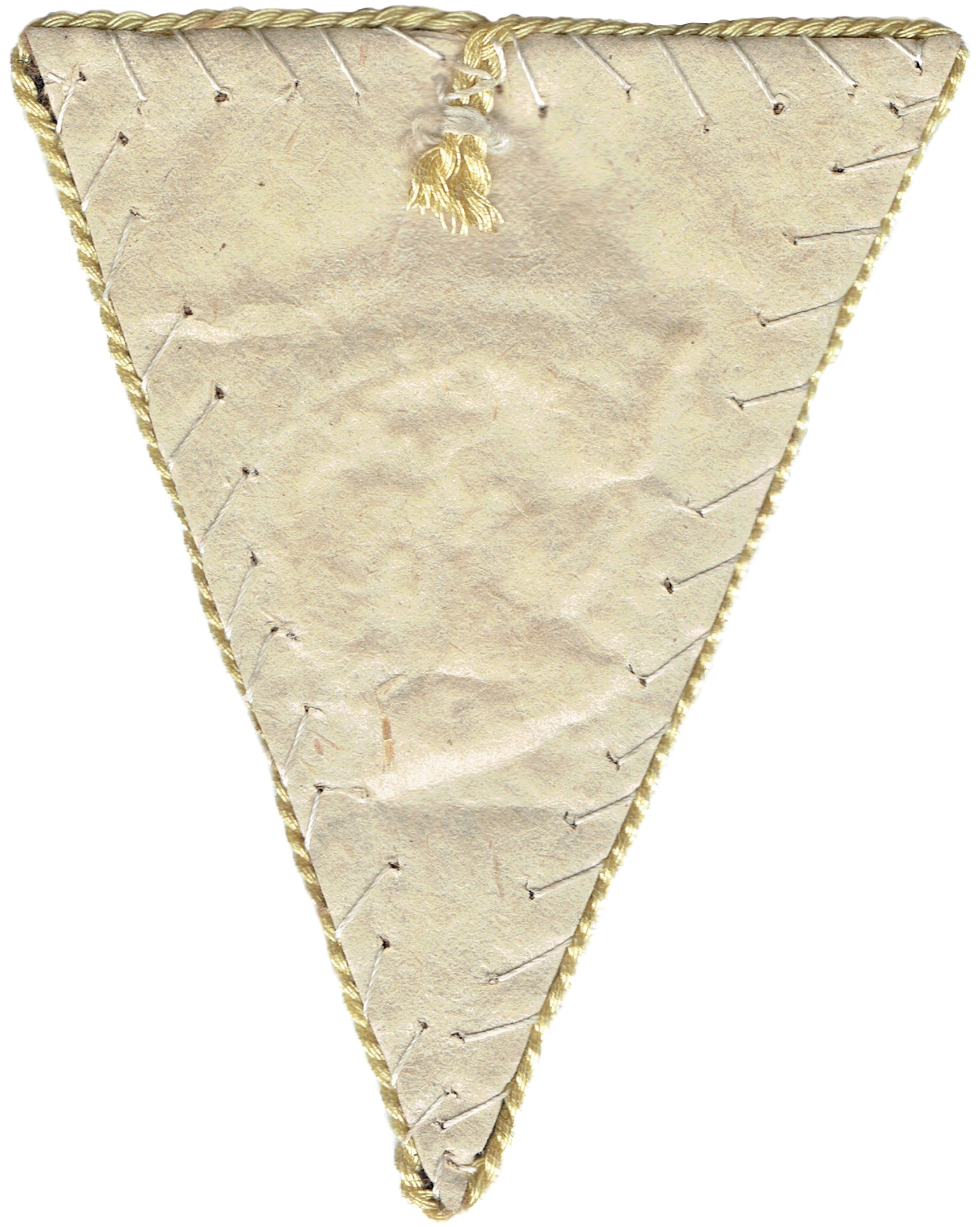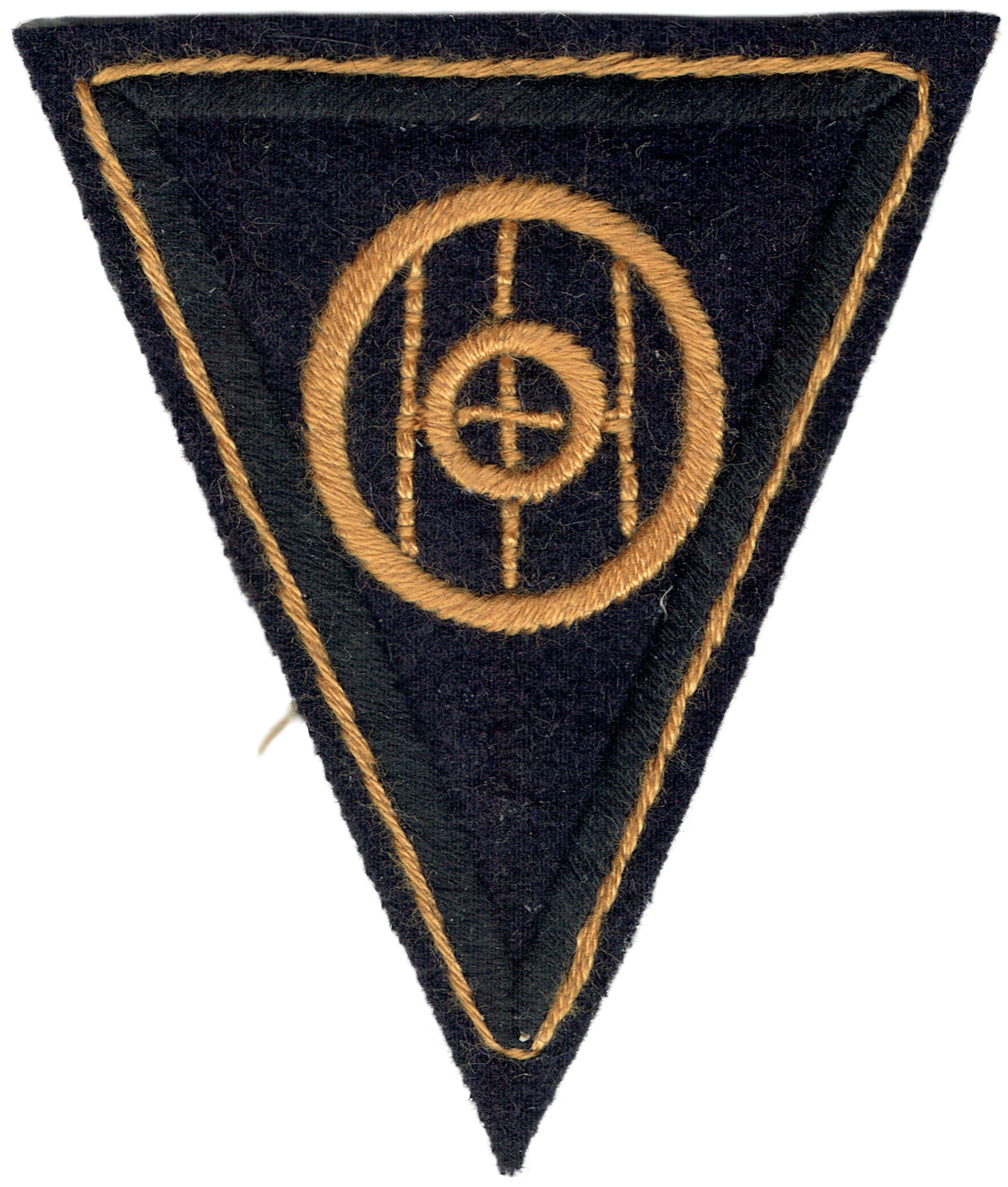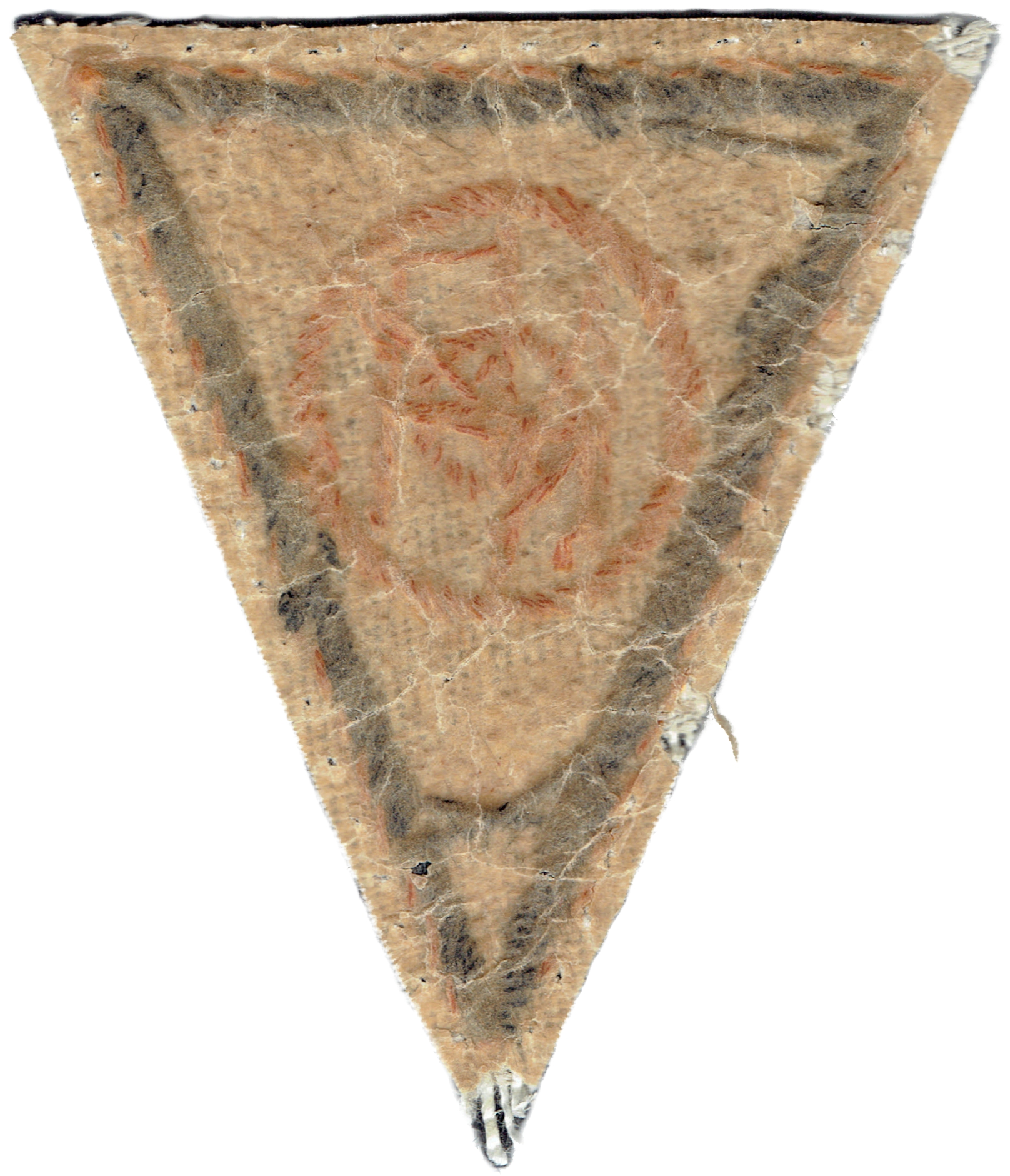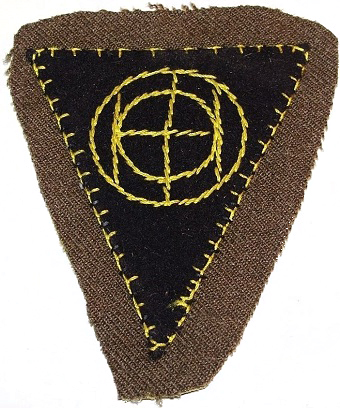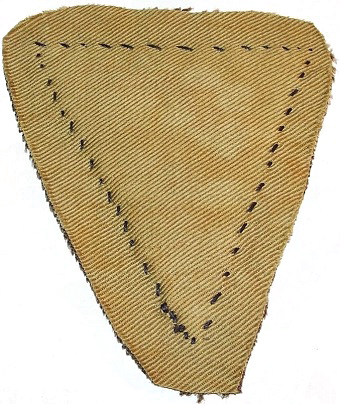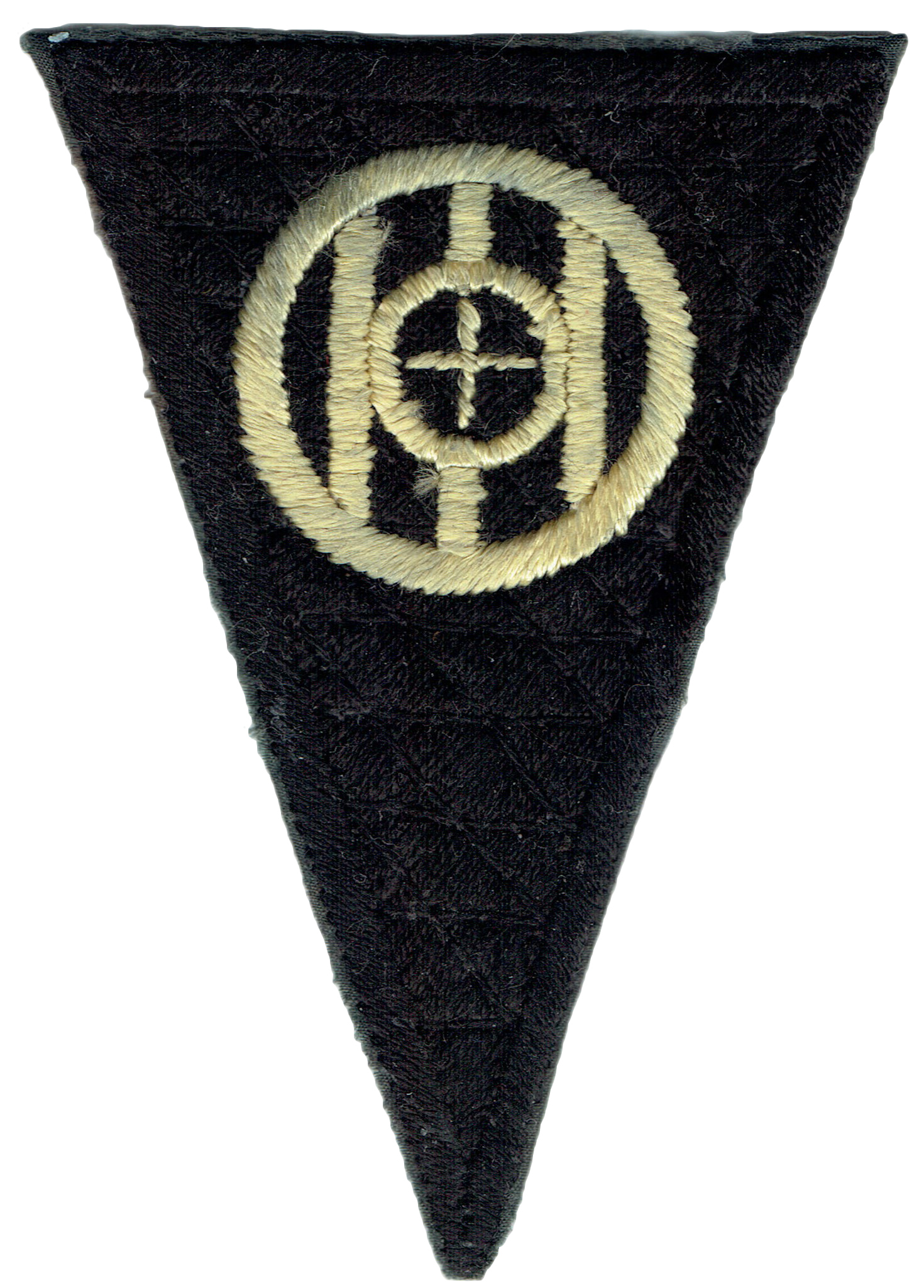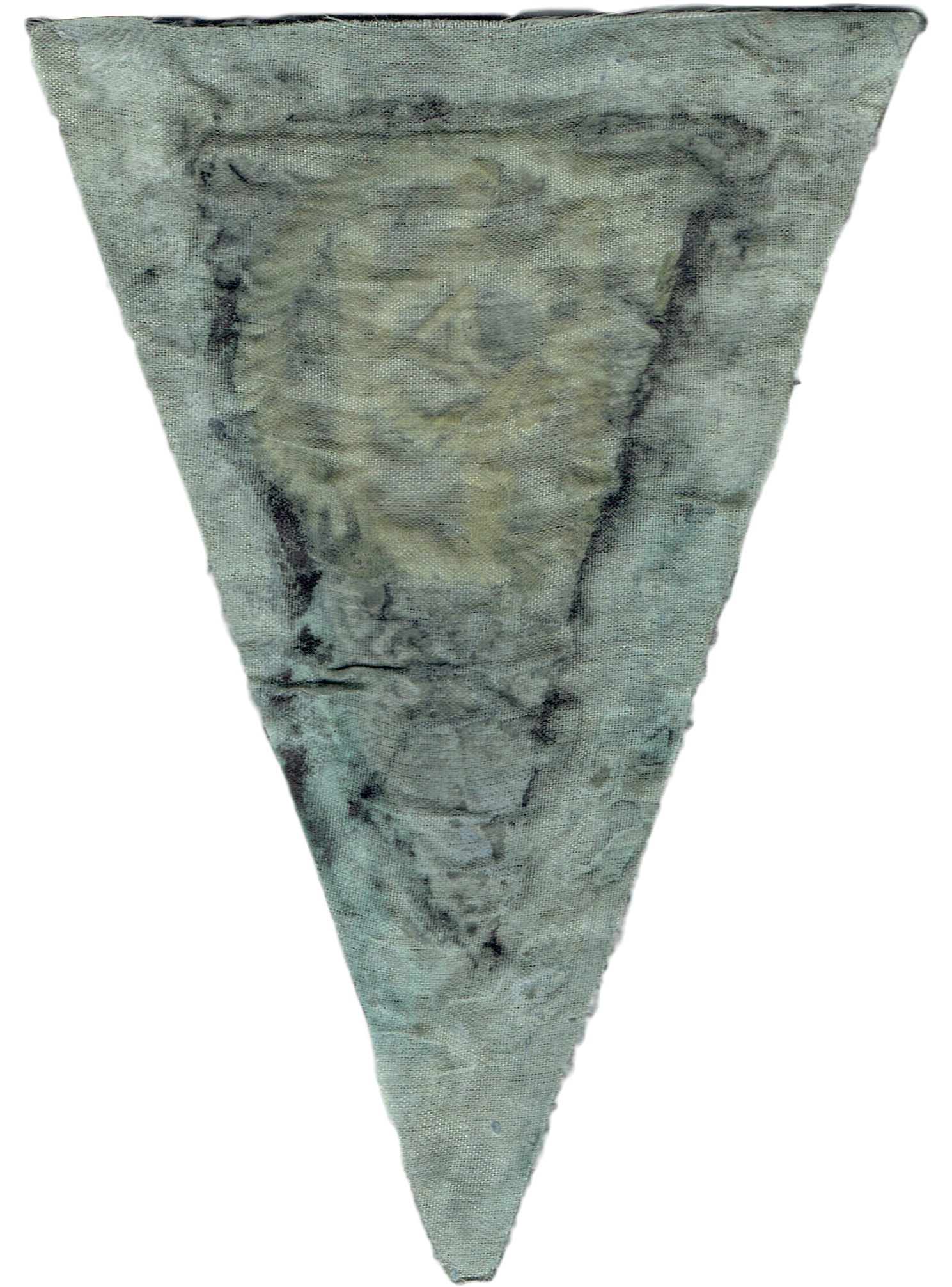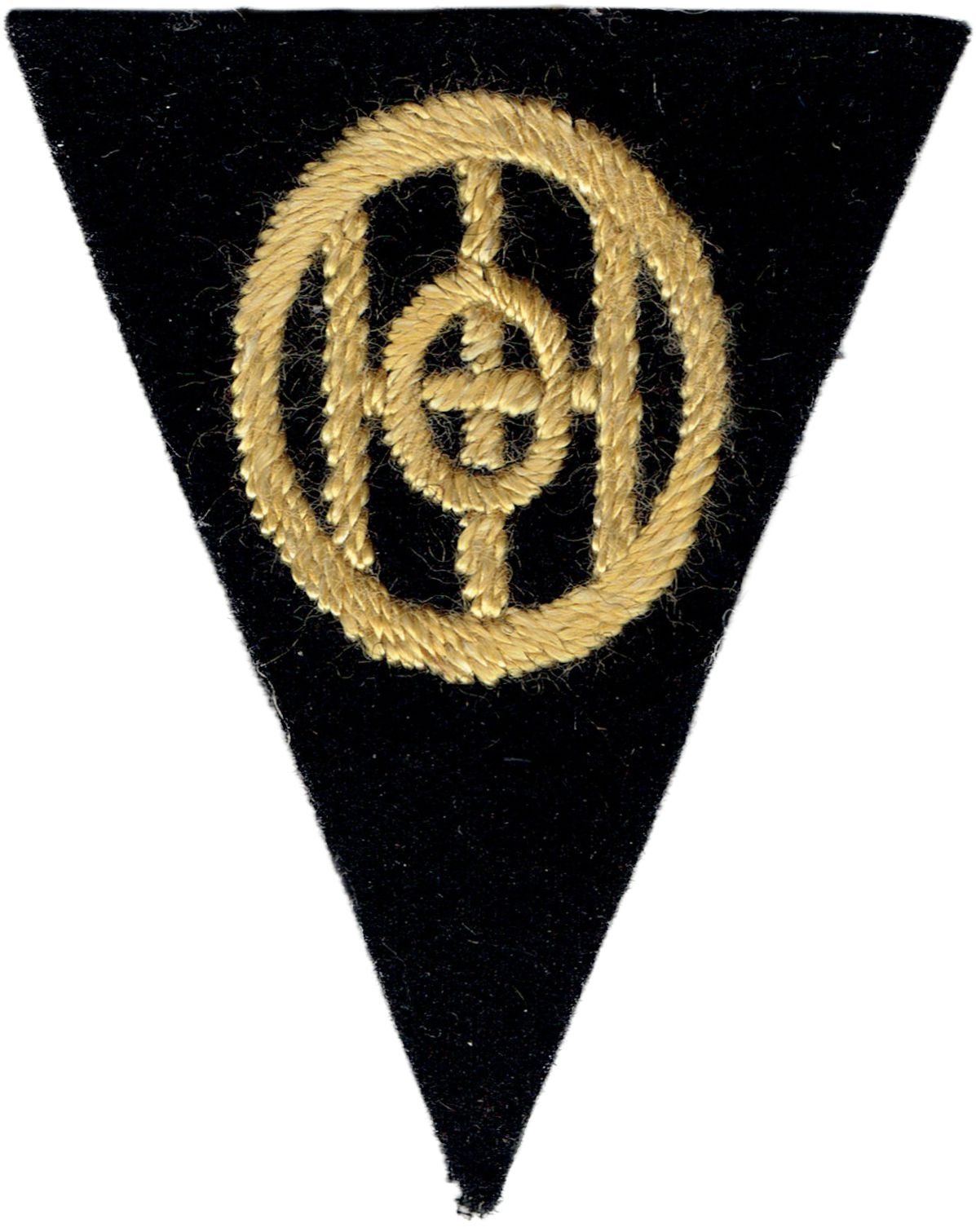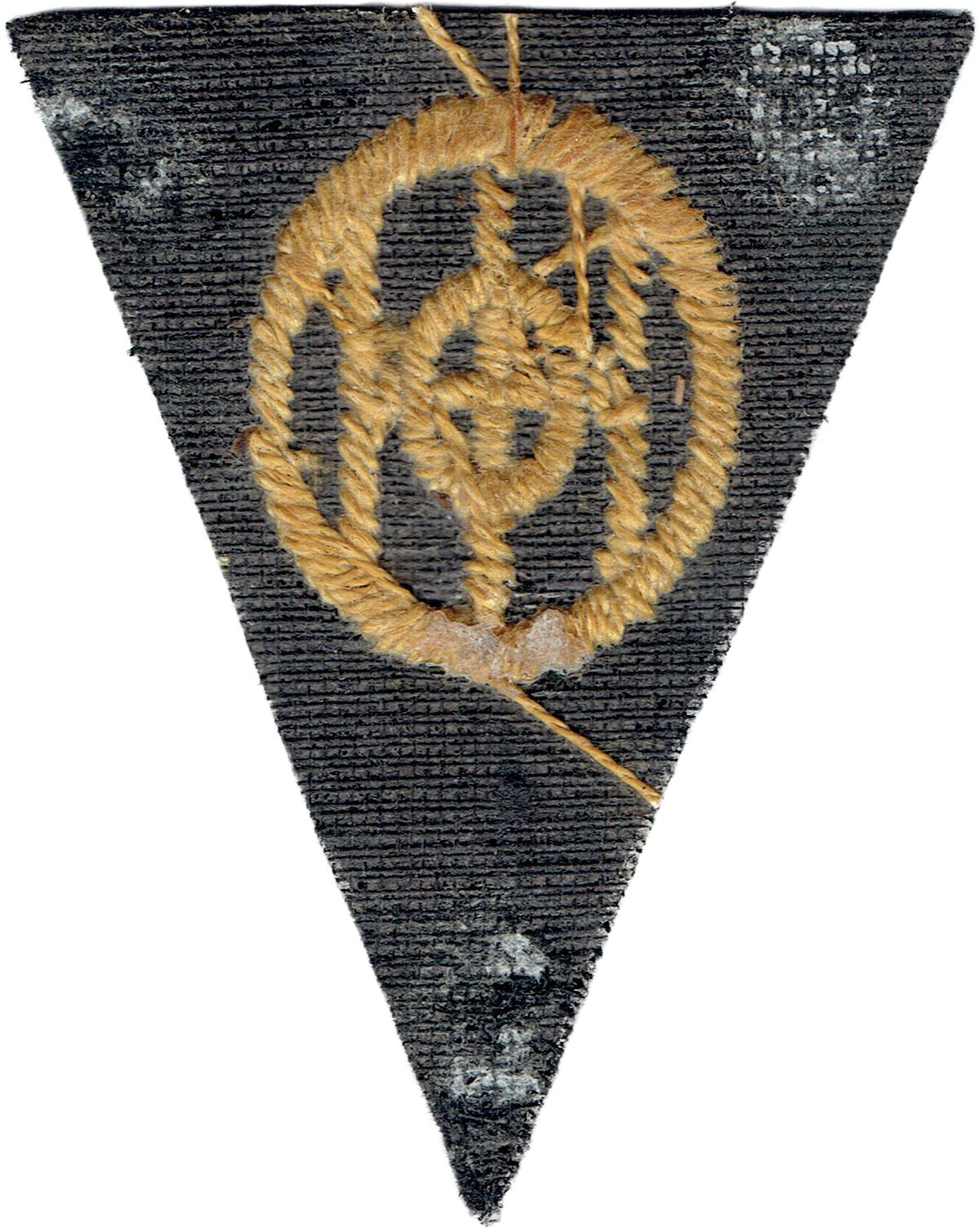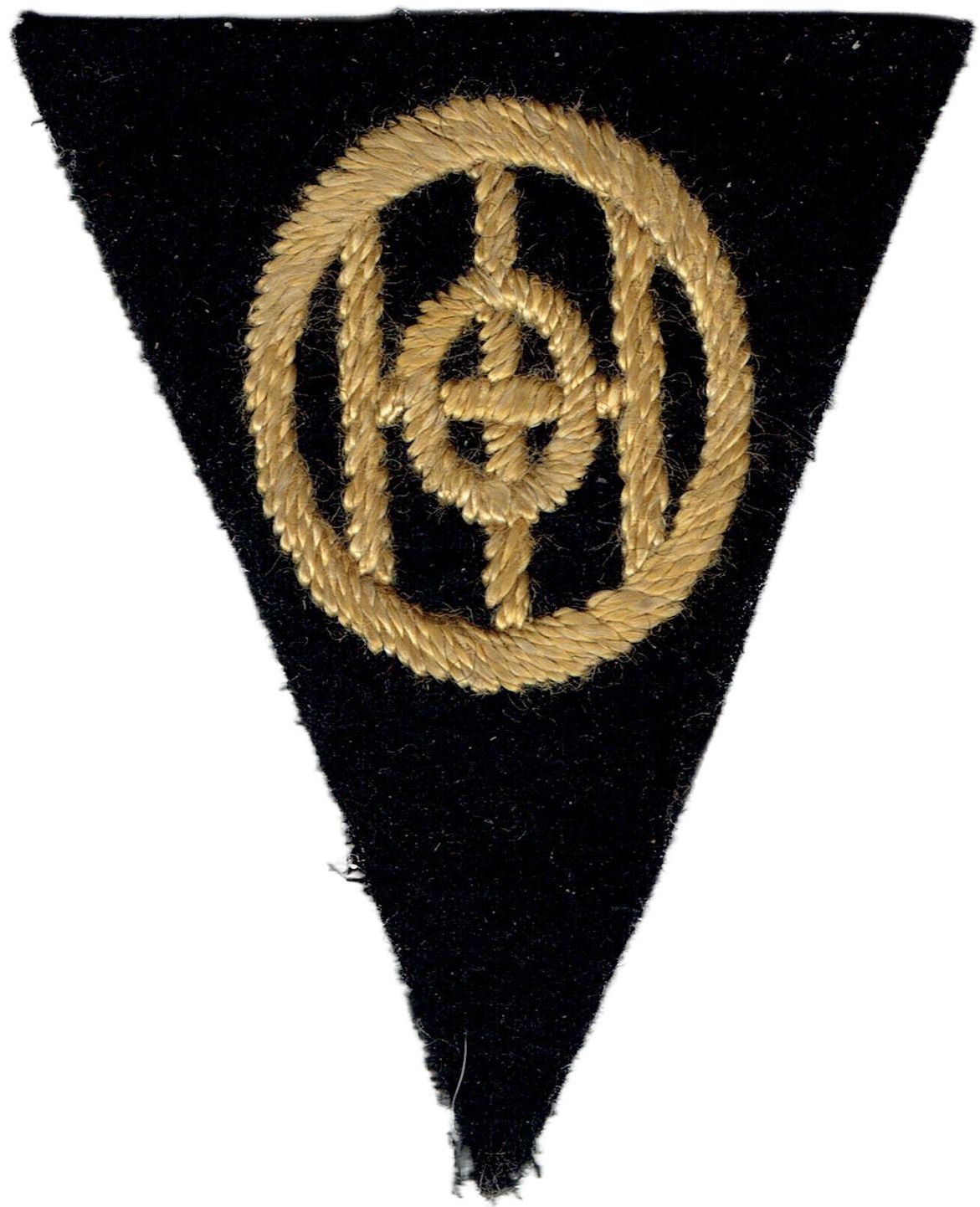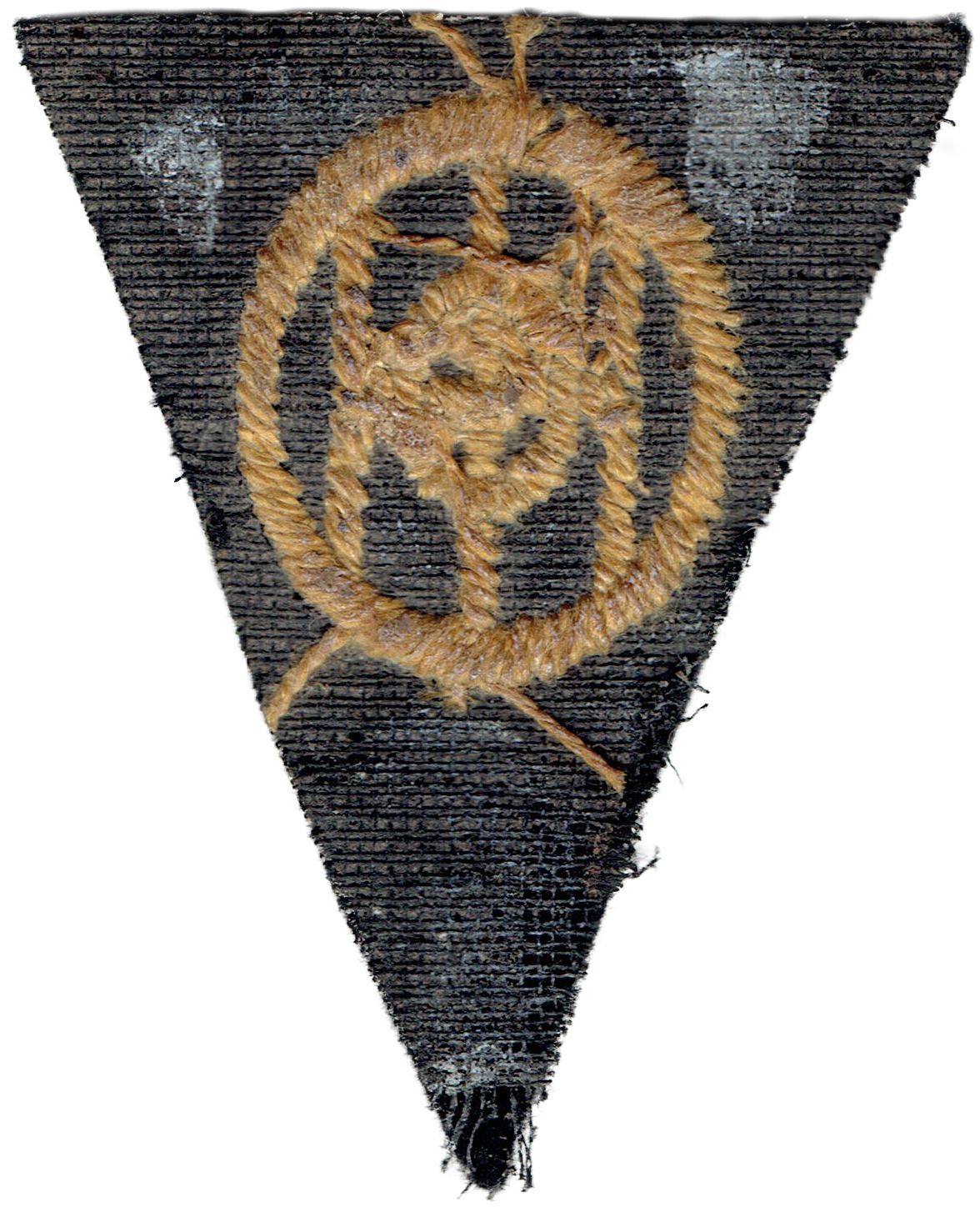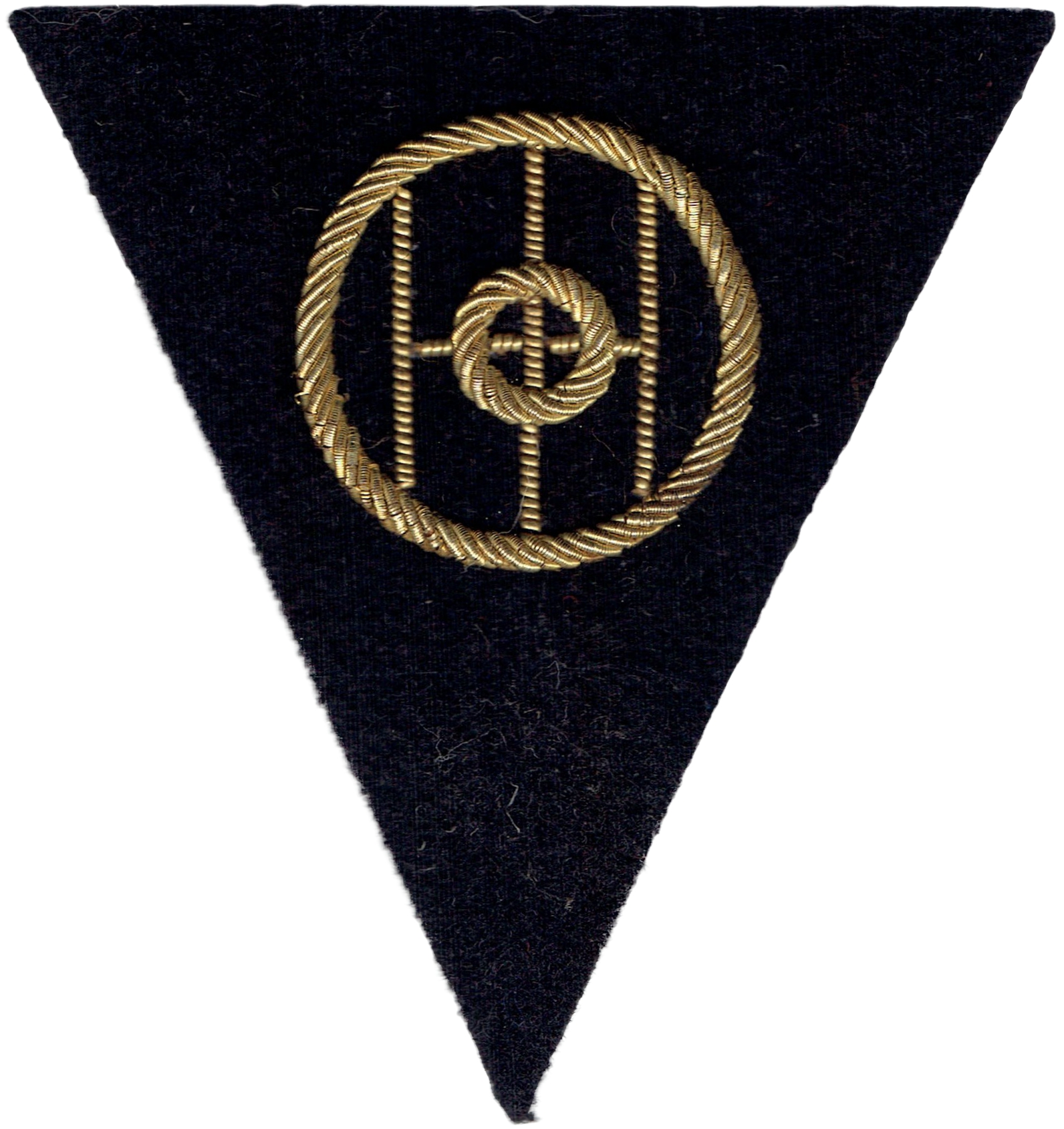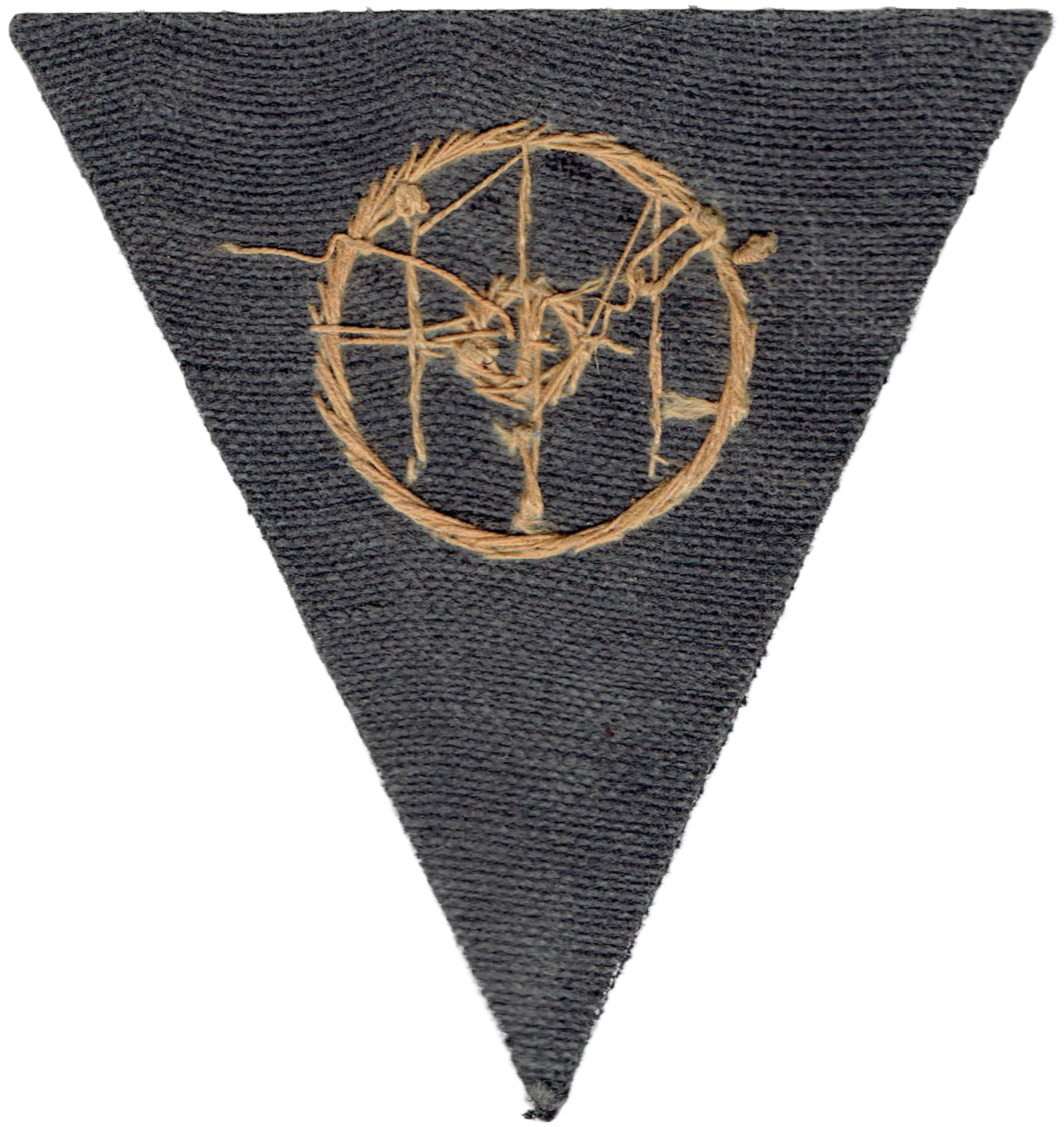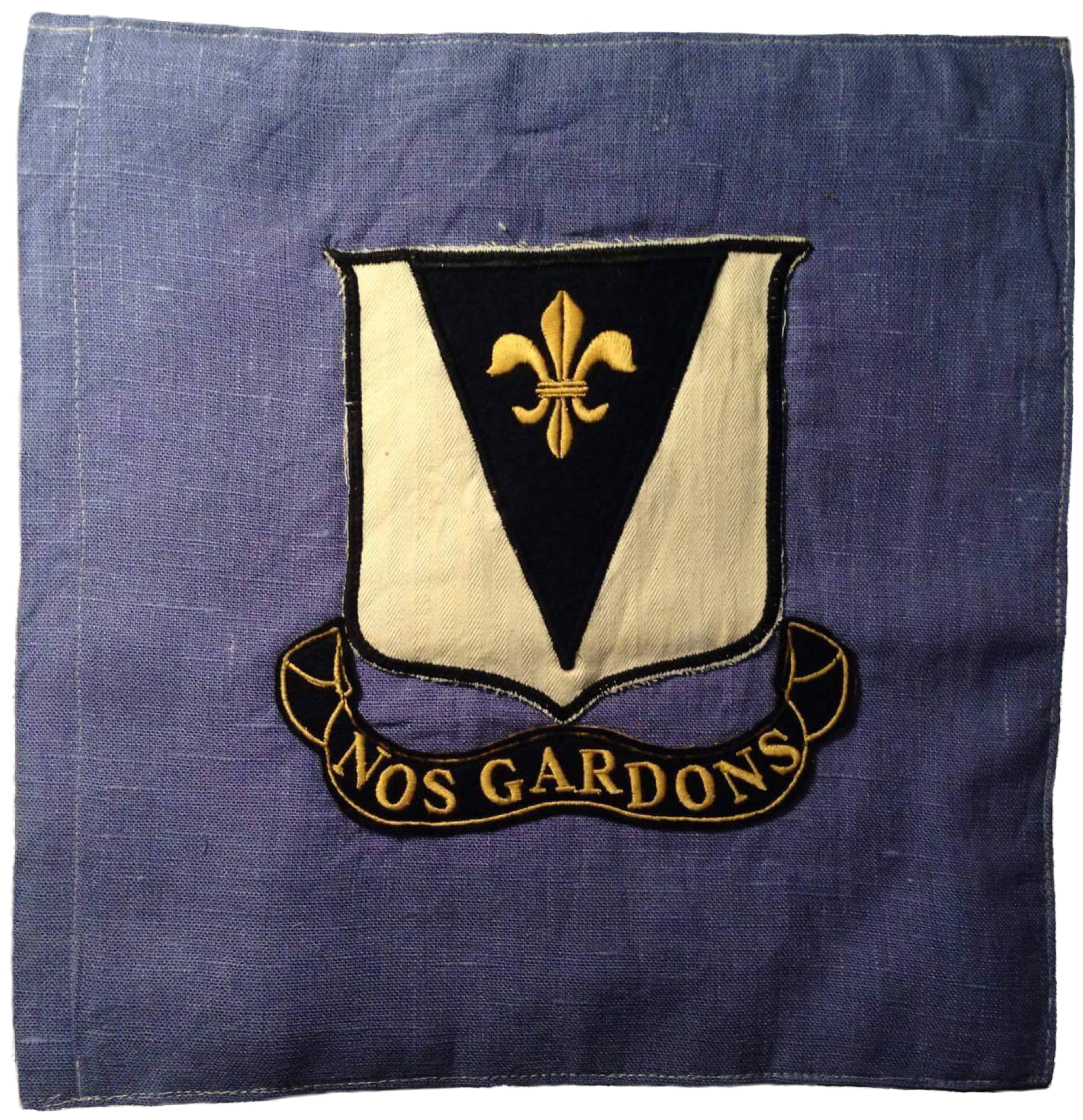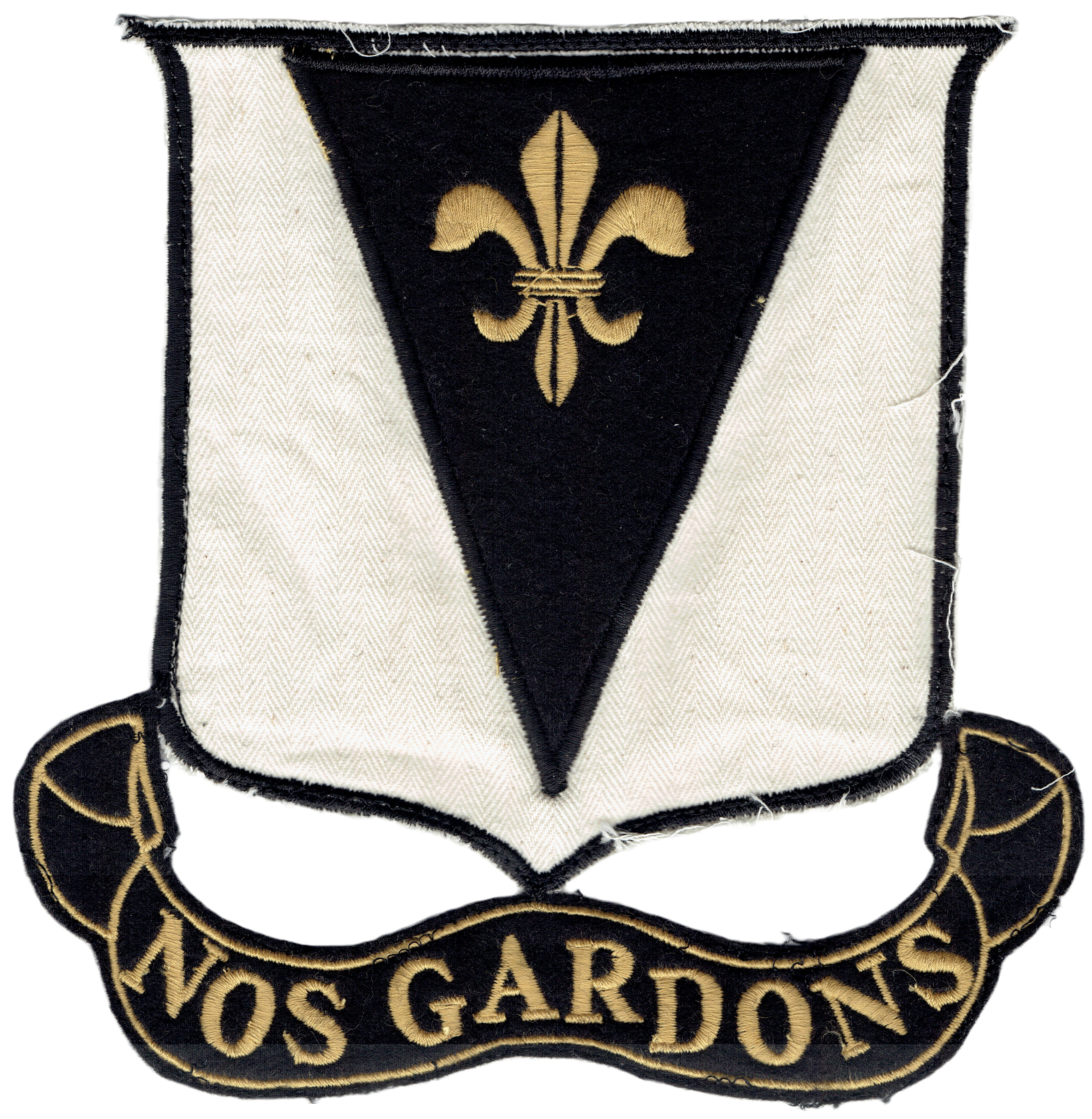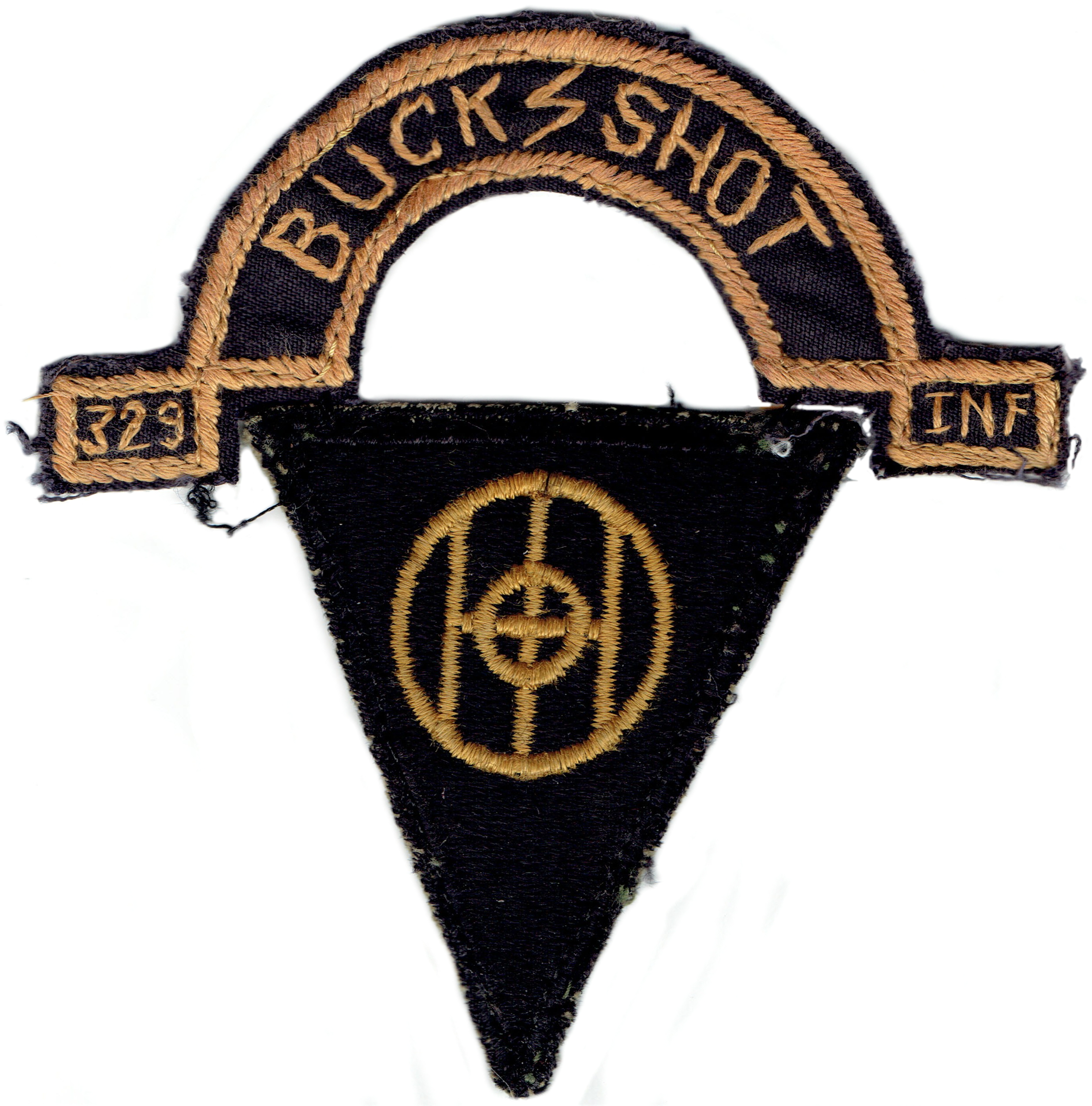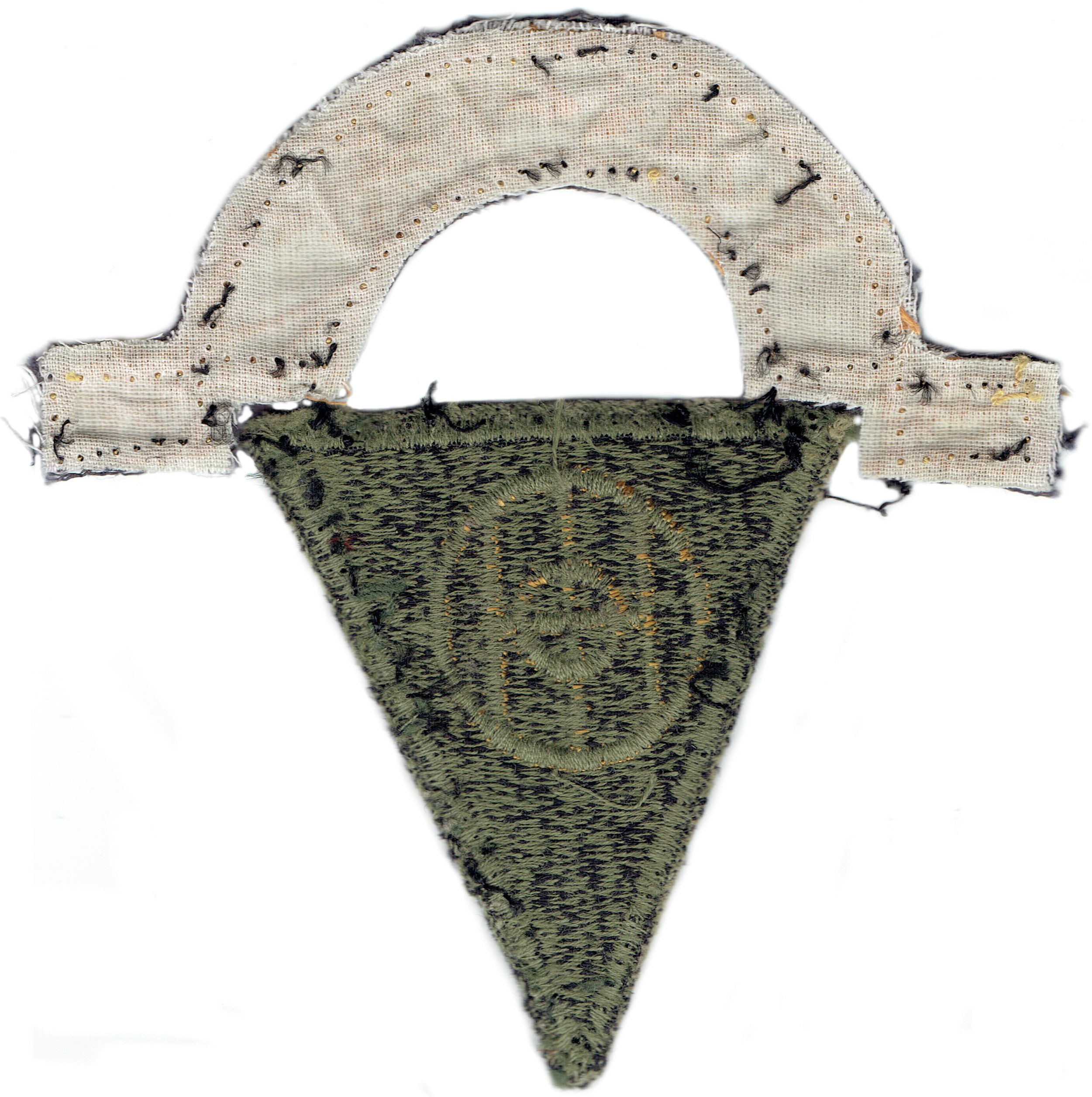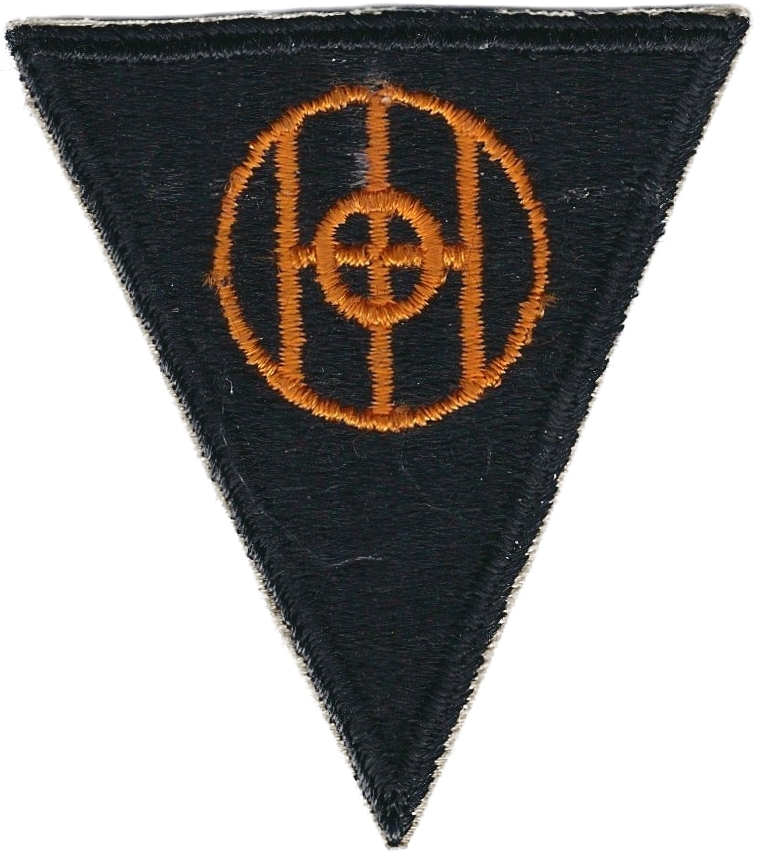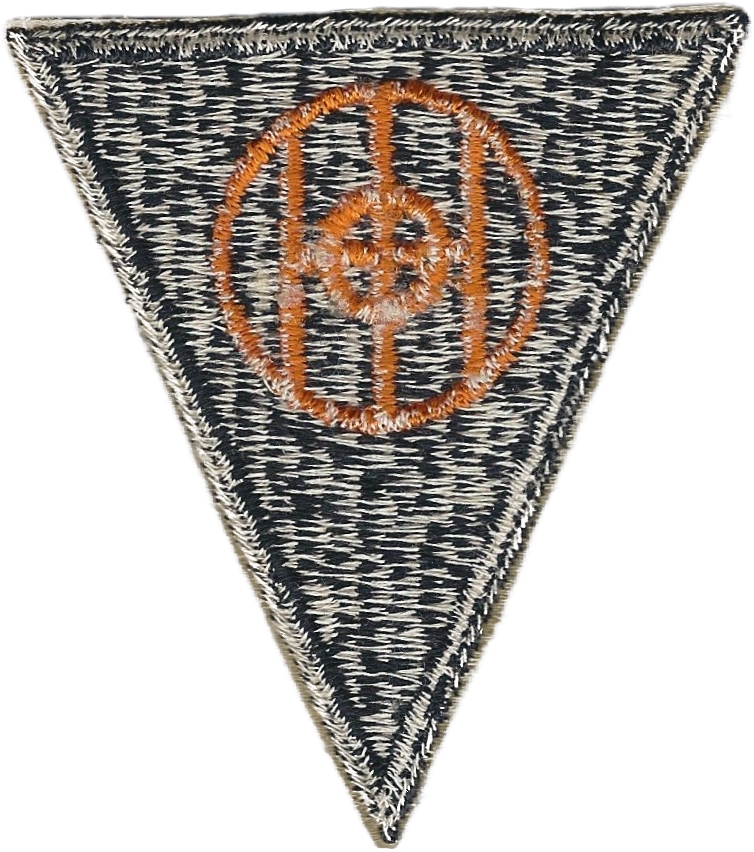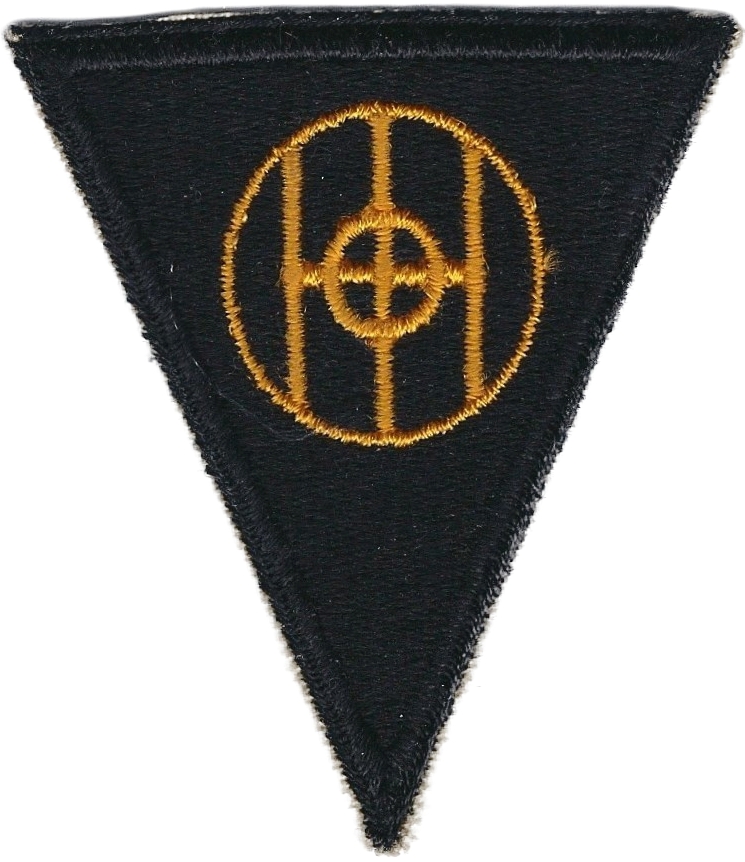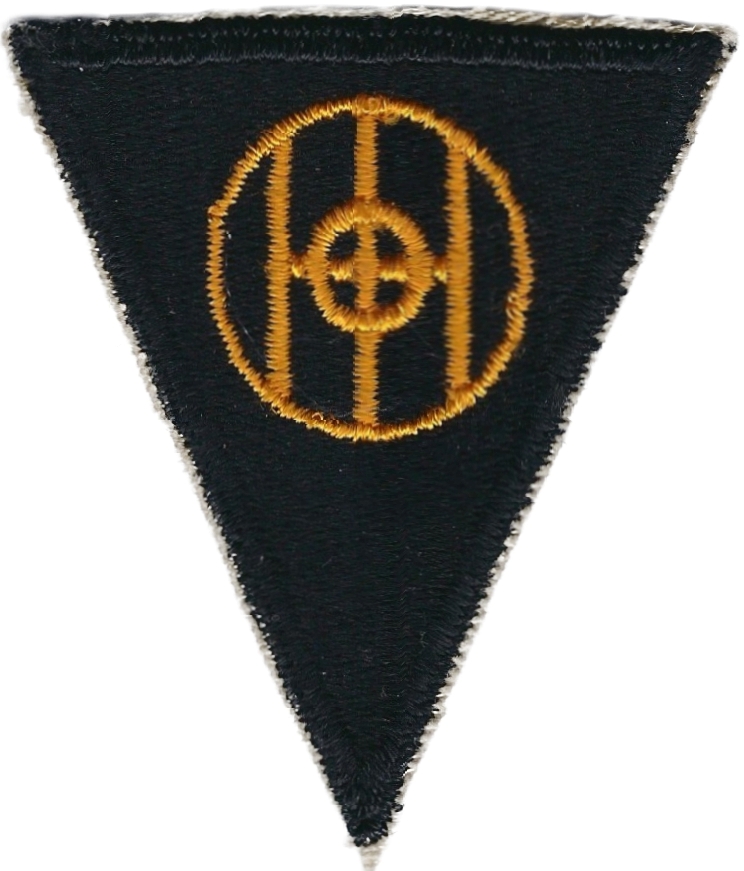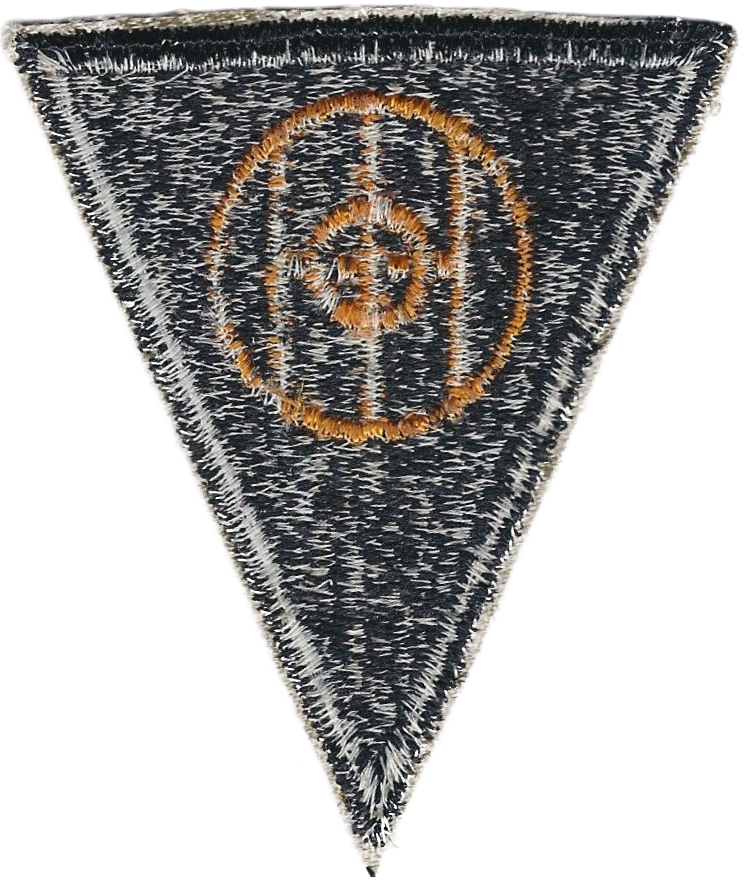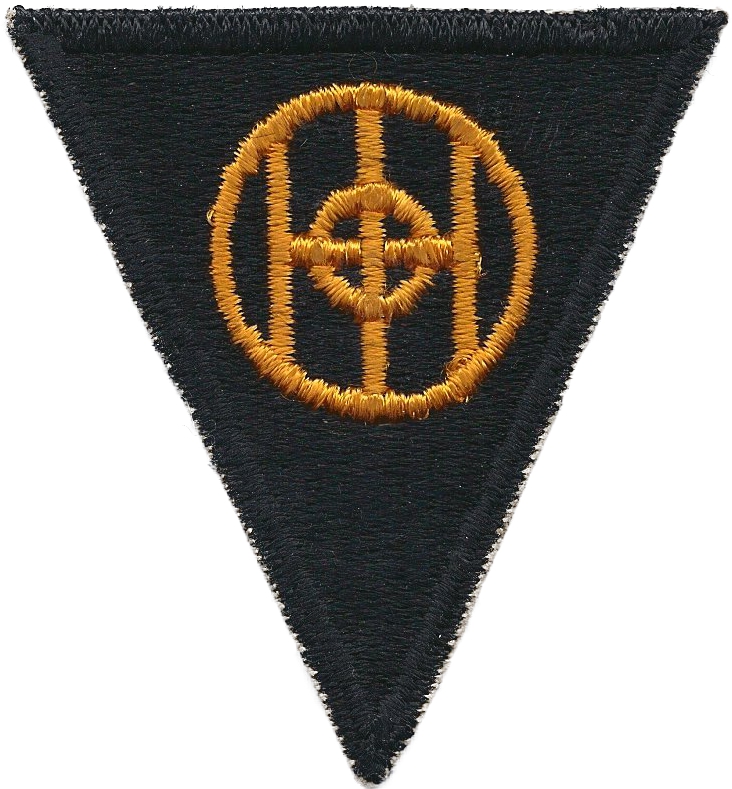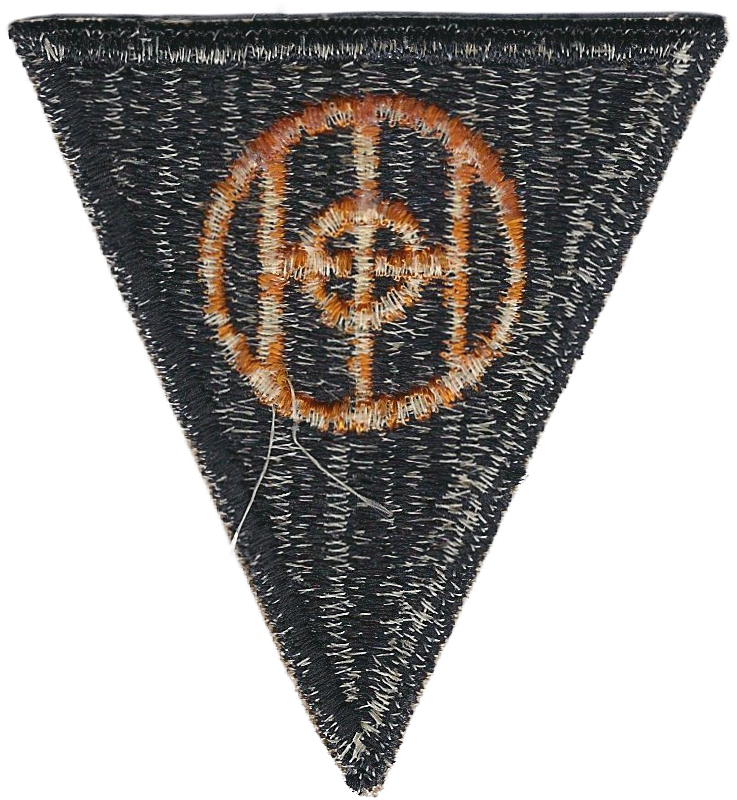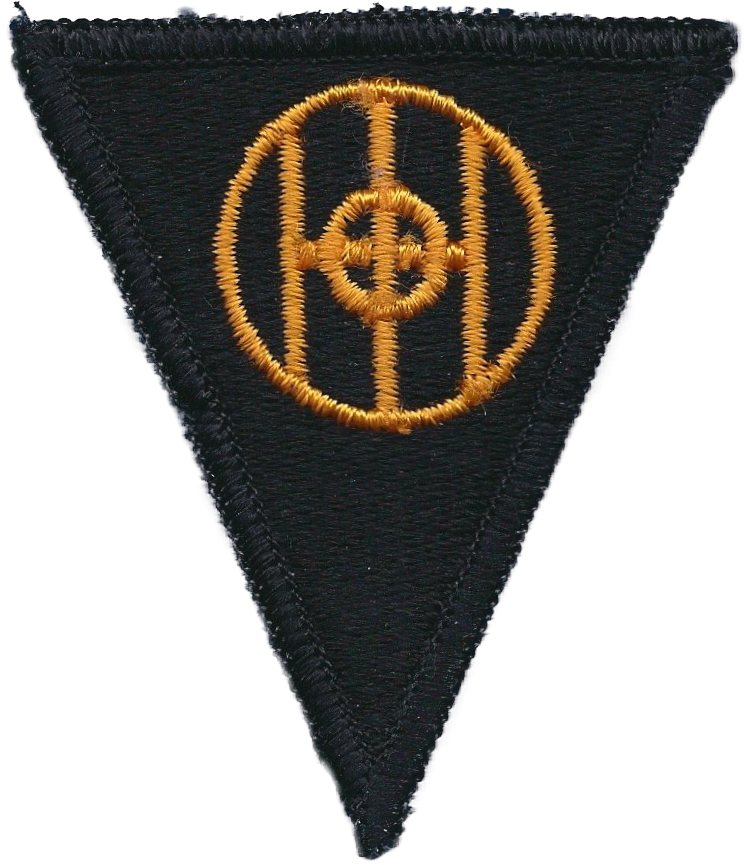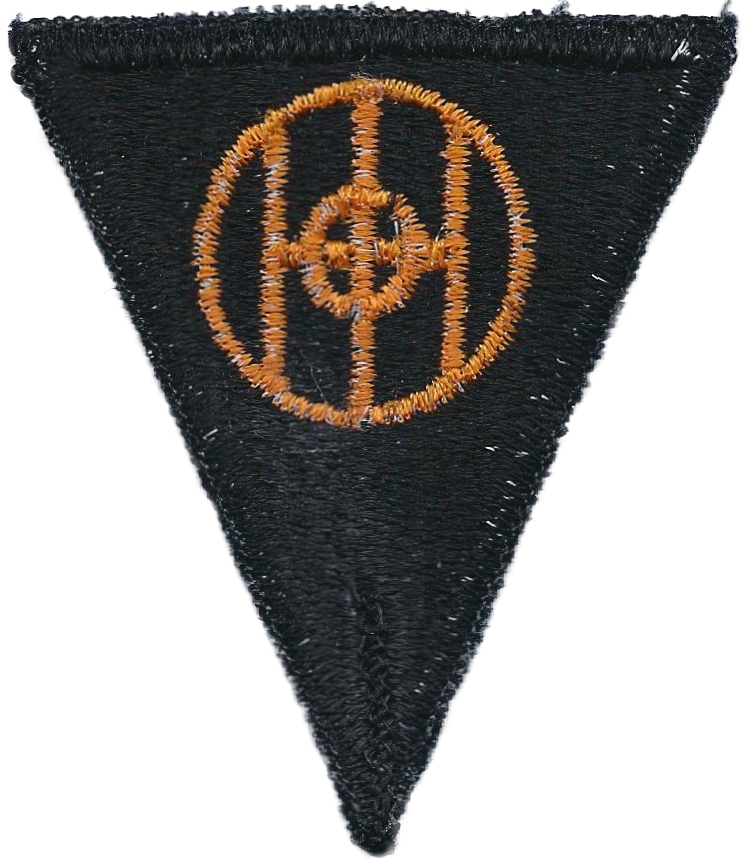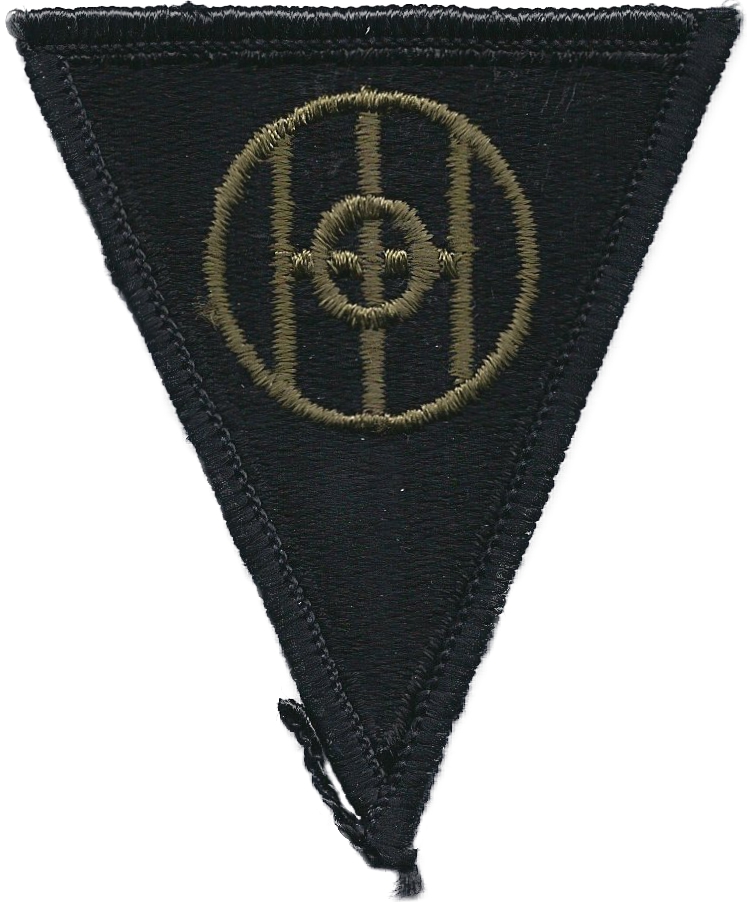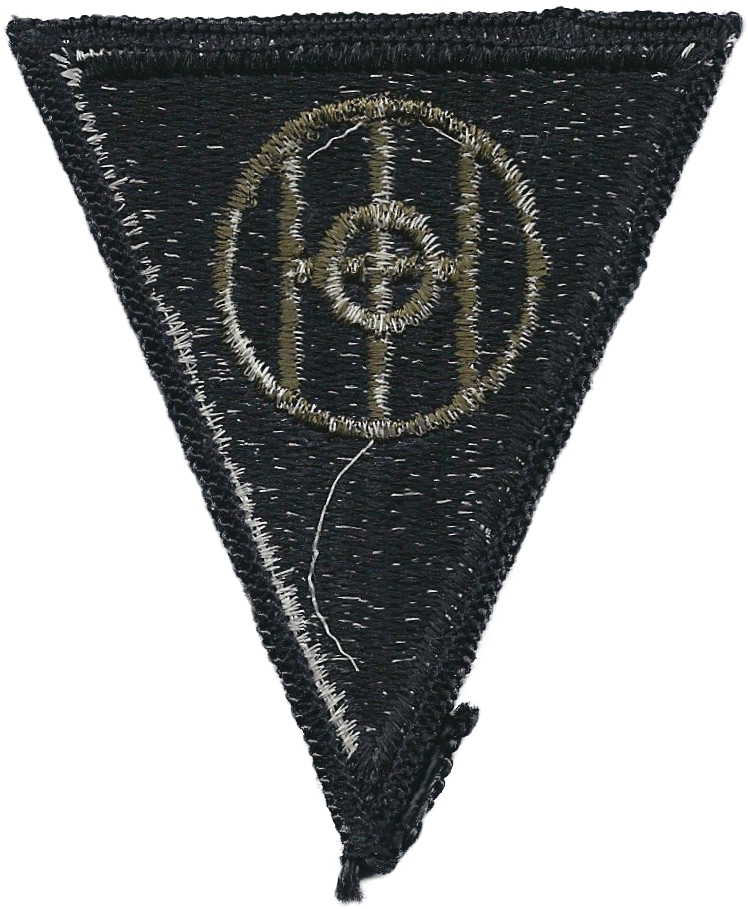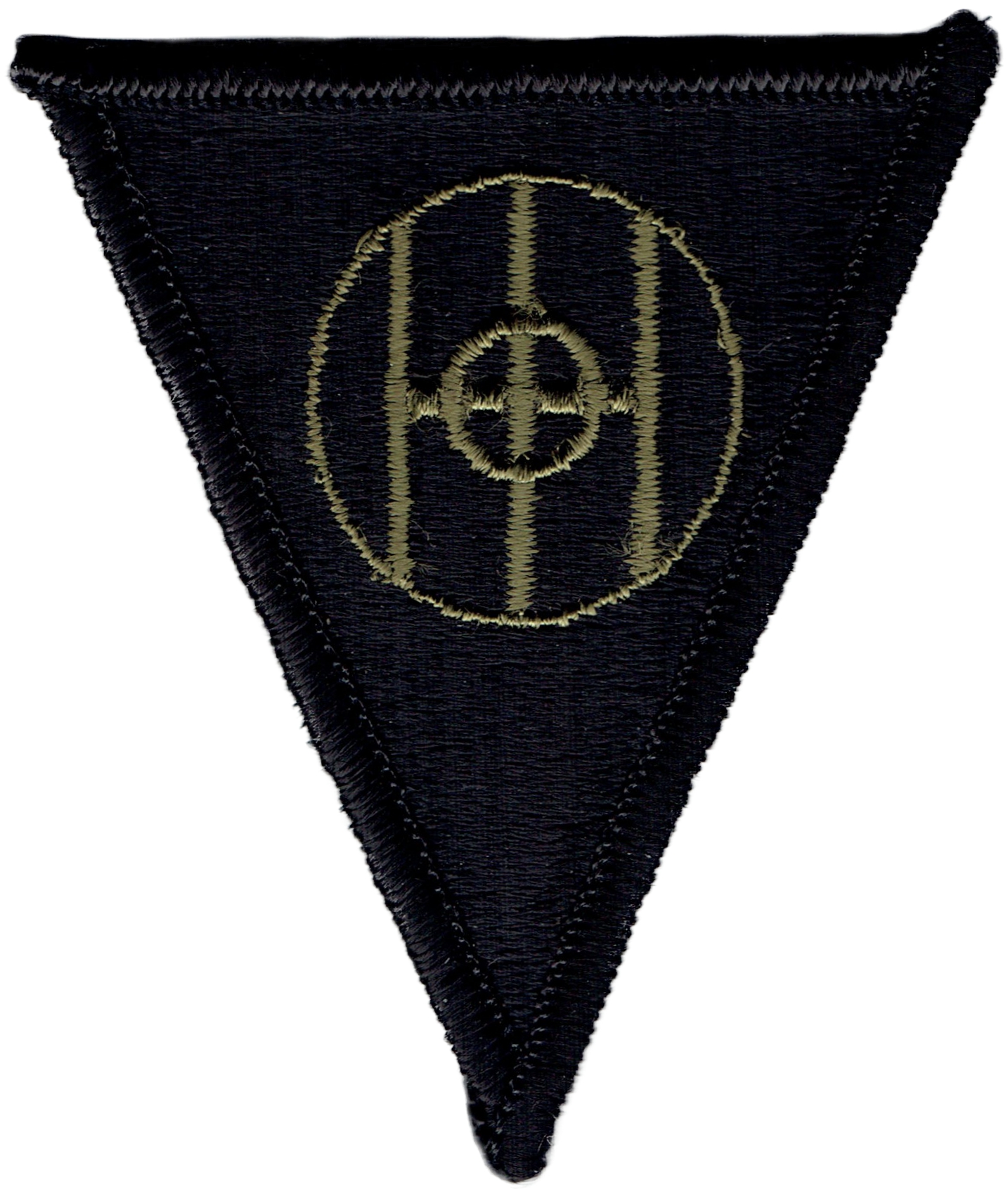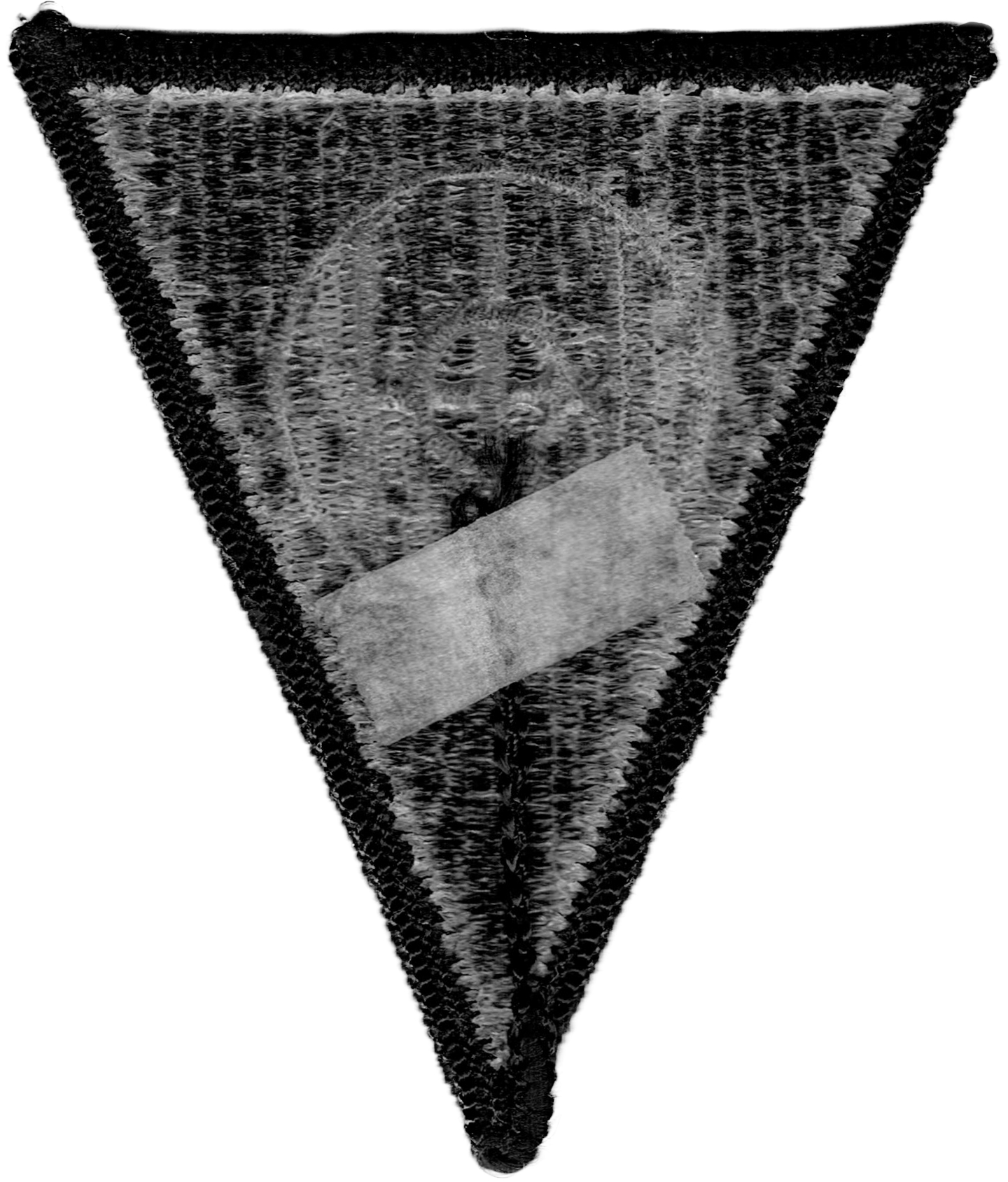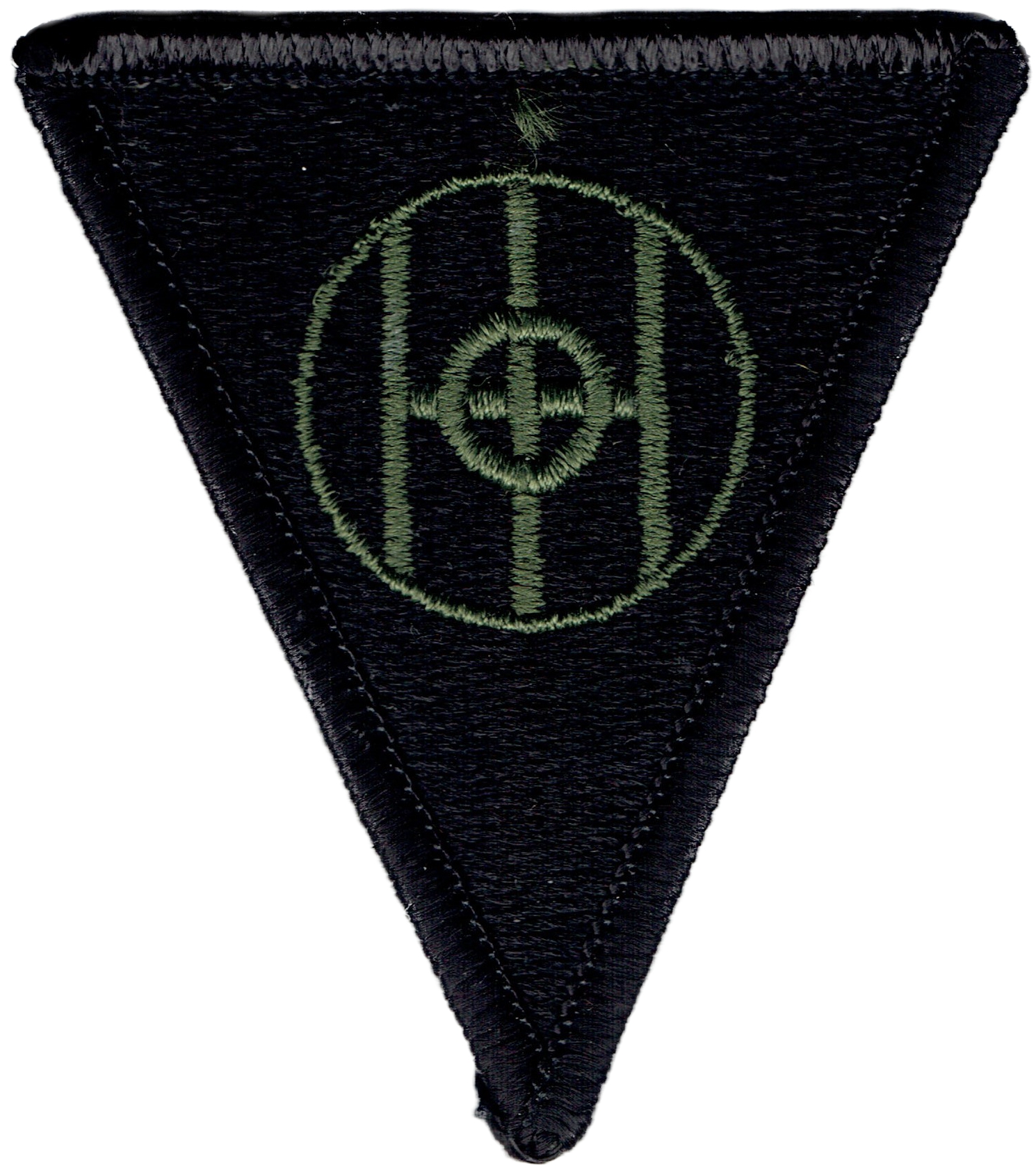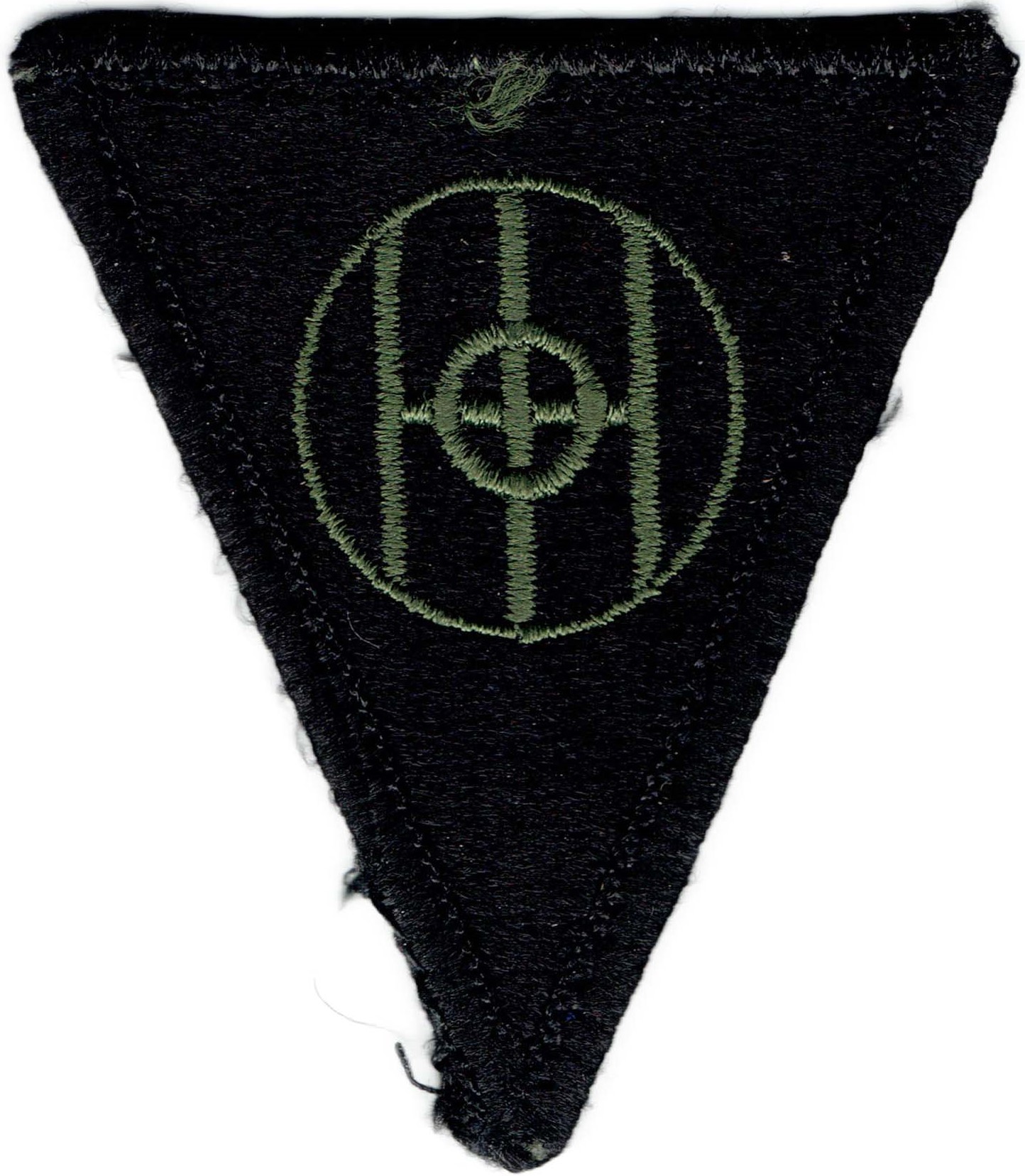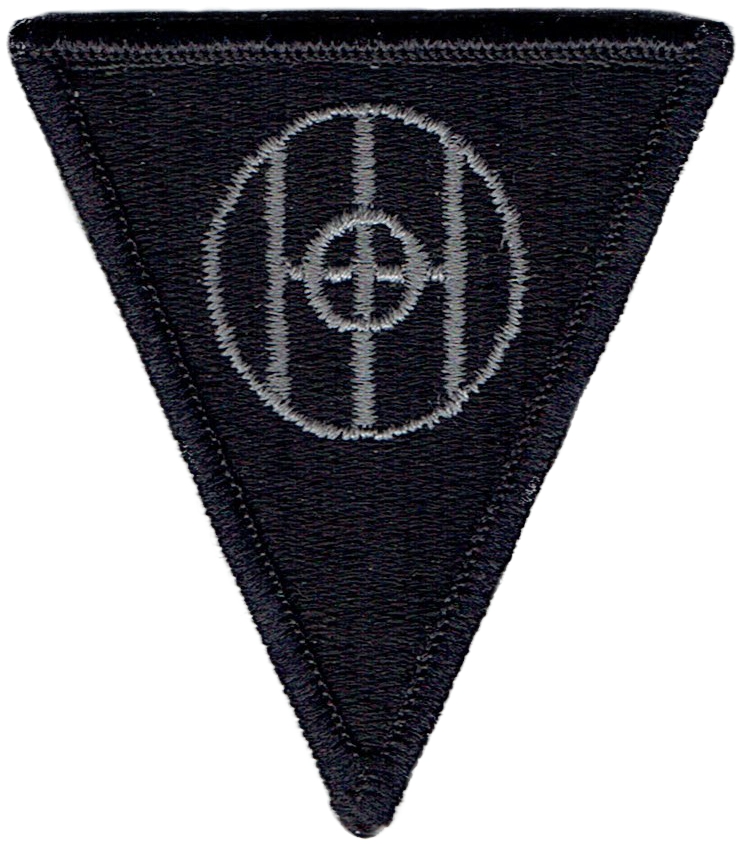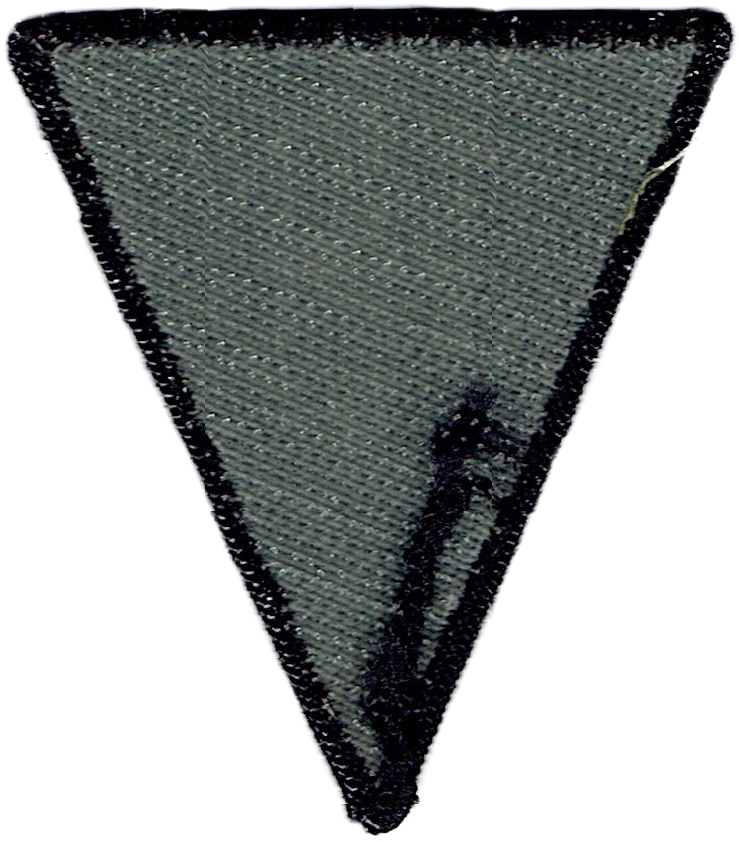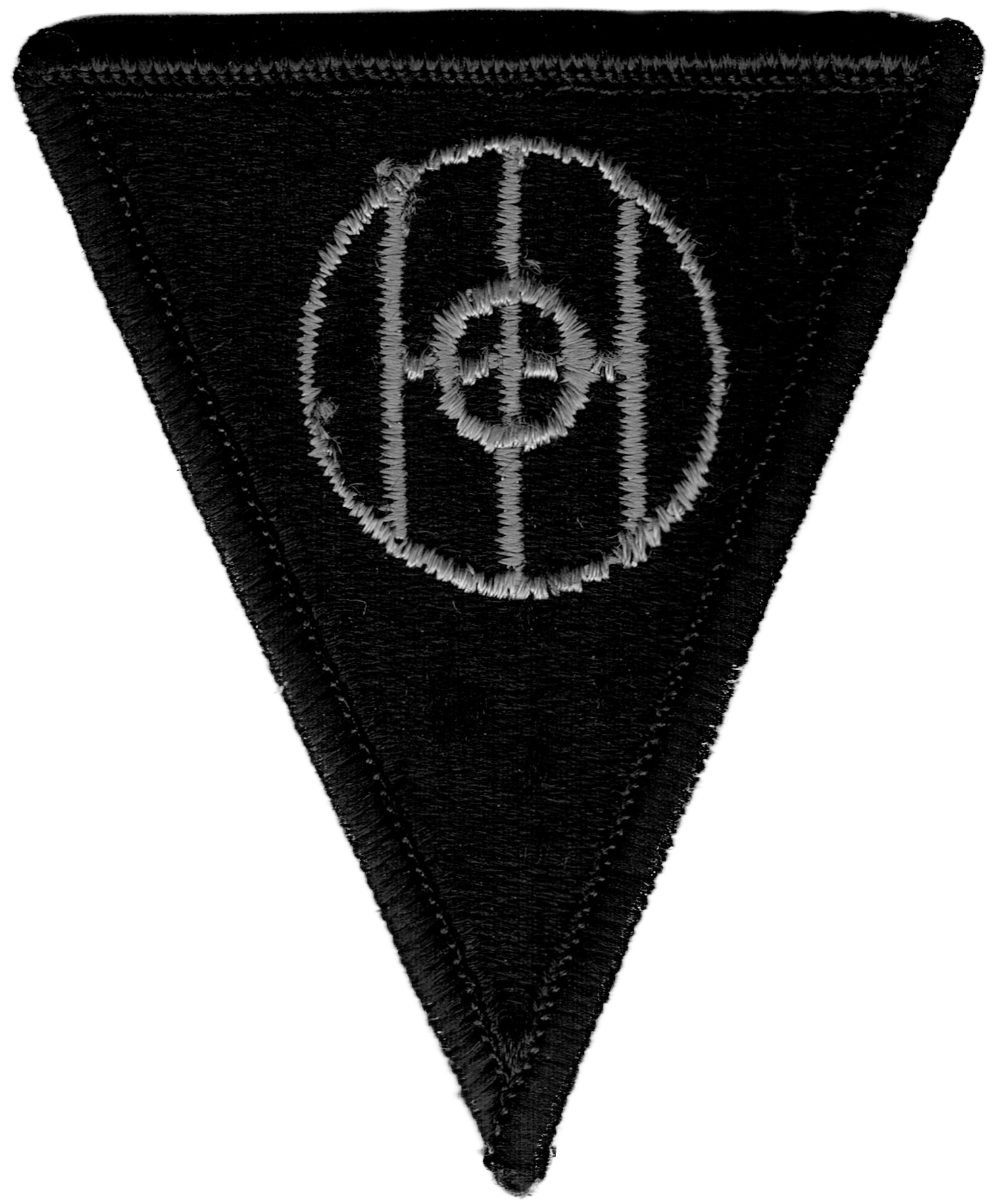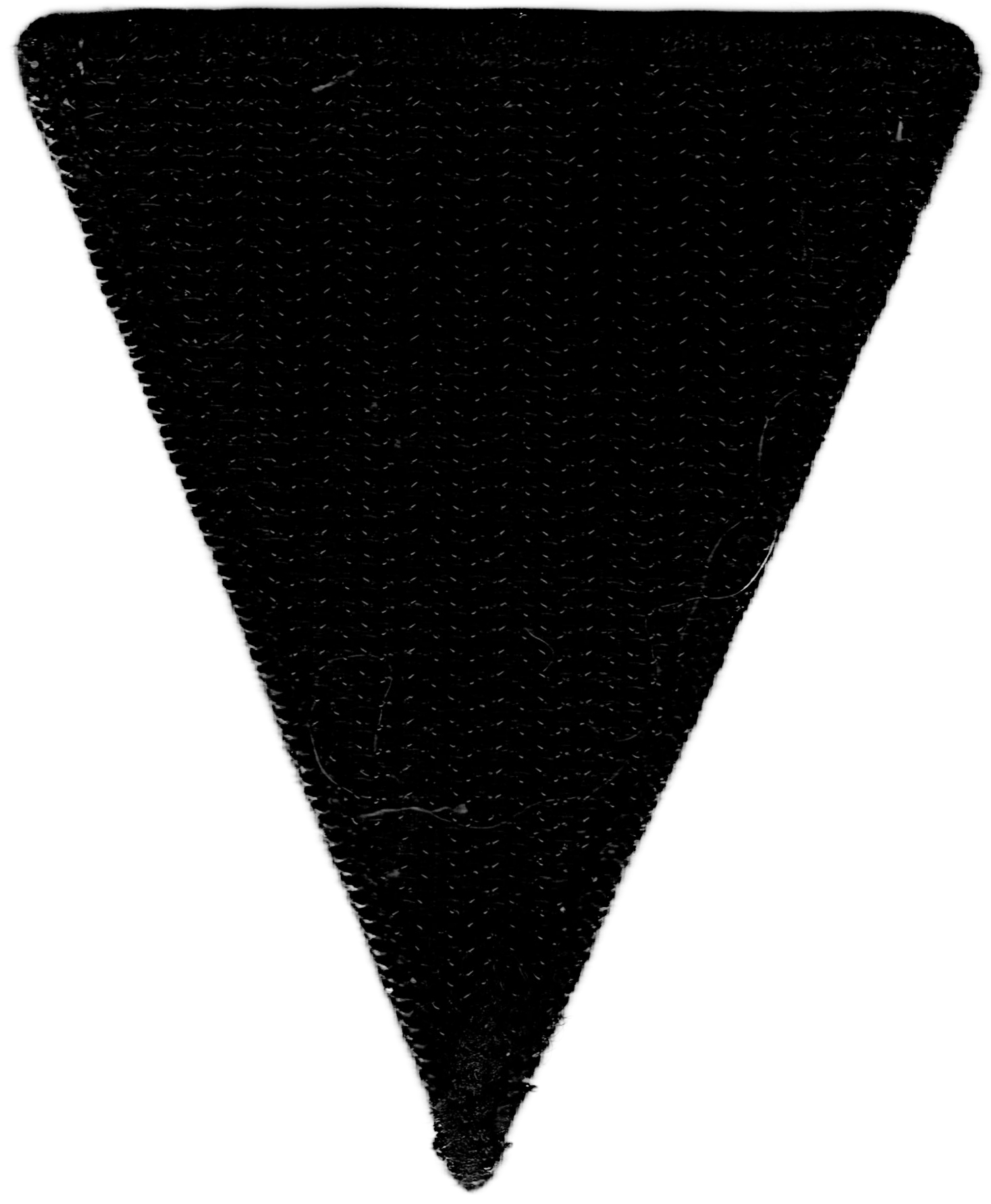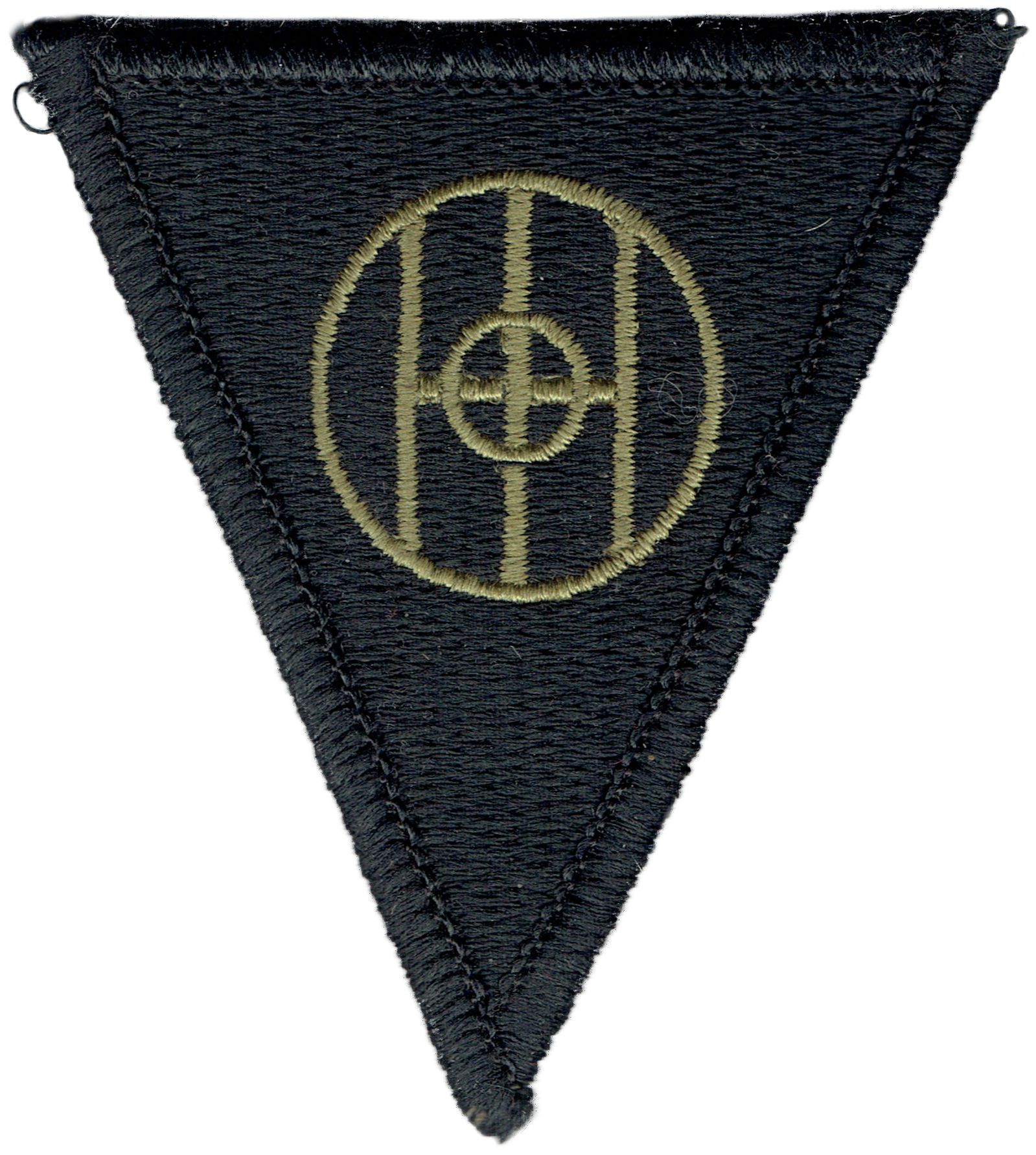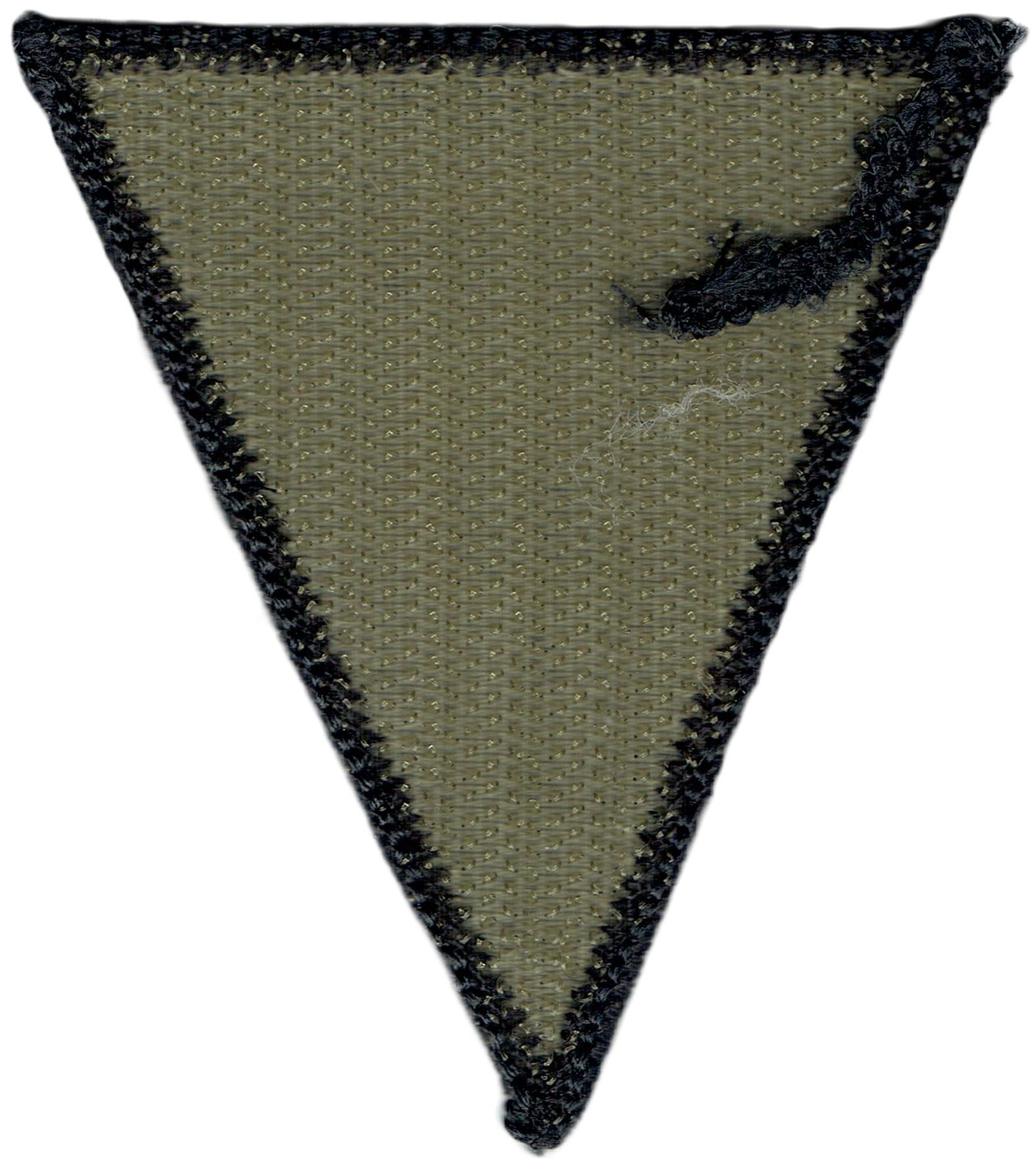83rd Infantry Division cloth Insignia
History of the OHIO patch
The patch consists of a black isosceles triangle with its vortex pointed downward. In the center of the patch, within a gold circle, the letters "O", H", "I", and "O" are formed in a monogram-type pattern.
The shoulder patches worn during the WW2 period were manufactured on a small scale by the Army itself, but the bulk were ordered from various civilian embroidery firms. Most unit patches were machine embroidered in color threads on a tan cotton backing ("flat edge" or "cut edge" patches). Many are also made overseas. I have a fine collection of 83rd cloth insignia to show you.

As is the case with any Shoulder Sleeve insignia the 83rd Infantry Division insignia was approved by the Institute of Heraldry and the patch was given fixed measurements. Throughout the last few years I have handled many Thunderbolt patches and have noticed, while it is a simple design, some differences can be noted. Differentiation is made based on color or manufacturing style. To my knowledge no reproductions or modern, commercial patches are included here. Furthermore, since there are three general periods of existence for the 83rd, WW1 and Interwar Period, WW2 Period and the Postwar Period, this overview will be divided in these three periods. The different Types are ordered chronologically starting with the oldest patches, being those manufactured during World War 1. These are all grouped under Type 1 since there was no official design until the end of 1918 and, as is explained later, many insignia were made overseas. This makes for an abundance of different sized patches manufactured on different materials.
Type 2 will most likely be the most common type. This type, the standard US made fully machine embroidered cut edge patch, was made in great numbers starting in WW2 and carrying on until the introduction of the Merrowed edge in 1969. Two subtypes exist at this point being the OD Border patch and the Gemsco manufactured patch bearing the White Ohio Monogram. Other, less obvious differences do exist but are, at this point, too insignificant to earn their own subtype. Type 3 is the last WW2 type and holds all overseas made patches of World War 2 and the immediate postwar period. The next type, Type 5, starts in 1969 when patch manufacturing made one of its most noticeable changes in adopting the merrowed edge. As opposed to the earlier cut edge patches, where the edge was part of the manufacturing, an edge was now added to the patch. Three subtypes exist, a colored (Type 5A), and subdued (Type 5B and 5C) version. Type 6 is the latest version of the 83rd patch and also the one that is still in use today, the Velcro patch adapted for the Army Combat Uniform (ACU). This patch is currently worn by the 83rd ARRTC stationed at Fort Knox, Kentucky. Finally, Type 7, much like Types 1 and 3, is a type that holds several completely different insignia due to their scarcity. This type are the collector and unofficial made patches of the interwar period.
Period one: World War 1 & Interwar
The first division shoulder patches came into being in the summer of 1918 when members of the 81st (Wild Cat) Division began to wear their adopted Division symbol on their uniforms. Members of the 81st wore their distinctive patches (in the form of cloth patches sewed to the left shoulder of their uniforms) as they passed through the port of embarkation at Hoboken NJ on their way to France. The port commander sent a query to the War Department questioning its authorization. By the time the War Department responded that it was NOT authorized the entire Division had already embarked. Upon arrival in France the unauthorized unit designation had been reported to the AEF General Headquarters. GHQ directed the Division commander to have it removed.. Against direct orders, the Division commander (feeling it contributed to the esprit de corps of his men) authorized its continued use. Afterwards, GHQ recanted its orders and officially ordered that all COMBAT units who desired to wear such an emblem could do so. This breakthrough soon led to an amendment where all organizations within the AEF could do so due largely to the positive effect of the shoulder sleeve insignia upon moral. It was quick to catch on and soon afterwards a multitude of cloth insignia began to appear on coat and overcoat sleeves. The AEF GHQ was still supposed to approve the chosen emblem but as evidenced by the wide range of period non official patches found on surviving uniforms this authorization met with limited success. However, most authorizations for shoulder patch design did not come into play until after the Armistice.
WW1 Embroidered Patches Consists of embroidering some sort of design or lettering on a background. The back is usually felt or wool. Embroidery may be of silk or cotton thread, machine or hand stitched. A number of embroidery styles were used including loose weave, chain stitched, French cord and so on.
Chain stitch on wool felt
Multi piece patch with a Gold Bullion Cord on Black velvet, stitched on wool background
Multi piece felt on felt construction
Handmade wool chain on Wool Felt
Multi piece patch, Chain stitched on Black velvet, stitched on OD wool background
Gold Bullion Cord on Black velvet
Chain stitched on Black velve
reinforced with gauze as stabilizer
Embroidered on felt
reinforced with gauze as stabilizer
Multi piece felt on felt construction, stitched on OD wool background
Embroidered on felt
reinforced with gauze as stabilizer
Gilt Bullion embroidered on Black Wool
removed from uniform
Gilt Bullion embroidered on Black Wool
reinforced with gauze as stabilizer
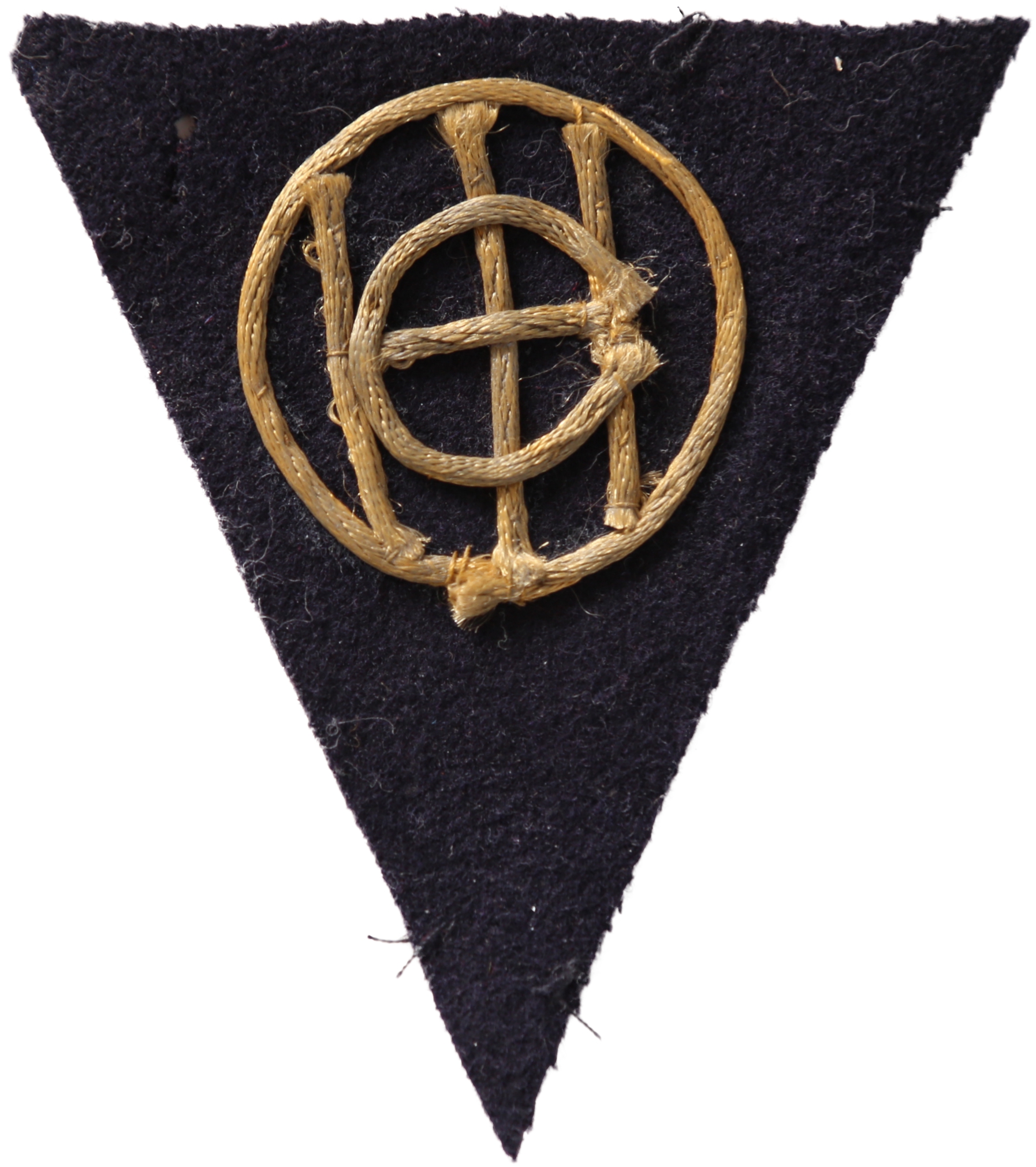
Gold Bullion Cord on Black velvet from Id'd Grouping Walther C. Monigold Read More
332nd bullion embroidered
Read More
Gold Bullion Cord on Black velvet
from Id'd Grouping Walther C. Monigold
Read More
Some moth damage but all bullion embroidered details are intact, from an unid'd grouping
Read More
Gold Bullion Cord on Black Wool Felt
matched pair on uniform
Read More
Gold Bullion Ribbon on Black felt
matched pair on uniform
Read More
This is what is generally referred to as a "Liberty Loan Patch." They were commercially made insignia sold at the end of the war to service who wanted to replace their hand made patches. They were not given out for buying Liberty Bonds, but displays of them were used to help drum up interest in the final war loan (which also got publicity for the manufacturer). Evidence on the purpose of the Liberty Loan patches is contradictory. The patches are said to have been souvenirs for the general public, but also were worn by the doughboys. They were sold overseas at points of embarkation and at PX’s stateside. Other sources suggest however that the Liberty Loan patches were used as a tool for advertising rather than selling. This is supported by the fact that the boards on which they appeared in stores window’s all said: Return to Government Loan organization. Fact however is that these were produced during the 1919-1921 period and were actually the first mass produced patches by the US Army.
During the 1920’s and 1930’s the Studley Company manufactured reproduction WW1 unit SSI for the collector’s market. These insignia are smaller than their eventual WW2 counterparts and also all have the same ribbed embroidery style.
Liberty Loan
Liberty Loan
Studley Company manufactured
332nd Reunion patch
Period two: World War 2
These patches are all fully machine embroidered US made examples. The different characteristics are not poignant enough to merit their own (sub)type and can easily be contributed to different manufacturers. All these patches are fully machine embroidered on a Olive Drab cotton twill base showing embroidery styles common to the World War 2 era. These patches are all Cut edge and have the white or green back thread.
Lots of Whiteback thread
Heavily worn out completely Whiteback
Regular structured Whiteback
Lots of Whiteback thread
Regular structured Whiteback
Regular structured Whiteback
Completely covered with white back thread
Completely covered with white back thread
Regular structured Whiteback
Lots of Whiteback thread
Regular structured Whiteback
Regular structured Whiteback
Lots of Whiteback thread
Whiteback
Regular structured Whiteback
Has remains of wartime PX price tag from Camp Atterbury on the back
Black base material
Blue base material
Cut from a patch blanket,
showing signs of heavy use
Uncut pair of patches
from 83rd veteran George F. Studor
from 83rd veteran George F. Studor
from 83rd veteran T/5 Mike Zella
Completely covered with Green back thread
Lots of Green back thread
Lots of Green back thread
Lots of Green back thread
Completely covered with Green back thread
from 83rd veteran Lloyd C. Schneider
from 83rd veteran Lloyd C. Schneider
The main difference between the type 2A and a regular type 2 patch is the added OD Border. The black triangle shows the same measurements as a regular patch but the border makes this patch a little larger than regular 83rd patches. All patches are fully embroidered white back on a khaki cotton twill backing showing a ribbed weave embroidery style which might suggest all OD borders came from the same manufacturer. The different characteristics in main and back thread suggest this is a WW2 period example, the OD border may suggest this is an early war example or very late war made for the returning veterans who favored the OD borders.
Whiteback ribbed embroidery style
Another kind of ribbed embroidery style
from 83rd veteran Lloyd C. Schneider
Unfinished top border
Unfinished top border
and frayed threads top right
Missing threads right of the H
Missing threads top right
Missing threads top right
Horizontal bar of H runs over
the full width of the big O
Missing threads top left
The main difference between this type and a regular type 2 patch is the white OHIO lettering
The patch itself is a fully embroidered white back showing a GEMSCO embroidery style
The white OHIO lettering is a manufacturer's error
German Made 1945 - 1946
This German made patch and matching tab came out of a shop that was right across the US Army Caserne in Fürth called Darby Barracks. It closed down in ’93-’94. The shop had been selling patches since the end of WW2 and was located at Waldstraße 53, Fürth. Most of the patches came in groups of 12 and had German newspaper around them from 1944 - 1948.
German Made 1945 - 1946
Wool chain embrodered on Wool Felt
reinforced with white cotton twill as stabilizer
with matching "Thunderbolt" tab
Standard Type 2 Whiteback patch paired with a beautiful Hand Made "Thunderbolt" tab
German Made 1945 - 1946
Bullion Made
reinforced with white cotton twill as stabilizer
German Made 1945 - 1946
Wool chain embrodered on Wool Felt
Hand embroidered on felt
Removed from uniform
Japanese Made 1945 - 1946
Wool chain embrodered on Wool Felt
reinforced with white cotton twill as stabilizer
British made 1944 - 1945
Wool chain embroidered on Wool Felt
Matched pair (very rare)
German Made 1945 - 1946
Bullion Made
reinforced with black cotton twill as stabilizer
329th Infantry Regiment Crest type patch (right). Left is an identical patch sewn onto a square blue (for Infantry) flag
Read More
Standard Type 2 Greenback patch paired with a beautiful German Made "Buckshot" tab. Note the little Thunderbolt in between BUCK and SHOT
Period three: Post World War 2
Patch manufacturing did not change drastically in 1945 so patches made prior and after that date show comparable charcteristics. Until 1968, when merrowed edge was introduced patches kept being manufactured as cut-edge patches. The only changes made in the manufacturing process are the materials. No WW2 manufactured patches show a quality difference in the back and main thread, post WW2 patches on the other hand sometimes have a nylon kind of view, despite being rayon, this can be seen in the following examples.
Lots of Whiteback thread
Regular structured Whiteback
Regular structured Whiteback
Regular structured Whiteback
After 1968 the merrowed edge was introduced. This thick border is added to the badge and is easily recognizable. This style of manufacturing is still in use today.
Type 5A - Full Color with typical pigtail
1969 period copy, Fully embroidered, came from original Box, dated 1969, with 200 patches
83rd Army Reserve Command
Read More
Type 5B - Subdued with typical pigtail
1961-1975 period copy, fully embroidered,
no plastic back, Olive Drab OHIO lettering,
83rd Army Reserve Command
Type 5C - Subdued with typical pigtail 1961-1975 period copy, fully embroidered, plastic back, Olive Drab OHIO lettering, BDU patch
Type 5C - Subdued with typical pigtail 1961-1975 period copy, fully embroidered,
a variant plastic back, Olive Drab OHIO lettering
Type 5C - Subdued with typical pigtail 1961-1975 period copy, fully embroidered, an other variant plastic back, Olive Drab OHIO lettering
Since the Army-wide adoption of the Army Combat Uniform (ACU), SSI for the ACU have been developed. These SSI are primarily foliage green, light brown, and black, though a few patches also feature red and maroon colors for some details. Unlike previous patches, the ACU SSI are Velcro, designed to attach to the Velcro pockets on the shoulder of the combat uniform, instead of being sewn on.
A worn patch donated (2015) to my collection by an officer with the 83rd US Army Reserve Readiness Training Center at Fort Knox, Kentucky. The 83rd ARRTC inherited the lineage and SSI from the former 83rd ID in 2013.
A worn patch from the uniform donated (2016) by Col. Nelson Irizarri of the 83rd US Army Reserve Readiness Training Center at Fort Knox, Kentucky. The 83rd ARRTC inherited the lineage and SSI from the former 83rd ID in 2013.
Read More
A worn patch donated (2018) to my collection by
Ed Roderiques of the 83rd US Army Reserve Readiness Training Center at Fort Knox, Kentucky. The 83rd ARRTC inherited the lineage and SSI from the former 83rd ID in 2013.
